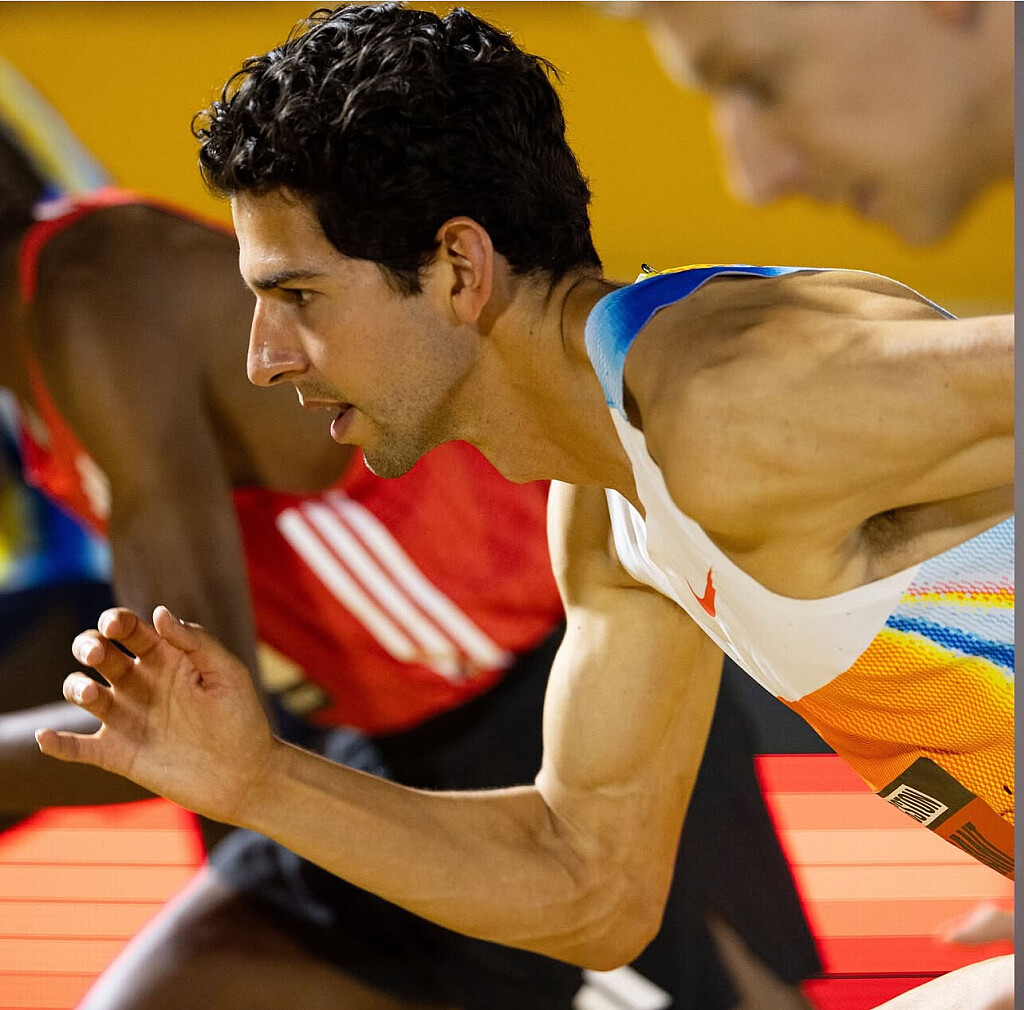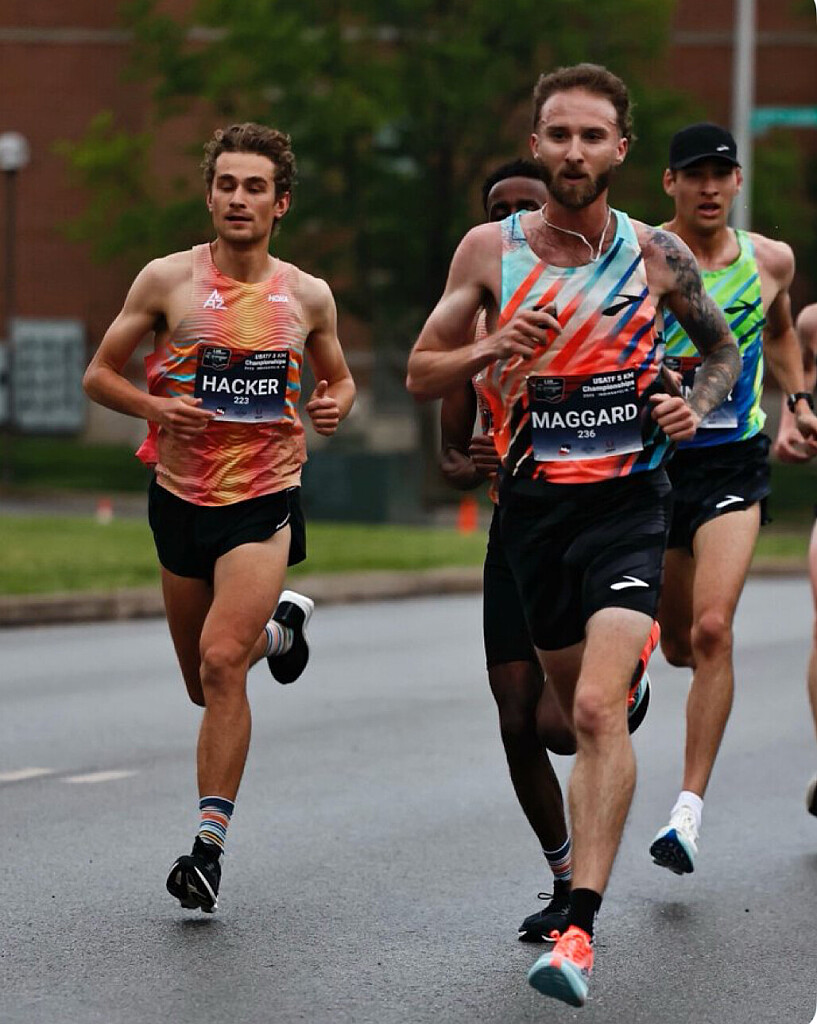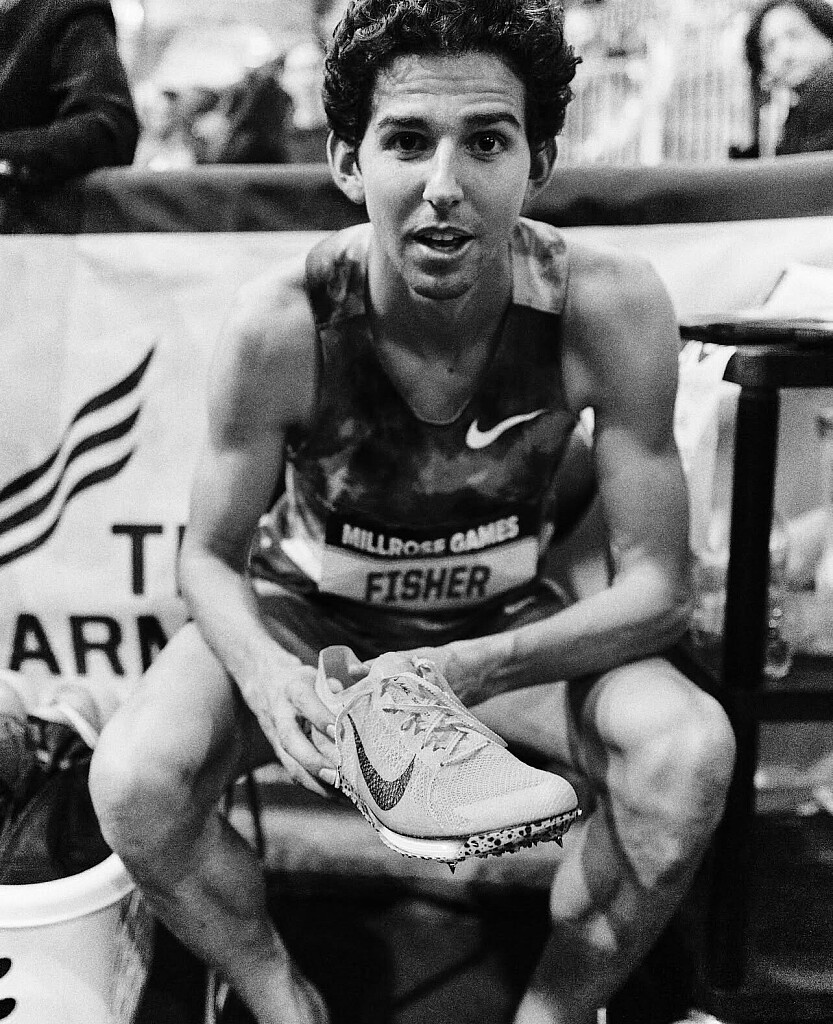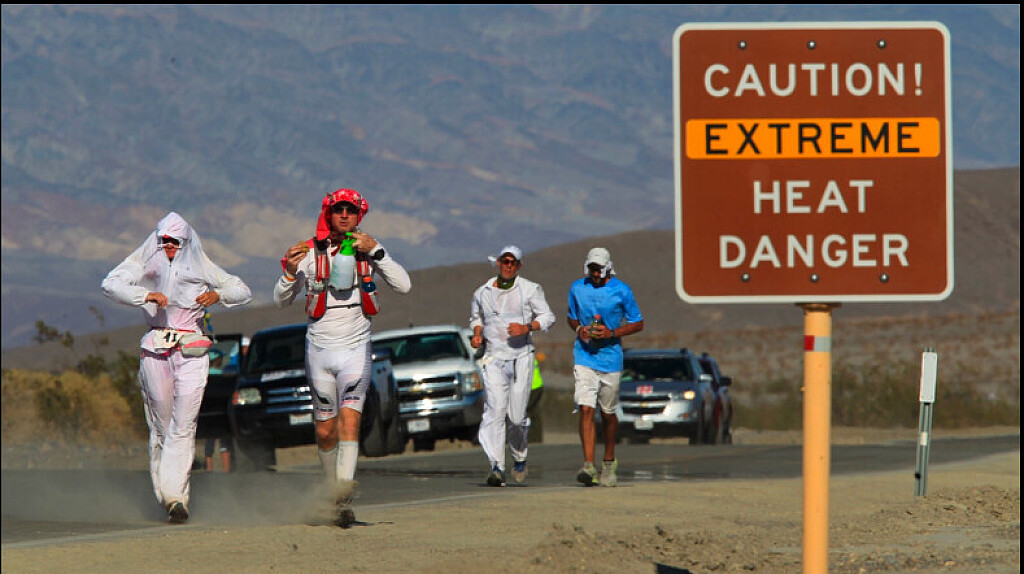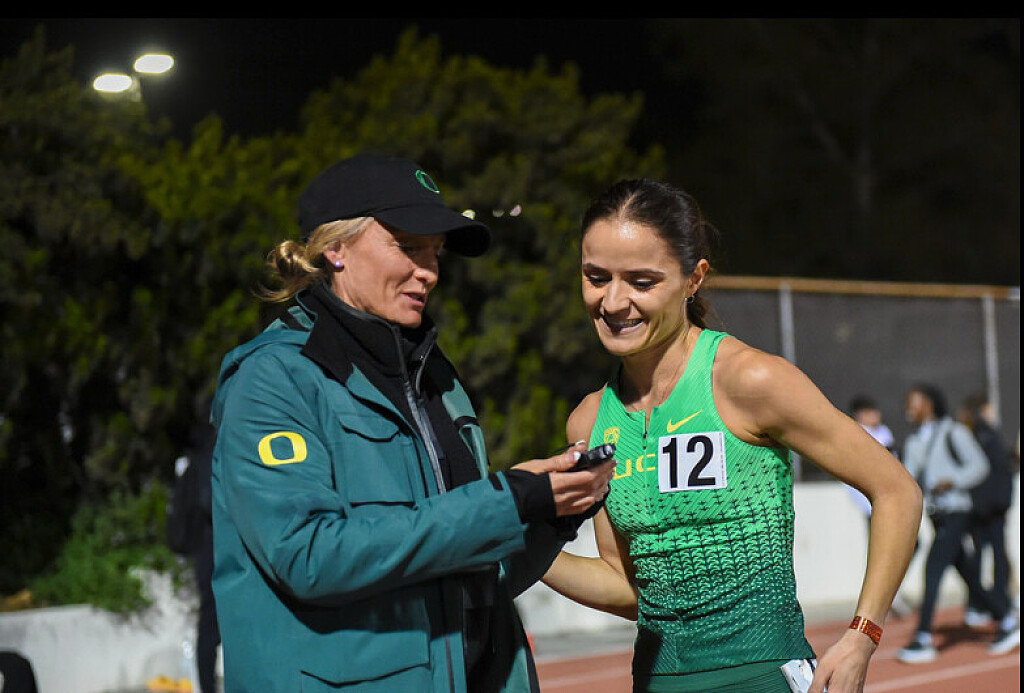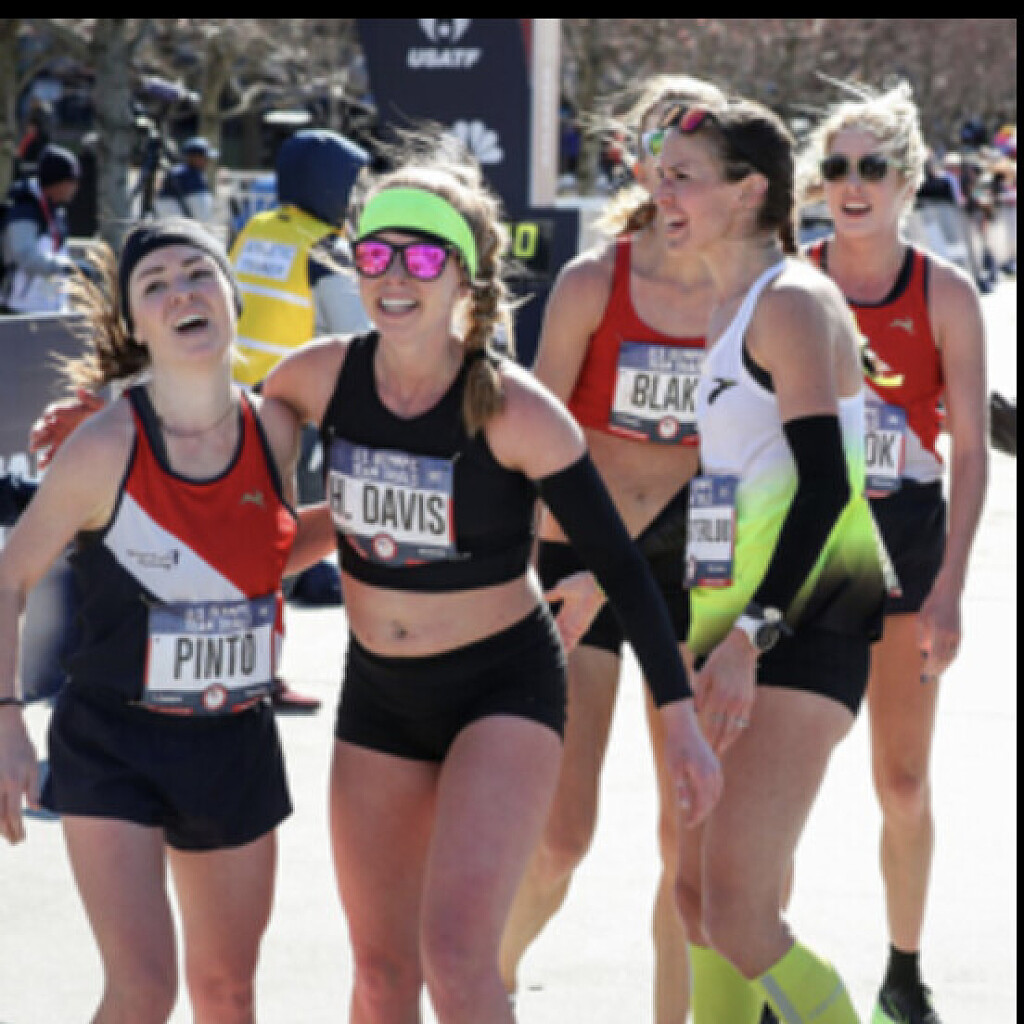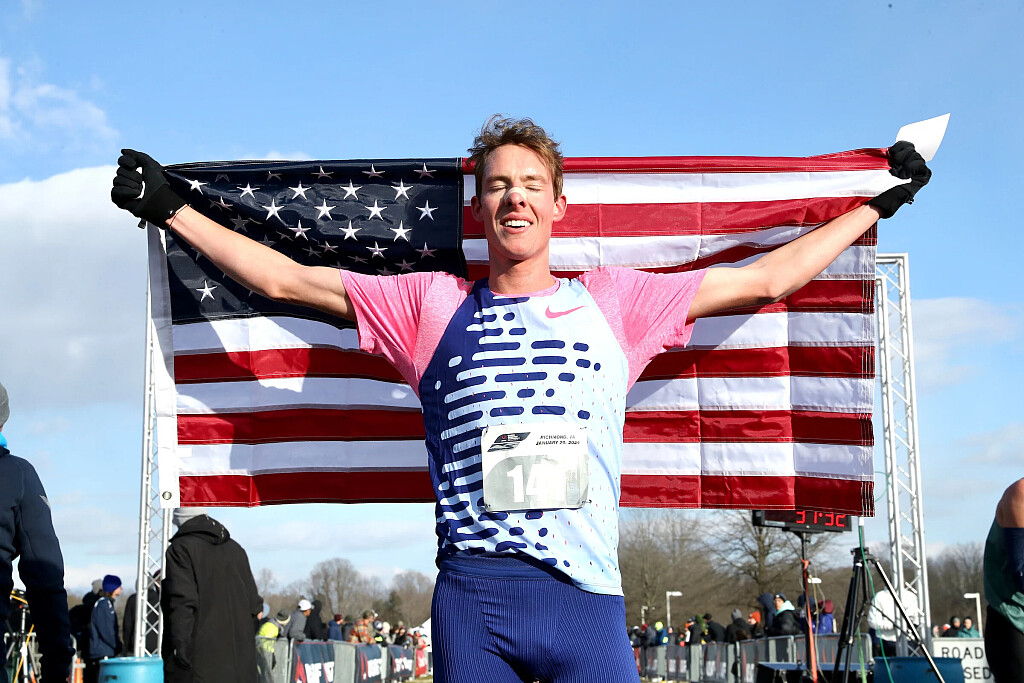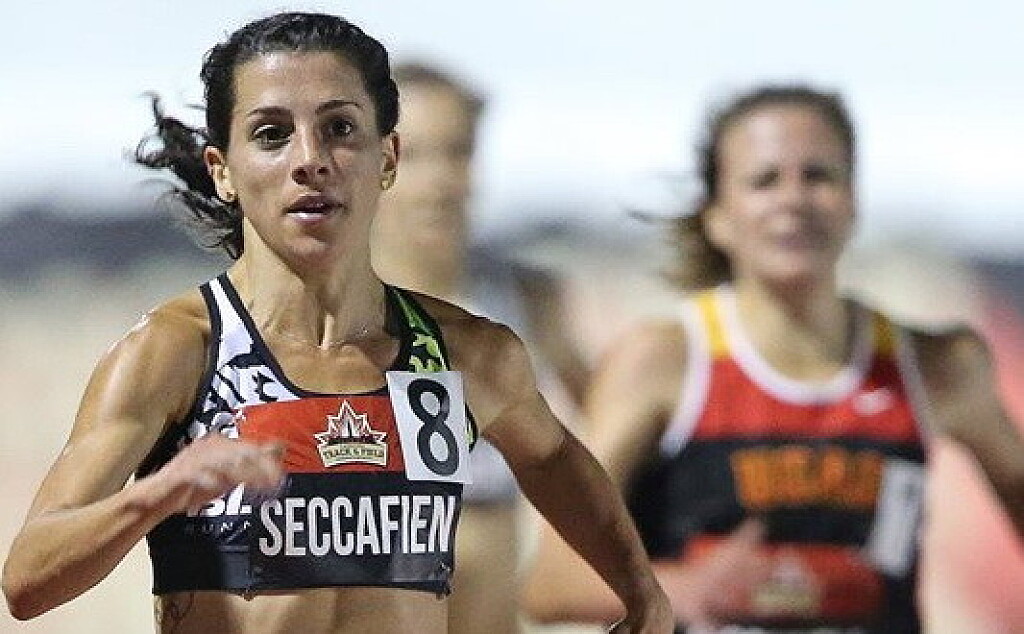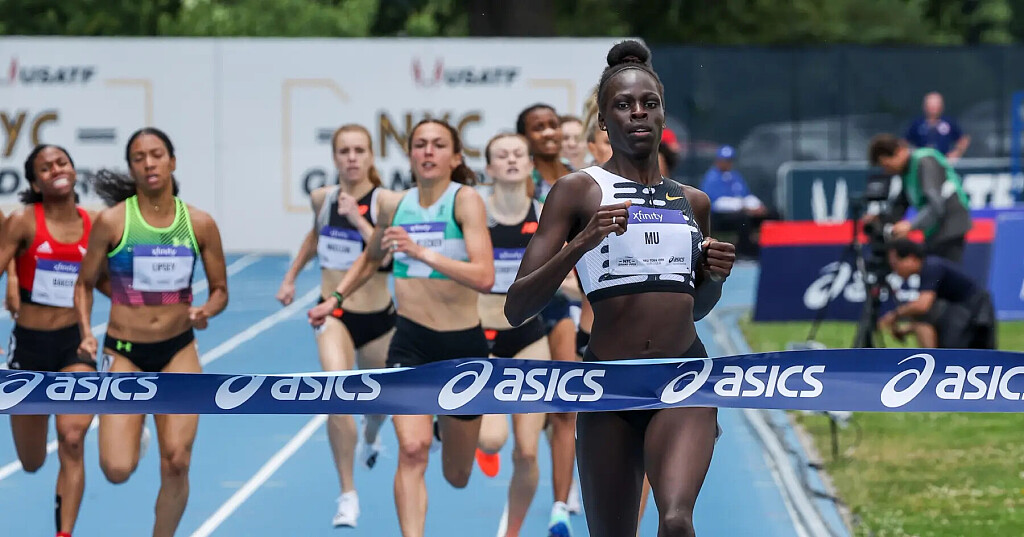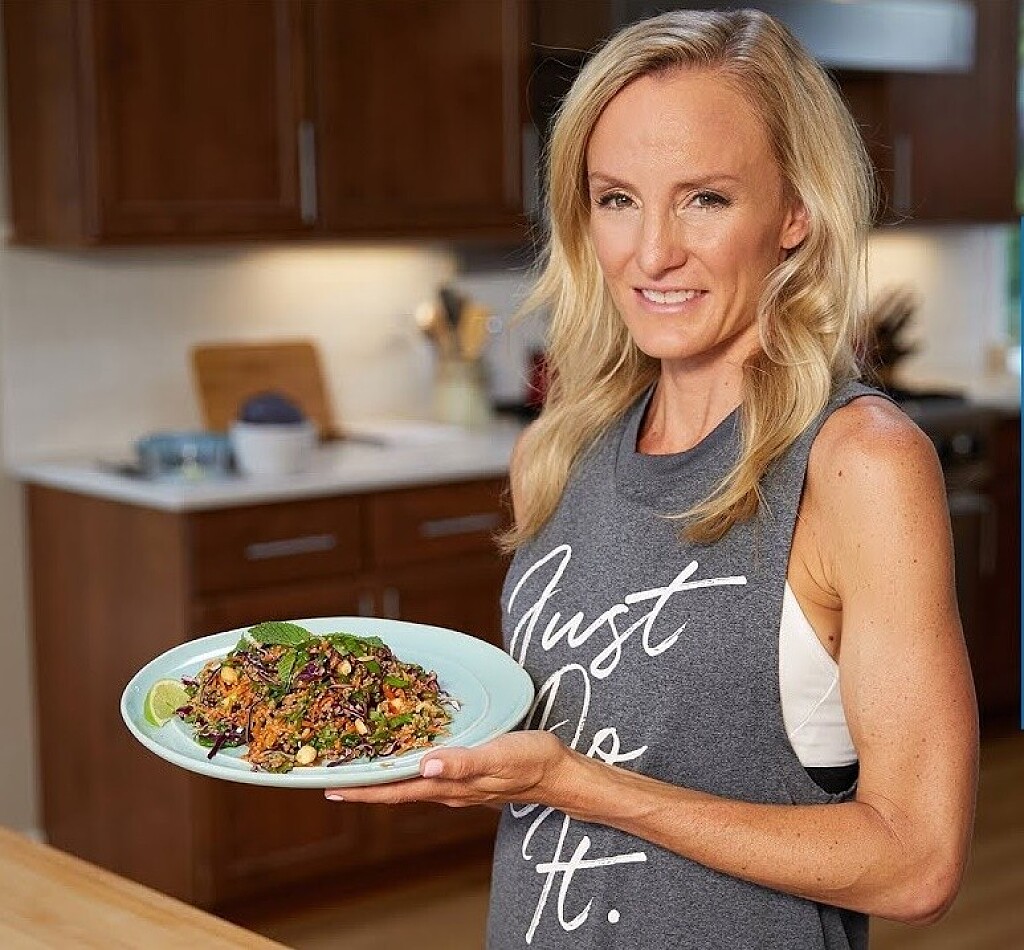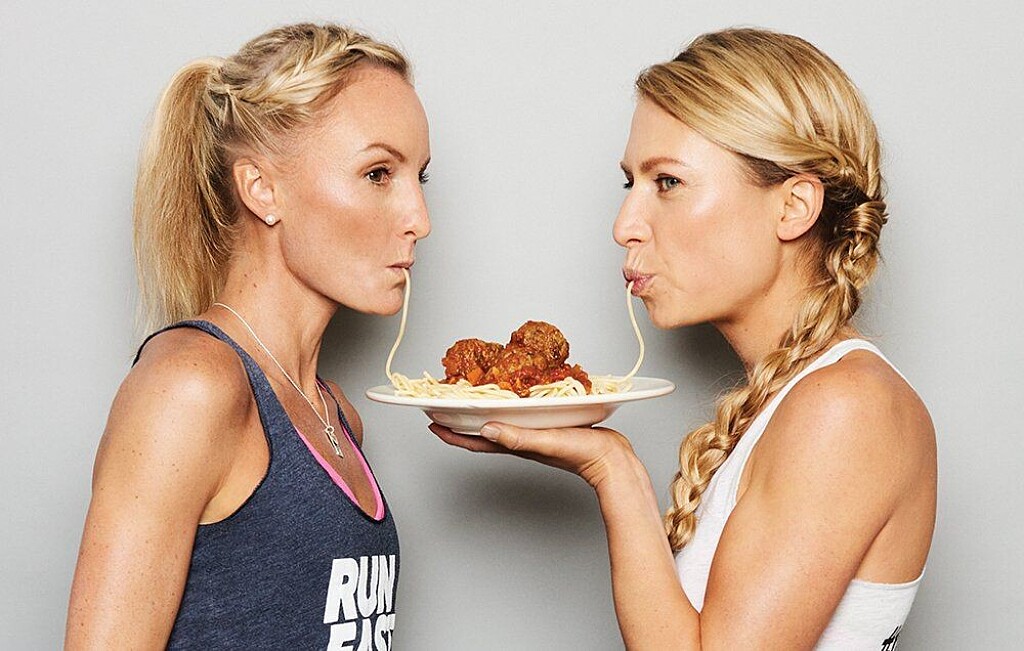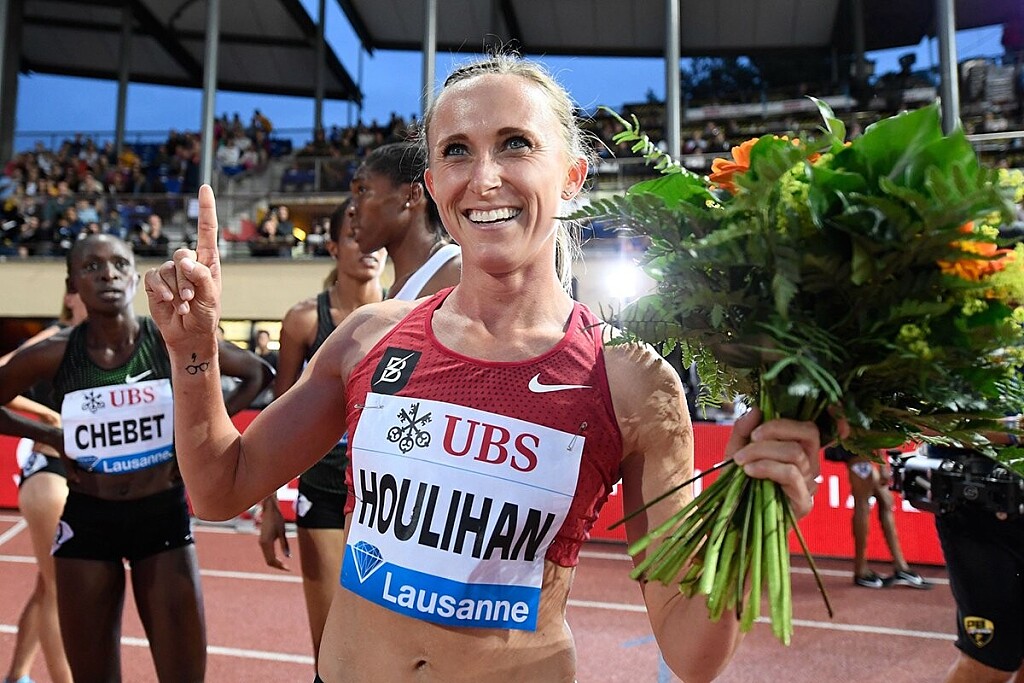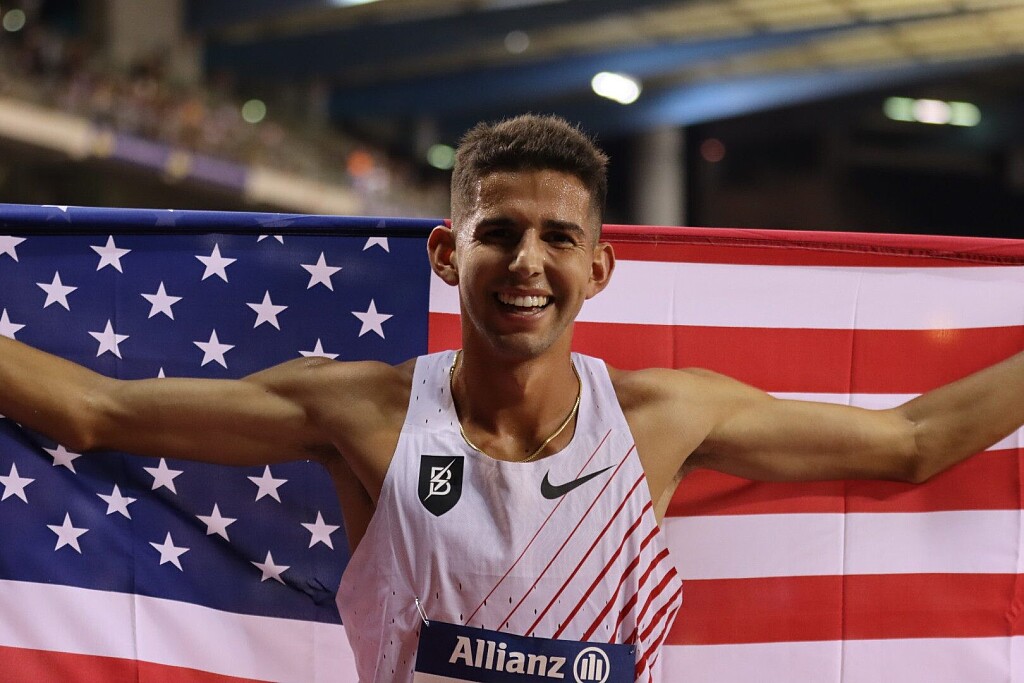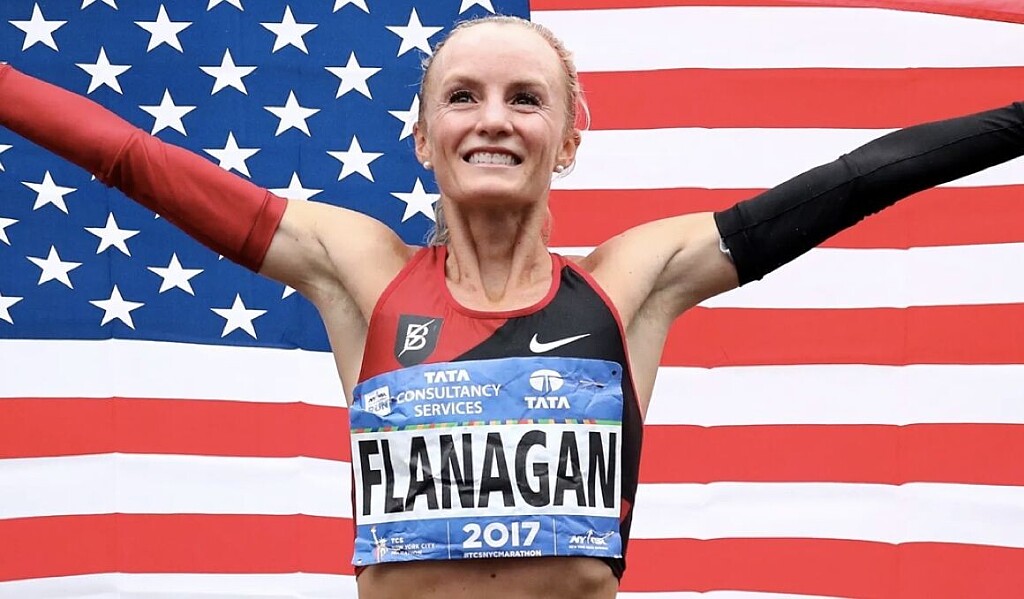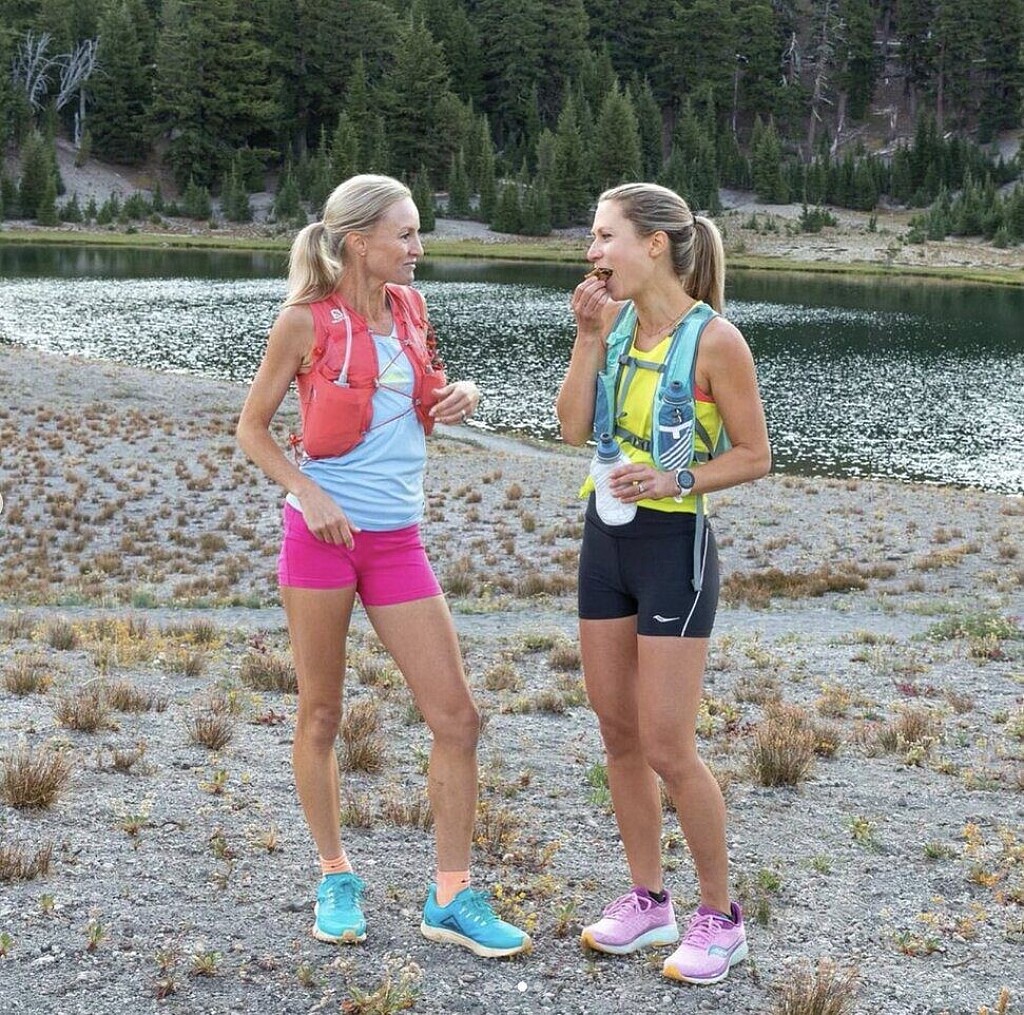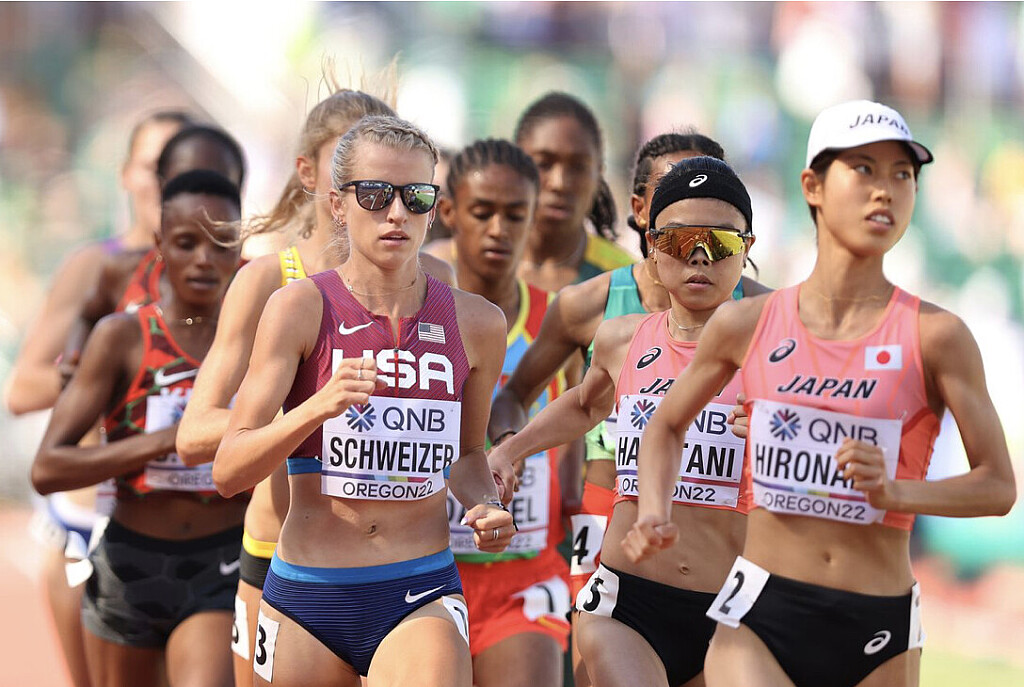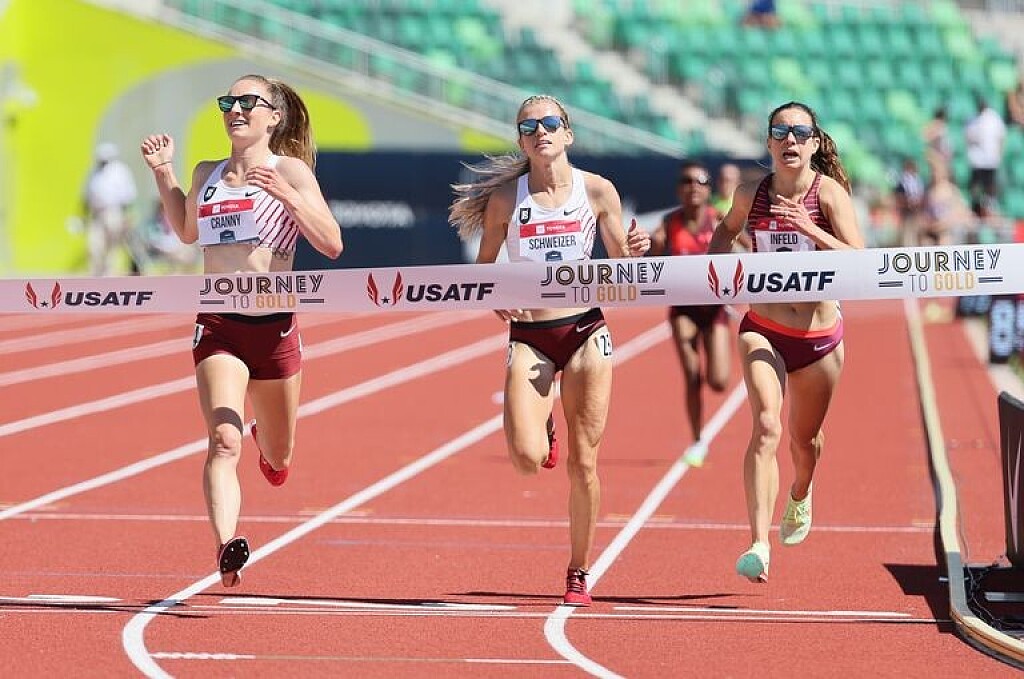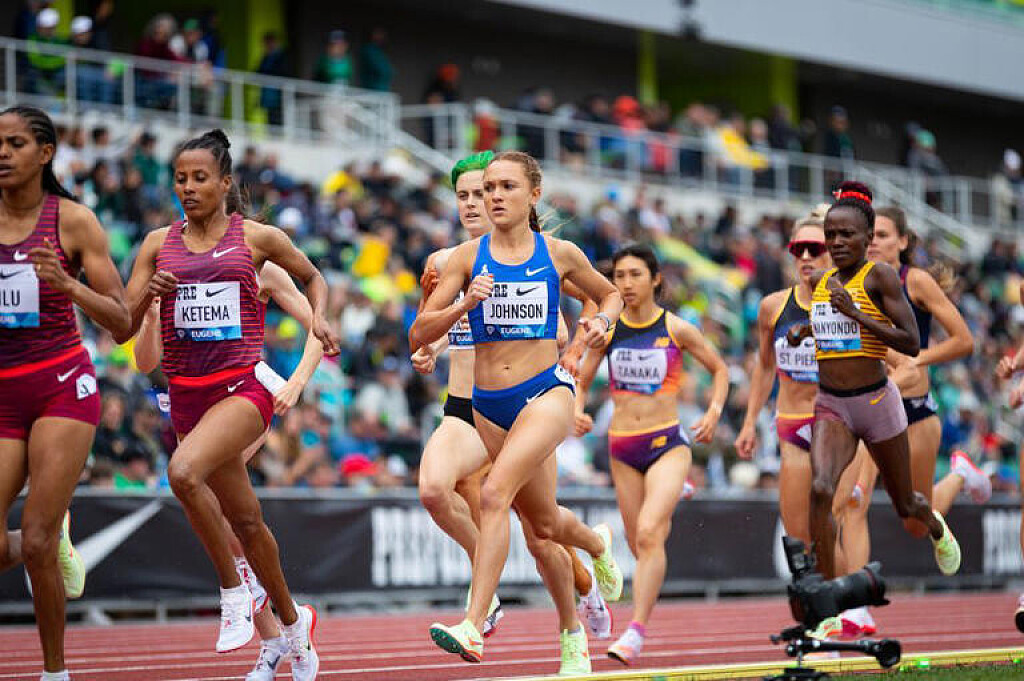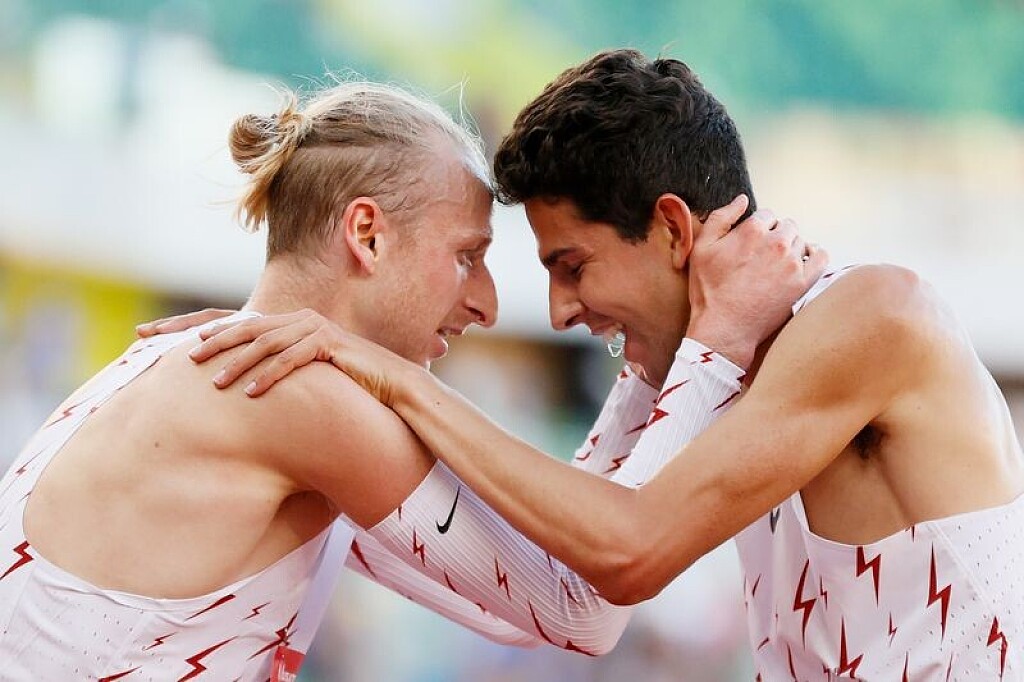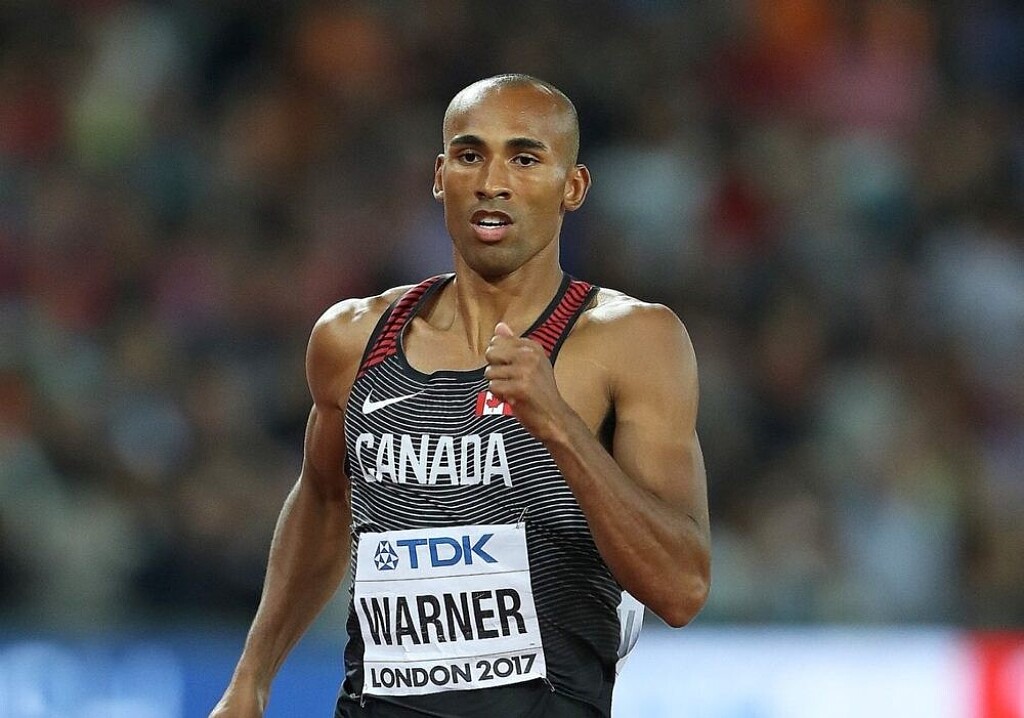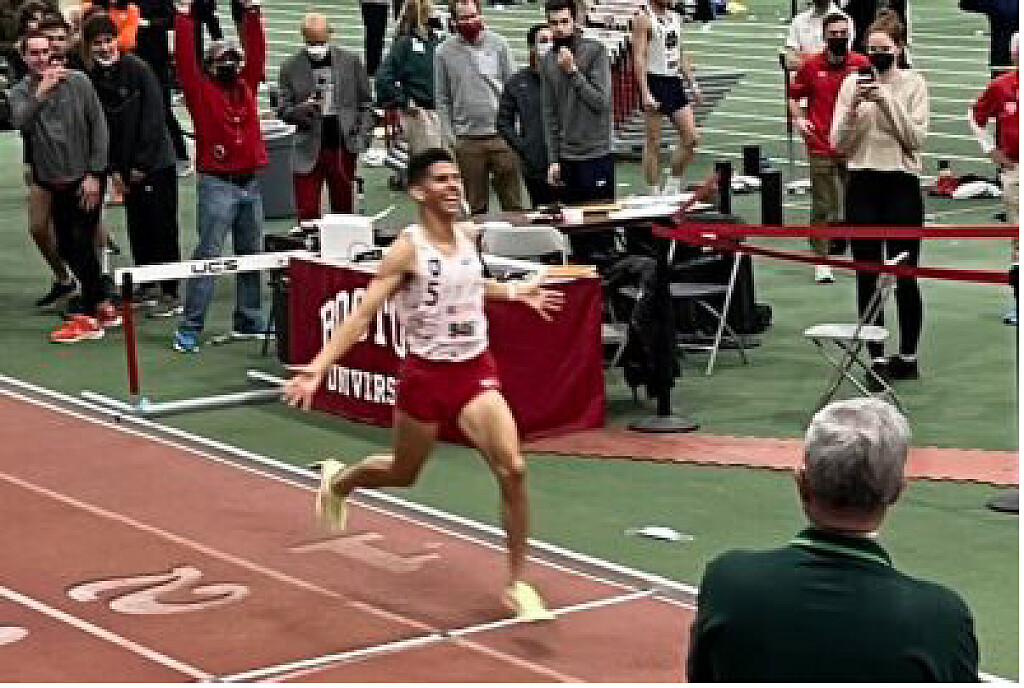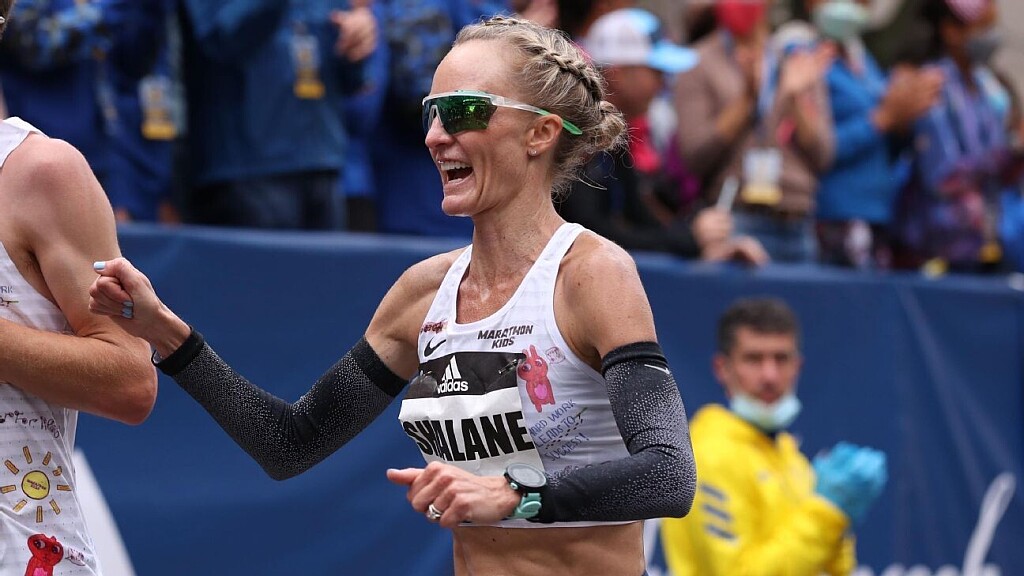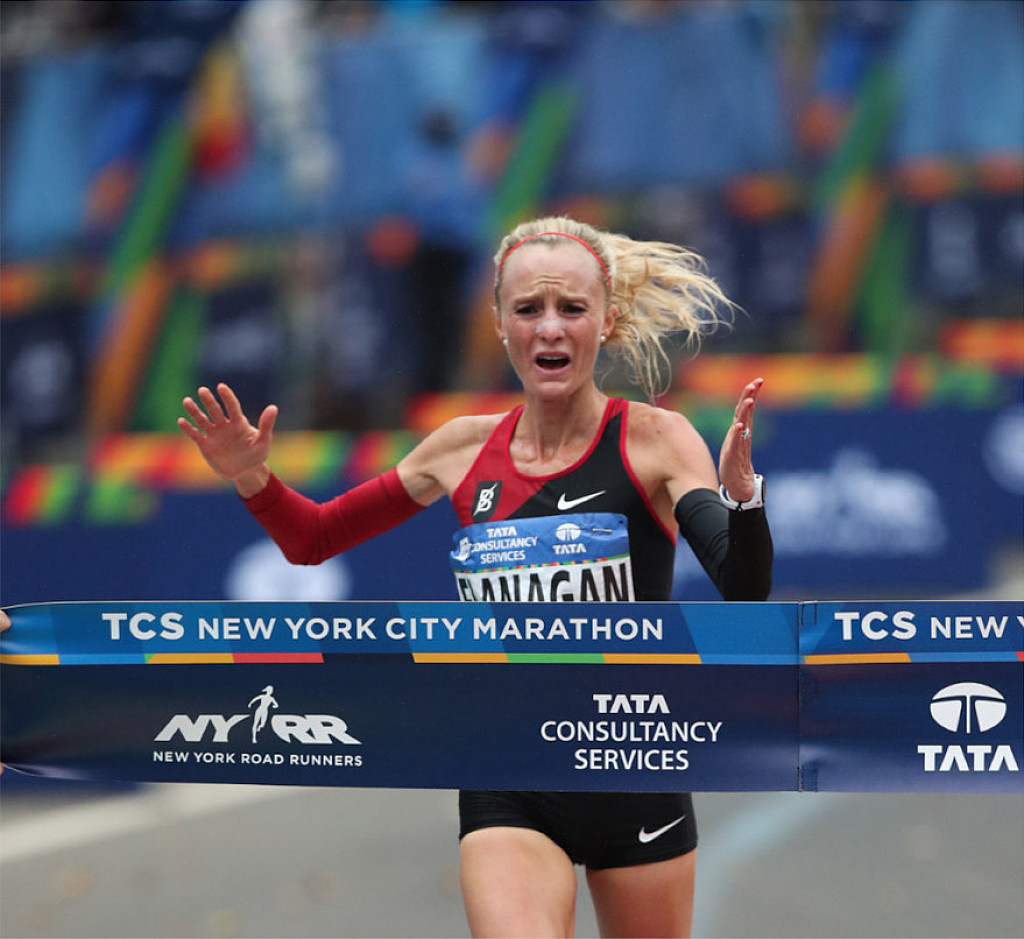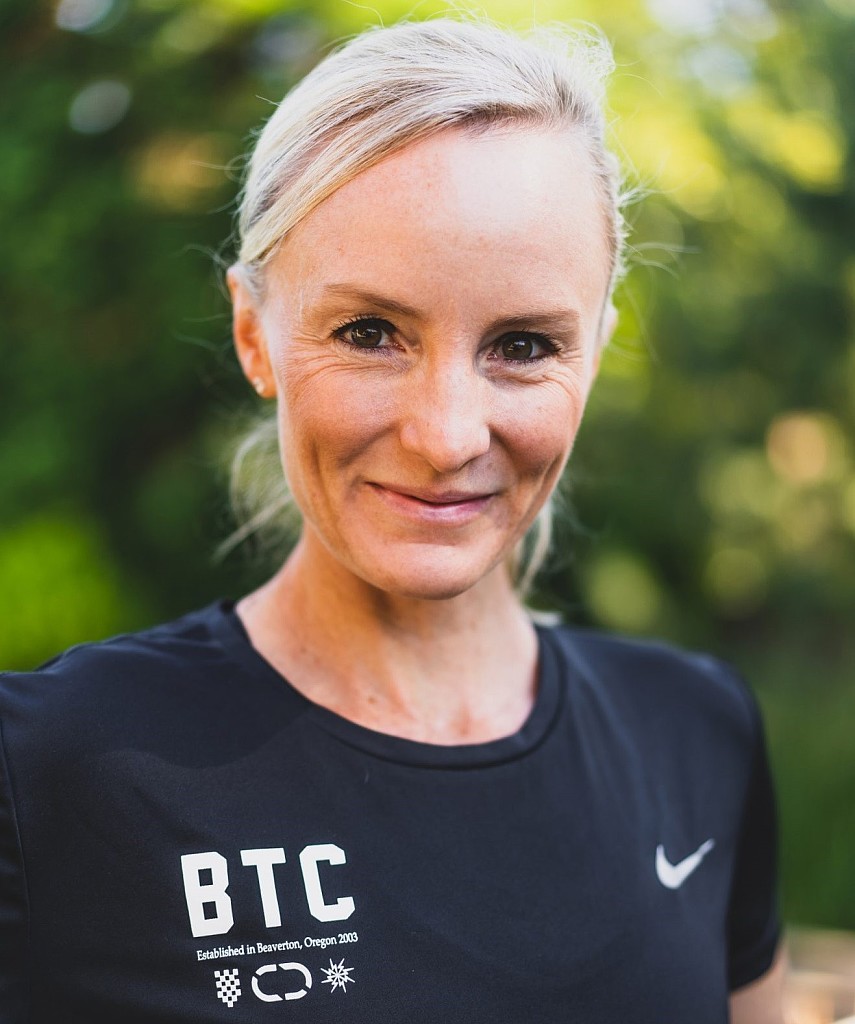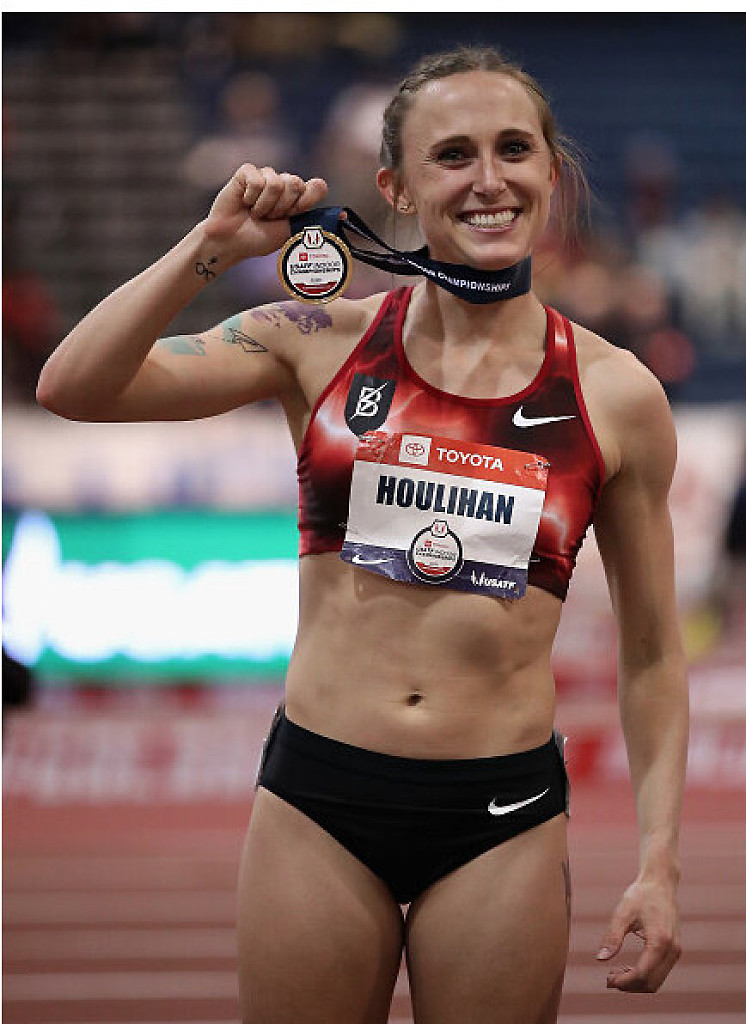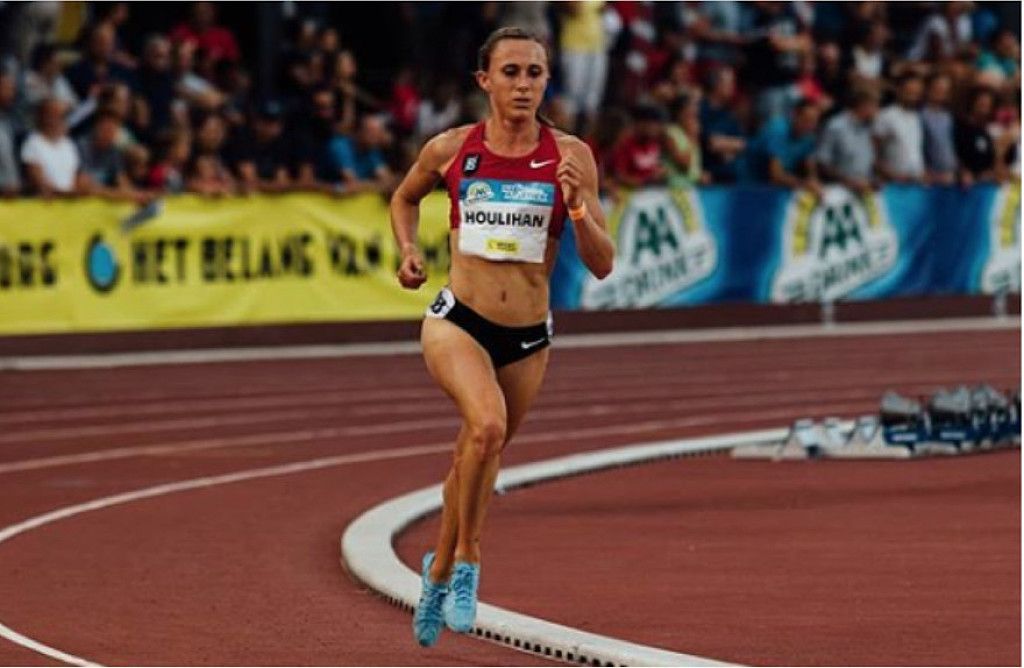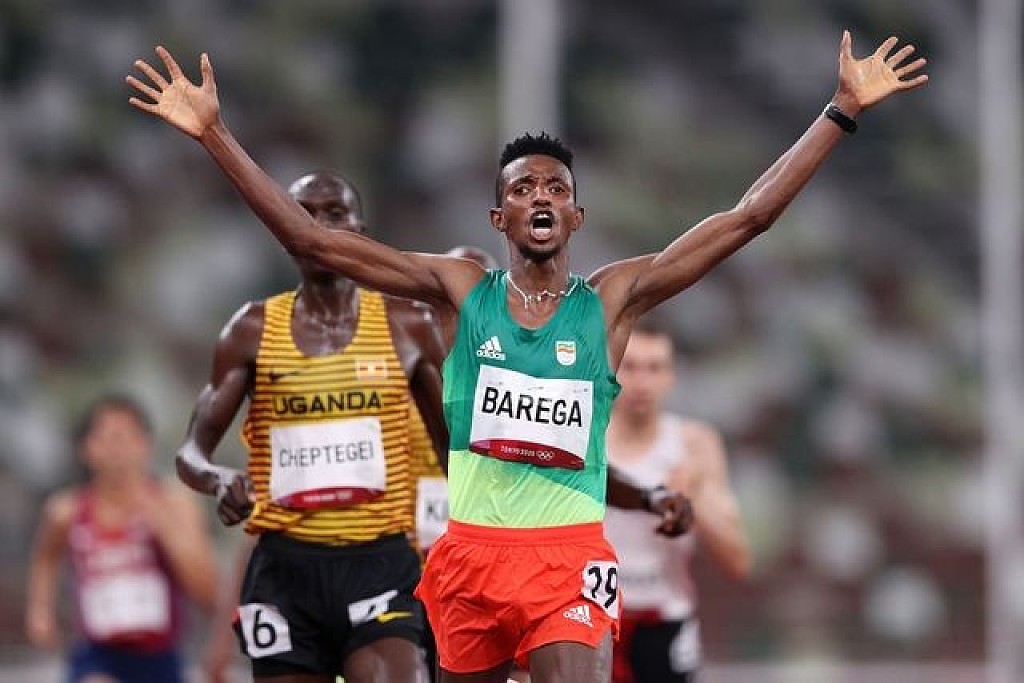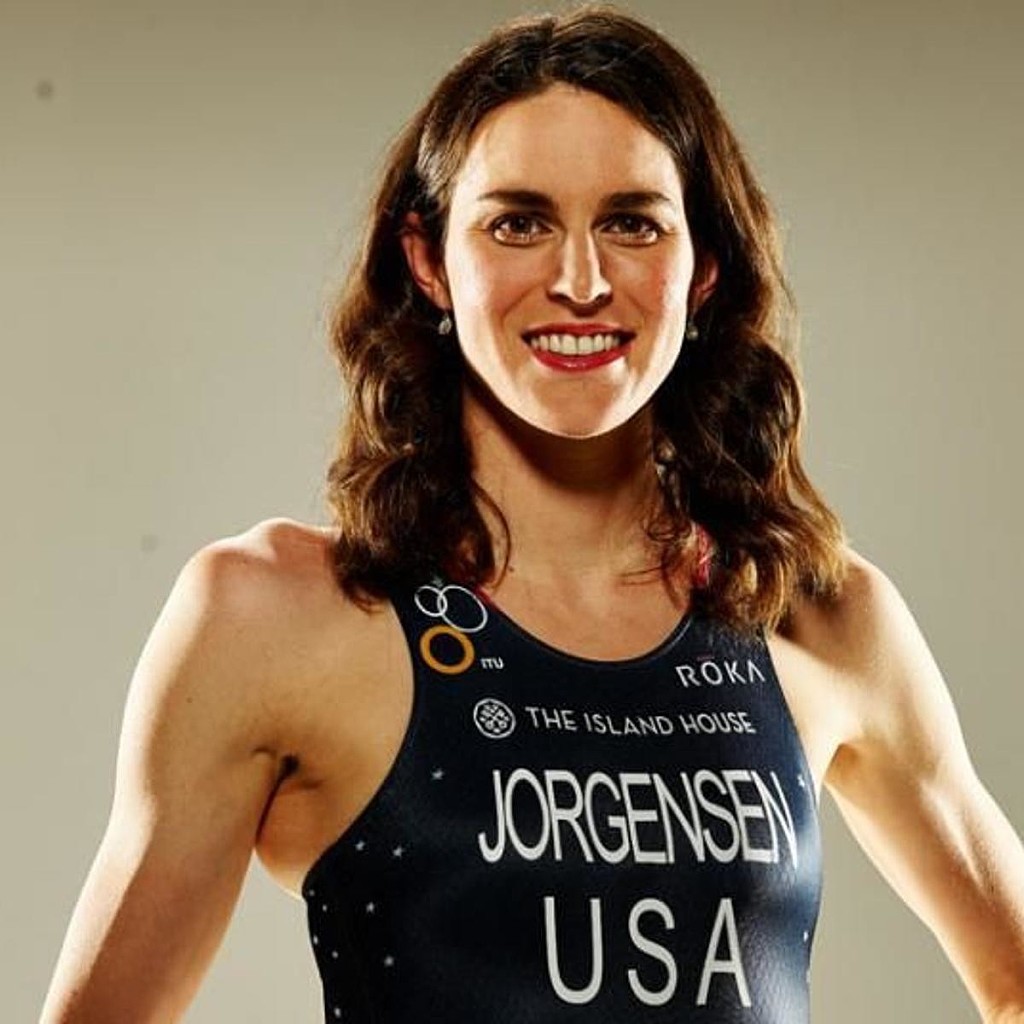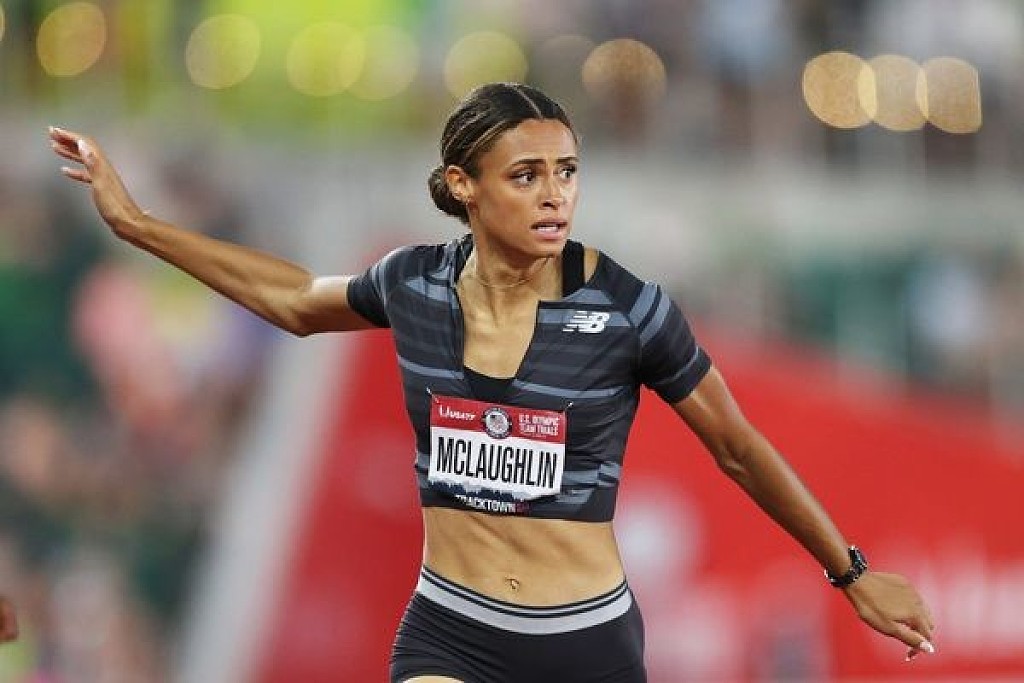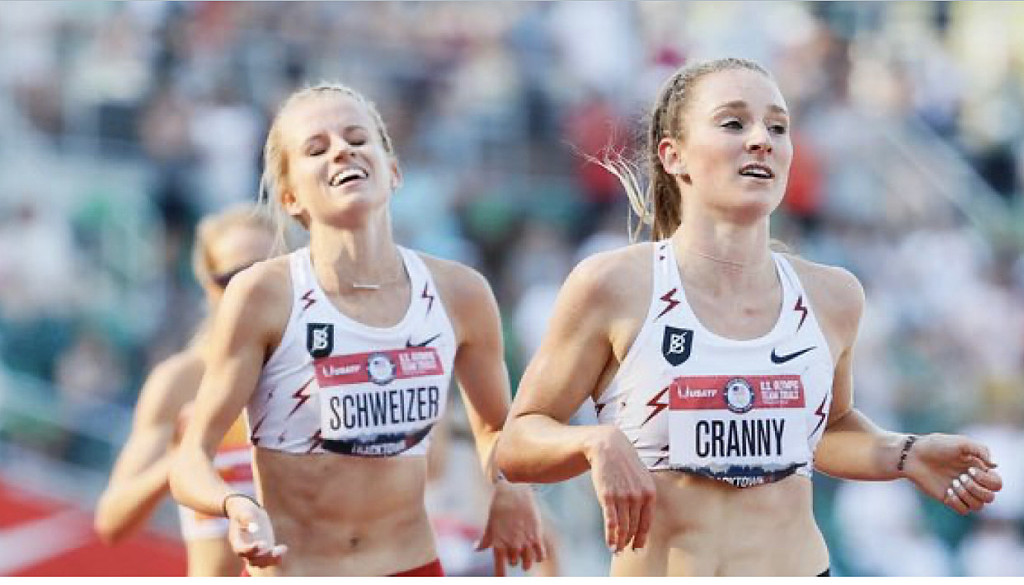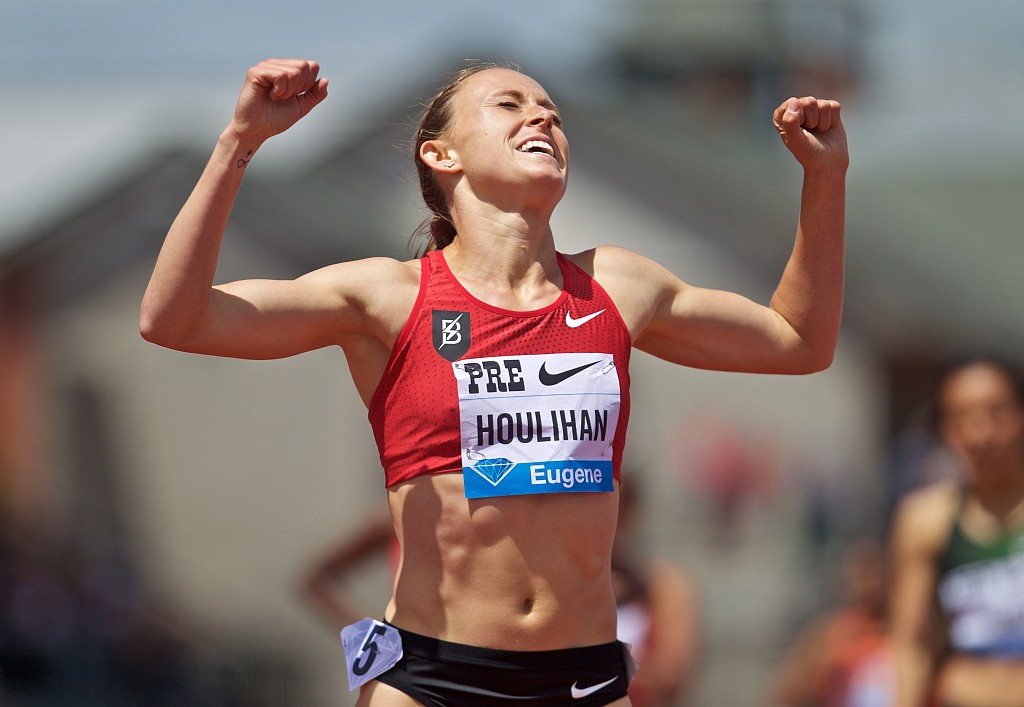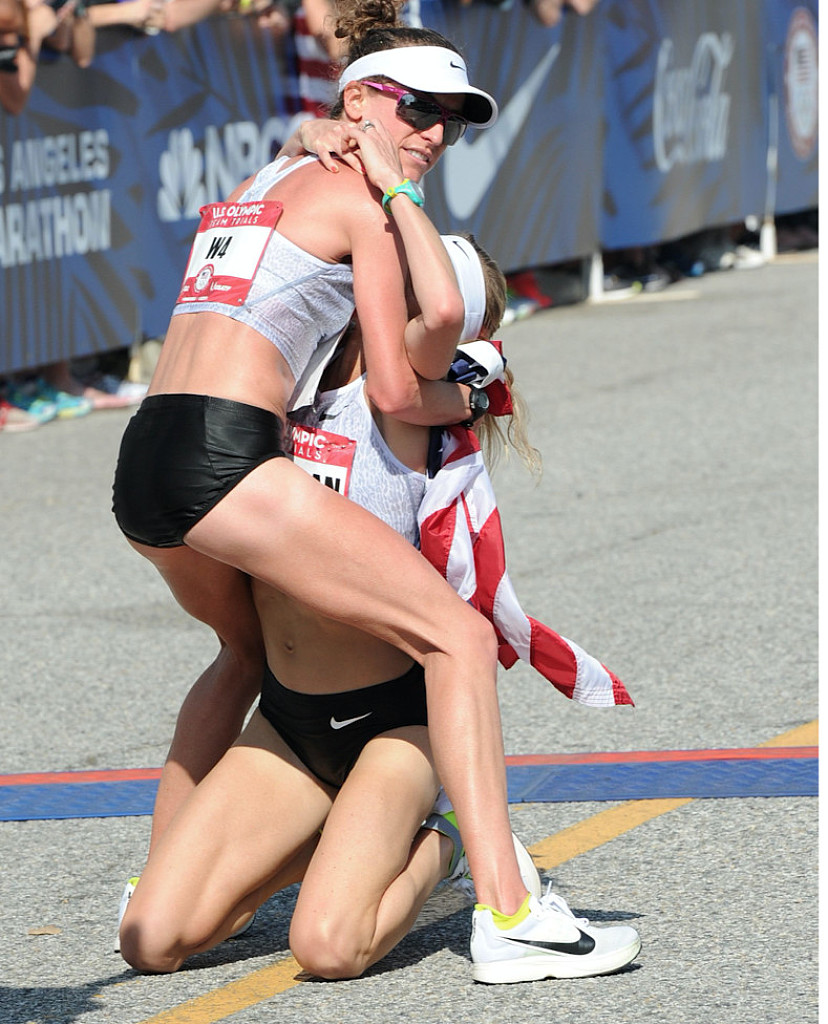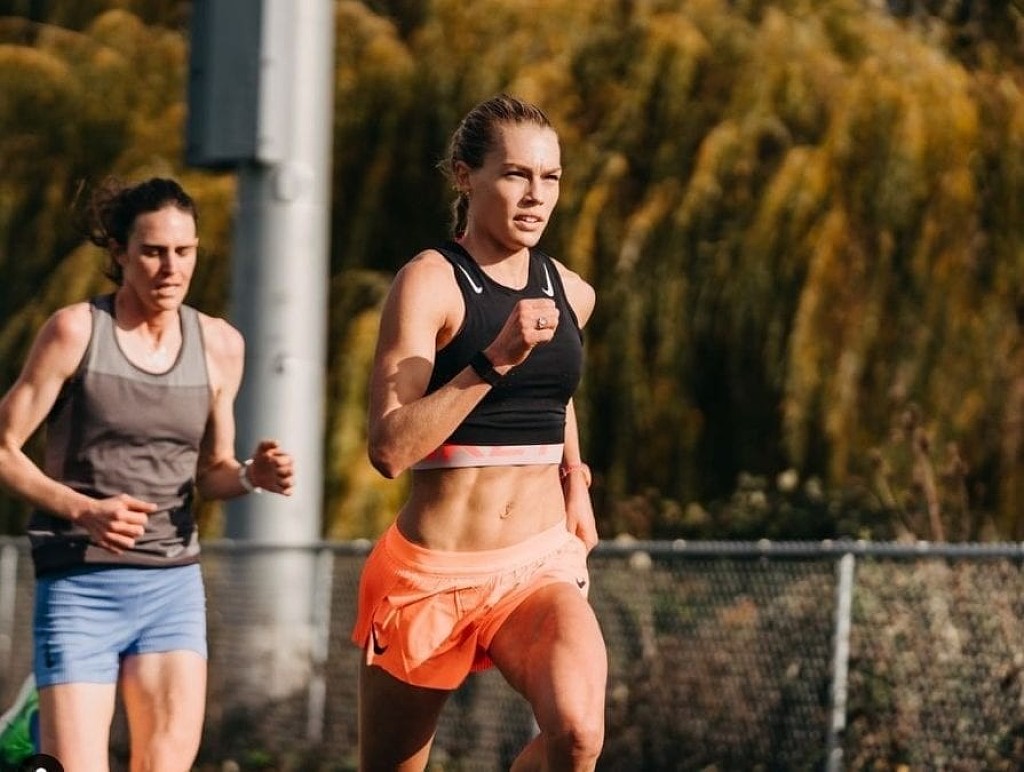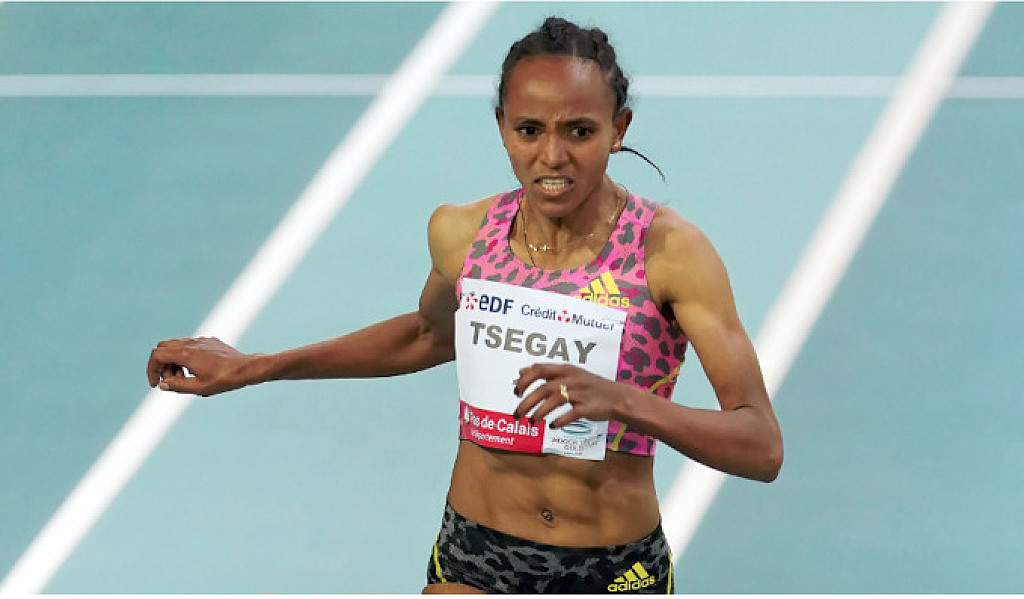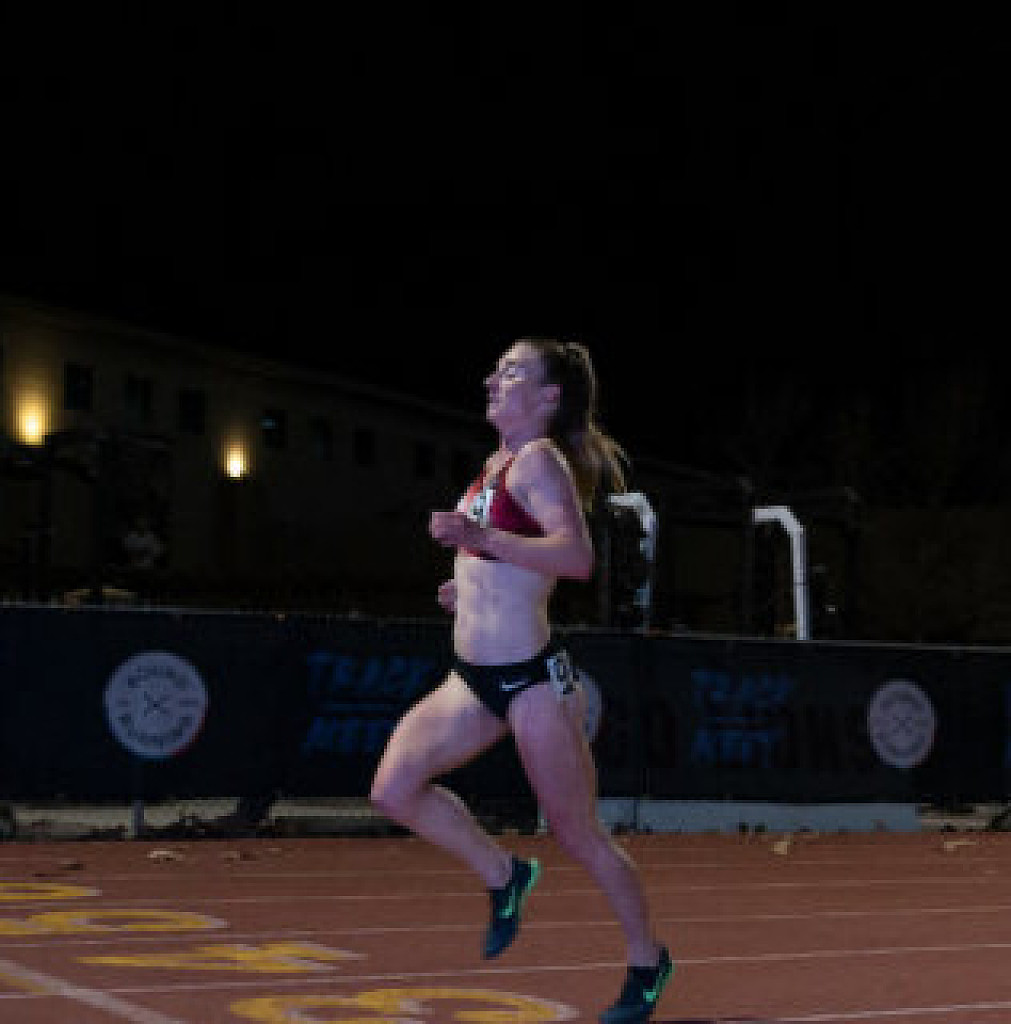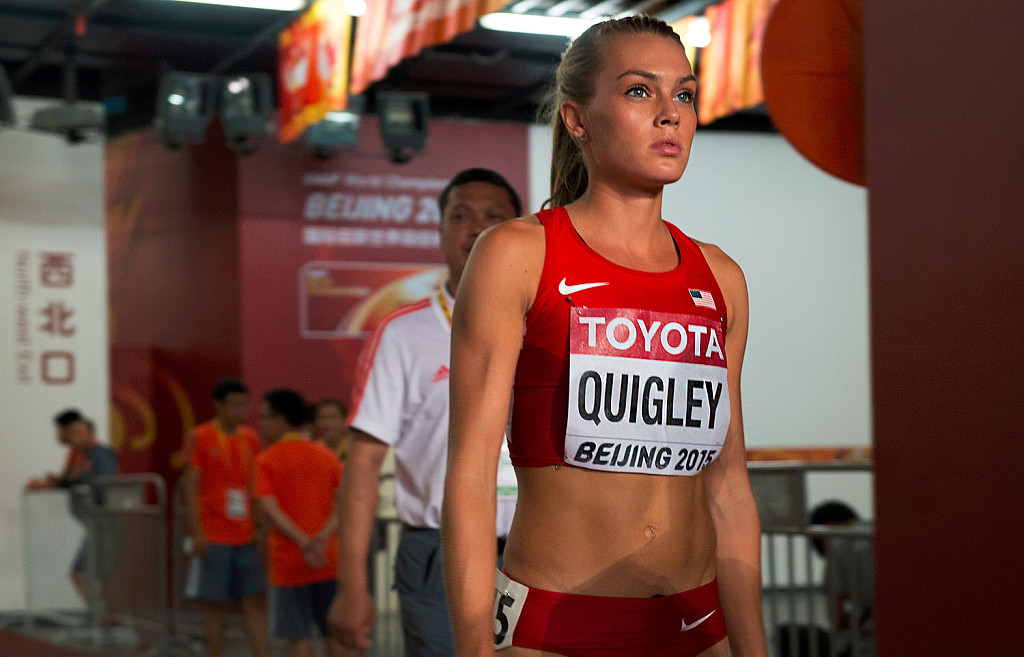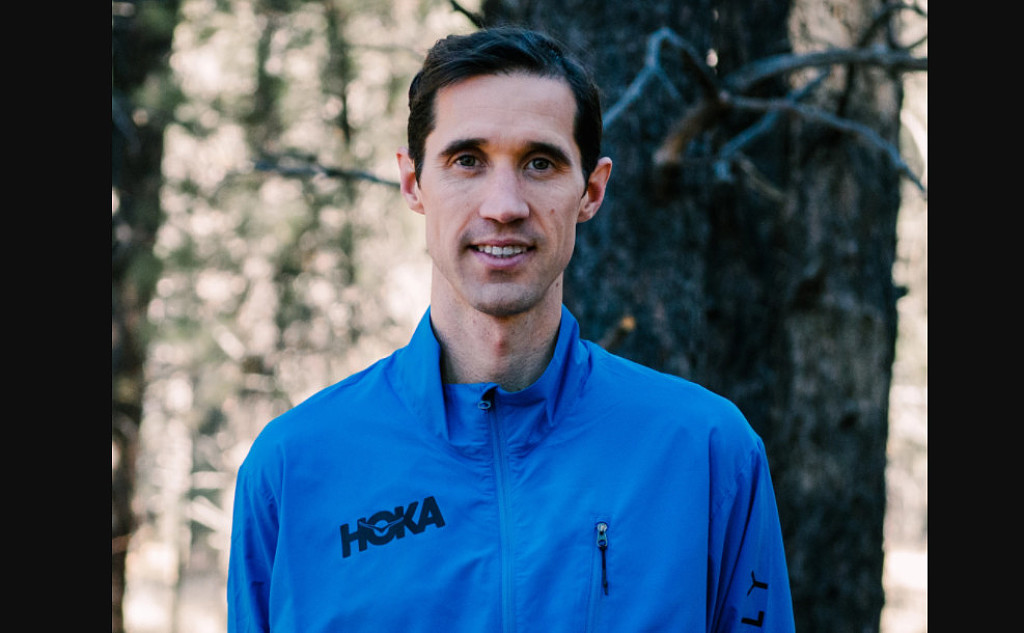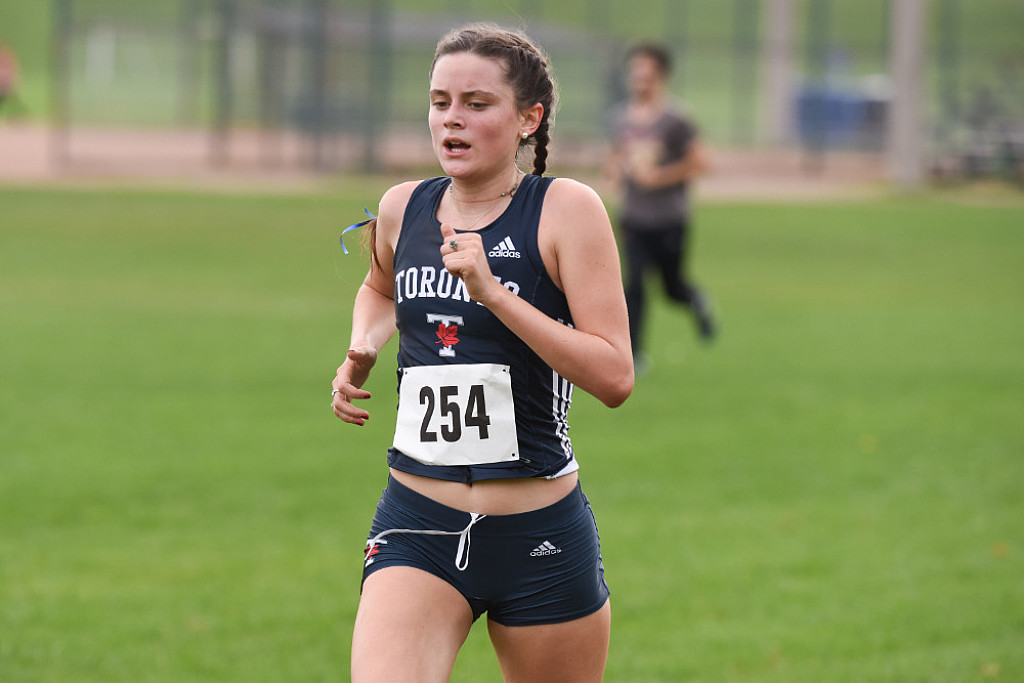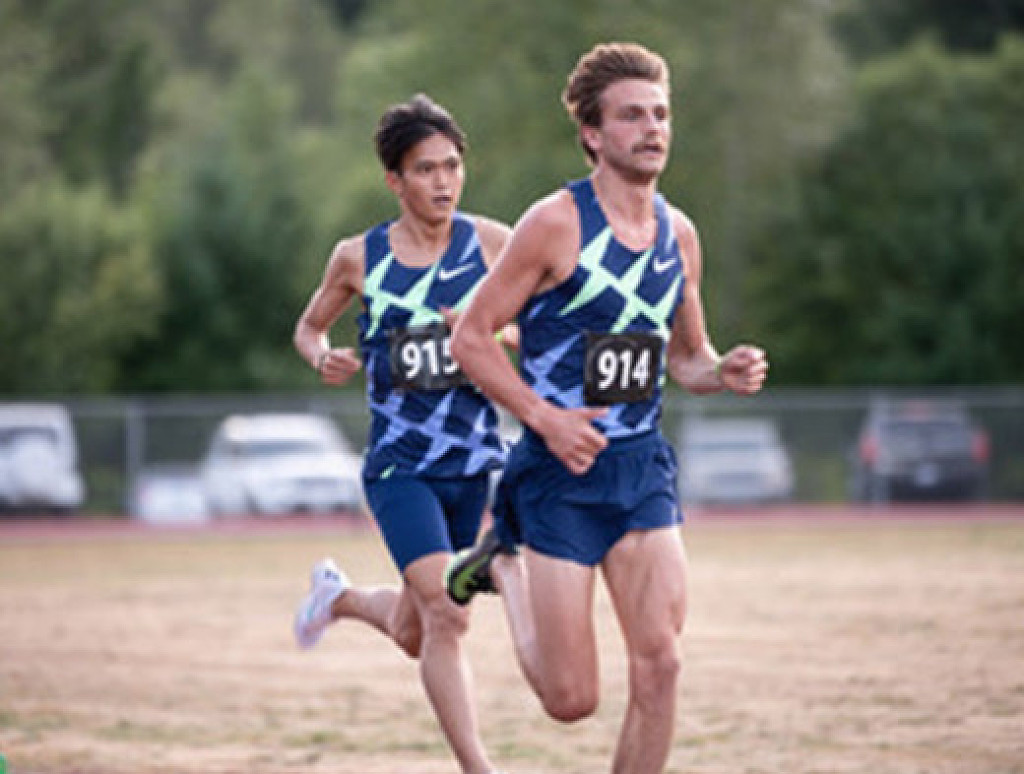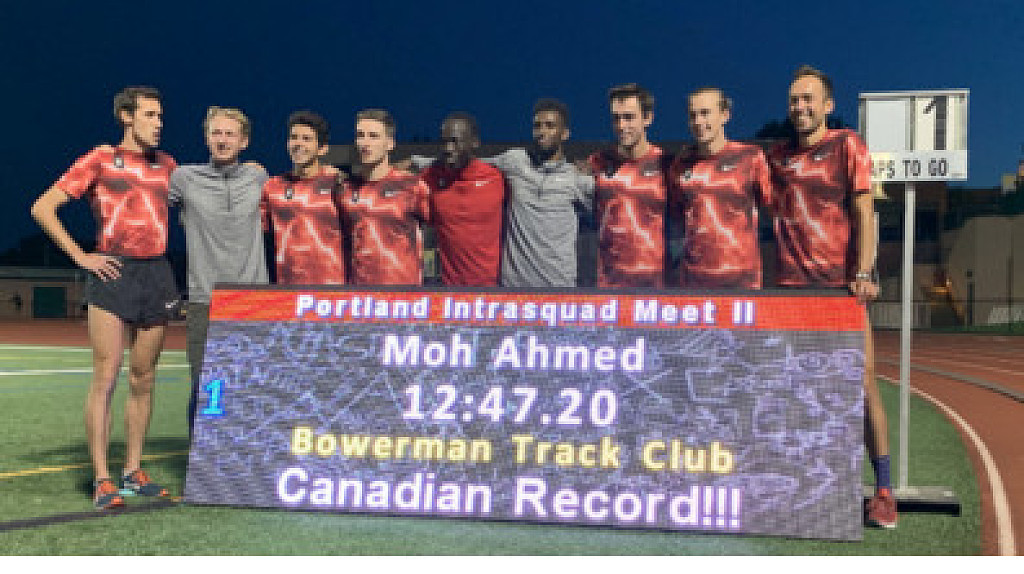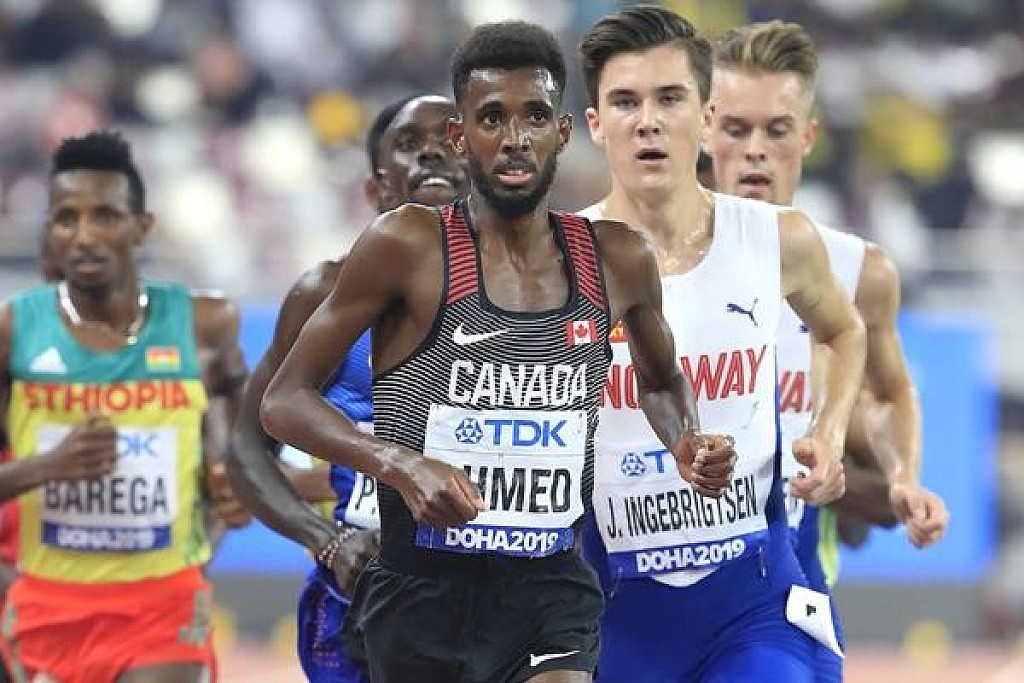Running News Daily
Running News Daily is edited by Bob Anderson. Send your news items to bob@mybestruns.com Advertising opportunities available. Train the Kenyan Way at KATA Kenya and Portugal owned and operated by Bob Anderson. Be sure to catch our movie A Long Run the movie KATA Running Camps and KATA Potato Farms - 31 now open in Kenya! https://kata.ke/
Index to Daily Posts · Sign Up For Updates · Run The World Feed
Articles tagged #Bowerman Track Club
Today's Running News
Grant Fisher’s Precision Training and Peak Performance
Grant Fisher’s 2025 season is turning heads in the distance running world, fueled by a meticulous training approach and record-breaking results. After parting ways with the Bowerman Track Club in late 2023, Fisher reunited with his high school coach, Mike Scannell, relocating to Park City, Utah, to embark on a highly personalized training journey.
A Tailored Training Philosophy
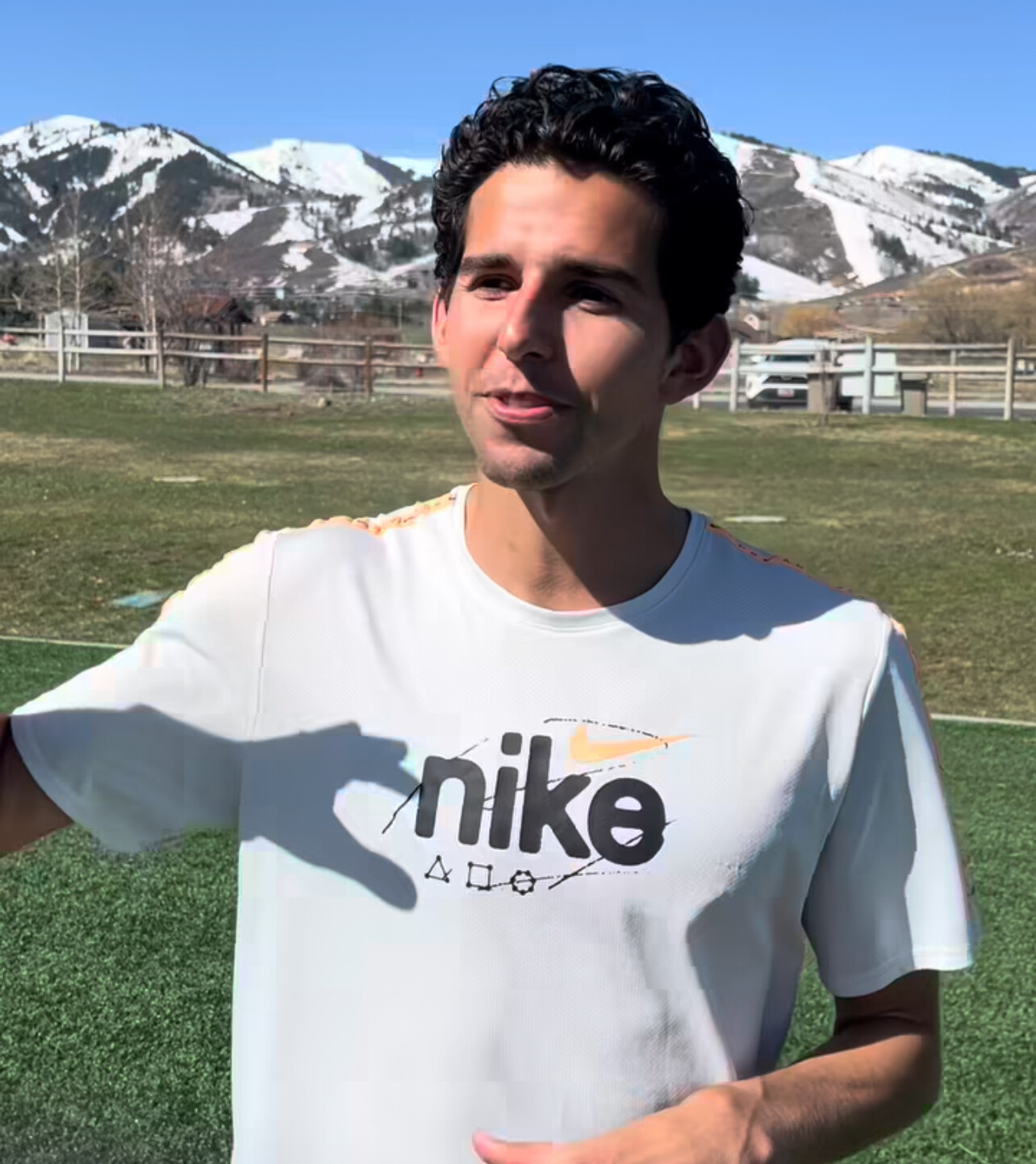
Fisher’s approach under Scannell emphasizes adaptability and precision. Rather than chasing high-intensity sessions, he focuses on building endurance through consistent threshold training. Workouts are adjusted in real time, ensuring optimal stress without overtraining. This shift has increased his workout frequency while maintaining a sustainable load—striking a balance between challenge and recovery.

Record-Breaking Results
Fisher’s new regimen has already paid dividends. In February 2025, he stunned the track world with two indoor world records: a blistering 7:22.91 in the 3000 meters at the Millrose Games and a 12:44.09 in the 5000 meters at the BU Valentine Invitational. These performances not only demonstrate his refined fitness but also his ability to peak precisely when it matters.
Innovative Workouts and Recovery
One standout session highlighted his evolving approach: Fisher capped a 7-kilometer workout with a sub-4-minute mile. The session included a hard 2000-meter effort, 4x800-meter intervals at moderate pace, and a closing 1600-meter sprint, all designed to mimic race-day demands while carefully monitoring lactate levels.
Equally essential to his training is recovery. Fisher deliberately schedules breaks to recharge and maintain peak form. After his indoor heroics, he took a recovery period until mid-March, balancing performance with longevity.
Eyes on the Future
Looking ahead, Fisher is focused on refining his form and exploring opportunities to train with a partner who shares his goals. His trajectory this year is a testament to the power of tailored coaching, strategic adaptation, and a deep commitment to recovery.
For runners everywhere, Fisher’s journey offers a masterclass in balancing intensity with sustainability—proof that precision training can unlock world-class results.
by Boris Baron
Login to leave a comment
Fast Finishes in Indy as Hacker and Andrews Claim 5K Crowns
On a crisp morning in downtown Indianapolis, the 2025 USATF 5 km Championships delivered thrilling finishes and fast times, with Olin Hacker and Josette Andrews emerging as national champions.
In the men’s race, Olin Hacker of HOKA Northern Arizona Elite made a decisive move in the final kilometer, pulling away from a tightly packed lead group. His surge proved untouchable, and he crossed the finish line in 13:31.93 to claim the national title. Casey Clinger of Brooks was just a stride behind in 13:33.04, with Hacker’s teammate Ahmed Muhumed rounding out the podium in 13:36.88—completing a trio of sub-13:40 finishers.
Men’s Top 10 Finishers
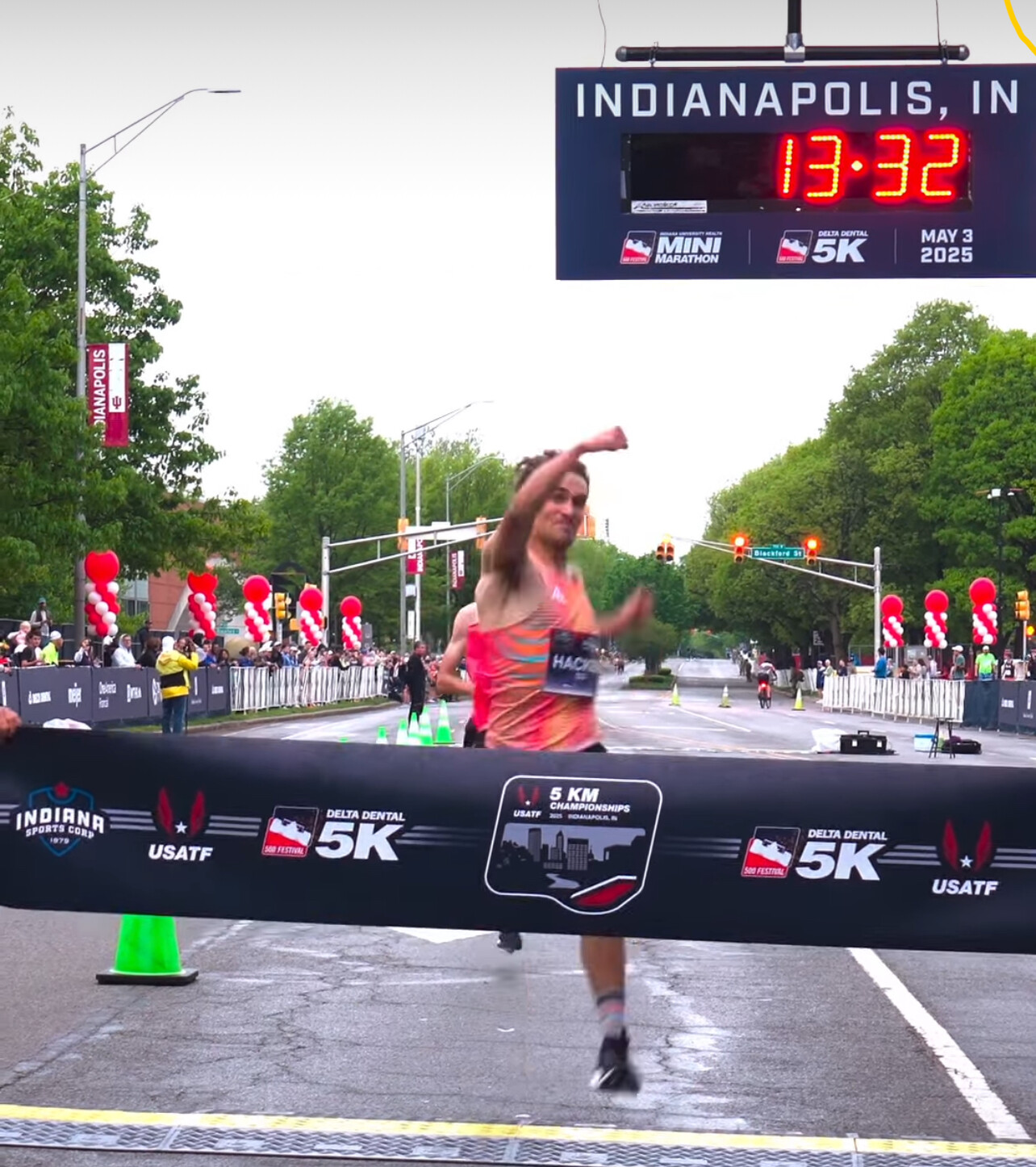
1. Olin Hacker (HOKA NAZ Elite) – 13:31.93
2. Casey Clinger (Brooks) – 13:33.04
3. Ahmed Muhumed (HOKA NAZ Elite) – 13:36.88
4. Morgan Beadlescomb (adidas) – 13:39.50
5. Graham Crawford (Reebok) – 13:42.10
6. Reed Fischer (Tinman Elite) – 13:44.75
7. Sam Chelanga (Nike) – 13:47.30
8. Ben Flanagan (On Running) – 13:49.60
9. Emmanuel Bor (U.S. Army) – 13:52.25
10. Eric Avila (HOKA) – 13:54.80
In the women’s race, Josette Andrews showed impressive strength and timing, kicking hard in the final stretch to take the win in 15:12.34. Emily Infeld of Nike followed closely in 15:14.50, and Karissa Schweizer of Bowerman Track Club secured third in 15:16.75, as the top trio pushed each other to the line.
Women’s Top 10 Finishers

1. Josette Andrews – 15:12.34
2. Emily Infeld (Nike) – 15:14.50
3. Karissa Schweizer (Nike Bowerman TC) – 15:16.75
4. Elly Henes (adidas) – 15:19.20
5. Rachel Schneider (Under Armour) – 15:22.85
6. Abbey Cooper (New Balance) – 15:25.40
7. Molly Seidel (Saucony) – 15:28.95
8. Vanessa Fraser (Nike) – 15:31.50
9. Emily Lipari (adidas) – 15:34.05
10. Natosha Rogers (Hansons-Brooks) – 15:36.60

The performances in Indianapolis set the tone for what promises to be a fast and competitive summer racing season across the U.S. road circuit.
by Boris Baron
Login to leave a comment
OneAmerica 500 Festival Mini-Marathon
The mission of the 500 Festival is to produce life-enriching events and programs while celebrating the spirit and legacy of the Indianapolis 500 and fostering positive impact on the city of Indianapolis and state of Indiana. As an organization providing multiple events and programs, many of which are free to attend and impact over 500,000 people annually, our mission to...
more...Grant Fisher: The Rise of America’s Distance Running Star and His Path to Success
Grant Fisher came within a fraction of a second of Olympic gold in the 10,000 meters at the 2024 Paris Games, narrowly missing the top spot in one of the closest finishes in the event’s history.
It had been 60 years since an American had last won the race, and sitting in the stands that day was Billy Mills, the man who pulled off that legendary upset in Tokyo in 1964. Fisher’s performance was a powerful moment that linked generations of American distance running, proving that while technology and training have evolved, the spirit of competition remains unchanged.
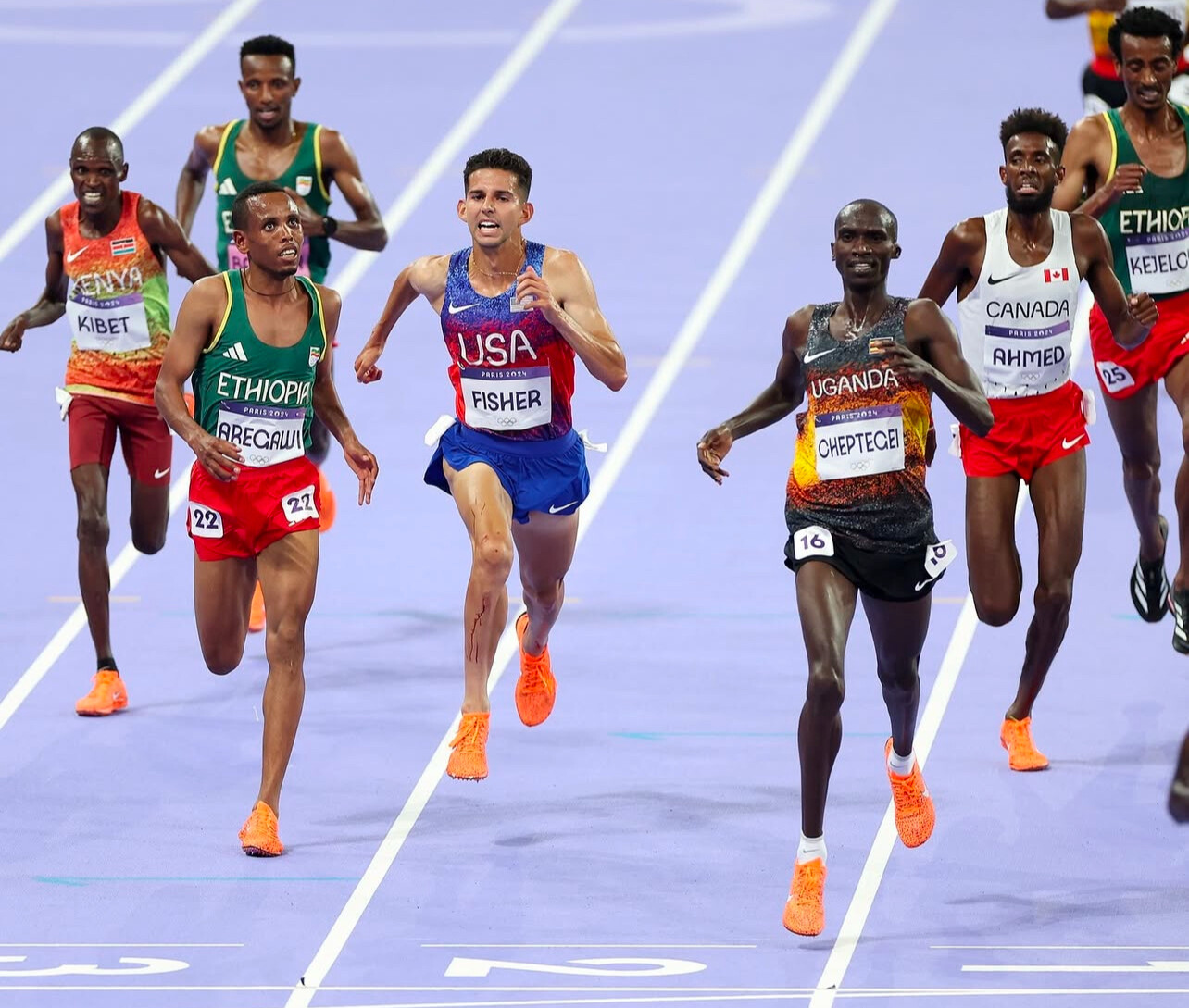
Fisher has emerged as one of the greatest distance runners in American history. He holds the world indoor record in the 3000 meters, as well as American records in the two-mile, 5000 meters, and 10,000 meters.
His performances at the 2024 Olympics—bronze medals in both the 5000 and 10,000 meters—cemented his status as a world-class athlete, making him the first American to medal in both events at the same Olympic Games.
Early Life and High School Achievements
Fisher grew up in Grand Blanc, Michigan, where he attended Grand Blanc High School. In addition to running, he was an avid soccer player and a member of the Michigan Wolves, an elite-level club team. His high school running career was marked by significant achievements, including being named Gatorade Player of the Year for cross country for the 2013–2014 and 2014–2015 seasons. On June 4, 2015, he became the seventh American high school student to run a mile under four minutes, clocking 3:59.38 at the Nike Festival of Miles.
Collegiate Success at Stanford University
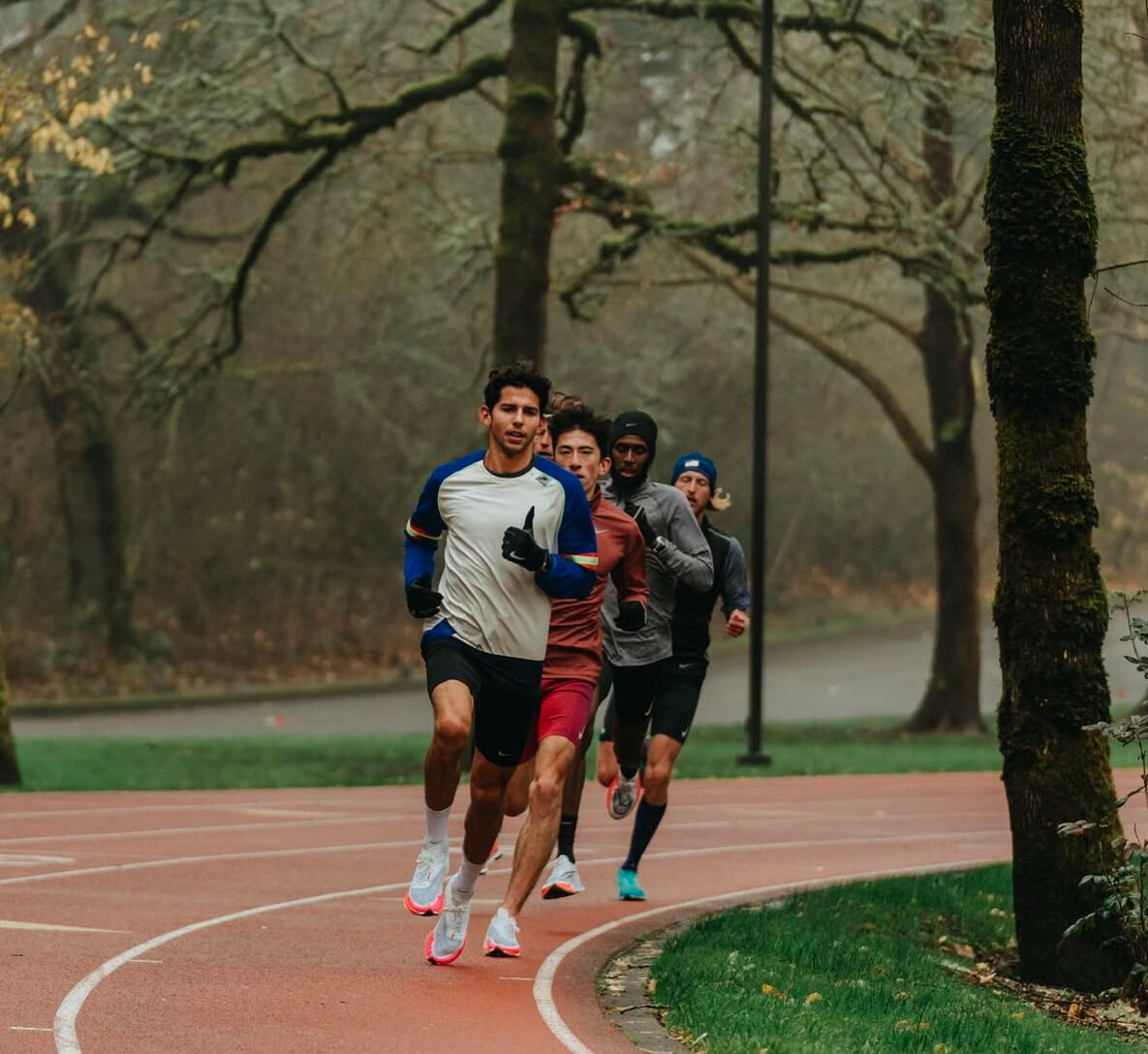
Fisher attended Stanford University, where he continued to excel in both cross country and track. He was an eleven-time All-American and won the 2017 NCAA Outdoor Track and Field 5000m championship, becoming the first American underclassman to do so in 28 years.
Transition to Professional Running
After graduating from Stanford, Fisher turned professional and joined the Bowerman Track Club, training under coach Jerry Schumacher. He continued to make significant strides in his professional career, setting personal bests and national records in various events.
Training Philosophy and Coaching
In late 2023, Fisher made a pivotal change by relocating to Park City, Utah, to train under his former high school coach, Mike Scannell. This move was aimed at optimizing his training environment, taking advantage of Park City's high altitude to enhance his physiological response to training. Fisher's training regimen focuses on threshold-type sessions, hill repeats, and long runs, with an emphasis on consistency and gradual progression.
Olympic Achievements
At the 2024 Paris Olympic Games, Fisher delivered outstanding performances:
10,000 meters: Fisher secured a bronze medal with a time of 26:43.46, narrowly missing the silver in a photo finish. This achievement made him the first American to medal in the men's 10,000 meters since Galen Rupp in 2012.
5000 meters: Fisher earned his second bronze medal, finishing in 13:15.13. He executed a strong final lap, moving from ninth to third place, showcasing his tactical acumen and finishing speed.
This race was one of the most thrilling finishes in Olympic history, with Fisher just 0.32 seconds behind Uganda’s Joshua Cheptegei, who set a new Olympic record of 26:43.14. The difference between gold and bronze was razor-thin, and it took a photo finish to determine the final placements.
Recent Achievements
On February 8, 2025, at the Millrose Games, Fisher set a new world indoor record in the 3000 meters, finishing in 7:22.91. This performance underscored his position as one of the premier distance runners globally.
Personal Bests
Grant Fisher's progression in the sport is highlighted by his impressive personal records across various distances:
1500 meters: 3:34.90 (June 9, 2024, New York, New York)
3000 meters: 7:22.91 (February 8, 2025, New York, New York) – World Indoor Record
Two-mile: 8:03.62 (February 11, 2024, New York, New York) – American Record
5000 meters: 12:46.96 (September 2, 2022, Brussels, Belgium) – North American Record
10,000 meters: 26:33.84 (March 6, 2022, San Juan Capistrano, California) – North American Record
These personal bests not only demonstrate Fisher's versatility across distances but also his continuous improvement and commitment to excellence.
Grant Fisher's journey from a high school prodigy to a world-class athlete is a testament to his dedication, strategic training choices, and adaptability. His performance in the 2024 Olympic 10,000 meters was one of the greatest ever by an American, coming within a fraction of a second of gold.
While modern advancements in track surfaces, shoes, and training have contributed to faster times, Fisher’s near-victory proved that at its core, elite distance running is still about tactical intelligence, mental strength, and raw determination—the same qualities that helped Mills secure his iconic gold in 1964.
by Boris Baron
Login to leave a comment
Grant Fisher Clocks a sub Four-Minute Mile to Conclude a 7K Workout
Grant Fisher, one of America's top distance runners, continues to showcase his exceptional fitness and race-readiness. In a recent Track workout Grant closed a demanding 7-kilometer workout with a stunning sub four-minute mile, demonstrating his world-class endurance and speed. The session, held in Chandler, Arizona, was designed to simulate race conditions, ensuring that Fisher is primed for his upcoming season opener.
A Closer Look at the Workout
The workout was structured to test Fisher’s ability to maintain a high level of performance deep into a training session. His coach, Mike Scannell, closely monitored his effort, emphasizing the of controlled fatigue management.
The workout breakdown:
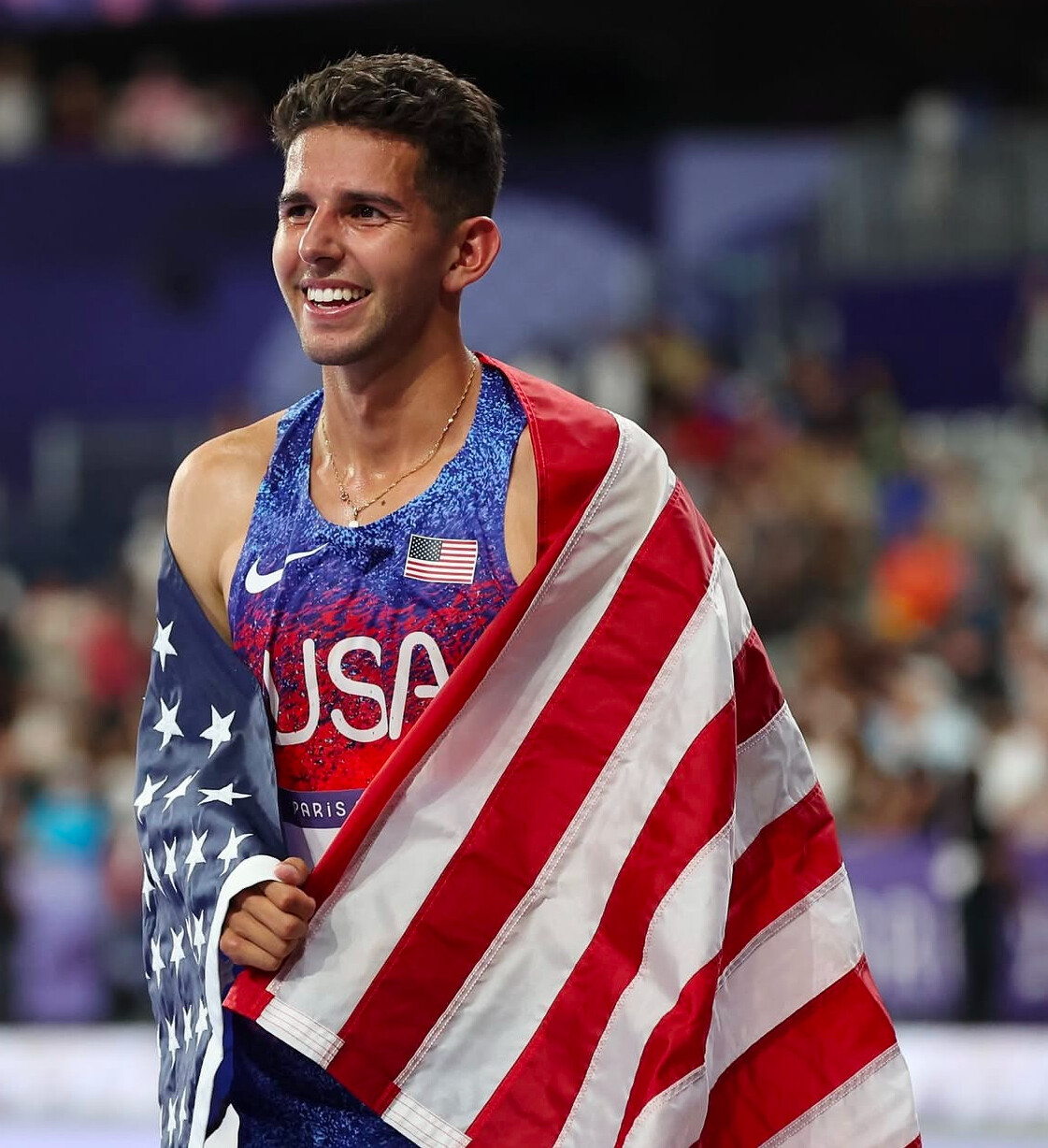
First Segment: A 2,000-meter interval, completed in 5:08.
Second Segment: Four 800-meter repeats, split in 2:06, 2:09, 2:08, and 2:08.
Final Segment: A 1,600-meter effort, where Fisher clocked an astonishing sub 4:00 mile to finish the session.
Between intervals, Fisher took controlled recovery breaks, with coach Scannell monitoring his blood lactate levels to ensure he remained within an optimal training range. Professional runner Sam Gilman assisted in pacing certain portions of the session, helping maintain consistency and push Fisher to his best effort.
A Career Defined by Breaking Barriers
Fisher’s ability to produce elite performances at the highest level is no surprise. Born on April 22, 1997, in Calgary, Alberta, and raised in Grand Blanc, Michigan, Fisher made history as a high schooler when he became the seventh U.S. prep athlete to break the four-minute mile barrier. He achieved this milestone in 2015 at the Festival of Miles in St. Louis, Missouri, clocking a 3:59.38.
After high school, Fisher attended Stanford University, where he further cemented his reputation as a distance-running star. Under coach Chris Miltenberg, he won the 2017 NCAA 5,000m title and earned 12 All-American honors. Fisher’s consistency and tactical intelligence on the track made him one of the most accomplished distance runners in Stanford history.
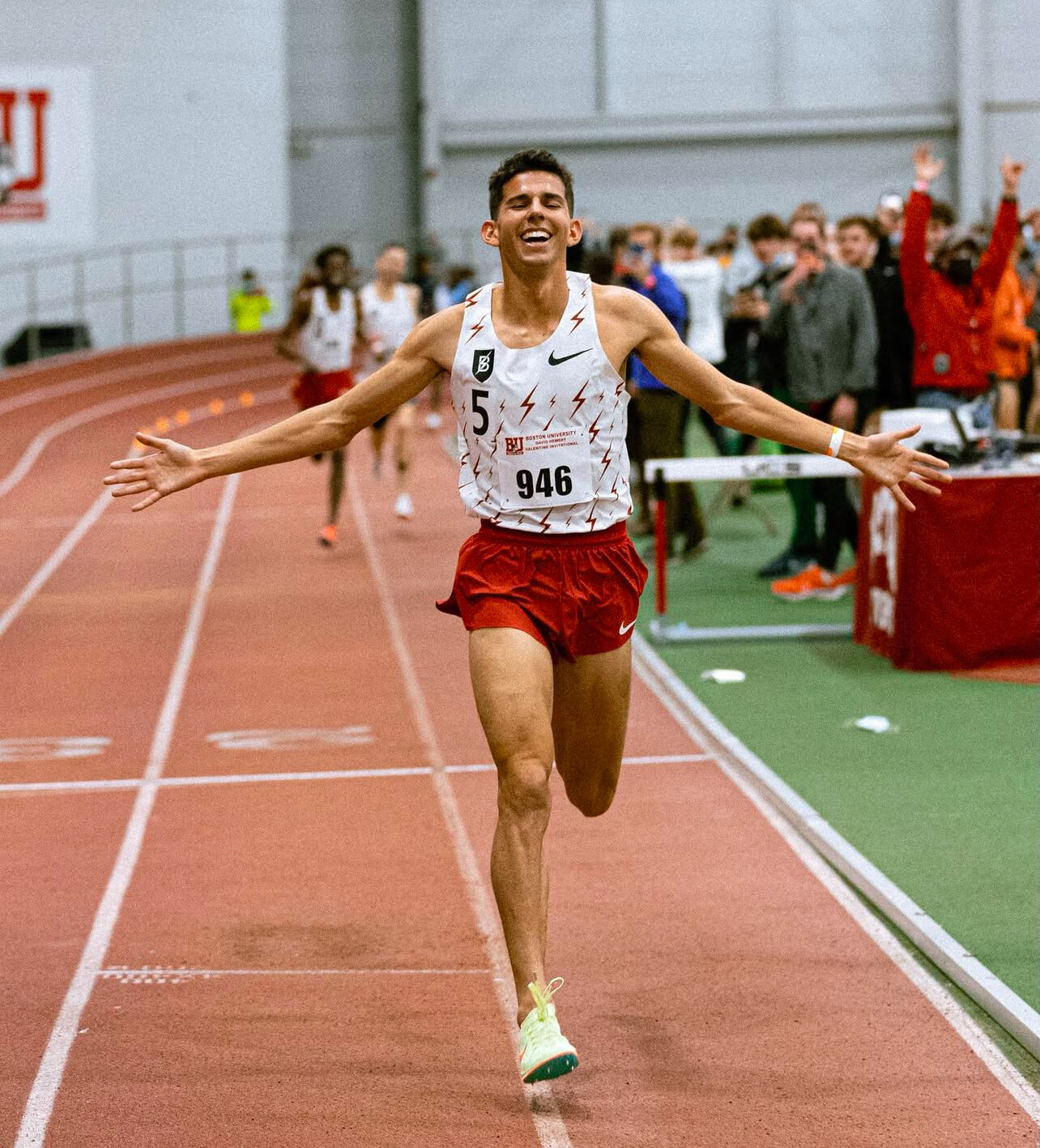
Turning professional in 2019, Fisher joined the Bowerman Track Club (BTC), training under coach Jerry Schumacher. The move propelled his career to new heights, as he set multiple American records, including:
3,000m: 7:25.47 (2023)
Two-mile: 8:03.62 (2023)
5,000m: 12:46.96 (2022)
10,000m: 26:33.84 (2022)
His performances placed him among the best distance runners in the world. At the Tokyo 2020 Olympics (held in 2021), he finished fifth in the 10,000m and ninth in the 5,000m, proving he could compete at the sport’s highest level.
Paris 2024 and Beyond
Fisher’s steady progression led to historic achievements at the 2024 Paris Olympics, where he became the first American to medal in both the 5,000m and 10,000m in the same Games, earning two bronze medals. This feat solidified his status as one of America’s greatest-ever distance runners.
As he prepares for the 2025 season, Fisher is expected to begin his campaign with a 1,500-meter race at the New Balance Indoor Grand Prix in Boston before focusing on the 3,000m and 5,000m during the indoor season. His long-term goal remains clear: to position himself as a gold medal contender at the 2028 Los Angeles Olympics.
Fisher’s ability to run a sub four-minute mile at the end of an intense workout speaks volumes about his fitness level and training discipline. As he continues to sharpen his form, fans can expect even greater performances from him in the coming months.
by Boris Baron
Login to leave a comment
How to Run in the Heat Like the Pros
Over the past decade, training for the heat has gone from a nice-to-have to an absolute necessity for top runners. Professor Chris Minson is attempting to perfect the science.
After a few pleasant hours sitting in the sun watching the Prefontaine Classic in Eugene, Oregon last month, I headed down into the bowels of Hayward Field for a grueling test for running in the heat. Chris Minson, a professor of human physiology at the University of Oregon, had invited me to try the heat adaptation protocol he has developed for elite athletes from the university and from local pro teams like the Bowerman Track Club. I’ve written about Minson’s research several times, so experiencing the protocol first-hand seemed like a good idea… at the time.
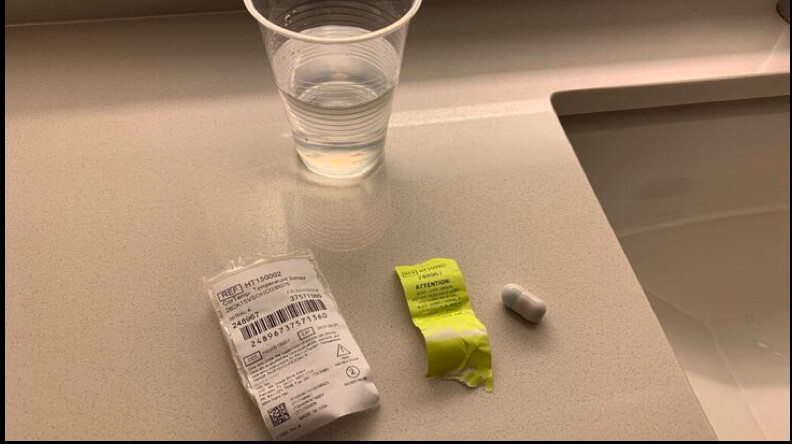
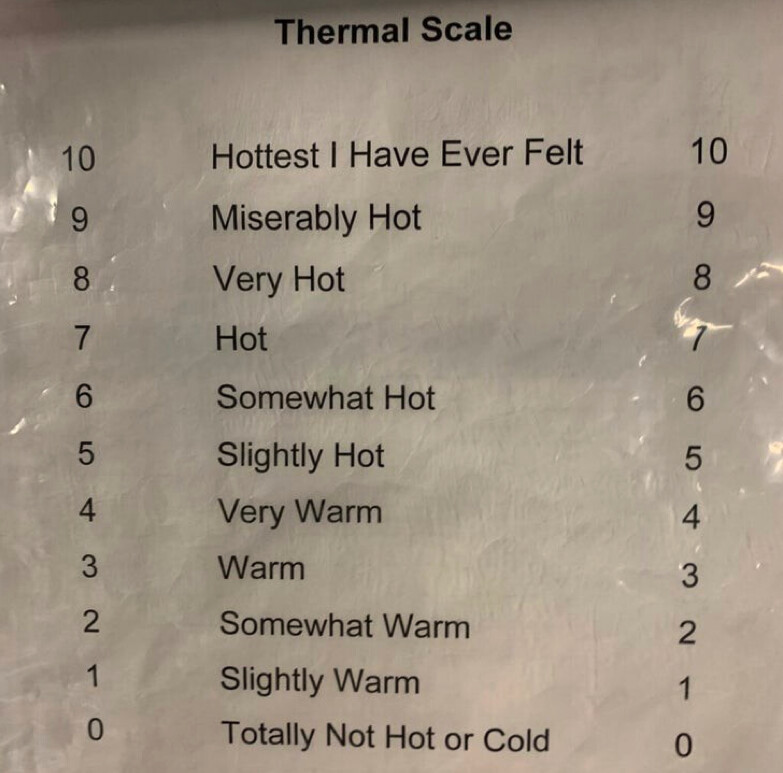
Heat is a big deal in sports these days, and it’s only getting bigger. In recent years we’ve had major events like the world track and field championships in insanely hot places, like Qatar, where the marathons had to be started at midnight. But summertime in Eugene (where the Olympic Track Trials will take place later this month) and Paris (where the Olympics will be held) can also be sizzling. Over the past decade, heat preparation has gone from a nice-to-have to an absolute necessity for top athletes. The details of how to prepare remain more art than science, though, so I was interested to see how Minson put theory into practice.
Back in the 1920s and 1930s, scientists developed the first heat adaptation protocols for workers in South Africa’s sweltering gold mines. The gold standard for heat adaptation evolved from that work: spend at least an hour a day exercising in hot conditions, and after 10 to 14 days you’ll see a bunch of physiological changes. Your core temperature will be lower, your blood volume will be higher, you’ll begin sweating and dilating your blood vessels at a lower temperature threshold, you’ll sweat more, and so on. Put it all together and you’ll be able to stay cooler and run faster in hot conditions.
In fact, there’s even evidence that this type of heat adaptation can make you faster in moderate weather, perhaps as a result of the extra blood plasma. In the lead-up to the 2008 Olympics, Minson was working with American marathoner Dathan Ritzenhein, helping him prepare for the expected hot conditions in Beijing. But he started to worry about what would happen if it wasn’t hot: would all the heat training actually make Ritzenhein slower? Minson and his colleagues ran a study to find out; the results, which they published in 2010, suggested that heat adaptation helps even in cool conditions. That’s the study that really kicked interest in heat training into higher gear.
The problem with the classic approach, though, is that training for an hour in hot, muggy conditions is exhausting. If you’re trying to do a hard workout, you won’t be able to hit the splits you want. If you’re trying to do an easy run, it’s going to take more out of you than it usually does, potentially compromising your next hard workout or raising your risk of overtraining. So how do you get the benefits of heat adaptation without tanking the rest of your training plan?
Minson’s Exercise & Environmental Physiology Lab at the University of Oregon, which he co-runs with fellow physiologist John Halliwill, is located in the Bowerman Sports Science Center, a state-of-the-art facility located under the northwest grandstand of Hayward Field. The key piece of equipment, for my purposes, is an environmental chamber that can take you down to 0 degrees Fahrenheit or up to 22,000 feet of simulated altitude, deliver simulated solar radiation, or blast you with wind. For my heat run, Minson set the dials to 100 degrees Fahrenheit and 40 percent humidity.
Earlier that day, Minson had given me a thermometer pill to swallow, which would enable him to wirelessly track my core temperature as the run progressed. “I’ll need that back,” he warned me, poker-faced. Fortunately, he was joking.
Before I entered the chamber, I peed in a cup so that Minson could check my urine-specific gravity, the ratio of how dense your urine is compared to water. I clocked in at 1.025, marginally above Minson’s threshold of 1.024 for mild dehydration. I blame it on having spent a few hours sitting in the sun watching the track meet. Then he checked my weight, so that he’d be able to figure out how much I sweated during the test.
When I stepped into the chamber, wearing nothing but shorts and running shoes, I could feel the blast of heat, but it wasn’t too oppressive—like a really hot day at the beach but under an umbrella. I started with a five-minute warm-up at a slow pace, gradually ramping up until I hit 7:30 mile pace. Then the formal protocol started: 30 minutes at that pace.
The pace was self-chosen; Minson refused to tell me the pace I “should” run. The goal was to settle in at an effort that I could comfortably maintain for half-an-hour, and that would get me hot enough to trigger adaptations—a core temperature of about 101 degrees Fahrenheit is thought to be about right—without overshooting and roasting myself. Most of the elite runners he works with end up choosing paces between 7:00 and 8:00 per mile. I slotted myself in the middle of that range—which, let’s be honest, was a dumb thing to do for an aging non-elite runner.
Still, the running itself felt easy to me. Every five minutes or so, Minson had me rate my perceived effort on the Borg scale, which runs from 6 to 20, and also rate how hot I felt. For this, he used his own 0 to 10 thermal scale.
I started out at the effort of 10 (“very light”) and thermal sensation of 3 (“warm”). After 15 minutes, my effort had crept up to 12 (“somewhat hard”), but my thermal sensation was still 3. By this point I was sweating up a storm, watching with interest as my splatters of sweat made a distinctly asymmetric pattern on the treadmill’s control panel. (Clearly I needed to visit the biomechanics lab down the hallway to sort out my stride asymmetries.)
In the latter part of the test, my sweat rate seemed to drop—not a great sign, since it could signal dehydration. My effort topped out at 13, but my thermal sensation crept up to 4 (“very warm”), then 5 (“slightly hot”), then 6 (“somewhat hot”). I still felt under control, though. Then the test ended, and Minson ushered me off the treadmill, into the next room, and into the hot tub, where he asked me to submerge myself up to my neck. The water was set to 104 degrees Fahrenheit, and it was awful. My thermal sensation immediately spiked up to 8 (“very hot”) and then 9 (“miserably hot”).
The odd thing is that the water was basically the same temperature as I was. My core temperature had crept up to 103.2 degrees towards the end of the run, and hit 103.7 shortly afterward. The water wasn’t warming me up in any significant way, but it was robbing me of the superficial perception of coolness that I got from air currents and the evaporation of sweat. It’s a good reminder of why cooling techniques like ice towels or simply dumping water on your head can be valuable: they can dramatically change your perception of how hot you are.
Sitting in that hot tub wasn’t fun, but it’s a key tool for Minson in his efforts to help athletes adapt to heat without interfering with their normal training. It extends the period of thermal stress without trashing their legs. A half-hour easy run, even in hot conditions, isn’t that draining for a well-trained athlete. At least, it’s not supposed to be.
After I’d had a cold shower and chugged a few bottles of sports drink, Minson went over the results with me. The good news is that I hadn’t seemed very bothered by the heat. I’d sweated out 2.2 pounds of fluid, indicating a fairly high sweat rate of around 2 liters per hour. That suggests that I should already be reasonably well equipped to race in warm conditions.
The bad news, though, was that my numbers didn’t make sense. There are no “wrong” answers on a subjective scale, but mine were puzzling. As the test proceeded and my core temperature drifted over 100 degrees, I kept claiming that I felt merely 3-out-of-10 “warm.” That might mean that I’m immune to heat—but more likely, it suggests that I wasn’t properly attuned to my body’s condition. If you’re running in the heat but you’re totally oblivious to how hot you’re getting, that can be a recipe for disaster.
In fact, my subjective numbers were strikingly similar to those of an elite runner Minson has worked with—one who has struggled in the heat. Minson helped the athlete renormalize his heat perception, so that conditions he originally labeled as 3 out of 10 became a more realistic 5 or 6 out of 10.
The ability to accurately gauge how hot you are is important even in training, because those core temperature pills are about $70 a pop. Once athletes have a sense of how hot they should feel during heat adaptation runs, Minson has them judge their half-hour efforts by feel. If they start getting too hot—above 7 on the Minson Scale—they can turn a fan on in the heat chamber to avoid overheating. There’s no rigid schedule of when they do these heat runs: they fit them in around their other training and racing and travel plans.
In practice, of course, most of us don’t have access to a high-tech heat chamber and temperature-controlled hot tub. But studies in recent years have shown that you can use a variety of approaches to get your core temperature up: hot baths, saunas (Minson has one in his lab, and another in his backyard), overdressing during runs. The big-picture takeaway from Minson’s approach is that you can find ways of getting a heat stimulus without disrupting the rest of your training.
To do that, though, you need to be able to gauge when you’re getting overcooked. When I got back to my hotel room that afternoon, I realized that I was feeling wrung out, as if I’d done a long, hard workout rather than a half-hour jog. I’d missed the mark. I decided to take the next day off, and dreamed that night of Minson’s other recent research focus: ice baths.
by Outside Online
Login to leave a comment
Shalane Flanagan Finds Her Sweet Spot With College Coaching
She’s juggling the University of Oregon women’s distance runners, the Bowerman Track Club, and a young family.
Before she gives a new workout to her University of Oregon athletes, Shalane Flanagan will try it out herself.
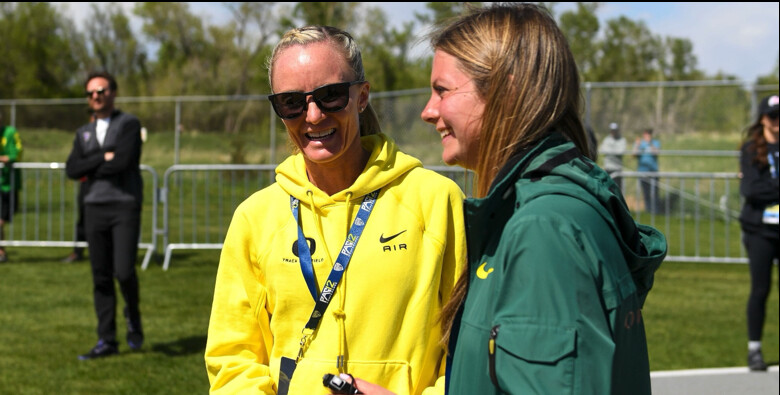
During cross-country season, it was a 5-mile tempo loop. Was it too hilly? Were the turns too sharp? In April, she was “messing around at the track one day,” as she described it, when she attempted a descending ladder of mile-800-600-400 at 10K-5K-3K-1500 pace with a short jog recovery.
“Yeah, that’s really hard,” she thought to herself. “But I think if they did that twice, it would make 10K runners feel really prepared.” Her goal with the experimentation is to make sure a workout is “feasible, but not outlandish” before her runners do it.
Few distance coaches in the NCAA are doing what she does, testing hard workouts, although Flanagan, 42, is quick to say that she does not hit the same splits her athletes do. Her boss, Oregon head coach Jerry Schumacher, is not so sure. “I see her out running every now and then, holy cow, she’s flying,” he told Runner’s World, quipping that it’s too bad she’s used up her NCAA eligibility.
Fewer still have the credentials that Flanagan, a four-time Olympian, has. She was the Olympic silver medalist in the 10,000 meters in 2008 and the 2017 New York City Marathon champion. Since she retired in 2019, she stayed on as an assistant coach with the Bowerman Track Club, a Nike pro group also coached by Schumacher that she ran for in the latter stages of her career.
That experience gives her credibility with her runners. So when she tells her athletes that they’re ready to handle a workout or race a certain time, they believe her.
“I don’t like to refer back to myself a lot,” she said in an interview at her home, a large 1920s colonial about a half mile from Hayward Field. “But I’ll say, ‘Hey, I’ve had experience with this,’ and I think they know, when I’m giving them advice, it’s not a hypothetical. I’m not projecting or guessing.
“They know it’s coming from a genuine place, because I’ve lived it,” she added. “I think that can be helpful with their confidence.”
Multiple full-time jobs
Flanagan had been living near Portland, Oregon, with her husband, Steve Edwards, and toddler son, Jack, when Schumacher was hired as the head coach of Oregon in Eugene, two hours south, in the summer of 2022. He brought Flanagan on as an assistant coach, while both kept their responsibilities with the Bowerman team, which also moved to Eugene. It was a lot.
Those early days for Flanagan—getting to know 11 female distance runners on the team, developing their training, learning the ever-changing NCAA rules, recruiting—were exhausting. And that was before they adopted a second child, Grace, as a newborn, in January 2023. They had only hours notice before Grace’s arrival.
Flanagan gets childcare help for Jack, almost 4, and Grace, 1, from a variety of babysitters and her parents. Her father, Steve Flanagan, and her stepmother visit often. One time, Flanagan had some team members’ parents visiting, and she turned around to see her dad showing them her Olympic medal. “What are you doing?” she asked him. “Put that away, that’s embarrassing.”
About three months in, when Schumacher asked her how she was handling the workload, she told him she was overwhelmed. “I’m really tired,” she said, “but this is the most fun I’ve ever had professionally. Like, I really love this job. I really love college athletics.”
Schumacher gave her full autonomy to write the training for Oregon’s women. And unlike with the Bowerman program, which former runners have said did not have much variation depending on the athlete, Flanagan has personalized training at Oregon for each individual. Some athletes on her team run as little as 25 miles per week, others go as high as 75.
One cornerstone of her training is the weekly long run on Sundays, and most weeks it has some structure to it, with tempo portions or a fartlek. For most of the team, the distance ranges from 12 to 16 miles, depending on the person.
When she first arrived in Eugene, she wrote the training with ranges in mileage. Easy days, for instance, she’d have her runners do 6 to 8 miles, depending on how they felt. They didn’t like that. They wanted an exact number. Getting them to trust themselves, listen to their bodies, and know the difference between muscle soreness and a potential injury has been one of her biggest challenges.
“I have tried to instill in them that they need to learn their body,” she said. “Like, I’m not in their body—they need to take stock and learn how to read their body. It’s one of the greatest skills and assets I felt like I had [as a runner].”
Flanagan tries to run with various groups at least one day per week on their easy runs. “It’s fun to run with the coach,” said Klaudia Kazimierska, who was fourth in the 1500 meters at the NCAA outdoor championships in 2023. “She’s a great inspiration, and she was a great athlete. She tries to give us a lot of information—and she tries to show us that running is so fun.”
Flanagan finds it easier to learn about her athletes when they’re on the run instead of sitting down and looking at one another. She’ll pick up vibes about what’s going on with them and urge them to limit their social media, especially when it comes to training.
“They devour information about what everyone else is doing,” Flanagan said. “I tell them, ‘You’ve got to be careful what goes in your head.’ I don’t follow any other kids from any other programs or any other coaches. I think it would undermine my intuitiveness. I don’t want to know.”
At the same time, she finds her college athletes much more professional than she was as an undergraduate at the University of North Carolina, when she worked hard, but also focused on her classes and other parts of college life. Not these women. “If anything, I’m like, ‘Yo, you’ve got to chill out. You’ve got to dial this back,’” she said. “They’re really into their running and I don’t have to nudge or push. They are really on top of it. It’s kind of freaky.”
Mixed results
Flanagan’s approach has yielded immediate results, but some athletes have had setbacks as well.
Last year, four qualified for the NCAA outdoor championships in the distance events, from 800 to 10,000, including three who made the final in the 1500.
Early in the 2024 outdoor season, the Ducks seemed destined to have more in this year’s championship meet, which started June 5 at Hayward Field.
At the end of March, Maddy Elmore set a school record in the 5,000 meters, running 15:15.79. Two weeks later, Şilan Ayyildiz, a transfer from the University of South Carolina who had been at Oregon for only about three months, ran 15:15.84.
Ayyildiz lines up at the NCAA championships this weekend, along with Kazimierska and Mia Barnett in the 1500 meters, and a freshman steeplechaser, Katie Clute. But Elmore sustained an injury to her soleus in late April and was unable to run in the qualifying meet for NCAAs. Flanagan’s total is again four athletes at NCAAs. She had hoped to have at least one qualifier in every event distance event.
In her short tenure, she has seen how college students have to grapple with stress, classes, finals, and in some cases, anxiety. They pick up illnesses. The big result doesn’t always come at the right time—if it comes at all. “I see these things and I see how they move and handle the work, but sometimes in this season, I may not get the performance in a race,” she said. The coach is still learning.
A busy summer
Elmore might be back in time to race the Olympic Trials, which begin on June 21. Kazimierska will go home to Poland and hope to make the Polish Olympic team in the 1500 meters. As soon as the season is over, Flanagan will turn more of her attention to the Bowerman team, which currently has three women: Karissa Schweizer, Christina Aragon, and Kaylee Mitchell. The club had several departures from the men’s and women’s side after Shelby Houlihan’s doping ban in 2021 and the move to Eugene in 2022.
It’s been difficult for Flanagan to watch the turnover, especially as some of the athletes she’d trained alongside for years, like steeplechaser Courtney Frerichs, left. They’re friends.
At the same time, Flanagan understands it. She changed coaches a few times herself during her career. It would be selfish for her to expect them to stay.
“Especially at the end of a career, to eke out those last big performances, sometimes you need a change of scenery,” she said. “I actually think it’s healthy to get different training, a different stimulus. Sometimes you can fall into this monotony and it feels stale especially if you’ve been doing it for a while.”
When she heard from athletes that they were thinking of leaving Bowerman, Flanagan jumped in with suggestions.
Her coaching brain took over to help.
“At the end of the day, I want them to be successful and happy,” she said. “So when they expressed maybe needing a change, I’m like, ‘Okay, let’s work through this. What are your plans? I don’t want you to leave and aimlessly not have a plan. What does that look like, what do you want to do?’ It’s a natural evolution.”
by Runner’s World
Login to leave a comment
6 Ways to Be a Great Training Partner
These 2024 Olympians know how to help each other while keeping it fun.
Pianist Harold Mabern said that jazz is “competition without animosity.” He might well have been describing the running relationship of Conner Mantz and Clayton Young, who finished first and second, respectively, at the U.S. Olympic Marathon Trials in February.
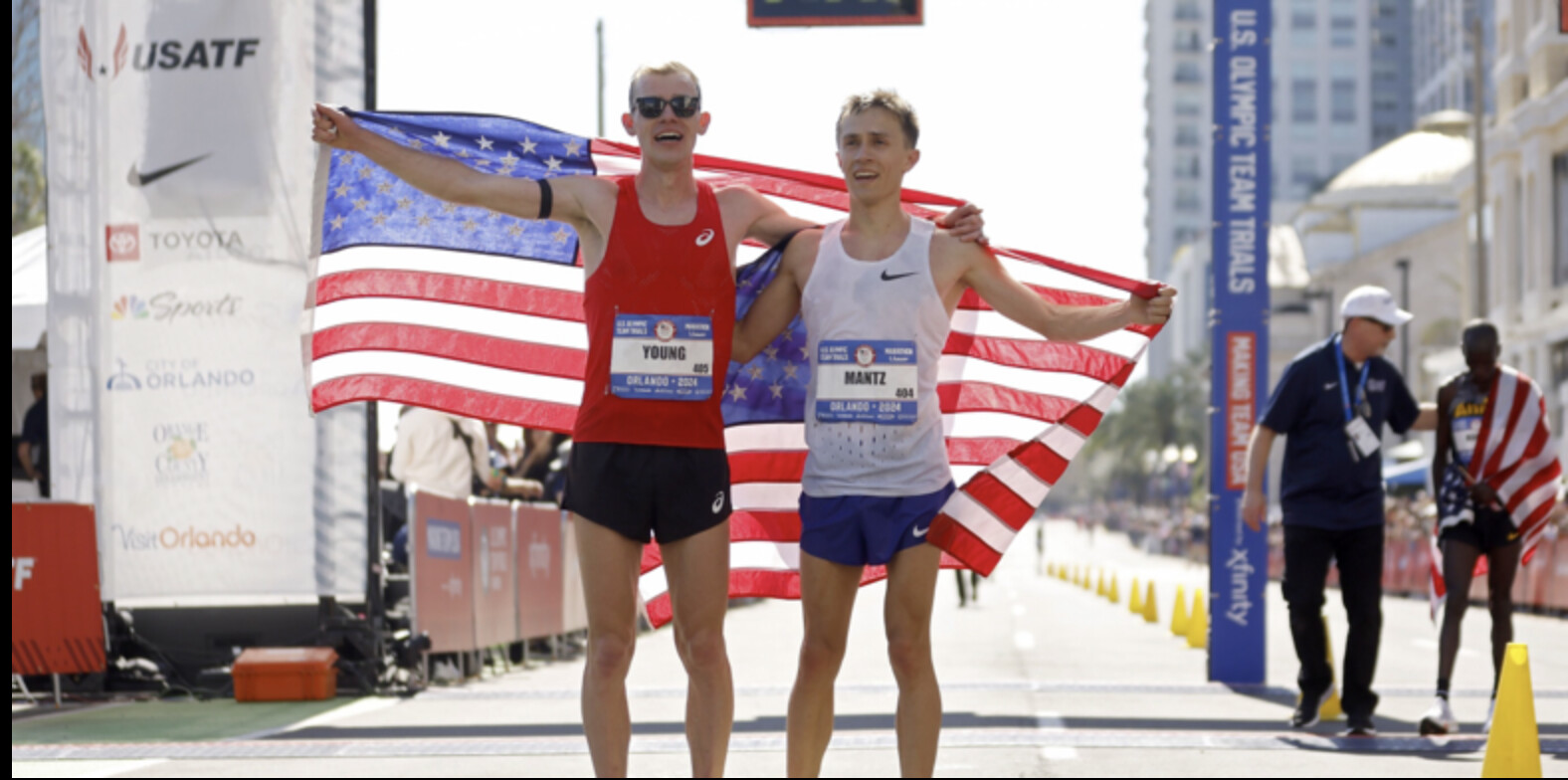
That Mantz and Young are not just two guys who run together, but true training partners, became obvious over the second half of the Trials race. Zach Panning, who wound up finishing sixth, took the lead in the sixth mile and dropped the pace by more than 10 seconds per mile. Mantz and Young tucked in; by the 19th mile, when they were Panning’s only company, they slapped each other’s hands in an apparent celebration of making the team.
When Panning started to slow a few miles later, Mantz and Young pushed on ahead. With two miles to go, Mantz was visibly struggling. Young, looking great by comparison, repeatedly talked to Mantz and stayed with him rather than running the faster pace he looked capable of. In the closing strides, Young eased back as an exhausted Mantz heaved himself over the finish line, one second ahead of his training partner.
Seven years earlier, their first run together was also memorable. Both are members of the Church of Jesus Christ of Latter-Day Saints (LDS), the largest Mormon denomination. Many LDS members go on a one- to two-year mission in their late teens to early 20s. Even for members who are top athletes, the mission is primary; most do little to no training and gain a significant amount of weight.
In 2017, Mantz returned from his mission weighing 150 pounds, compared to his usual 120. A little more than a month later, down to 140, he showed up for his first day of practice with the Brigham Young University team. The group was doing an 8-mile tempo run a little slower than 5:00 per mile. “I held onto the pack for as long as I could,” Mantz recalls. “I almost made it 5 miles until I had to slow down.”
Young, who was in the pack, says, “When Conner stuck with us past halfway, I thought, ‘Oh my gosh, he’s only a month and a half off his mission. Conner is the real deal.’”
They began training together regularly in 2019, the year when Young went pro after winning the NCAA 10,000-meter title. Young remained in Provo to train under BYU coach Ed Eyestone, a two-time Olympic marathoner. While at BYU, where he won two NCAA cross country titles, Mantz mulled going pro. He initially stayed in Provo, but thought that he would soon move and join the Oregon-based Bowerman Track Club or another group. Instead, a few months became several months, then several months became a year. After Mantz ran 2:08:16 at the 2022 Chicago Marathon in his debut, he thought, “Alright, this is working.”
That’s an understatement. Here are six takeaways about being good training partners from Mantz and Young, who will run the Olympic Marathon in Paris on August 10.
Find people with similar goals and outlooks
Since their build-up for the 2023 Chicago Marathon, where both PRed (Mantz 2:07:47, Young 2:08:00), they’ve had near-identical competitive schedules. Mantz and Young typically run together six days a week. They do their main run of the day in the morning. Depending on their schedules, the two, who live a few miles away from each other, sometimes also meet for their shorter afternoon run.
Why don’t they run together seven days a week? Both run their 100-plus-mile weeks while devoting Sundays to their faith. Being an outlier in that regard was one reason that Mantz decided not to join a more formal pro group. “I knew nobody else would be taking Sundays off,” he says, “and that added to the list of reasons to stay here.”
Good training partners help you get more out of yourself
Mantz is a notoriously hard trainer. Young is probably better aware of that than anyone else.
“My best workouts are keeping up with Conner, but Conner’s worst workouts are staying with me,” Young says. “I can’t remember the last time I dropped him in a workout or a long run. That’s one of the beauties about working out with Conner—you really do get pushed to your limit. My workouts with Conner are usually far better than they would be by myself. I just have to make sure I don’t go too hard.”
But pace-pushing Mantz also benefits from having Young to gauge himself by.
“For the most part, I would be way worse on my own,” Mantz says. “I can put a lot of pressure on myself and run too fast early on. I’m all about, ‘Let’s run faster than we did at this point last build-up.’ I see it as I want to get better every day. It’s a little difficult, because I may have gone a little too hard in workouts over the last few years, and so now to even match what I did a year or two ago is quite difficult.”
Compare yourself to you, not your training partners
“There are definitely workouts where Conner is totally trashing me the last interval,” Young says, “and I just have to say, ‘Okay, I did what Coach said and I’m faster in February 2024 than in February 2023. I just really need to compare myself with myself.”
If, like Young, you have a training partner who likes to hammer, do like Young and listen to what your body is saying on that day.
“Typically, Coach will give us some splits he thinks we should start at,” Young says about hard workouts. “But it’s not uncommon for Conner to go faster than those splits, and so I have to do these mental gymnastics of, ‘Do I go with Conner or do I do what Coach said?’ Conner and I are obviously really competitive, and you get a lot of confidence training with one of the best athletes in the marathon, so should I stick with what feels good and with what Coach said, or should I try to close this gap and run with Conner? Sometimes I do, sometimes I don’t.”
Share both the joys and the struggles
As pros, Young and Mantz are unlikely to come up with reasons to blow off runs. But we all need an occasional pick-me-up.
“If I’m not feeling good during a workout, I turn to Clayton and say, ‘You’re leading the next one,’” Mantz says. “And he’s always like, ‘Alright, I’ll help out,’ even if he’s also having a bad day.”
For many of us, meeting our running partners doesn’t just help us get out the door. Doing so is often a dependable source of pleasure. That’s as true for Olympians as it for the regular runners. “I just get excited sometimes thinking about the camaraderie and that I get to run with Clayton today,” Mantz says.
Acknowledge irksome behaviors but keep them in perspective
Some days with your training partners won’t be exciting or fun. You might even find yourself wishing you were running alone. But as with a romantic partner, it’s the overall quality of the relationship that matters.
“There are times I’m like, ‘Conner, why did you go that fast? I thought Coach said to do this,’” Young says. “I can get frustrated. But at the end of the day, it’s making me faster. As long as I recognize that balance and look at the big picture, having Conner with me as a training partner far outweighs the little frustrations that I have every now and then.”
Use your time together to improve your lives
Like a lot of us, Young and Mantz spend a good amount of their running time talking about running—how their most recent workout went, what races they have coming up, how the BYU team and other top runners are doing, what the weather will be like on their next hard day. But, says Young, “we’re kind of unique professional runners in that we have a lot of stuff going on outside of running. So we’ll also talk about family, real estate, investments, taxes.”
Mantz, who at age 27 is three years younger than Young, has used a lot of their run time to discuss marriage. “That’s the biggest benefit of having Clayton as a training partner—asking questions and getting advice on things like adjusting to having somebody in your life at a new level,” he says.
Young, who had knee surgery less than a year before making the Olympic team, says, “We’ve gone through some tough stuff. We’ve been able to lean on each other a lot. Our runs together are often like a therapy session.”
by Runner’s World
Login to leave a comment
Cooper Teare And Weini Kelati Win 2024 USATF Cross Country Titles
Weini Kelati and Cooper Teare earned convincing victories at the 2024 USATF Cross Country Championships, held on Saturday at Pole Green Park in Mechanicsville, Va. Running just six days after setting an American record in the half marathon in Houston, Kelati took off just after 4k and destroyed the field, running 32:58.6 for the 10k course to win by 37.3 seconds — the largest margin of victory since Aliphine Tuliamuk‘s 48.2 in 2017.
Teare took a different approach, staying patient as former University of Colorado runner turned Olympic triathlete Morgan Pearson pushed the pace during the second half of the race. Teare was the only one to go with Pearson’s move at 8k and made a strong move of his own at 9k that allowed him to cruise to victory in 29:06.5. 2020 champion Anthony Rotich of the US Army was 2nd in 29:11.6 as Pearson hung on for 4th. Teare’s training partner Cole Hocker was 12th in 29:52.3.
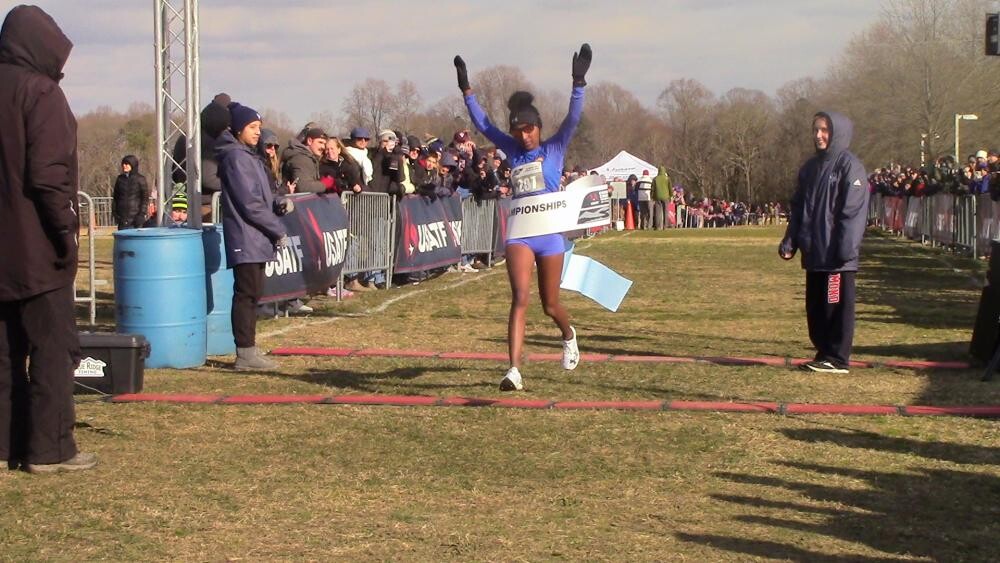
The top six finishers in each raced earned the right to represent Team USA at the World Cross Country Championships in Belgrade, Serbia, on March 30. Kelati’s coach/agent Stephen Haas told LetsRun last week that Kelati plans to run there while Teare’s agent Isaya Okwiya said Teare’s plans are still TBD.
High school junior Zariel Macchia of Shirley, N.Y., won the women’s U20 race in 20:31.0 for the 6k course; Macchia previously won the title as a freshman in 2022. Notre Dame freshman Kevin Sanchez won the men’s U20 title in 24:07.1 for the 8k course.
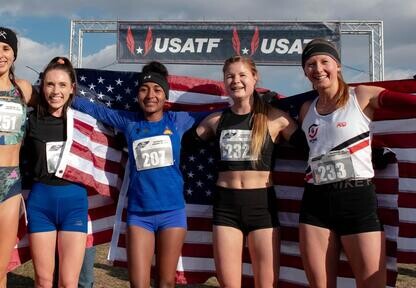
Cooper Teare shows his range with impressive victory
Teare was the 2021 NCAA 5,000m champion at the University of Oregon and has shown that his range extends both up and down the distance spectrum. Teare is the NCAA mile record holder at 3:50.39 and was the 2022 US champion at 1500 and now he is the US cross country champion. That sort of range has become increasingly common on the international level but in the US, it’s rare for a 1500 guy to run USA XC, let alone win it. Teare is the first man to win US titles at both 1500 meters and cross country since John Mason in 1968, and even that comes with a caveat as the US championships were separate from the Olympic Trials back then. Before Mason, the last guy to win both was Abel Kiviat (cross country in 1913, US mile title in 1914). You all remember him.
On the women’s side, Shelby Houlihan, since banned for a doping violation, won USA XC and the US 1500 title back in 2019.
Teare’s coach Ben Thomas told Carrie Tollefson, who was calling the race for USATF.TV, that the aim of this race was just to see where his fitness was at against a top field. Clearly, it’s very good. In his first race since leaving the Bowerman Track Club after the 2023 season, Teare, wearing a bright pink undershirt beneath his Nike singlet, ran with the lead pack until Morgan Pearson began to string things out just before entering the final 2k loop. As opposed to Pearson, who was giving it all he could to drop the field, Teare looked relaxed and in control, and at 9k he eased past Pearson into the lead before dropping the hammer to win comfortably. It was a smart run and an impressive display of fitness.
Teare may also have slayed some demons from his last cross country race in 2021, when he crawled across the finish line in the final meters. Now he’s gone from 247th at NCAA XC to a national champion.
Teare’s plans for the rest of the winter are up in the air. He will run in a stacked 2-mile at Millrose on February 11 against the likes of Grant Fisher and Josh Kerr before competing at USA Indoors a week later. World Indoors could be an option if he makes the team — as could World XC, if he wants it. No matter what he chooses, Saturday’s run was a great way for Teare to kick off the Olympic year.
Weini Kelati demolishes the competition
On paper, Kelati, who runs for Under Armour’s Dark Sky Distance team in Flagstaff, was the class of this field. The only question was whether she would be recovered from racing hard at last weekend’s Houston Half Marathon, where she set the American record of 66:25. The answer was a definitive “yes” as Kelati, after running with the leaders for the first 4k, dropped a 3:05 5th kilometer to break open the field. From there, her lead would only grow to the finish line as she won by a massive 37.3 seconds over runner-up Emma Hurley.
Kelati was not at her best heading into last year’s World XC in Australia as she had missed some time in the buildup due to injury. She still managed to finish a respectable 21st overall. Her aims will be much higher for this year’s edition in Belgrade.
Kelati also made some history with her win today. She’s the first woman to win Foot Locker, NCAA, and USA cross country titles.
by Jonathan Gault
Login to leave a comment
USATF Cross Country Championships
About USATF Based in Indianapolis, USA Track & Field (USATF) is the National Governing Body for track and field, long distance running, and race walking in the United States. USATF encompasses the world's oldest organized sports, the most-watched events of Olympic broadcasts, the number one high school and junior high school participatory sport, and more than 30 million adult runners...
more...Canadian Olympian Andrea Seccafien to debut at Tokyo Marathon
After reaching the Tokyo Olympic 5,000m final in 2021, the next two years were a whirlwind for Canadian 10,000m record holder Andrea Seccafien. The 33-year-old suffered a root meniscus tear in early 2022, then a stress fracture in 2023, and at times, contemplated calling it a career to go back to school. She felt like she was missing something and had one final box to check as a runner: the marathon.
“The plan has always been to move up to the marathon,” says Seccafien. “I will be running the Tokyo Marathon on March 3.”
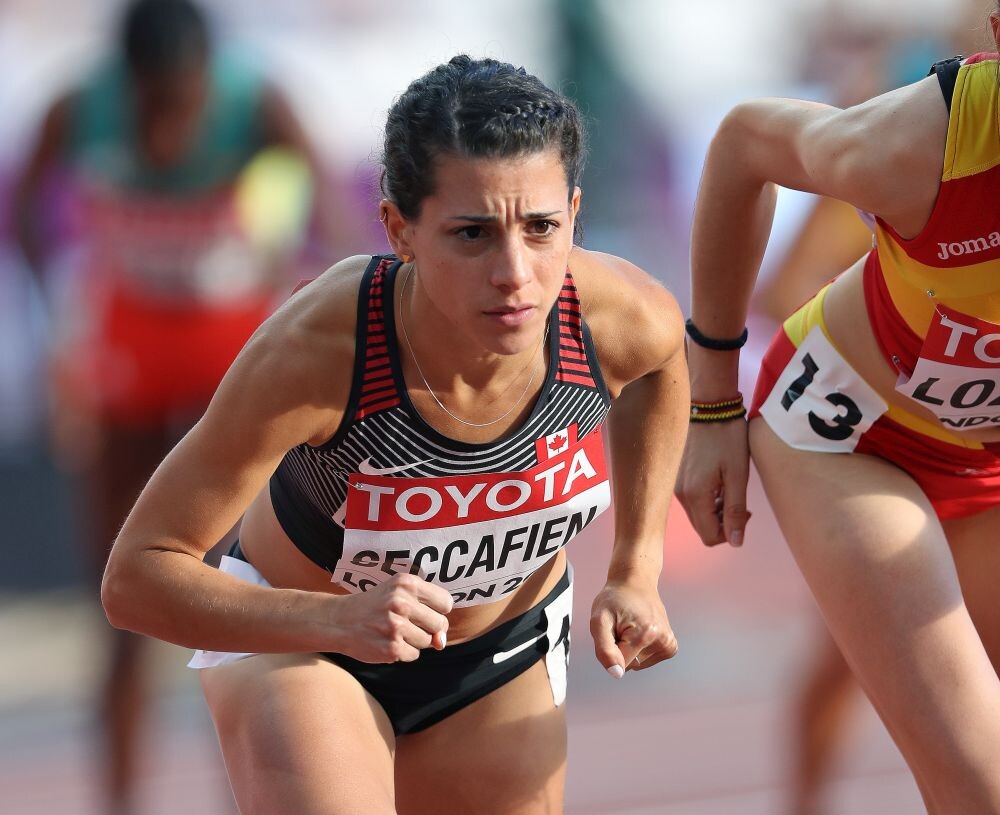
Seccafien told Canadian Running that she wants to be on the Canadian Olympic team for the marathon in Paris: “The Olympic standard [2:26:50] is the goal in Tokyo. I would not be running the marathon if my coach and I did not think it was possible.”
There were a lot of changes for Seccafien last year, who moved from Melbourne, Australia, to Portland, Ore., and back to Melbourne. She left Nike Bowerman Track Club in November 2023 after two years of training under coach Jerry Schumacher. She joined the group with fellow Canadian Lucia Stafford in November 2021 (who also subsequently left the club).
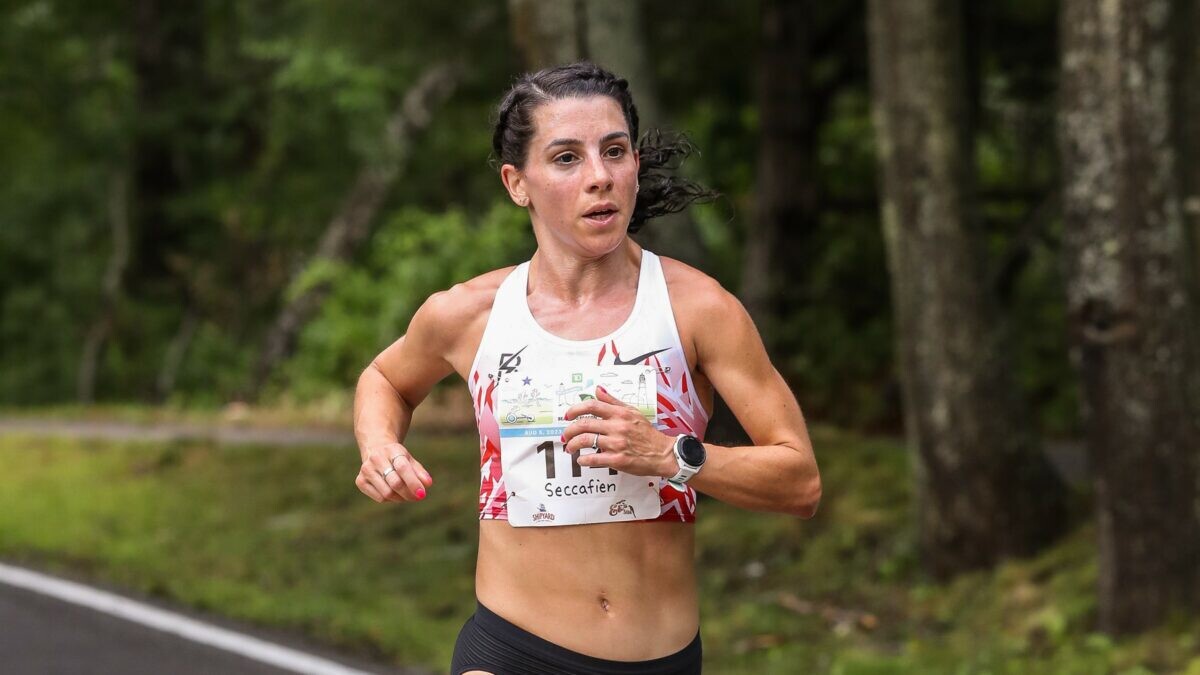
Seccafien says she left Bowerman on good terms. “It wasn’t anything with Jerry; I just did not have a community in Portland or Eugene,” she says. “My life was in Australia, and not in the U.S.” Seccafien is the ninth woman to leave Bowerman Track Club in the past two years, leaving the team with only two women on their roster, according to their website.
When asked about the downfall of the Bowerman team and the timeline around Shelby Houlihan’s doping suspension, Seccafien said that Gabriela DeBues-Stafford was the only athlete who left for that reason specifically: “No one else thought that way about Shelby,” she says. “Everyone in the club has been open with each other’s decision, and I think everyone left for many different reasons.”
“When I joined, I thought running the marathon there would work with Bowerman. Jerry doesn’t have time to coach a marathoner; you’d essentially be training on your own,” says Seccafien. Schumacher took a role with the Oregon Ducks group in Eugene, Ore. (two hours from Portland) while still coaching the Bowerman group. “It’s now a totally different environment than when I joined.”
Since returning to Melbourne, Seccafien has begun working remotely with Canadian physiologist and coach Trent Stellingwerff, who also coaches Olympians Natasha Wodak and DeBues-Stafford. “I wanted to find someone willing to coach me remotely and to give me some stability in my life again,” she says. “Trent calls the shots on mileage, and I just follow his plan. Our training is based more on intensity rather than miles.”
Seccafien says she now does most of her training on her own, with her partner, Jamie, occasionally joining her on the bike. “Like everyone, I’ve started doing double threshold workouts, and Jamie, who’s an exercise physiologist, will test my blood lactate.”
Seccafien told Canadian Running that training has not been easy. “There were a lot of lows. I felt like I had retired at times,” says Seccafien. “I could not put any load on my knee for four months to recover from my meniscus surgery… I could only swim, but could not kick my legs.”
She says it was great when she was finally able to run again, but shortly after, she got a stress fracture –another huge low. “Now, I’m just trying to stay consistent and take things as they come,” she says. Seccafien is seven weeks out from the 2024 Tokyo Marathon, where she will be in the elite field alongside Chicago and London marathon champ Sifan Hassan, whom Seccafien last ran against in the 5,000m final at the Tokyo Olympics (where Hassan won gold).
by Marley Dickinson
Login to leave a comment
Tokyo Marathon
The Tokyo Marathon is a world-renowned annual marathon held in Tokyo, Japan. As one of the prestigious Abbott World Marathon Majors, it attracts elite and amateur runners from around the globe. The race holds World Athletics Platinum Label status, recognizing its high competitive standards, top-tier organization, and international appeal. Sponsored by Tokyo Metro, the Tokyo Marathon has grown into one...
more...Shalane Flanagan’s Thai Quinoa Salad is a summer must-make
Shalane Flanagan has mastered the art of fueling on the fly. Flanagan, a four-time Olympian (twice in the marathon) and the 2017 New York City Marathon champion may be retired from professional competition, but she’s still a busy coach for Bowerman Track Club, a mom and co-author of three cookbooks with her friend and former teammate, Elyse Kopecki.
Flanagan has decades of experience in cooking and planning meals that both help her run fast and keep her healthy and energized. This recipe is easy to throw together or prep in advance. I love making a double batch of the dressing and freezing it for next time. While it’s perfect as-is, feel free to add whatever veggies or protein your family enjoys–throwing in a can of chickpeas and/or some chicken gives our household a protein boost when we make this one.
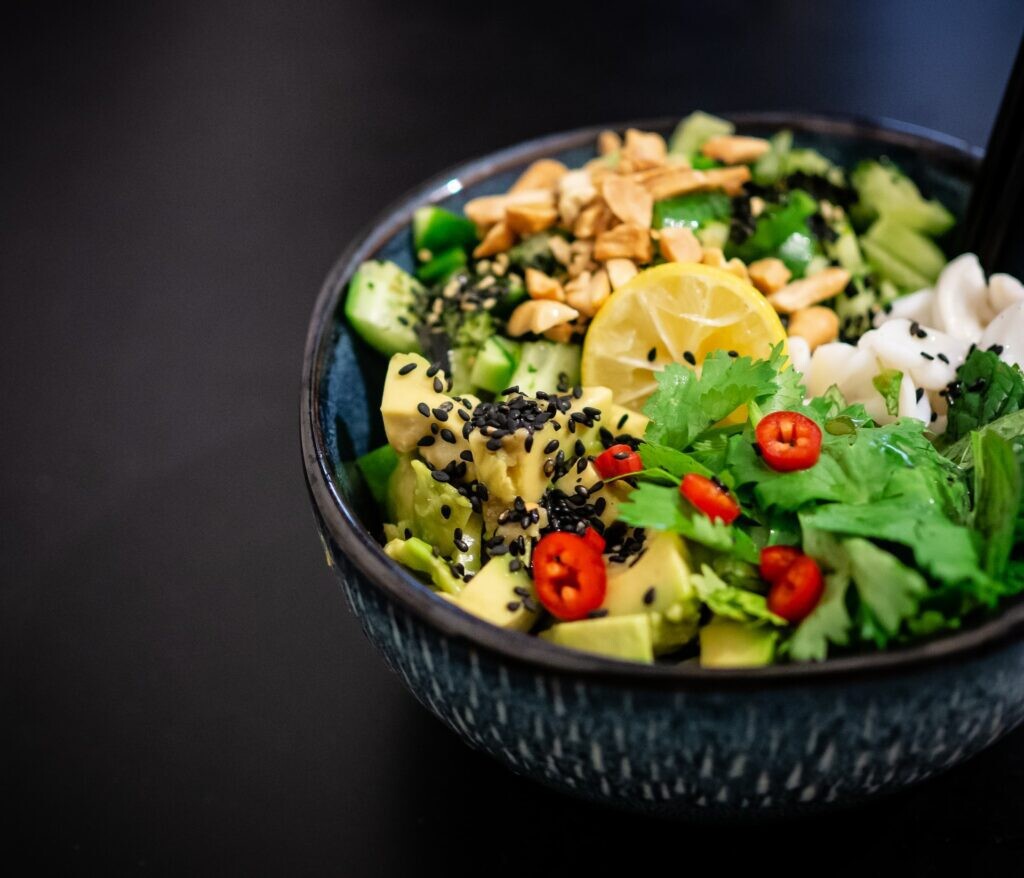
Shalane’s Thai Quinoa Salad
Ingredients
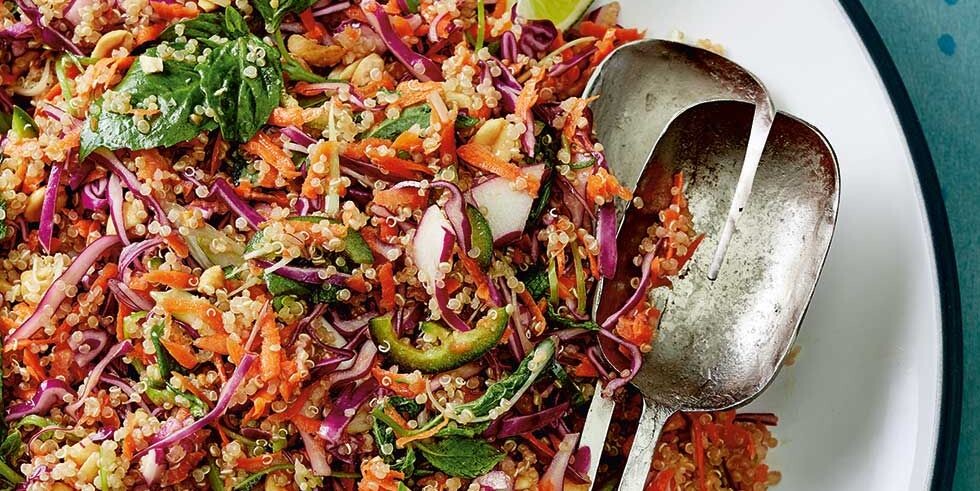
1 cup quinoa, rinsed and drained
2 cups grated carrots (about 2 large)
2 cups thinly sliced purple cabbage
3 green onions, white and green parts sliced
1 cup packed mint or cilantro leaves, chopped
1 cup packed basil leaves, chopped
1 jalapeño pepper, seeds removed and minced (optional)
1/2 cup chopped roasted peanuts
Dressing
1/4 cup extra-virgin olive oil
1/3 cup fresh lime juice
2 Tbsp honey or maple syrup
2 Tbsp soy sauce (tamari works as well)
1 Tbsp fish sauce (optional, remove to make the recipe vegan)
Directions
Cook your quinoa perfectly with Flanagan’s foolproof method: in a medium saucepan over high heat, bring 1 1/2 cups water to a boil with the quinoa. Reduce the heat to low and simmer, covered, for roughly 15 minutes or until all the water is absorbed. Fluff with a fork and transfer to a large salad bowl to cool.
Put the olive oil, lime juice, soy sauce or tamari, honey, and fish sauce in a glass jar and shake or stir until combined.
When the quinoa has cooled, add carrots, cabbage, onion, mint, basil, and pepper to the bowl, toss to combine. Add dressing and mix together. Top with the peanuts, and chill in the fridge for at least an hour before serving.
by Running Magazine
Login to leave a comment
2023 US Outdoor Track and Field Championships preview from Chris Chavez
Last night was the deadline for athletes to declare their event for the 2023 U.S. Outdoor Track and Field Championships, which will take place in Eugene from July 6-9. At USAs, athletes are allowed to enter multiple events and then make a decision about which event(s) they wish to contest once entries are in, which allows those who’ve achieved multiple qualifiers to be strategic about where they want to concentrate their efforts. The top three in each event who meet the qualifying standards for the World Athletics Championships will go on to represent the United States in Budapest in August.
Reigning World champions have a “bye” to the next year’s Worlds, which means the country they represent gets to send four athletes, not three. Similarly, reigning Diamond League and World Athletics Continental Tour champs earn a bye, but if there is both a World and other champion in the same event, their country still only gets to send one extra athlete.
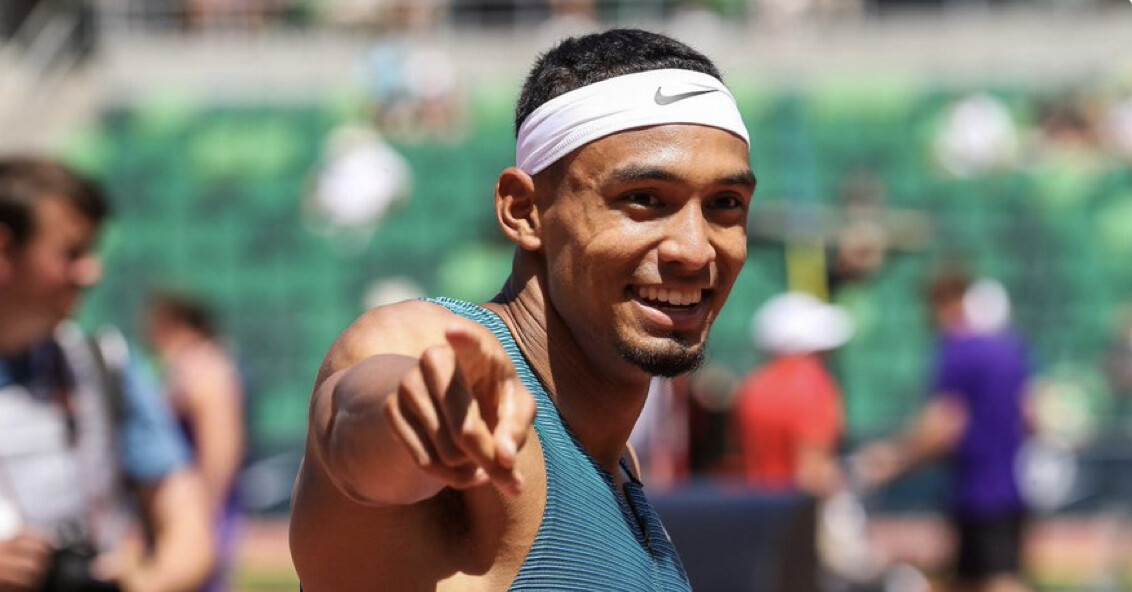
These complex rules lead many American World champions to make interesting choices about what events they wish to contest at USAs and how hard they want to push while still in the middle of the championship season.
MEN’S SPRINTS
– 100m world champion Fred Kerley has the bye to the world championships and will only run the 200m. Last year, he qualified for the World Championships in the 200m with a third place finish behind Noah Lyles and Erriyon Knighton. He injured his quad in the semifinal of the 200m and was unable to run the 4x100m relay for Team USA. Kerley has a season’s best of 19.92 from his win at the Doha Diamond League.
– 200m world champion Noah Lyles has the bye to the world championships and will only run the 100m. He ran a season's best of 9.95 in his outdoor opener in April. The last time he ran the 100m at a U.S. Championship, he finished seventh at the 2021 U.S. Olympic Trials final.
– 400m world champion Michael Norman is declared for the 100m and 200m at the U.S. Championships. He ran a wind-aided 10.02 (+3.0m/s wind) at the Mt. SAC Relays in April. He has not raced since a last place finish in the 200m at the Doha Diamond League in 20.65 on May 5.
WOMEN’S SPRINTS
– Sha’Carri Richardson is running the 100m and 200m. She is looking to qualify for her first World championship team. Her season’s best of 10.76 from her victory at the Doha Diamond League is the second-fastest performance in the world this year. Her season’s best of 22.07 from the Kip Keino Classic at altitude in Nairobi is No. 4 on the world list.
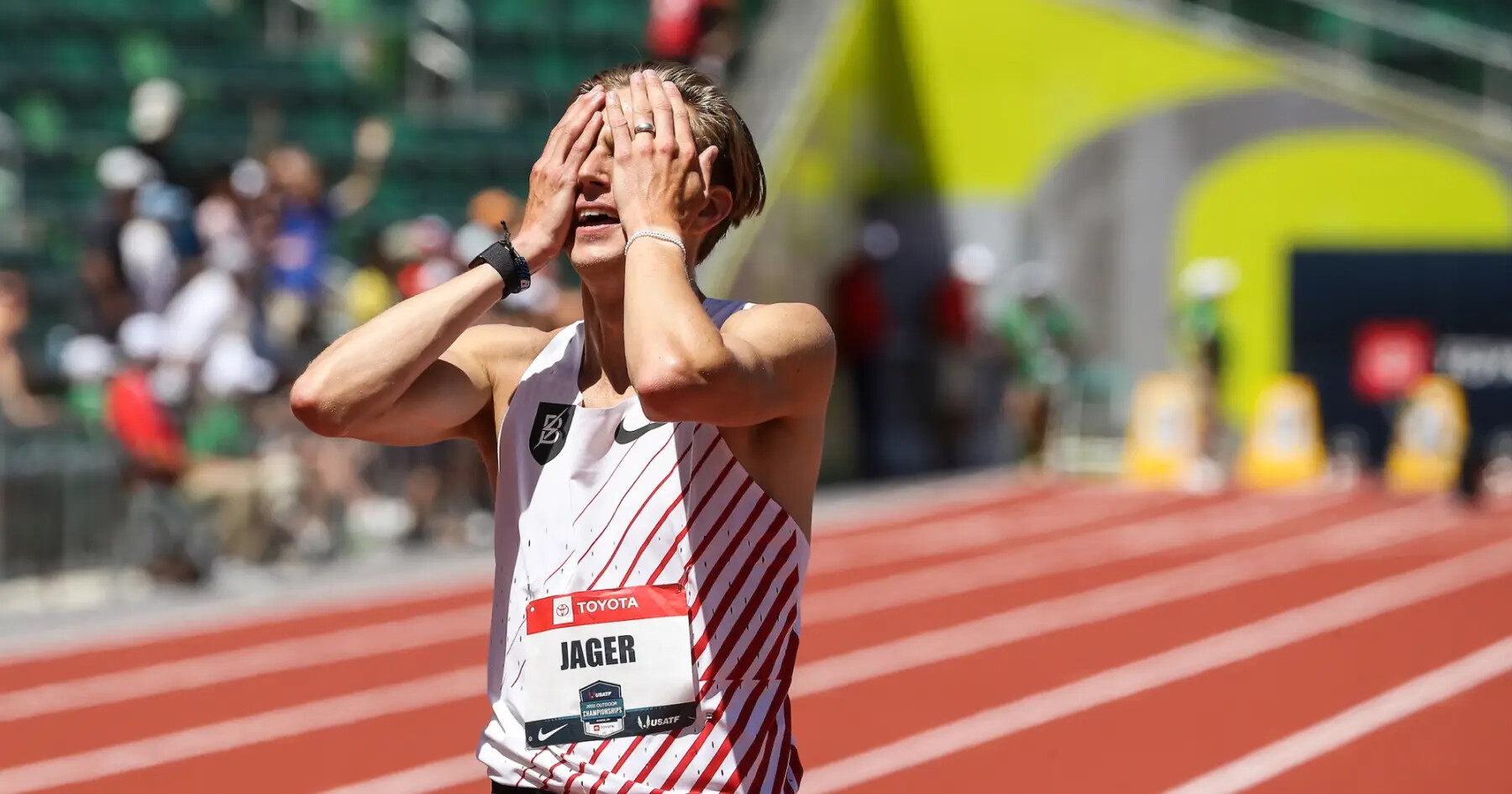
Only Gabby Thomas’ 22.05 from the Paris Diamond League is faster this year by an American woman. Richardson, the 2019 NCAA champion, attempted the double at USAs in both 2019 and 2022, where her highest finish was 8th in the 100m in 2019. She has yet to make a U.S. final in the 200m.
– Reigning U.S. champion Abby Steiner is only running the 200m despite qualifying in both the 100m and the 400m as well. She just ran her season’s best of 22.19 to win the NYC Grand Prix.
– As previously announced, 400m hurdles Olympic champion, World champion and world record holder Sydney McLaughlin-Levrone is running the flat 400m. She plans to make a decision after the U.S. Championships whether she will run the flat 400m (if she qualifies) or defend her 400m hurdles title in Budapest.
– NCAA record holder Britton Wilson, who ran 49.14 to become No. 4 on the U.S. all-time list, will only run the 400m and not the 400m hurdles. She hurdled at last year’s World championships and participated in the 4x400m relay.
MEN’S DISTANCE
– This year’s men’s steeplechase team should have a new look. 2016 Olympic silver medalist Evan Jager is not entered in the steeplechase. He has raced just once this outdoor season. Hillary Bor, the reigning U.S. champion who also owns the fastest steeplechase time by an American this year in 8:11.28, broke his foot earlier this spring and will miss the U.S. Championships. This is the first U.S. team he has missed since 2015. The top returner is Benard Keter, who made the Olympic team in 2021 and the World team in 2022, but he is only the fifth-fastest entrant by seed time.
– For the first time, 2021 U.S. 5000m champPaul Chelimo is entered in both the 5000m and the 10,000m. Chelimo, the 3x global medalist at 5000m, has typically only focused on the shorter event, but after his 27:12.73 performance at the Night of the 10,000m PBs in the U.K. earlier this season, he has decided to contest both events. He’s seeded No. 4 by qualifying time in both events behind Grant Fisher, Woody Kincaid, and Joe Klecker (all also double-entered).
WOMEN’S DISTANCE
– 800m Olympic and world champion Athing Mu entered the 1500m, as previously announced with coach Bobby Kersee. She has the bye to the world championships in the 800m. Her personal best of 4:16.06 is well outside the automatic standard of 4:05.00 and was achieved outside the qualifying window for the championships, but USATF rules allow for significant discretion in accepting entries from the Sports Committee chair.
– Josette Norris and On Athletics Club coach Dathan Ritzenhein have decided to focus solely on the 5000m. Norris ran 14:43.36 at Sound Running’s Track Fest in early May. That’s the second-fastest time by an American woman on the year behind her teammate and training partner Alicia Monson’s 14:34.88 at the Paris Diamond League. Monson is entered in both the 5000m and 10,000m after choosing to only contest the 10,000m last year.
– NC State’s NCAA record holder Katelyn Tuohy will only run the 5000m. Tuohy qualified for NCAAs in both the 1500m and the 5000m but ended up only running the 1500m after an uncharacteristically disappointing performance in the final.
– The Bowerman Track Club’s Elise Cranny has declared for the 1500m, 5000m and the 10,000m. The first round of the women’s 1500m is 19 minutes before the final of the 10,000m on Day 1 of the competition, so Cranny will likely scratch one or more events at a later point.
by Chris Chavez (Citius magazine)
Login to leave a comment
USATF Outdoor Championships
With an eye toward continuing the historic athletic success of 2022, USATF is pleased to announce competitive opportunities for its athletes to secure qualifying marks and prize money, including a new Grand Prix series, as they prepare for the 2023 World Athletics Championships in Budapest, Hungary.As announced a few months ago, the 2023 Indoor Championships in Nanjing, China have been...
more...Shalane Flanagan’s stir-fry recipe: a ‘choose your own adventure’ meal
Every household should have an easy, quick stir-fry to whip up on busy days, and Shalane Flanagan‘s recipe, packed with veggies of your choice, is versatile and easy to match the tastes you’re cooking for.
Flanagan, a four-time Olympian (twice in the marathon) and the 2017 New York City Marathon champion, may be retired from professional competition, but she’s still a busy coach for Bowerman Track Club, a mom, and co-author of three cookbooks with her former teammate and friend, Elyse Kopecki.

Flanagan says her family counts on a weekly stir-fry to use up what they have at home and suggests: “choose your own adventure, but aim for a range of colors to max out nutrition potential.”
Shalane and Elyse’s Eat the Rainbow Stir-Fry

Ingredients (marinade)
8 ounces skinless chicken, chopped
2 Tbsp soy sauce
1 Tbsp lime juice
2 Tbsp honey
1 Tbsp minced garlic and/or ginger
Veggies
2 Tbsp high-heat oil (like sesame, avocado or safflower oil)
1/2 large or 1 small onion, sliced
2 heaping cups chopped hard vegetables (broccoli, carrots, celery)
1 heaping cup sliced soft vegetables (snap peas, bell pepper, cabbage, box choy, mushrooms)
Directions
Place the chicken, soy sauce, lime juice and honey in a quart-size zipper bag and shake to combine. Leave out for 20 minutes to allow meat to marinate and come up to room temperature (for even more meat flavour, marinate overnight in the fridge).
Heat a wok or high-sided sauté pan over high heat. Add the oil, onion and hard vegetables. Cook, stirring frequently until the veggies begin to brown–about five minutes.
Turn the heat down to medium-high, add the soft vegetables, and sauté for about two minutes. Add the chicken with the marinade and sauté, stirring occasionally, until the chicken is cooked through, about five minutes.
Use a clean spoon to serve on top of brown rice or quinoa (or noodles) and drizzle with your favourite sauce, like sriracha or peanut sauce.
Flanagan’s tips: Prep all the veggies before frying, and chop veggies to similar sizes so that they cook evenly. Cook hard vegetables first, and moisture-rick ingredients last, and make sure your pan is really hot (and keep it hot). Don’t walk away: stir-frying means quick cooking over high heat with frequent stirring.
by Running Magazine
Login to leave a comment
Shalane Flanagan’s favorite post-run fall meal
The seasons are changing and long runs are getting chillier. U.S. Olympian Shalane Flanagan‘s superfood soup is packed with all the nutrition you want post-run, but with a taste that is full-on comfort food. You’ll want to make an extra batch to freeze and have on hand for busy nights.
Flanagan, a four-time Olympian (twice in the marathon) and the 2017 New York City Marathon champion, may be retired from professional competition, but she’s still a busy coach for Bowerman track club, a mom, and co-author of three cookbooks with her former teammate and friend, Elyse Kopecki.
To make this soup even more quickly, I use spinach instead of kale to add some greens; we top our individual bowls with baby spinach and stir it in (it cooks quickly in the hot soup). Chop everything up the night before, and you’ll have a warm, filling meal simmering in minutes.

Shalane’s superfood soup
Ingredients
2 Tbsp extra-virgin olive oil2 carrots, peeled and diced
2 celery stalks, diced
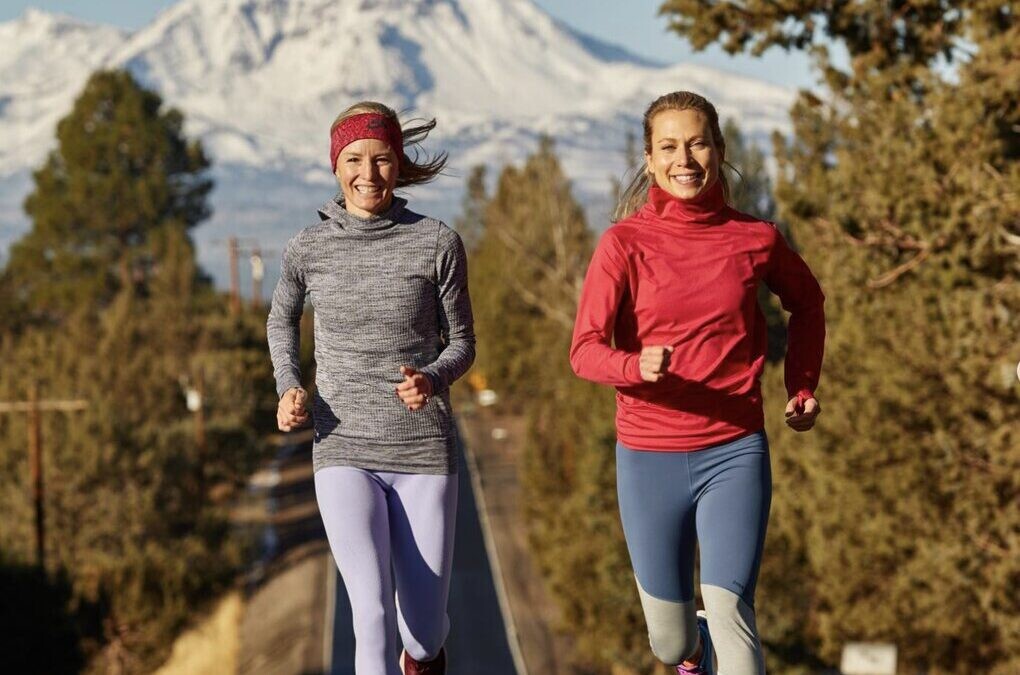
1 yellow onion, diced
1 sweet potato (yam), unpeeled, diced into 1/2 inch pieces
1 can (13.5 oz) unsweetened coconut milk
1 can (14.5 oz) diced tomatoes
2 tsp fine sea salt
2 Tbsp curry powder
1 cup chopped kale, stems removed (I used baby spinach)
1 can (15 oz) chickpeas (garbanzo beans)juice of 1 lime
Directions
Heat the oil in a large pot over medium-high heat. Add the carrots, celery, onion, and salt and cook, stirring occasionally, until softened but not brown–about five minutes. Add the curry powder and cook, stirring continuously, for 30 seconds, being careful not to let the spices brown.
Add five cups of water, sweet potato, coconut milk, tomatoes, and chickpeas to the pot. Bring to a boil, then reduce the heat, and simmer covered, stirring occasionally, until the sweet potatoes are soft (about 20 minutes). Be careful not to overcook.
Stir in the kale and simmer just until wilted. Turn off the heat and stir in 1 Tbsp of the lime juice. Taste and add more lime juice and salt, if needed.
by Keeley Milne
Login to leave a comment
An Olympian, a burrito, a failed drug test: Former ASU runner Shelby Houlihan looks to rebound after doping ban
On a cloudy, characteristically cool December night in Beaverton, Oregon, Shelby Houlihan, the American record holder in the 1,500 and 5,000 meters, accompanied Courtney Frerichs, the Olympic silver medalist in the steeplechase, and Frerichs’ sister, Lindsey, to an authentic Mexican food truck near her home.
The three ordered carne asada burritos and returned to Houlihan’s house to eat and watch “The Bachelorette.”
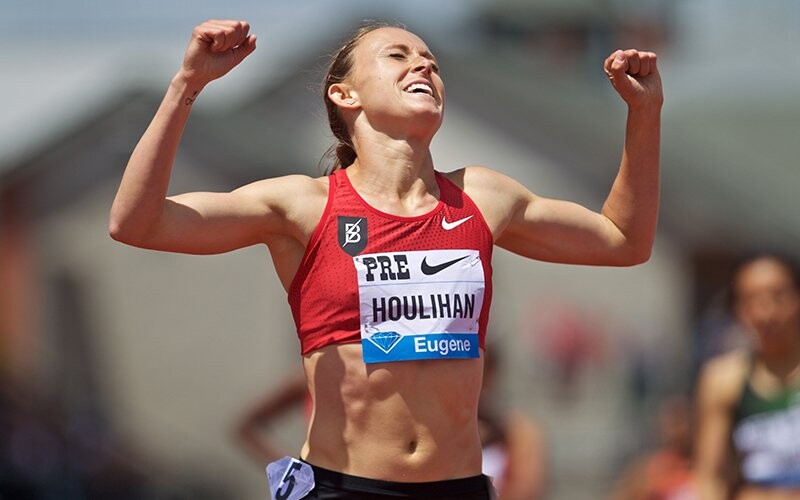
The next morning, on Dec. 15, 2020, the former Arizona State standout was given a random drug test. Weeks later, in mid-January, Houlihan was notified in an email from the Athletics Integrity Unit (AIU) that her urine sample revealed the presence of 19-norandrosterone (19-NA), a metabolite produced by the substance nandrolone – an anabolic steroid prohibited by the World Anti-Doping Agency (WADA).
She was issued a provisional suspension, which set off a cascade of events that led to a four-year ban, knocked her out of the U.S. Olympic Trials leading up to the Tokyo Olympics and will bar her from competing until January 2025 when she will be almost 32.
It is, Houlihan said, “an athlete’s worst nightmare.”
Houlihan, 29, has lost the financial support of Nike. She also saw former teammate Gabriela DeBues-Stafford leave the club rather than risk sanctions because of the Bowerman Track Club continued relationship with Houlihan.
Houlihan said her initial response to the positive test was “shock and disbelief.” She wondered, “How am I going to explain (the presence of a banned substance) when I don’t even know where it came from myself?”
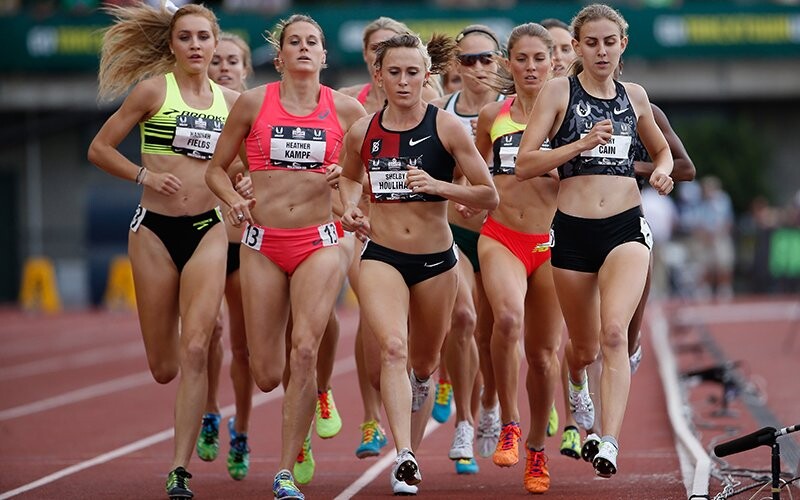
Houlihan was at a high-altitude training camp in Flagstaff when she received the email.
“I opened up my phone to an email that was urgent, confidential and … it was this lab report of scientific words that I could not read,” Houlihan told Cronkite News.
The Sioux City, Iowa, native said she read the email over about 10 times and had to Google which substance triggered the positive test, because she had never heard of nandrolone.
Then she called Jerry Schumacher, her coach at BTC, the professional Nike club that Houlihan had trained with since graduating from ASU in 2015.
“I’m just sobbing and trying to tell him what’s going on, but crying too hard,” Houlihan said.
The long road
Today, Houlihan lives alone in Portland and said she has relied on her former BTC teammates, her boyfriend and her family for support. She does odd jobs, including food delivery, and continues to train with the hope of returning to competition at an elite level.
It is not a situation she envisioned growing up in Sioux City, Iowa, surrounded by runners, including her mother, Connie, and her uncle, Bob Prince, who competed in college.
After winning several state titles at Sioux City East High School, Houlihan continued her success at Arizona State, where she won the NCAA 1,500 meters in 2014 and finished as a 12-time All-American, the second-most in program history.
She holds five school records: the outdoor 800 and 1,500 meters, and the indoor 800, mile and 3,000.
That success set the stage for 2016 Summer Olympics, where she finished 11th in the 5,000 meters and was the highest-placing U.S. runner in the race.
She also finished fourth in the 1,500 meters and set the American record at the 2019 World Outdoor Championships.
More Olympic success felt inevitable.
Shock and disbelief
Elise Cranny, a close friend and former Bowerman teammate of Houlihan’s, remembers that news of the positive test “didn’t really sink in” at first.
“I came back to the house, and I was like, ‘Man, something is very off … something is not right,’” said Cranny, who was living with Houlihan during the camp. “I think the initial reaction from everyone was disbelief, and like, ‘Oh, this is something that’s going to get figured out’ because it’s seriously wrong.”
Schumacher and Houlihan called attorney Paul Greene to “just try to figure out a game plan” and investigate further what could have happened.
The first step was a pregnancy test because nandrolone can be found in pregnant women. After she determined she wasn’t pregnant, Houlihan compiled a log of everything she ate the week before the test. She scoured text messages, bank statements, food receipts and iPhone locations to determine everything she had consumed.
“I was able to piece it together pretty well,” Houlihan said. “And then, ultimately, we just felt like the food truck the night before had to be the most likely source.”
Houlihan wouldn’t name the establishment that served her the burrito because she doesn’t “want to mess with any lawsuit.” However, she isn’t blaming the food truck.
“I don’t think they did anything wrong,” Houlihan said. “I think it just kind of happened.”
While Houlihan and her BTC teammates frequently ate at that food truck, she recalls that she received her order more quickly than usual, and the foil-wrapped burrito was unlabeled.
Houlihan believes she may have been mistakenly given a burrito containing offal (pig organ meat), which can contain nandrolone.
She remembers the meat in the burrito being finely chopped and that grease pooled in the foil. She said it seemed more rich than the burritos she had eaten there before, so much so that she was unable to finish it despite being very hungry after eating little else that day.
“We knew (nandrolone) can be found in pig offal, and we knew that I ate at a food truck that served pig offal 10 hours before (the test),” she said. “And we knew that when you ingest it, it can be at its highest levels 10 hours after ingestion, and that’s the exact kind of time frame that I had eaten that.
“And so as unlikely as all of those things were, it just seemed like the only thing that we could say, ‘All right, this makes some sense,’ and that’s really the only thing that we had to go on.”
Houlihan was the only one among the three who ate at the food truck who was tested.
A search for answers
She provided a hair sample that was examined by a toxicologist and it showed no trace of nandrolone. She also passed a polygraph examination that concluded she was not lying when asked if, at any time, she knowingly or intentionally ingested nandrolone.
Houlihan’s urine tests taken Nov. 22, 2020, Jan. 23, 2021, and Feb. 4, 2021– before and after the positive test – all were negative. She also had her vitamins and supplements analyzed by a lab.
The previous urine tests and the lab report convinced Houlihan that it’s unlikely the positive result was triggered by a supplement or vitamin she was taking. She is still being randomly tested and all of her ensuing tests have come back clean.
She believes that given “the information that we have right now, (the burrito) is the only thing that kind of makes any type of logical sense.”
Houlihan hired a private investigator to trace its sources of meat, but the effort was unsuccessful.
The private investigator found that the food truck owner purchased 30 pounds of pork stomach in a frozen batch from Iowa Beef Processors in September of 2020. However, the owner had no box or label from the meat used in December that could be traced to its processing plant.
And the investigator couldn’t determine whether the owner used pork from a castrated or uncastrated boar. Houlihan’s attorney argued it must have been uncastrated boar meat that triggered her positive test.
When the AIU officially charged Houlihan four months later, the U.S. Olympic Trials, scheduled for June 18-27, were fast approaching. Houlihan decided to go straight to the Swiss-based Court of Arbitration for Sport (CAS) to avoid missing the trials.
The CAS rejected Houlihan’s explanation of what happened and banned her from the sport for four years on June 11, 2021.
Houlihan’s ban lasts until Jan. 13, 2025. She missed last summer’s Tokyo Olympics, the 2022 World Athletics Championships in Oregon, and she’ll miss next year’s World Athletics Championships in Budapest and the 2024 Paris Olympics.
The CAS’s three-member panel found that Houlihan’s “explanation that the 19-NA in her sample resulted from her consumption of the meat of an uncastrated boar simply cannot be accepted. The explanation presupposes a cascade of factual and scientific improbabilities, which means that its composite probability is (very) close to zero.”
Lacking evidence
The panel said that Houlihan failed to prove that the burrito she ate contained boar offal.
“First, the athlete would have had to have been served pork at the food truck despite ordering beef,” the court said. “Second, the pork consumed would not have been ‘normal’ pork product ordered by the food truck, but uncastrated boar. Third, uncastrated boar enters the food chain through completely different channels than pork.”
The panel said that the polygraph result and Houlihan’s hair sample were not “sufficient for the Athlete to rebut the presumption that the ADRV (anti-doping rule violation) was intentional.”
The court also said the concentration of nandrolone in Houlihan’s urine was “2-3 times higher than the highest values reported in the scientific literature after the ingestion of much more significant quantities of meat of mature (uncastrated) boar.”
On June 14, 2021, Houlihan publicly announced she tested positive for nandrolone and would not be competing at the upcoming Olympic Trials. Because Houlihan hadn’t been racing, many thought she was battling injuries instead of serving a provisional suspension.
“And at the end of the day, the panel didn’t think it was probable enough, which is unfortunate,” Houlihan said. “But yeah, I mean, that’s the only thing that we really have as an explanation. I hope at some point, maybe some more information pops up, and maybe it’s something else entirely. I don’t know. But it would be great to have an answer at some point.”
In May, Houlihan appealed the suspension to the Swiss Federal Tribunal.
She lost. It was her last opportunity.
The hardest part to watch, Crany said, “is her getting renewed hope through the appeal process or through different things, and then seeing her kind of have that life back in her eyes again, just for it to come crashing down.”
At one point, Houlihan was offered a reduced sentence – a three-year ban instead of four years – if she admitted guilt.
She refused.
“I never even considered that to be an option, because I knew I didn’t take (nandrolone) intentionally,” Houlihan said. “And I wasn’t going to admit to something that I didn’t do. At least I fought for myself and tried to do the right thing. But taking accountability for something that I didn’t do, it’s definitely not on the table for me.”
Houlihan thinks the system is flawed because the doping agency never had to prove she took a banned substance.
“There was obviously something in my system and I understand that I have a responsibility for what’s in my body,” Houlihan said. “But I think knowing that I never intentionally put it there and (I’m) still having to serve a four-year ban is definitely a flaw in the system. I don’t feel like they did their due diligence in trying to figure out what the truth was. It was just at the end of the day I couldn’t, beyond a reasonable doubt, prove where it came from.”
Houlihan said she believes the burden of proof should be shifted and “split 50-50 between the doping agency and the athlete.” While she believes that she should have to prove what triggered the positive test, she also believes the doping agency should have to prove that she intentionally cheated.
“Just even the playing field a little bit,” Houlihan said. “If you’ve ingested something, it’s almost impossible to try to figure out where that is. Because you’re getting notified a month or two later, I don’t have the source anymore. So it’s just a really impossible task to try to figure out. And I think it’s pretty flawed that if you can’t figure it out, it’s just an automatic four-year ban, and you’re treated like a doper.”
A new normal
Houlihan’s life today includes strong family and friend support.
Cranny said she had a lot of conversations with BTC teammates to make sure Houlihan felt supported.
“What you initially think of is her mental health and someone’s life being completely ripped out from under them and not being able to do what you love to do and what she feels like she’s been born and made to do,” Cranny said. “In the beginning, you worry about her being by herself, and making sure that she has people around her and she feels supported.”
Shelby’s mother, Connie Houlihan, who lives in Phoenix, said she is worried about the mental toll on her daughter.
“You’re afraid of suicide,” Connie Houlihan said. “You know, everything’s a possibility … with depression and with something that critical that they took away from her. You don’t know. Of course, you’re scared to death.”
Connie said a couple of Shelby’s sisters went to be with Shelby right away because they didn’t want her alone. Shelby wouldn’t let her parents come visit, however, because, Connie said, “she was so overcome.”
“I think, if we would have flown there right away, she would have … this is the way she explained it to me, ‘That it would have made it all too real.’
“She was really struggling dealing with it,” Connie said. “She was crying all the time. But I think that was the hardest part for us that we couldn’t just jump on a plane and go and be with her because we respected her decision.”
Chloe Houlihan, one of Shelby’s five sisters, said her sister remained “very resilient through everything.” She said she has tried to be someone Shelby “can talk to when she’s kind of struggling.”
Shelby no longer trains with her BTC teammates, something which Chloe said has been difficult and “a little bit isolating” for her sister.
Until May, Houlihan was paying Schumacher to coach her as an independent athlete, but she confirmed she’s now training entirely by herself – using six years of past training logs as a reference.
“We just felt it was best to maybe cut ties for a little bit,” Houlihan said. “I think there was just a lot of publicity going on around me and him still working together. There was just a lot of scrutiny, I think.”
Some of that publicity and scrutiny was fueled by DeBues-Stafford’s decision to leave BTC because of Houlihan.
A two-time Canadian Olympian who placed fifth in the 1,500 at the Tokyo Olympics, DeBues-Stafford announced in April she left BTC due to Houlihan’s continued ban involvement with BTC at the time.
“Fundamentally, I left the Bowerman Track Club because, despite my best efforts, I was unable to verify that the club was not in violation of World Athletics anti-doping regulations,” DeBues-Stafford said in an interview conducted via email.
DeBues-Stafford was concerned that Houlihan was working out “under the guidance of” the three BTC coaches (Schumacher, Shalane Flanagan and Pascal Dobert) at the same location and times that other BTC athletes were working out while under the supervision of the same coaches.
“While we never did a rep together, there was still what felt to me like an unnecessarily risky proximity between both men’s and women’s teams and an athlete serving a ban,” DeBues-Stafford said.
According to DeBues-Stafford, Houlihan would also use the private gym – built at Schumacher’s residence for BTC athletes to use – at the same time BTC athletes were there under staff supervision.
“Shelby would drive to the Nike campus up to four times a week at the team’s regular time and the starting point for our regular daily runs together so she could run with us,” DeBues-Stafford said. “If she arrived before us, she would wait for BTC athletes at the meeting spot to see if any BTC athletes arrived so she could run with us. These sometimes included long runs. She also ran with the team on a regular basis at altitude camp in Flagstaff.”
Houlihan said she and her attorney inquired about the rules of her ban and were told that she couldn’t go to any practices or work out with anyone on the team, but if she happened to bump into them and they were running at the same place, then she could run with them.
“My attempts to discuss my concerns with team staff were rebuffed, as were the earlier and more sustained efforts of other teammates,” DeBues-Stafford said.
BTC did not receive independent legal advice on the issue, DeBues-Stafford said. She also said Houlihan shared accommodations with a full-time member of BTC staff during the Flagstaff camp, and those accommodations were used for organized BTC athlete support activities.
“When I asked if Shelby’s lawyer had explicitly asked the AIU about her using the same gym as BTC and about how to handle the altitude trip, I did not get a clear response,” DeBues-Stafford said.
DeBues-Stafford said she “independently sought answers,” and reached out to an anti-doping organization to verify that BTC’s collective behavior was within the rules and that there was no liability on anyone other than Houlihan.
According to DeBues-Stafford, “the anti-doping organization could not guarantee that the actions of BTC and Shelby did not constitute a violation, and could not guarantee that other athletes and support staff couldn’t face repercussions either.”
She said the anti-doping agency cited two rules in the World Anti-Doping code and advised her to leave BTC and submit an official anonymous tip to the AIU.
A trying time
While Schumacher and some of Houlihan’s other teammates knew about her positive test in January of 2021, DeBues-Stafford did not learn about Houlihan’s positive test until a couple of days before the team publicly announced the ban about six months later.
“Learning this news in mid-June almost derailed my Olympics,” DeBues-Stafford wrote in an Instagram post in April. “It was a small miracle that I showed up in Tokyo in shape to run sub-four (minutes) twice in 48 hours and place fifth.”
Houlihan said she was “surprised” and felt “blindsided and hurt and confused” by DeBues-Stafford’s social media posts because DeBues-Stafford had not told her about her concerns.
“I never knew that that was a problem for her,” Houlihan said. “And I’m not sure why she didn’t reach out to me. I reached out to her after I read her posts.”
Houlihan said she apologized to DeBues-Stafford for being affected by her situation.
“I think she just felt like she didn’t want to add to what I was going through by bringing it to me, which I don’t agree with, personally,” Houlihan said. “I felt like I would have rather had that conversation with her and I would have been more than glad to try to help that situation for her in any way, instead of what ended up happening. I think that was a lot worse – what ended up happening – than her just coming and talking to me about it.”
DeBues-Stafford has since moved to Victoria, B.C. and is now coached by Trent and Hilary Stellingwerff.
“When I told Jerry (Schumacher) I was leaving BTC due to the lack of separation between Shelby and the group, he asked if I really wanted to leave, given he was thinking of possibly no longer coaching Shelby if she lost her appeal at the Swiss Federal Tribunal,” Debues-Stafford said.
Debues-Stafford said Houlihan was still driving to the Nike campus and running with BTC when Debues-Stafford left Portland on March 31.
“Growing fear over the team potentially breaking rules, coupled with frustration at the lack of action by the team left me in an awful and unsustainable headspace,” DeBues-Stafford said. “I left altitude camp early at the end of February to get some breathing space and made my decision to leave the team.”
A powerful influence
Cranny said she misses running with Houlihan and credits her for pushing her to succeed.
“I think of her all the time when I’m racing now,” Cranny said. “She’s a huge reason why I feel like I am where I am right now in my own running. She just really opened my eyes to the importance of not limiting yourself and putting yourself in it.”
Although BTC could look a lot different, Houlihan would still like to eventually come back to the group once her ban is up.
“I definitely would like to rejoin Bowerman,” Houlihan said. “That’s like my family, basically. I’ve been a part of that group since I went pro in 2015 and I know those athletes so well. And I know that that training environment is great for me.”
Cranny also wants Houlihan to rejoin BTC and said she can’t picture her former teammate anywhere else
“It feels like this is her family,” Cranny said. “I feel like everyone here is really supportive of her, really close friends with her. So I hope (she rejoins BTC). That’s something that we’ve definitely talked about as a team is wanting to work out with her again once the ban is up.”
When asked if she thinks she can still compete at the elite level once the ban is up, Houlihan said, “I guess that’s one thing that we’re just gonna have to find out.”
Houlihan is no longer a member of BTC nor being paid by Nike. She spent $250,000 in legal fees fighting her ban without any financial support from the Beaverton-based shoe and apparel giant.
“They said that they support me, and they believe in me, but as far as financially, I haven’t really received any support from them in that way,” Houlihan said.
Houlihan lost her six-figure professional contract with Nike and hasn’t had a paycheck in over a year. Her Nike deal also gave her the opportunity to earn performance-based bonuses on top of her base compensation, income that is also gone.
Houlihan’s mom called the entire process “an injustice” and said it wouldn’t make sense for her daughter to jeopardize her Nike contract by doping.
“Why would somebody with a contract that she had and the money that she was making, why would she cheat?” Connie said. “She had a contract (with Nike) through the (Tokyo and Paris) Olympics like, why would you cheat?”
Houlihan said Nike hasn’t offered her a job, either.
“I’ve been doing some food delivery things like DoorDash and stuff, just to try to make a little money on the side, but yeah, just trying to get by.”
Houlihan continues to train but admits it is difficult.“It’s been really challenging, to be honest,” Houlihan said.
As she trains alone, without her former coaches and teammates for support and motivation, Houlihan said she sometimes stops halfway through a workout or doesn’t always finish it at all. She finds it more difficult to hit her targeted times.
“I think it’s easy to do that when I’m having a great time and I’m having fun, and I’m finding joy in running,” Houlihan said. “But a lot of the things that make it fun aren’t really there for me right now.”
by David Veenstra (Cronkite News)
Login to leave a comment
Grant Fisher sets new America 5000m record
In the latest installment in one of the greatest seasons ever by an American distance runner, Grant Fisher ran 12:46.96 at the Memorial Van Damme Diamond League meet in Brussels on Friday to smash Bernard Lagat’s 11-year-old American 5,000-meter record of 12:53.60. Fisher was also in contention for his first Diamond League victory with 150 meters to go but had to settle for second as Kenya’s Jacob Krop, the Worlds silver medallist, pulled away to win in a world leading 12:45.71 (#6 all-time).
Fisher had near-perfect conditions to break the record. The temperature (low-70s) and wind (6 mph) were fine and wavelight technology was in play, but the most important ingredient was a trio of opponents committed to pushing the pace once the pacemakers dropped: Ethiopia’s Yomif Kejelcha and Kenyans Krop and Daniel Ebenyo.

Kejelcha hit 3k in the lead at 7:41.74 (12:49 pace), by which point the four leaders had begun to separate. The gap between those four and the rest of the pack would only continue to grow as Krop took the lead with 1700 meters to go and kept his foot on the gas. Fisher, seeing Krop’s eagerness, was content to sit at the back of the group of four and get towed along to a fast time.

Just before three laps to go, Fisher went past a fading Kejelcha (who would end up dropping out) and moved into third. With a little bit more than 500 to go, a gap started to open up between Krop and Ebenyo and Fisher showed he had more in him as he went past Ebenyo and latched on to Krop. It was now a two-man affair.
Krop was keeping the pace scorching hot as the 4th to last lap was 61.43, the 3rd to last was 61.52 and the penultimate lap was 61.37. At the bell (11:47.9), it was clear Lagat’s American record was history. How fast could they go and who was going to emerge as the winner?
Fisher was ready to put up a fight but he was looking like a car with its engine maxxed out while Krop still looked incredibly smooth. Ultimately Krop broke Fisher with 100m to go to cap a 57.75 final lap (unofficially we had it 29.68, 28.06).
Fisher sprinted it in to finish just behind and break Bowerman Track Club Moh Ahmed’s 12:47.20 North American record in addition to obliterating Lagat’s AR. After running 12:53.73 for 5,000 indoors in February, 26:33.84 for 10,000 in March, and 7:28.48 for 3,000 in August, Fisher’s 12:46.96 tonight gives him four American records in a 2022 season that will go down as a year for the ages in the annals of American distance running.
by Let’s Run
Login to leave a comment
Shalane Flanagan takes coaching role at University of Oregon
U.S. Olympic medallist and 2017 New York City Marathon champion Shalane Flanagan announced on her social media that she’ll be joining the University of Oregon coaching staff as an assistant coach to help lead the team’s distance program.
Since 2019, Flanagan has been an assistant coach for the Nike Bowerman Track Club alongside Jerry Schumacher, who was recently named head coach of Oregon’s track and field program.
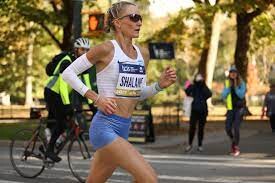
During her career and guidance, Flanagan has been part of the emergence of the Bowerman Track Club, which is considered one of the top running groups in North America.
Flanagan joined Bowerman Track Club in 2009 and made two U.S. Olympic teams in the marathon (2012 and 2016). In 2012, Flanagan finished 10th and in Rio 2016, she finished sixth in 2:25:26.
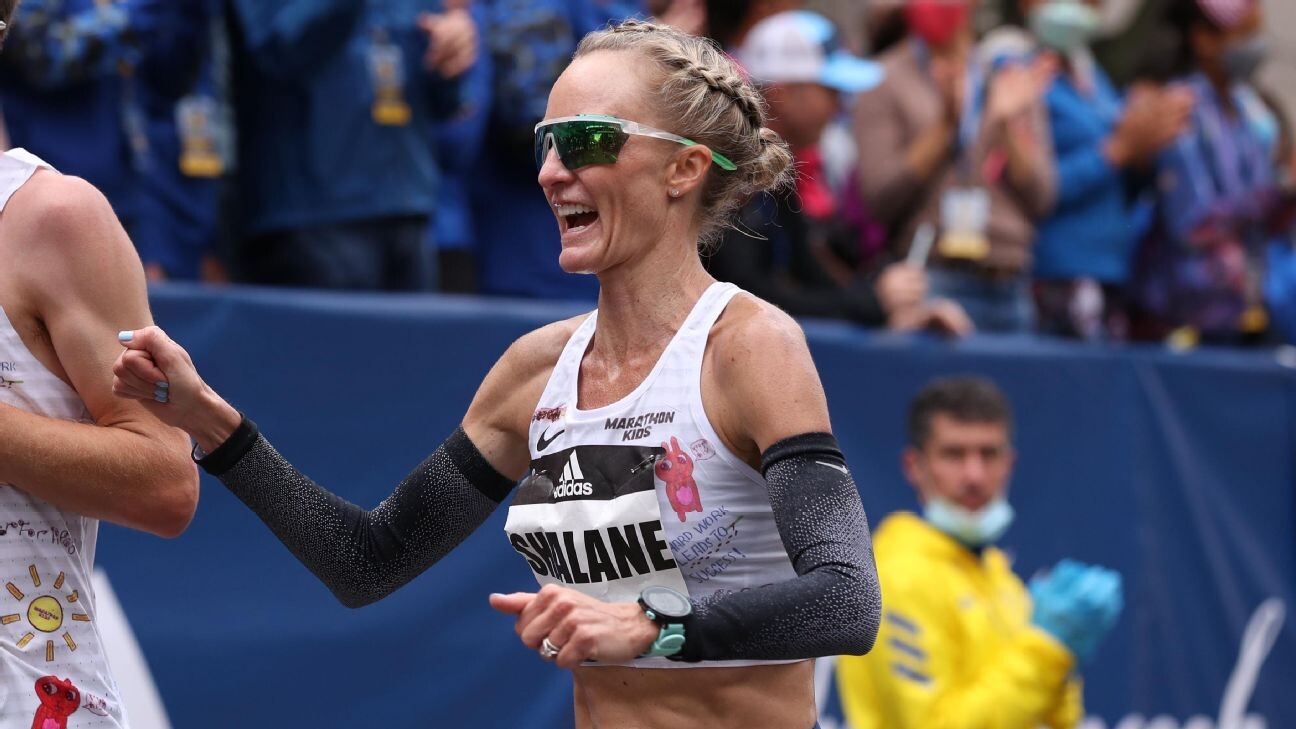
In 2017, Flanagan ended a 40-year winless drought for American women at the New York City Marathon by winning the prestigious event.
Flanagan made her Olympic debut in 2004 when she was 23, and returned in 2008 to win a silver medal in the 10,000m. Flanagan also has a bronze medal to her credit from the 2011 IAAF World Cross Country Championships in Spain.
Flanagan, now 41, is an 18-time U.S. champion with six titles in each discipline (track, road and XC). She won two of her 18 titles at the Historic Hayward Field in Eugene, Ore, which is the training ground for the University of Oregon track and field program.
In 2019, she announced her retirement from running but then paused her retirement in 2021 to complete all six Abbott Marathon Majors in seven weeks. She ended up finishing all six races in under three hours.
by Marley Dickinson
Login to leave a comment
Shalane Flanagan’s strawberry-rhubarb muffins are the ideal summer snack, Grab one of these muffins in the morning and head out for a run
Hot summer days combined with warm-weather running means our household is always striving for the quickest, most simple meal prep possible. We try to keep some of Shalane Flanagan and Elyse Kopecki’s superhero muffins in our freezer at all times: they are an ideal grab-and-run breakfast or snack (or both!).
Four-time Olympic marathoner Flanagan may be retired from professional competition, but she’s still a busy coach for Bowerman track club, a mom, and co-author of three cookbooks with former teammate and friend Kopecki. Their latest, Rise and Run, had me hooked with its tips for creating morning rituals and weekly meal plans, alongside recipes chock-full of nutrients to get your day kick-started. These muffins are easy to make gluten-free (simply use certified gluten-free oats) and vegetarian.
Strawberry-Rhubarb Superhero Muffins
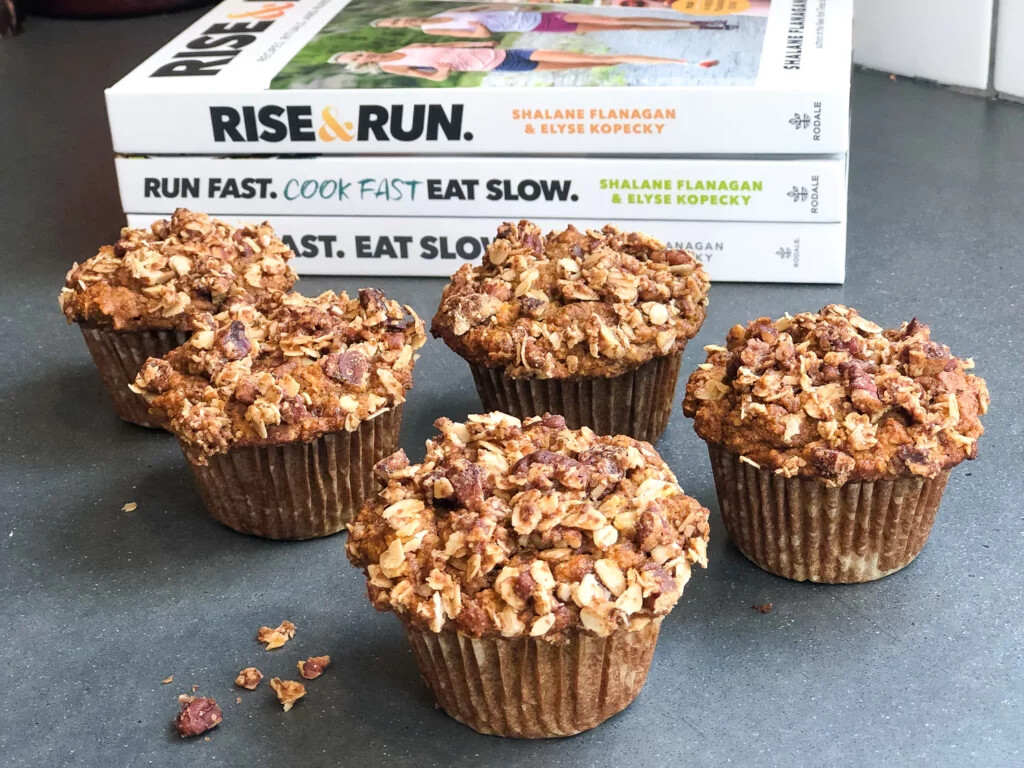
Ingredients
2 cups hazelnut flour*

1 1/2 cups rolled oats
1 tsp baking soda
1/2 tsp fine sea salt
3 eggs
1/3 cup maple syrup
4 Tbsp (1/2 stick) unsalted butter or 1/2 cup coconut oil, melted
1 tsp vanilla extract
1 1/2 cups chopped fresh strawberries
1 cup chopped rhubarb (about one stalk)
*you can substitute almond flour or almond meal if you prefer
Directions
Arrange a rack in the center of the oven and preheat the oven to 350°F. Line a 12-cup standard muffin tin with paper muffin cups.
In a large bowl, combine the hazelnut flour, oats, baking soda, salt, and nutmeg.
In a separate bowl, whisk together the eggs, maple syrup, melted butter, and vanilla. Add the wet ingredients to the dry ingredients and mix until just combined. Fold in the strawberries and rhubarb. The batter will be thick.
Spoon the batter into the muffin cups, filling each to the brim. Bake until the muffins are nicely browned on top and a toothpick inserted in the centre of a muffin comes out clean. 30 to 35 minutes for large muffins or 25 minutes for mini muffins.
Store leftover muffins in an airtight container in the fridge for up to one week, or in the freezer for up to three months. Reheat in the oven at 300 F (148 C) for 10 minutes or microwave on low power for 30 seconds.
by Running Magazine
Login to leave a comment
Here’s How the U.S.’s 5,000-Meter World Finalists Handle Excessive Heat on Race Day
Racing in hot weather can be daunting. Utilize these pro tips from Elise Cranny, Karissa Schweizer, and Emily Infeld to better prepare yourself for the next scorcher.
If you’ve ever raced in the summer, then you know how difficult it is to be underneath the beating sun for too long. Heat stroke, sunburn, and dehydration are legitimate dangers from overexposure. But maybe you signed up for a race that starts in the middle of a summer day. Maybe you’re running a destination marathon in a hotter climate. Perhaps you’re even attempting an ultramarathon, like Badwater 135, which takes place in Death Valley. You want to race, but you also want to be safe.
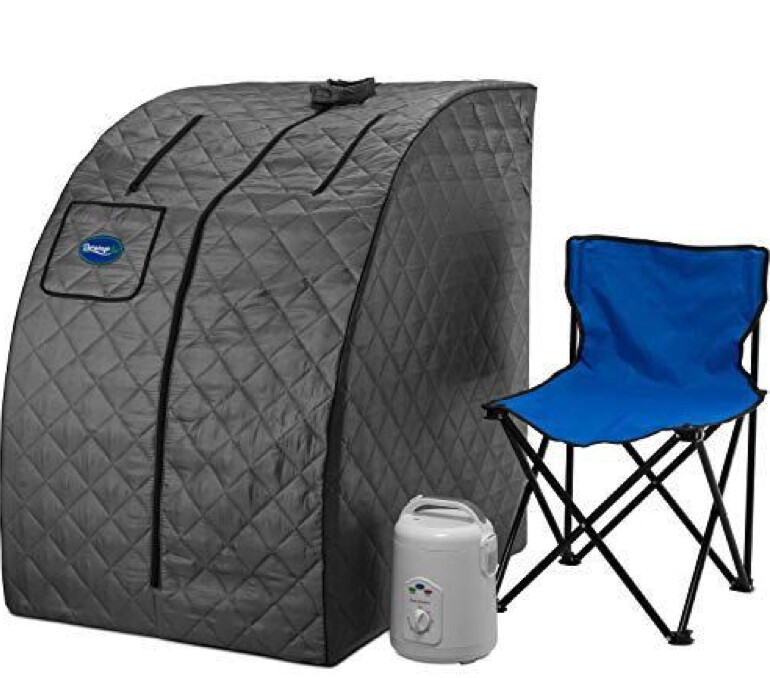
Professional runners sympathize. On July 20 at the World Athletics Championships in Eugene, Oregon, the women’s 5,000 meters took to the track for their preliminary races in searing 90-degree heat.
Yet despite the scalding temperatures, Elise Cranny, Karissa Schweizer, and Emily Infeld of the U.S. all qualified for the 5,000-meter final without any problems from the temperature. Schweizer and Infeld even ran season bests. Here are their tips for handling the heat so next time you’re faced with a race on hot day, you can be prepared.
Gradually adapt to hotter temperatures
Before the prelim, Infeld hadn’t run much in hot weather. She trains part-time in Flagstaff, Arizona, whose average summer high hover around 80 degrees, and has spent the last few months in Eugene, which hadn’t experienced 90-degree days yet.
“We were trying as best we could to go at the hottest part of the day, which is around 4 to 6, to do workouts,” said Infeld. “Some days that was 80 degrees, some days that was 60. So, I was trying to do sauna, and do things that I could to prepare in case it was hot.”
Infeld owns a portable sauna tent that goes up to 140 degrees. She would go for a run, and if it wasn’t hot enough for her body to learn to adapt, she’d hydrate well and sit in the sauna for 20 minutes to simulate heat training. A review published in Frontiers looked at numerous studies that confirmed that passive heat acclimation strategies, such as sauna, have a measurable effect on athletic performance and heat tolerance. If you don’t have access to a sauna, a study from Temperature recommends overdressing to simulate hotter temperatures, though admits this method isn’t as effective.
Infeld’s preparations paid off with a season best time of 15:00.98 and a time qualifier for the 5,000-meter final.
Stay as cool as possible before racing
Schweizer already had one race under her belt before the 5,000-meter prelims —the championship 10,000 when she placed ninth in a personal best of 30:18.05. Because the weather was temperate for the 10,000, Schweizer found the heat during the 5,000 jarring.
Not only does Schweizer train to adapt to the heat—such as working out in the Salt Lake City, Utah sun during altitude camp with the Bowerman Track Club or using a sauna like Infeld—but she also takes precautions before race to stay cool.
She spends much of her pre-race time in the shade, wears an ice vest to warm up, and even stuffs ice in her uniform on the starting line: “It was to the point where I had chills, so I was pretty cold going into the race.”
While utilizing shade and ice may sound like too simple of a solution, it’s actually very effective. The same Temperature study previously mentioned reveals that pre-cooling your body optimizes endurance performance and mitigates the effects of heat strain during extreme temperatures. Some techniques mentioned include ice baths, ice vests, cold towels, and drinking very cold drinks or frozen beverages (called “ice-slurries” in the text) before the race. The study recommends trying out a few techniques to see what works best for you on race day.
Wear sunglasses to prevent extra strain
Cranny credits her races last year at the Olympic Trials and Olympics as practice for racing in the heat, and also has similar pre-race cooling procedures as her teammate, Schweizer. But Cranny also found that wearing sunglasses during races makes a huge difference.
According to Cranny, many of the Bowerman Track Club athletes wear sunglasses in practice. But until the USATF Championships in June, she had never worn them in a race before. Shalane Flanagan, who coaches the club alongside Jerry Schumacher, highly recommended it, telling Cranny that it prevents squinting in direct sunlight, which relaxes the face. By relaxing her face, Cranny felt she prevented other parts of her body from tensing up, such as her shoulders.
Expect to see Cranny, Schweizer, and Infeld all wear sunglasses for Friday’s final like they did in the prelims, in addition to using pre-cooling techniques. They’ll fight for medals against key competitors like double Olympic champion Sifan Hassan, world 10,000-meter champions Letesenbet Gidey, and world 1500-meter silver medalist Gudaf Tsegay on Saturday, July 23.
Schweizer is ready to put herself in the race, no matter the conditions or pace: “I feel like at a U.S. level, I’m pretty good at running with that confidence. But going into a world level, there’s a lot of really big names and a lot of them have run some pretty crazy times. So I think it’s hard sometimes to really trust yourself and trust your fitness but I know I can hang with the best of them.”
Cranny will focus on staying mentally tough, as Schumacher advised her and Schweizer that a 15-minute 5,000 might feel like a 14:30 effort in the heat. “You kind of just have to prepare yourself… If you panic 6 laps in cause it feels horrible, even if you’re not running a PR pace… being prepared for that and talking yourself through it is a big part.”
Infeld caught COVID-19 at the USATF Championships but isn’t letting that or the temperatures hold her back: “I always want to compete against the best and see where that lands me,” she said immediately post-race, before knowing she qualified on time. “Today it was sixth in that heat, but I hope that’s enough to get in the final and mix it up with the women out there.”
by Runner’s World
Login to leave a comment
Three Americans will be running the women’s 5,000 meters finals at World Athletics Championships on Saturday
American Elise Cranny, who trains with the Bowerman Track Club, was the top U.S. qualifier to earn a berth in the final with a time of 14 minutes, 53.20 seconds in the second heat. Cranny finished first in the event at the USA Track & Field Outdoor Championships last month at Hayward Field.
Running in the first heat, Karissa Schweizer, who also trains with the Bowerman Track Club, qualified for the final with a time of 14:53.69. Schweizer won the 10,000 meters at the USA championships and finished second to Cranny in the 5,000.
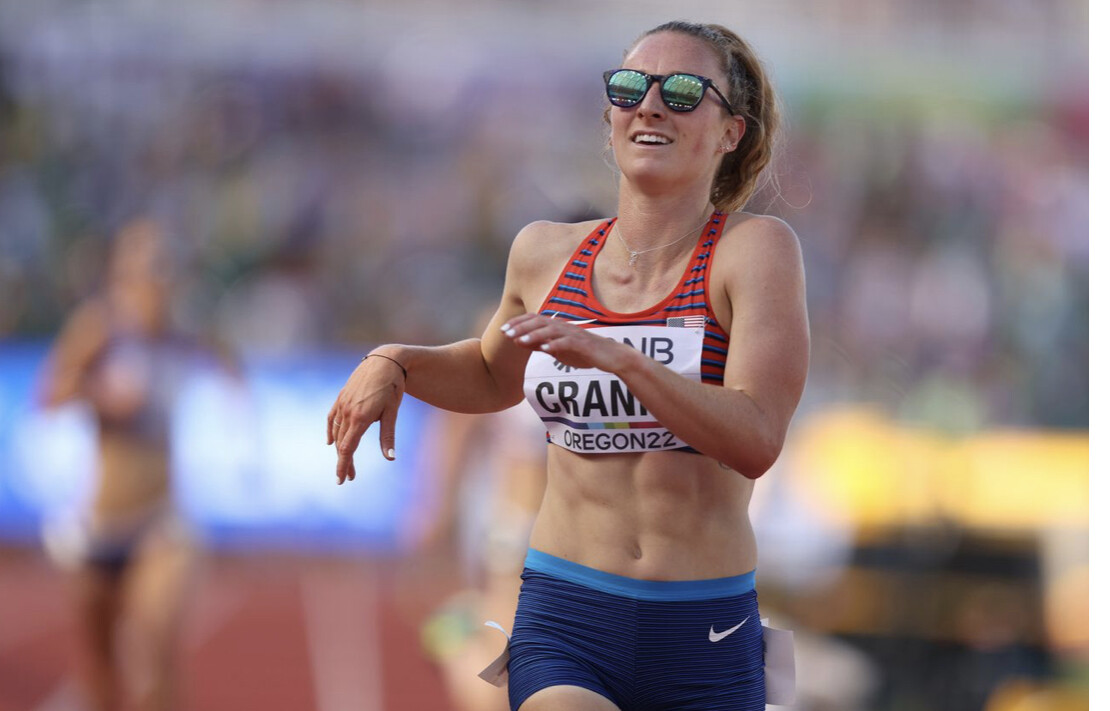
American Emily Infeld also advanced to the final as a time qualifier after finishing sixth behind Schweizer in the second heat in 15:00.98.
German Koko Klosterhalfen, who trains at the Portland-based Union Athletics Club, failed to qualify for the final after posting a time of 15:17.78.
The final is scheduled for 6:25 p.m. Saturday.
by Geoffrey C. Arnold
Login to leave a comment
World Athletics Championships Budapest23
Budapest is a true capital of sports, which is one of the reasons why the World Athletics Championships Budapest 2023 is in the right place here. Here are some of the most important world athletics events and venues where we have witnessed moments of sporting history. Throughout the 125-year history of Hungarian athletics, the country and Budapest have hosted numerous...
more...This 33-year-old steeplechase specialist had a bumpy four years until placing sixth at the World Athletics Championships on July 18
If you told Evan Jager in April that he would place sixth in the World Athletics Championships men’s 3,000-meter steeplechase in just a few months, he would have been ecstatic.
After all, the 2016 Olympic silver medalisthad only ran 8:34.89 at the Mt. SAC Relays on April 14, which is almost 13 seconds off the world’s standard time of 8:22.00. Though Jager had better steeplechase showings at the USATF Distance Classic on May 19 and the Portland Track Festival on June 10, it looked like the 33-year-old distance runner was still a far from being his former self.
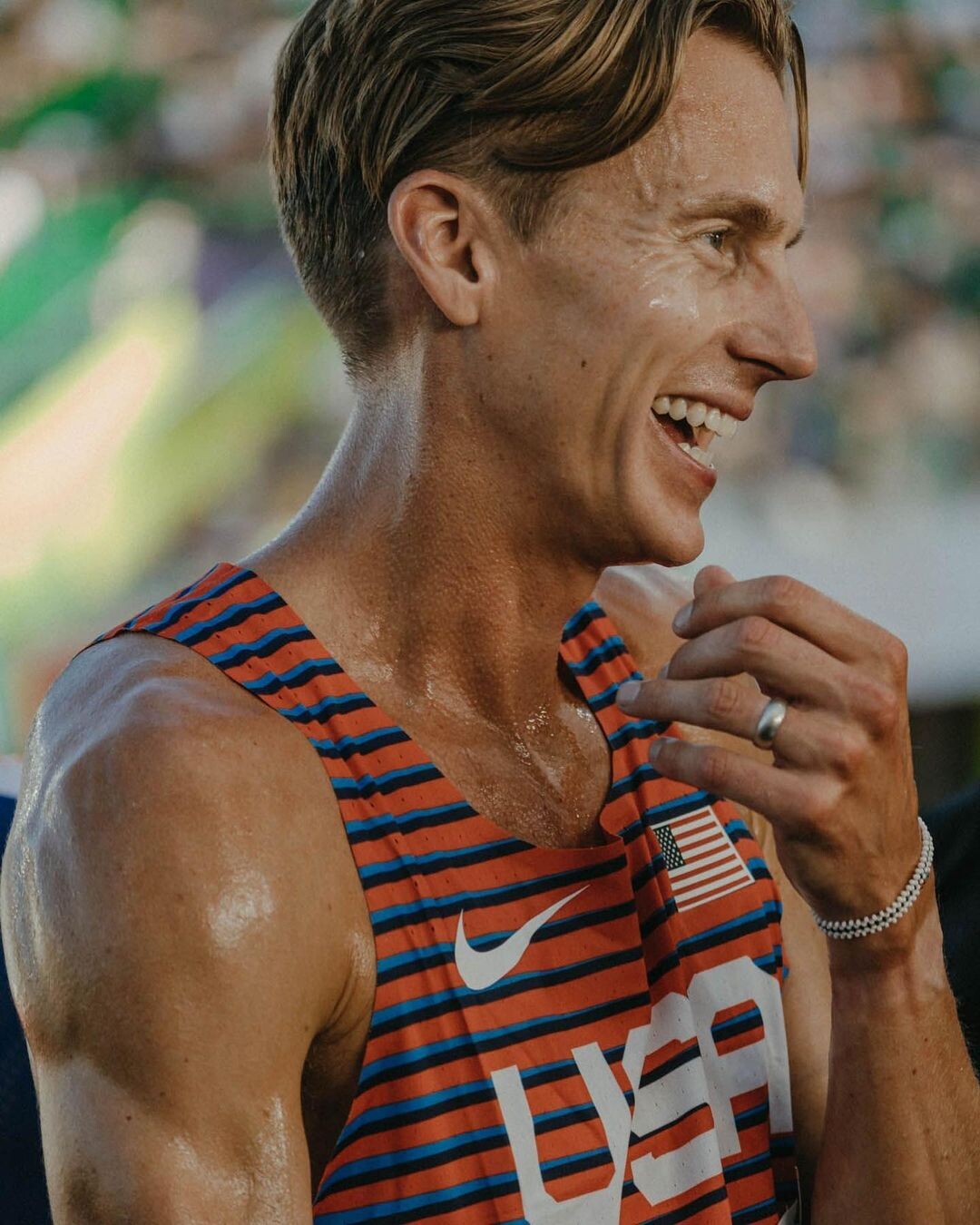
Things finally clicked at the USATF Outdoor Championships on June 25, when he ran 8:17.25 in the final to place second, earning him the world championships standard and a spot on Team USA for the World Athletics Championships at Hayward Field in Eugene, Oregon.
“Once you reach a certain point, you’ve got to set the bar higher,” Jager told Runner’s World.“I probably didn’t start thinking about realistically making the World Championship final until the prelim at USAs, I felt really good coming off of that.”
With momentum on his side, Jager’s expectations grew. The Bowerman Track Club athlete looked strong in his world championships preliminary heat, qualifying automatically for the final with his second-place finish. But in a tactical and physical final, Jager couldn’t keep up with defending Olympic champion Soufiane El Bakkali, Olympic silver medalist Lamecha Girma, and defending world champion Conseslus Kipruto over the final lap.
“After the prelim, I felt like my fitness was up there with just about anyone besides El Bakkali and Girma if it was a hard race from the get-go,” Jager said. “Team USA was having such an unbelievable and magical meet that I was letting myself believe that I could let the home crowd carry me to a magical performance. I think I probably would have fared better in a faster race.”
Regardless, the achievement is impressive for a runner who has been absent from the track & field circuit for the last four years. A lot has changed, especially with his training group. In 2018, Jager and Canadian 5,000- and 10,000-meter runner Mo Ahmed were the top dogs on the Bowerman Track Club, challenging the best in the world for medals. But Jager got hurt that year, and spent most of 2019 trying to get fit again while dealing with other injuries. When Jager returned to training, the team dynamic changed completely. Olympic gold medalist Matthew Centrowitz joined the group, who along with Woody Kincaid and Lopez Lomong all ran around 13 minutes in the 5,000 meters that summer. Then, NCAA champions Sean McGorty and Grant Fisher trickled in after using up their eligibility.
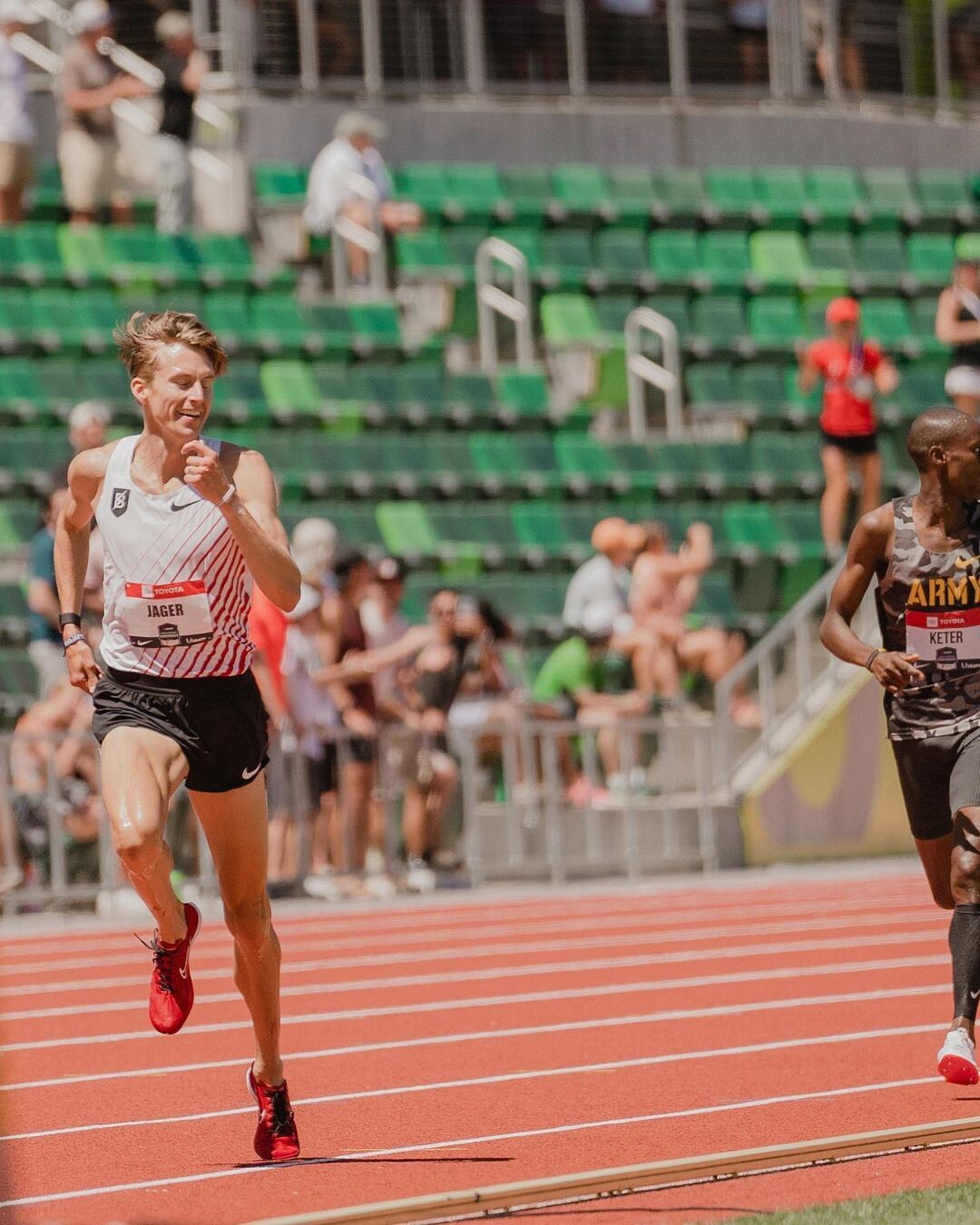
“I went from being on top … to being literally the worst guy on the team,” said Jager. “Every day was a grind.” Jager tried to keep up with the new members while also battling injuries, but had a hard time getting through even half of team workouts. “They were just on another level. I never felt like I was within myself in training for three and a half years up until this spring.”
So what changed in those three and a half years? Jager credits the team physical therapist, Colleen Little, who started working with Bowerman in January 2021. His problem wasn’t simply one big injury, like the stress fracture in his foot that ended his 2018 season. It was a snowball effect of one injury leading to overcompensation and imbalances in other parts of his body. So Jager and Little saw each other once or twice a week, every week, to manage the different aches and pains.
Next year will bring even more changes for Jager. His coach, Jerry Schumacher, is moving to Eugene to take the helm of the University of Oregon track & field program. The Bowerman Track Club’s athletes will relocate from their current base in Portland.
“I think it’s an incredible move for the group,” Jager said. “Change is always good. I’ve been in Portland for 14 years now, so it’s probably a good thing for me.”
Besides that, Jager said being stubborn kept him in the game. “I could have done a lot better being positive and working on mental health [the last few years],” he said. “I just believed that if I got healthy, I would get back here. If I can get to the final off of feeling healthy for four months, then I’m excited for next year.”
by Runner’s World
Login to leave a comment
World Athletics Championships Budapest23
Budapest is a true capital of sports, which is one of the reasons why the World Athletics Championships Budapest 2023 is in the right place here. Here are some of the most important world athletics events and venues where we have witnessed moments of sporting history. Throughout the 125-year history of Hungarian athletics, the country and Budapest have hosted numerous...
more...Highlights from the 2022 USATF Outdoor Championships June 26
The USATF Outdoor Championships at Hayward Field in Eugene, Oregon have finished and the athletes set to represent Team USA at the World Athletics Championships have been decided. Over four days, there was a world record set and plenty of great battles for the limited spots on the world team.
The World Athletics Championships will be back at Hayward Field from July 15 to July 24. It will be the first time the United States is hosting the meet.
Here are the highlights from the 2022 USATF Outdoor Championships.
Cranny wins a close one in the 5,000 meters
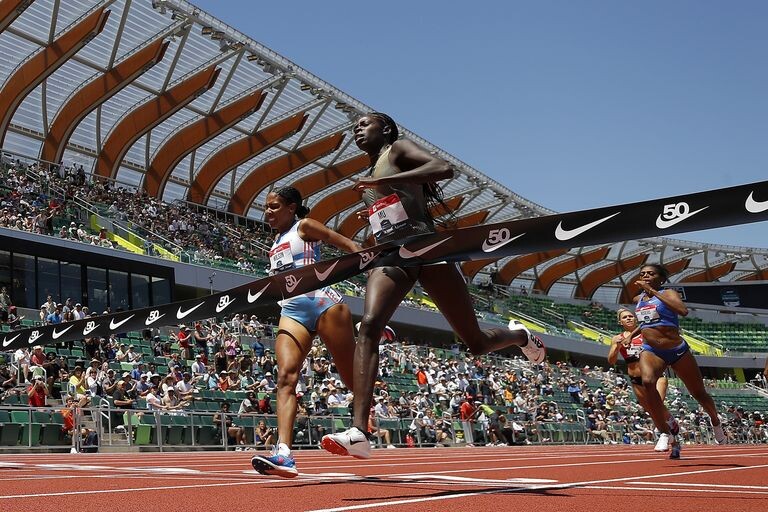
After a schedule change to avoid hot conditions, the women’s 5,000 meters opened the final day of the USATF Outdoor Championships. Unfortunately, the women couldn’t completely escape the heat—the temperature on the track read 82 degrees.
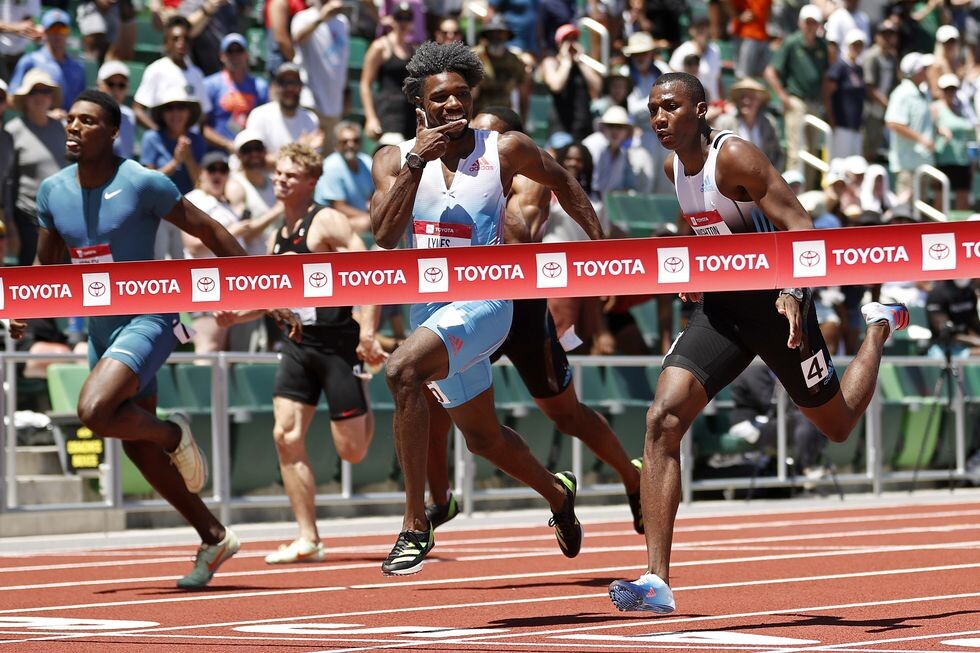
As a result, the women dawdled, running most of the race in a tight pack. With 1600 meters remaining, Karissa Schweizer—who placed fourth in the 1500 meters on Saturday—picked up the pace. With two laps, four women separated themselves: Schweizer, indoor American record holder Elise Cranny, world championships bronze medalist Emily Infeld, and Weini Kelati. Kelati fell off the group by the bell, and the top three were set. Now, it was a battle for place.
Schweizer, Cranny, and Infeld battled down the final straightaway, trading leads multiple times. When the dust settled, Cranny earned the victory, with Schweizer and Infeld less than a half second behind in that order.
Each woman completed their own unique narrative coming into the race. Cranny scratched from the USATF 10,000-meter championships on May 27, saying in an Instagram post she hadn’t been feeling like herself in training. Schweizer, who did qualify for the 10,000 meters, also placed fourth in the 1500. With this 5,000-meter performance, she completed one of the best championship runs in U.S. history. Finally, after just missing out on qualifying for the 10,000-meter world team, Infeld earned a spot on her first global championship team since 2017.
Fisher takes down 5,000 meet record, Kincaid unleashes furious kick for second
Conversely to the women’s race, the men’s 5,000 meters went out hard. Hillary Bor, who qualified for the steeplechase team on Saturday, kept checking his watch—apparently pacing the race. Multiple time global medalist Paul Chelimo and Bowerman Track Club teammates Grant Fisher and Woody Kincaid held position right behind Bor.
Bor dropped out at 1800 meters after splitting 4:12 for the mile. Evan Jager, who also qualified for the steeplechase world team, led the men for another mile. Fisher, Emmanuel Bor, and NCAA indoor 5,000-meter champion Abdihamid Nur of Northern Arizona quickly separated from the group after Jager dropped out.
Over the final 1200, Fisher put on a clinic, squeezing the pace over each lap until he was all alone. He won the race in 13:03.86, a meet record.
The most exciting portion of the race occurred offscreen. After trailing the top three by five seconds with 400 to go, Kincaid unleashed a monstrous 54.24 final lap to take silver in a time of 13:06.70. Nur held on to earn his first world championship berth, running 13:08.63. Emmanuel Bor faded to fifth.
Coburn claims eighth straight U.S. steeplechase title
After a moderate first 1,000 meters, four women were clear of the pack in the women’s steeplechase: recent NCAA champion Courtney Wayment, Gabi Jennings, six-time U.S. champion Emma Coburn, and Olympic silver medalist and American record holder Courtney Frerichs.
That group whittled down to Wayment, Coburn, and Frerichs by 800 to go. Half a lap later, Coburn quickened her pace. Wayment and Frerichs, perhaps surprised by the move, didn’t go with Coburn, who put more and more distance on them over the final lap. Coburn notched her eighth consecutive U.S. title in a season best of 9:10.63. Wayment finished second, and Frerichs took third.
Ajeé Wilson nearly upsets the defending Olympic champion The women’s 800 meters promised to be the event of the meet, and it didn’t disappoint.
Athing Mu, defending champion, jumped off the line hard to take her traditional spot in the lead. Olivia Baker and indoor world champion Ajeé Wilson were right on her heels while Olympic bronze medalist Raevyn Rogers hung around mid-pack.
All of the women were still together with 200 to go. The broadcast commentators predicted that Mu would break the race open before the end of the bend, but spectators were treated to something more interesting: Wilson was right on Mu’s shoulder with 100 to go. With gritted teeth, the two athletes dashed neck-and-neck down the straightaway. It looked as if Wilson had the upper hand, but the Olympic champion pulled through in the final meters to snag the victory in 1:57.16. Rogers slingshotted out of the pack to pass three runners for third.
Bryce Hoppel earns first outdoor national title
The men’s 800 meters featured a consequential last 100 meters. Texas A&M’s Brandon Miller set a fast early pace, crossing the 400-meter mark in 51.62. He fell to second as Hoppel took control on the final bend.
It wasn’t over yet, as the entire field was still in striking range with 100 left. But Hoppel and Jonah Koech surged ahead, while Miller duked it out with a late-charging Clayton Murphy for the third qualifying spot. Miller overtook the two-time Olympian with a dramatic dive at the line, securing a trip to worlds. Hoppel’s winning time was 1:44.60, a season best, while Koech’s ran a personal best of 1:44.74.
Noah Lyles charges late to overtake 18-year-old star Erriyon Knighton
After 100 meters, it looked like 18-year-old Erriyon Knighton was on his way to his first national championship. But that’s why there’s another 100 meters in this event, because defending world champion Noah Lyles found another gear. With a smile and finger pointed at Knighton, Lyles broke the tape first in 19.67. Knighton finished second, while 100-meter national champion Fred Kerley nabbed another world team spot. Because Noah Lyles has a bye to the world championships, fourth-placer Kenny Bendarek also qualified.
NCAA champion Abby Steiner becomes U.S. champion
With defending U.S. champion Gabby Thomas in poor form this year, the gate was open for a new women’s 200-meter champion. Abby Steiner, who won the NCAA title two weeks ago, capitalized on that opening. She won the title with a world lead and personal best of 21.77. Tamara Clark and Jenna Prandini qualified as well with their respective second and third place finishes.
by Runner's World
Login to leave a comment
USATF Outdoor Championships
With an eye toward continuing the historic athletic success of 2022, USATF is pleased to announce competitive opportunities for its athletes to secure qualifying marks and prize money, including a new Grand Prix series, as they prepare for the 2023 World Athletics Championships in Budapest, Hungary.As announced a few months ago, the 2023 Indoor Championships in Nanjing, China have been...
more...Sinclaire Johnson confident heading into USA Track & Field Outdoor Championships
As Sinclaire Johnson made her way to the starting line for the women’s 1,500 meters at the Prefontaine Classic last month in Eugene, she took a moment to take in her competitors.
Eight of them ran in the 1,500 final at the Summer Olympics in Tokyo last year. Now, she had the opportunity to show she belongs among them.
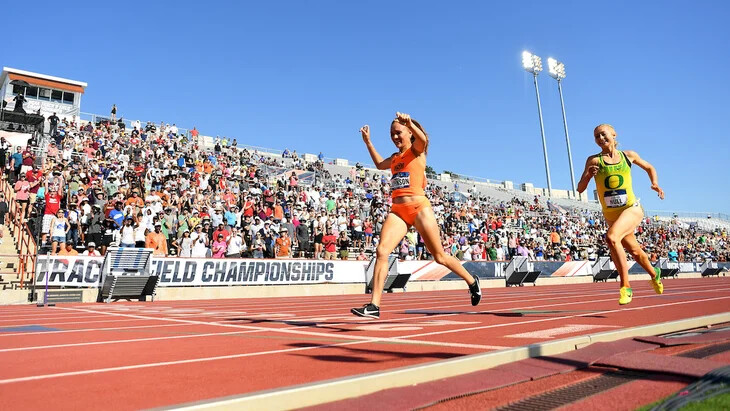
No thoughts about Johnson’s final time crossed her mind throughout the race. They never do. She’s too focused on her pace and beating those around her, and she rode that mindset to a fourth-place finish, beating six of those Tokyo Olympians.
“I felt like I had finally stepped into that pool of competing on that world-class level,” Johnson said this week.
Running a sub four-minute race was always Johnson’s goal heading into the meet. When she had the time to think about her official time, she saw it read 3 minutes, 58.85 seconds, a new personal record. It’s a far cry from where she was nine months ago, when she could train only in pools or the gym while dreaming of getting back to running.
Johnson joined Bowerman Track Club following her college career at Oklahoma State University, where she won a national title in the 1,500 as a junior in 2019. She made the switch to coach Pete Julian’s Portland-based Union Athletics Club last August.
That’s when the pain started.
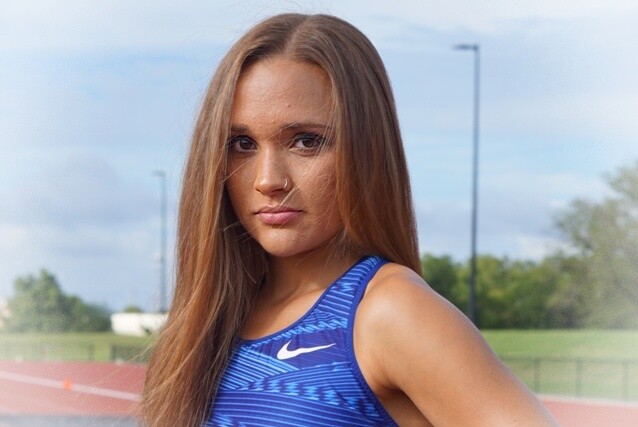
It began as persistent pain in her hip following a workout early in the week. She couldn’t walk by Saturday, and an ensuing MRI showed a small tear in her labrum. Such tears typically can be corrected only through surgery, but this tear was small enough to not require an operation.
Johnson resumed training with caution, but she was still in pain that wasn’t getting better. Another MRI a month later showed something new: a stress fracture. So Johnson’s time with Union Athletics Club began in earnest while she was in recovery.
Running wasn’t an option, so Johnson instead spent time in the gym strengthening the muscles surrounding her hip and pool exercises to reduce the stress on her body. The process of getting Johnson back into competitive shape was slow and cautious, Julian said, but she was finally able to start running again in November.
“Every week just kept getting better and better,” Johnson said. “I just kept shocking myself with what I could do.”
Julian and Dave McHenry, Union Athletics Club’s strength coach, were with her every step of the way, Johnson said. This included daily check-ins on Johnson’s physical and mental health, scheduling appointments with doctors and breaking down how to get her back to training.
“She’s been able to just continue to progress honestly, just with more training load,” Julian said.
When it wasn’t her coaches reaching out with support, it was her new teammates. Jessica Hull, a former track athlete at the University of Oregon, met Johnson as a competitor when the two were running in college.
Hull was right behind Johnson when the latter won the NCAA title in 2019. It was a flip of the preliminary round earlier that day, when Hull took first and Johnson claimed second.
“We both knew at that point, we couldn’t have done it without each other, pushing each other,” Hull said.
Not only has Hull been training alongside Johnson at Union Athletics Club, she was also one of the eight Olympians running with her at the Prefontaine Classic. The two aren’t competitive with each other now that they’re on a team, Hull said.
Heading into the USA Track & Field Outdoor Championships this week, Hull said she’s looking forward to seeing Johnson’s training pay off.
“Watching her race at USA is gonna feel like my heart is out there with her,” said Hull, who competes for Australia.
Messages from coaches and teammates were important, but Johnson’s ultimate confidence boost came from herself. Slowly, but surely, she worked through the outdoor season to go from hanging on in races to competing to win.
That top-four finish in the Prefontaine Classic against some of the same competition she’ll see in the 1,500 this week proved to Johnson that she can earn a spot on Team USA for the World Athletics Championships next month.
“Not only do I want to make a team,” Johnson said, “I believe that I can make a team.”
by Luke Norton (Oregon Live)
Login to leave a comment
USATF Outdoor Championships
With an eye toward continuing the historic athletic success of 2022, USATF is pleased to announce competitive opportunities for its athletes to secure qualifying marks and prize money, including a new Grand Prix series, as they prepare for the 2023 World Athletics Championships in Budapest, Hungary.As announced a few months ago, the 2023 Indoor Championships in Nanjing, China have been...
more...Woody Kincaid eyes redemption at USA Track & Field Outdoor Championships
Woody Kincaid’s last visit to Hayward Field didn’t go as planned.
So, Kincaid has something extra riding on the USA Track & Field Outdoor Championships, which begin a four-day run at Hayward Field in Eugene on Thursday.
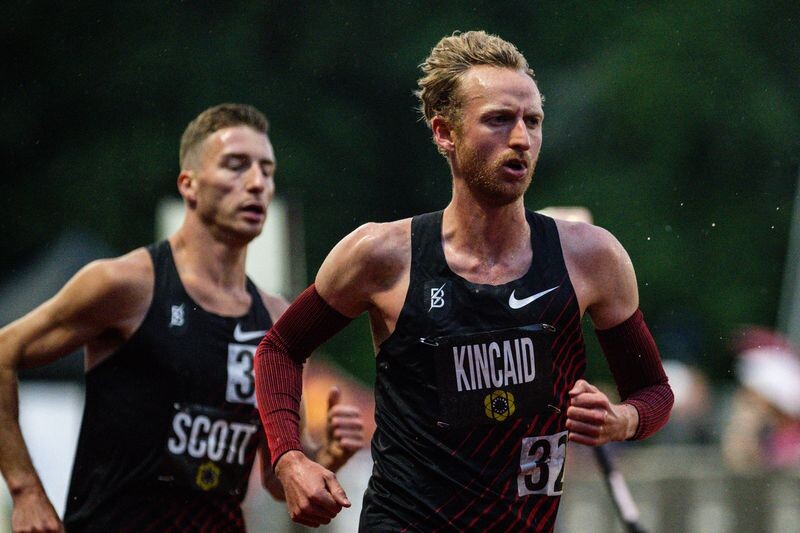
The USATF 10,000-meter final took place at Hayward last month in conjunction with the Prefontaine Classic. Kincaid, the Olympian who trains with the Portland-based Bowerman Track Club, was defending his USATF title.
It was a slow pace and headed toward a kicker’s finish -- Kincaid’s kind race -- when a sharp pain in his side almost doubled him over 6,600 meters in.
Buchanan, who would finish ninth, trains with the California-based Mammoth Track Club. The two UP grads weren’t working together. It just … happened.
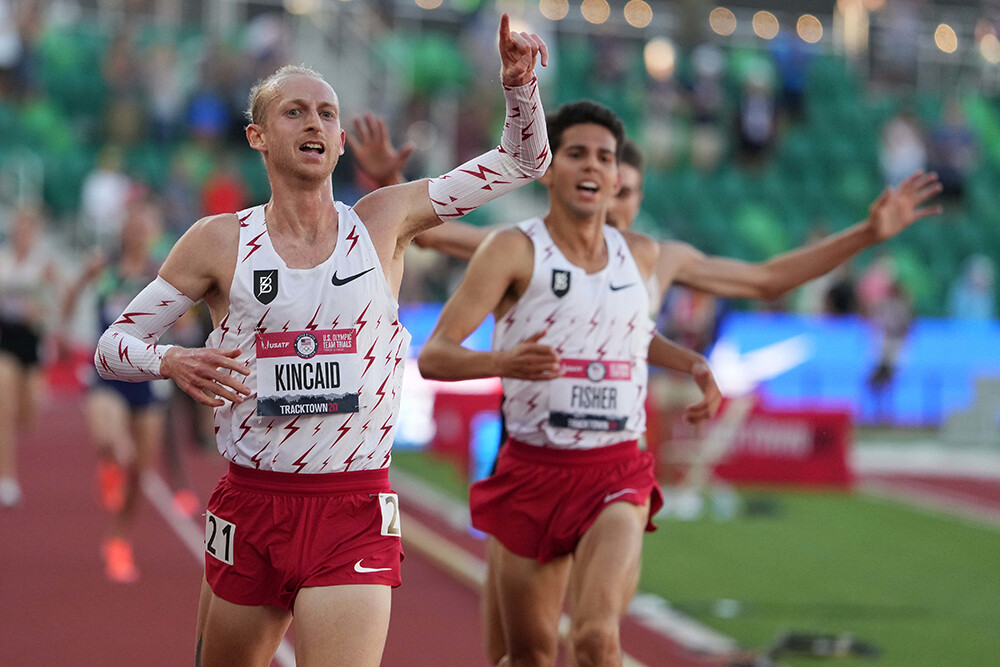
(First photo): Woody Kincaid and Grant Fisher react after finishing first and second place in the men's 10,000 meters during Day 1 of the 2020 U.S. Olympic Track & Field Team Trials at Hayward Field on June 18, 2021, in Eugene, Oregon.
Kincaid remembers thinking, “‘Damn. That’s Reid Buchanan. And this is the Olympic trials.’ It was pretty surreal.”
In the final lap, it became outrageous. Kincaid covered the final 400 in 53.47 seconds, the final 200 in 25.51.
“A lot of people can’t do that,” says UP coach Rob Conner, who nurtured Kincaid through five up-and-down, injury-troubled years on The Bluff.
Staggered, Kincaid couldn’t go on. He was on the sideline when Joe Klecker, Grant Fisher and Sean McGorty went 1-2-3 to claim the spots on Team USA for the World Outdoor Track & Field Championships next month in Eugene.
“It wasn’t a hard effort,” Kincaid says, trying to make sense of what caused the stitch. “It was a slow pack, 4:52 mile pace. So, it wasn’t like I was hanging on or anything. It’s never happened before.”
Kincaid says it’s been diagnosed as a diaphragm cramp. He has been checked out. There doesn’t seem to be anything wrong medically.
“One of those things,” he says.
And ready to be discarded like yesterday’s news. Kincaid is entered in Sunday’s 5,000 in the main portion of the USATF Outdoor Championships. He will be running to win.
Kincaid was third in the 5,000 at last year’s Olympic trials. He went on to represent the U.S. in both events in Tokyo, placing 14th in the 5,000 and 15th in the 10,000.
“I was glad I made the team in the ‘5,’” Kincaid says of last year’s Olympic trials. “But there still is a little bit of ‘Damn, I should have gotten the ‘5′ too.’ I still want a national title in the ‘5.’”
Last year’s Olympic trials was a breakthrough for the former University of Portland star who seemed to spend his first four years as a professional either hurt or trying to come back from injury.
It all clicked last summer on the first day of the trials at Hayward Field when Kincaid positioned himself perfectly in the 10,000 with two laps to go.
He wasn’t quite ready to make his move when former UP teammate Reid Buchanan obliged by going to the front.
It was a Hollywood finish in more ways than one. As Kincaid took his victory lap, his father, Mike, met him at along the rail. Mike was in a fight with mesothelioma that he would lose five months later.
Father and son both knew the score, which made for a poignant moment.
“We were both like in shock, like, ‘Wow, I can’t believe that just happened,’” Kincaid says. “My dad couldn’t speak. We were super close. I don’t think he had anything to say.”
Kincaid’s BTC teammates took a photo of the scene and blew it up to poster size.
“Best race I’ve ever run,” Kincaid says. “That was special.”
Shocking as it might have been to fans, it wasn’t totally unexpected by those close to him.
BTC coach Jerry Schumacher believes Kincaid actually arrived at the 2019 USATF Outdoor Championships, when he survived a wicked pace set by Olympic silver medalist Paul Chelimo in the 5,000, stayed at the front and finished third.
“That got me excited,” Schumacher says.
That September, Kincaid and teammates Lopez Lomong and Matthew Centrowitz ran a 5,000-meter time trial on the Nike campus.
Kincaid bolted past Lomong in the race’s final 120 to finish first in 12:58.10. Even Kincaid did a double take at the sub-13 time.
COVID scrubbed most of the 2020 outdoor season, leaving Kincaid something of a question mark heading into last summer’s Olympic trials.
“People kind of missed on him,” Schumacher says. “We got to see him at practice. We got to see how he trained and worked out. He was determined. He had everything you would want to see in an athlete going into the Olympic trials.
“For us, it wasn’t a huge surprise. He’d basically been at that level for two full years, and 2021 was the first time he got to showcase it.”
He is a known commodity now, and an acknowledged threat in the USATF 5,000 final. A totally focused and injury-free Kincaid will be tough to beat, particularly if the race comes down to a kick.
“He’ll get the job done,” Conner says. “I’m 100 percent confident of that.”
by Ken Goe (OregonLive)
Login to leave a comment
Athletics Canada names 18 athletes to World Indoor Championships team
On March 3, Athletics Canada announced the 18-member team that will represent Canada at the World Athletics Indoor Championships in Belgrade, Serbia from March 18-20. This team is made up of six men and 12 women who have successfully achieved the World Athletics Indoor standard in their event. Athletics Canada has chosen to send an experienced team, with 16 out of the 18 athletes selected having represented Canada on the world stage previously.
Toronto native and Bowerman Track Club member Gabriela DeBues-Stafford headlines the team, sitting at fifth in the World Athletics rankings over the 3,000m and first in the 5,000m. DeBues-Stafford has had a remarkable indoor season, breaking the Canadian indoor 3,000m and 5,000m records in back-to-back weekends. In Serbia, DeBues-Stafford will be among those contending for a medal in the women’s 3,000m.
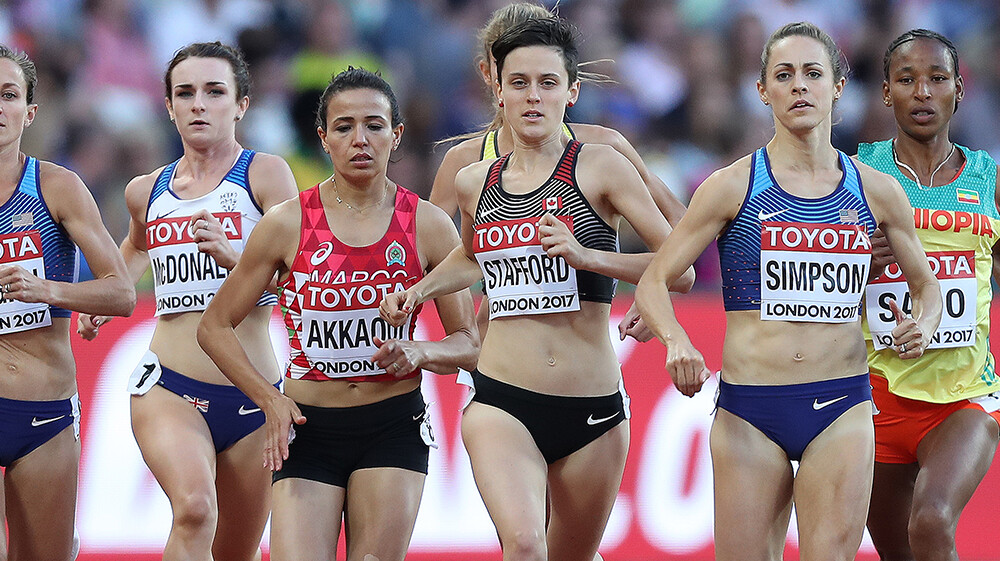
Canada’s 2021 Lou Marsh Award winner, Damian Warner, who won gold in the decathlon at the Tokyo Olympics, was also named to Team Canada, competing in the indoor heptathlon. Warner won silver at the 2018 World Indoor Championships in this event and he’ll be looking to upgrade that to gold in Serbia.
That was the only medal a Canadian brought home from in 2018. Team Canada’s head coach Glenroy Gilbert expects this year’s team to contend for high placings across all disciplines in Birmingham.
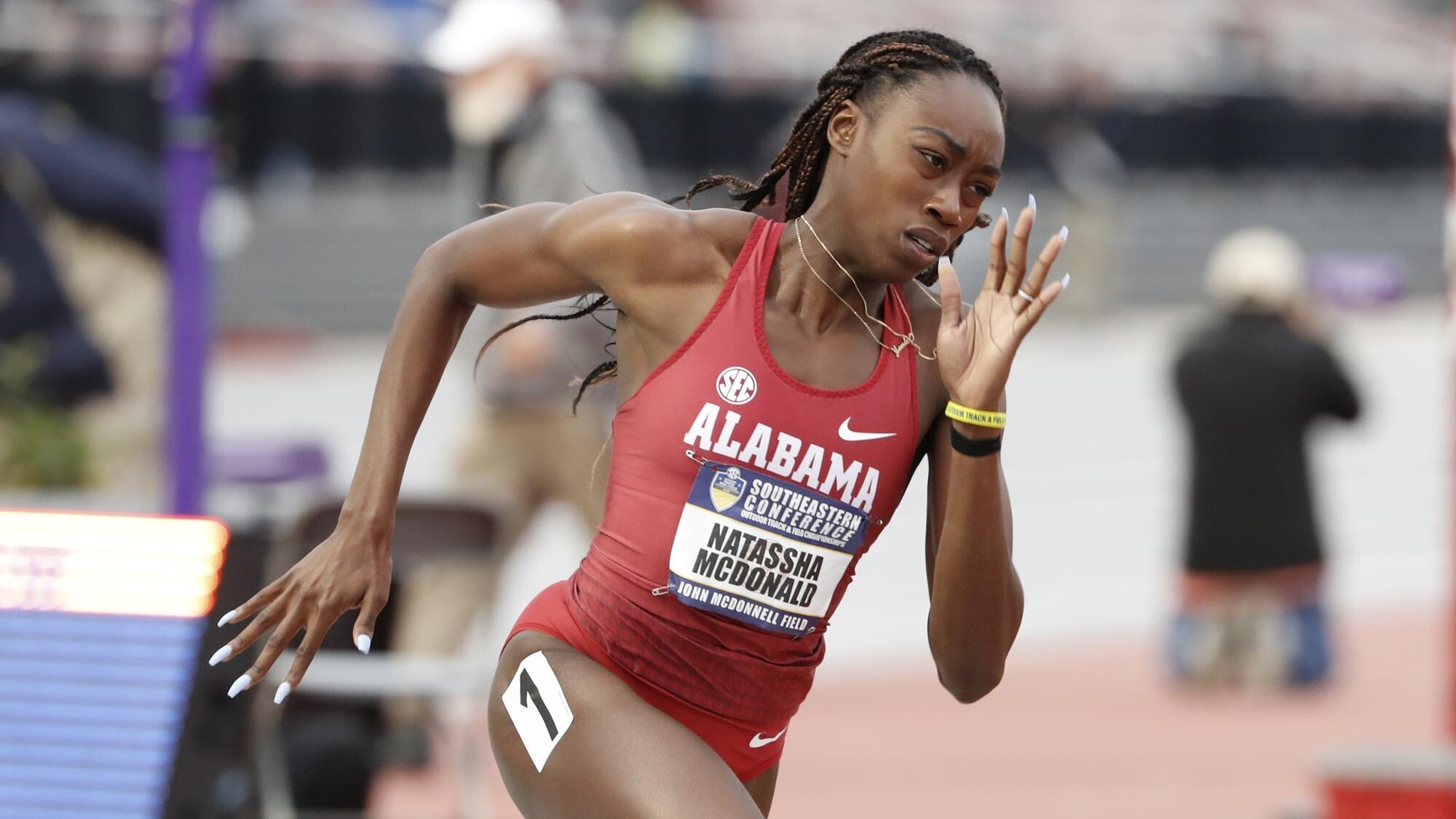
There are high expectations on what could be Canada’s best 4x400m women’s team ever, comprised of Natassha MacDonald, Lauren Gale, Kyra Constantine, Micha Powell and Sage Watson. The women’s 4x400m team finished fourth at the Tokyo Olympics and will be looking for redemption this time around in Serbia.
Indoor Worlds Team (information via Athletics Canada)
Athletes
Bolade Ajomale (Richmond Hill, Ont.) – Men’s 60 metres
Cameron Proceviat (Burnaby, B.C.) – Men’s 400 metres
Damian Warner (London, Ont.) – Men’s Heptathlon
Ehab El-Sandali (Toronto, Ont.) – Men’s 3,000 metres
Gabriela DeBues-Stafford (Toronto, Ont.) – Women’s 3,000 metres
John Gay (Kelowna, B.C.) – Men’s 3,000 metres
Julie-Anne Staehli (Lucknow, Ont.) – Women’s 3,000 metres
Kyra Constantine (Brampton, Ont.) – Women’s 4×400 metres
Lauren Gale (Ottawa, Ont.) – Women’s 4×400 metres
Lindsey Butterworth (North Vancouver, B.C.) – Women’s 800 metres
Lucia Stafford (Toronto, Ont.) – Women’s 1,500 metres
Madeleine Kelly (Pembroke, Ont.) – Women’s 800 metres
Marco Arop (Edmonton, Alta.) – Men’s 800 metres
Micha Powell (Toronto, Ont.) – Women’s 4×400 metres
Michelle Harrison (Saskatoon, Sask.) – 60 metres hurdles
Sage Watson (Medicine Hat, Alta.) – Women’s 4×400 metres
Sarah Mitton (North York, Ont.) – Shot put
According to Athletics Canada:
a second list of athletes who met the Athletics Canada indoor qualification standard in their respective events will be added to the team if they appear as “Qualified by Entry Standard” or “In World Rankings quota” on the March 9 World Athletics rankings list and the quota places remain open in their event.
The 2022 World Indoor Championships will kick off on March 18 and run until March 20.
by Marley Dickinson
Login to leave a comment
World Athletics Indoor Championships
World-Class Competition Lands in China: 2025 World Athletics Championships The global spotlight shines on China as it hosts the 2025 World Athletics Championships, bringing together the planet’s most elite runners, jumpers, and throwers. This prestigious event, organized by World Athletics, represents the pinnacle of track and field competition—where national pride, personal records, and world titles are on the line. ...
more...Grant Fisher (12:53.73) DESTROYS US 5,000 Record in Boston, Moh Ahmed (12:56.87) and Marc Scott (12:57.08) Break Canadian and British Records
As the runners were getting ready for the elite section of the men’s 5000 meters at the 2022 Boston University David Hemery Valentine Invitational on Saturday evening, we should have known we were in for a treat. After all, the slow heat had just been won in 13:05.
It’s crazy, when you think of it: Bowerman Track Club coach Jerry Schumacher had decided Woody Kincaid, the reigning US 10,000-meter champion, was not quite ready to mix it up with his BTC teammates in the fast section and Kincaid wound up running 13:05.56, at the time the second-fastest indoor 5,000m ever by an American.

Just as crazy: Schumacher was kind of right. Because what we saw in the fast heat was the deepest 5,000-meter race ever contested on US soil, indoors or out.
Grant Fisher, a former high school phenom who won two Foot Locker titles and broke 4:00 in the mile while balancing soccer with running, delivered on his immense promise and ran 12:53.73 to win the race, smash Galen Rupp’s American indoor record of 13:01.26, and come within a whisker of Bernard Lagat’s American outdoor record of 12:53.60. He is now the fifth-fastest human ever at 5,000 meters indoors, one spot ahead of a guy by the name of Eliud Kipchoge.
Fisher’s Bowerman teammate Moh Ahmed, the Olympic silver medalist last year, was next across, running 12:56.87 to break his own Canadian indoor record of 13:04.60. Marc Scott completed the BTC national record sweep in third, and like Ahmed, Scott lowered his own European indoor record, taking it from 13:08.87 to 12:57.08.
In the process, Scott became the first man born in the United Kingdom – and just the third born in Europe – to break 13:00, indoors or out. The race marked the first time that three men broke 13:00 in the same race indoors (only once before had even two done it in the same race).
The times were so fast up front that would-be historic performances were relegated to also-ran status. Emmanuel Bor ran the second-fastest time in US
indoor history (under Rupp’s previous AR) but was only 4th (13:00.48). Sam Atkin of Great Britain and Jonas Raess of Switzerland both ran faster than the previous European indoor record but had to settle for 5th (Atkin in 13:03.64) and 6th (Raess in 13:07.95).
Florida State’s Adriaan Wildschutt of South Africa ran the second-fastest NCAA time ever indoors and third-fastest under any conditions – 13:09.20 – setting a national indoor record in the process and he was only 5th – in the B heat. Notre Dame’s Dylan Jacobs ran 13:14.04, #4 on the NCAA all-time indoor list and an American indoor collegiate record.
It was sheer madness.
In the main race, the early pacing was good, with 2020 US indoor 1500 champ Josh Thompson and 27:20 man Zouhair Talbi of Morocco taking the field through 3k in 7:53.51, but the real racing didn’t get going until just under a mile to go, when Atkin signaled for Fisher to pass him, knowing he could no longer hold the pace Fisher wanted to run.
From there, Fisher conducted a symphony of pain on the BU track, stretching the field out until Atkin, Scott, Ahmed, and finally Bor had dropped, leaving Fisher all alone for the final 400 as the crowd roared him into the history books. His last four 400m splits: 60.00, 58.95, 59.91, 58.74, good for an otherworldly 3:57.56 final 1600.
Fisher’s performance, just like almost every elite distance performance in the year 2022, must be placed into the context of its era. Earlier in the day on the same track, Notre Dame’s Yared Nuguse, the Olympian and 2019 NCAA 1500 champ, broke Alistair Cragg’s 7:38.59 indoor collegiate record which had stood since 2004. And last night, Gabriela DeBues-Stafford and Elise Cranny set dueling Canadian/American records, Cranny taking 14 seconds off Shalane Flanagan’s 14:47.62 AR.
Fisher and Cranny’s talents have long been known, and they are undoubtedly great runners. Yet between them, they own a grand total of one NCAA and one US title. That they could annihilate national records established by two of the greatest distance runners in American history is yet more evidence that we have entered a new age of distance running ushered in by super shoes, one in which the standards must be (and are being) adjusted.
by Let’s Run
Login to leave a comment
Shalane Flanagan will conclude her six major marathon at New York City Marathon
Sometime before noon in Central Park on Sunday, Shalane Flanagan should cross the finish line of the NYC Marathon. That, alone, will be no small feat for the 40-year-old former Olympic runner.
Now consider this: She will become the first person to ever run the six World Marathon Majors in just six weeks.
Because of the pandemic, the Boston, London and Tokyo Marathons were moved from their traditional spring dates to October, and now all six races are being staged in a 42-day stretch for the first -- and likely only -- time.

"When I saw how the marathon schedule unfolded, it felt like a once-in-a-lifetime opportunity," said Flanagan. "I coined it an eclipse because it was just so rare this would ever happen. It didn't take long for me to think, 'Why shouldn't I be the one to do it?'"
While Flanagan is no stranger to the marathon distance -- she won the New York Marathon in 2017 -- her mission is all the more improbable as she is technically retired, after announcing her departure from the sport two years ago.
"My retirement coincided with two reconstructive knee surgeries, and I basically couldn't run for a year. Then we hit a pandemic," Flanagan said ahead of Sunday's race (8:30 a.m. ET, ESPN2/ESPN App). "During that time I became a mom and a coach, so there were a lot of life changes, and I realized how much of my mental health is tied into running. I actually really need running. It's not a job for me, it's a passion. I missed having goals. Athletes are so goal-oriented and everyone was goal-less during the pandemic.'"
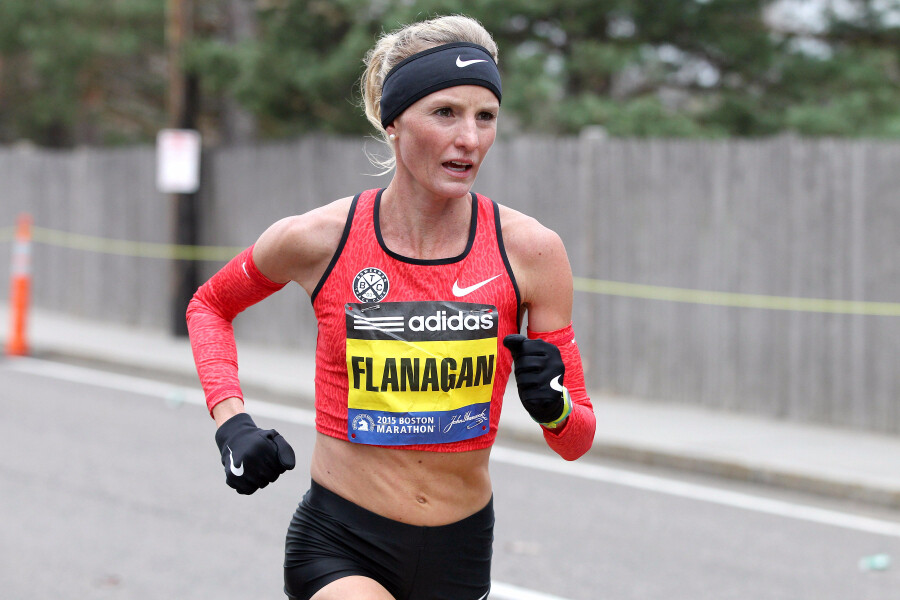
She set a sub-three-hour goal for each of the races and has shattered the mark in each race so far, including a 2:35:04 time in London.
Her current quest has pushed her physically and mentally but she's loved every minute of it. Joined by her 18-month-old son Jack as well as a tight-knit, all-female group that includes her physical therapist, a photographer and a Nike brand manager, Flanagan has awed fans around the world with her globe-trotting journey.
But it's just Shalane being Shalane, according to those who know her best.
"Shalane is always the type to just go after something," said 2020 Olympic steeplechase silver medalist Courtney Frerichs, who trains with Flanagan at Bowerman Track Club in Portland, Oregon. "I remember a few weeks after she won in New York [in 2017], she was back in training with us, fully right back in it, and I could barely keep up with her. That's just who she is.
"I wasn't surprised when she said she was doing this but I have been surprised at just how much fun she's having with it."
For many athletes, the idea of running 157.2 miles of competitive races would hardly be the retirement dream, but most athletes aren't Flanagan, who made a career of the unexpected. She was the first American woman to win in New York in 40 years when she crossed the finish line first in 2017 and is one of just two Americans to medal in the 10,000 meters at the Olympics. Flanagan earned the bronze medal in Beijing in 2008 (and it later was upgraded to silver following a failed doping test by Elvan Abeylegesse). She's always blazed her own trail.
And she didn't venture far away from the sport after officially retiring. She almost immediately began coaching at Bowerman, where she had been based for over a decade. She now worked with many of the younger runners she had been training alongside, including Frerichs.
"She was the driving force in creating a women's team here. She's always been such a leader and has truly always wanted to help others succeed," Frerichs said. "When I look back at this last year, she has played such an instrumental role."
"I basically prepped in six weeks, which is really short in the marathon world," Flanagan said. "But given the context of my lifetime of training, it was appropriate. I wouldn't recommend that though for most people."
After Sunday, she said she has no plans to run for at least a month. But the break likely won't last much longer than that.
"I think at the end I'll be thinking of how much fun we've had. I guess now I've got to dream up another hard challenge."
by D'Arcy Maine
Login to leave a comment
TCS New York City Marathon
The first New York City Marathon, organized in 1970 by Fred Lebow and Vince Chiappetta, was held entirely in Central Park. Of 127 entrants, only 55 men finished; the sole female entrant dropped out due to illness. Winners were given inexpensive wristwatches and recycled baseball and bowling trophies. The entry fee was $1 and the total event budget...
more...Shalane Flanagan to run 6 marathons in 42 days
Nearly three years after Shalane Flanagan officially retired from elite racing, she’s toeing the line of her marquee event again — not once, but six times in 42 days. With five of the six World Major marathons coming up in the next few weeks, the 16-time national champion will be aiming to run each of them in less than three hours, and then to run a sixth to make up for the postponed Tokyo Marathon.
Because of delays caused by COVID-19, five of the six World Majors are being crammed into a tightly packed fall schedule. Flanagan’s marathon of marathons will start in Berlin on September 26, the same course where she ran her personal best of 2:21:14 in 2014 and became the fourth-fastest American marathon runner of all time. She’ll have one week of recovery before heading to the U.K. to compete in the London Marathon, and from there she’ll return to North America where she’ll run the Chicago Marathon on October 10 and turn around the very next day to run the Boston Marathon on October 11.
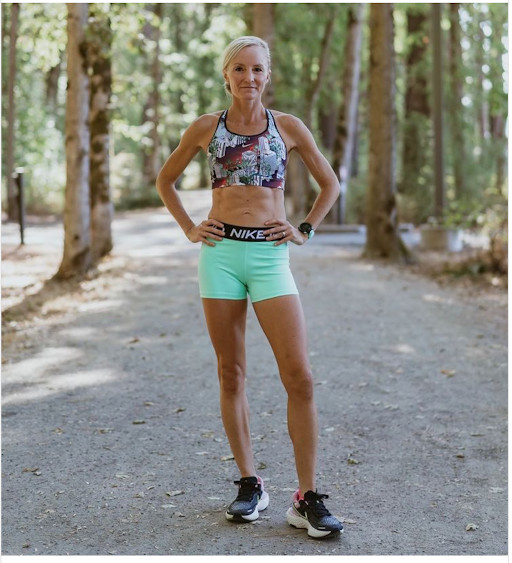
The Tokyo Marathon was to be her next race on October 17, but organizers postponed the race again until March 2022. In its place, Flanagan will travel to Portland, Oregon to run her fifth marathon in four weeks. She’ll then have three weeks of recovery before completing her challenge at the New York City Marathon on November 7. New York will be a special place to end her gruelling series, since it was there that she became the first American woman to win the race in 40 years in 2017.
Flanagan retired from professional running in 2019, and since then has had two reconstructive knee surgeries, become a coach with the Bowerman Track Club and adopted a baby boy. In an interview with Self, she explained that she’s taken on this challenge as a way to “reunite” with running after retirement and knee surgery.
“I felt the need to set some goals again,” she said. “Realizing this was a once in a lifetime opportunity presenting itself, with six major world marathons in 42 days, I feel like I’m doing it for myself, for my son, and for young women to showcase the connection between mental and physical health and how important of a role athletics can play in your life.”
Login to leave a comment
Three years after retirement, Shalane Flanagan will run Berlin, London, Chicago, Boston and one other marathon this fall
Nearly three years after Shalane Flanagan officially retired from elite racing, she’s toeing the line of her marquee event again — not once, but six times in 42 days. With five of the six World Major marathons coming up in the next few weeks, the 16-time national champion will be aiming to run each of them in less than three hours, and then to run a sixth to make up for the postponed Tokyo Marathon.
Because of delays caused by COVID-19, five of the six World Majors are being crammed into a tightly packed fall schedule. Flanagan’s marathon of marathons will start in Berlin on September 26, the same course where she ran her personal best of 2:21:14 in 2014 and became the fourth-fastest American marathon runner of all time.
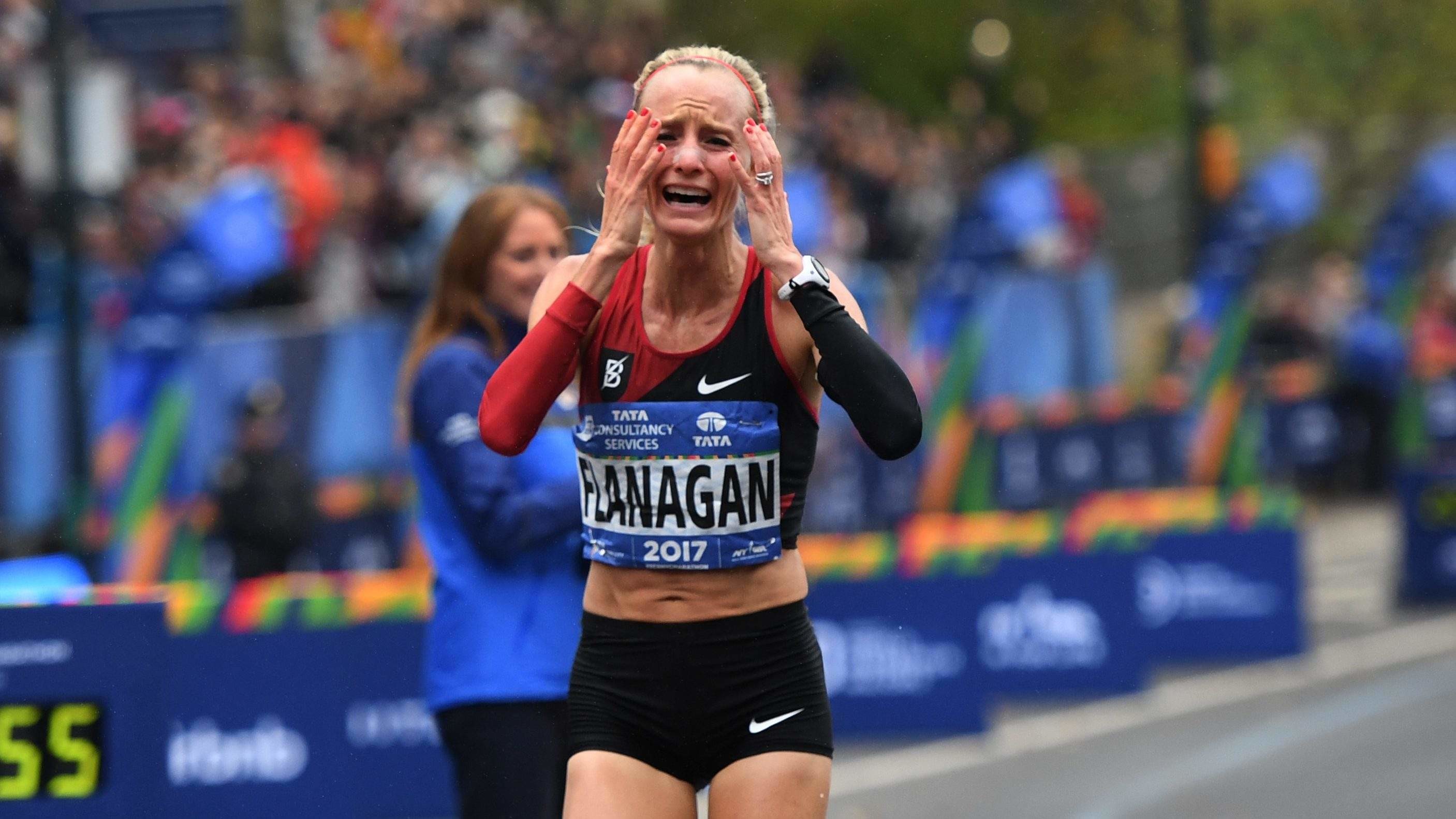
She’ll have one week of recovery before heading to the U.K. to compete in the London Marathon, and from there she’ll return to North America where she’ll run the Chicago Marathon on October 10 and turn around the very next day to run the Boston Marathon on October 11.
The Tokyo Marathon was to be her next race on October 17, but organizers postponed the race again until March 2022. In its place, Flanagan will travel to Portland, Oregon to run her fifth marathon in four weeks.
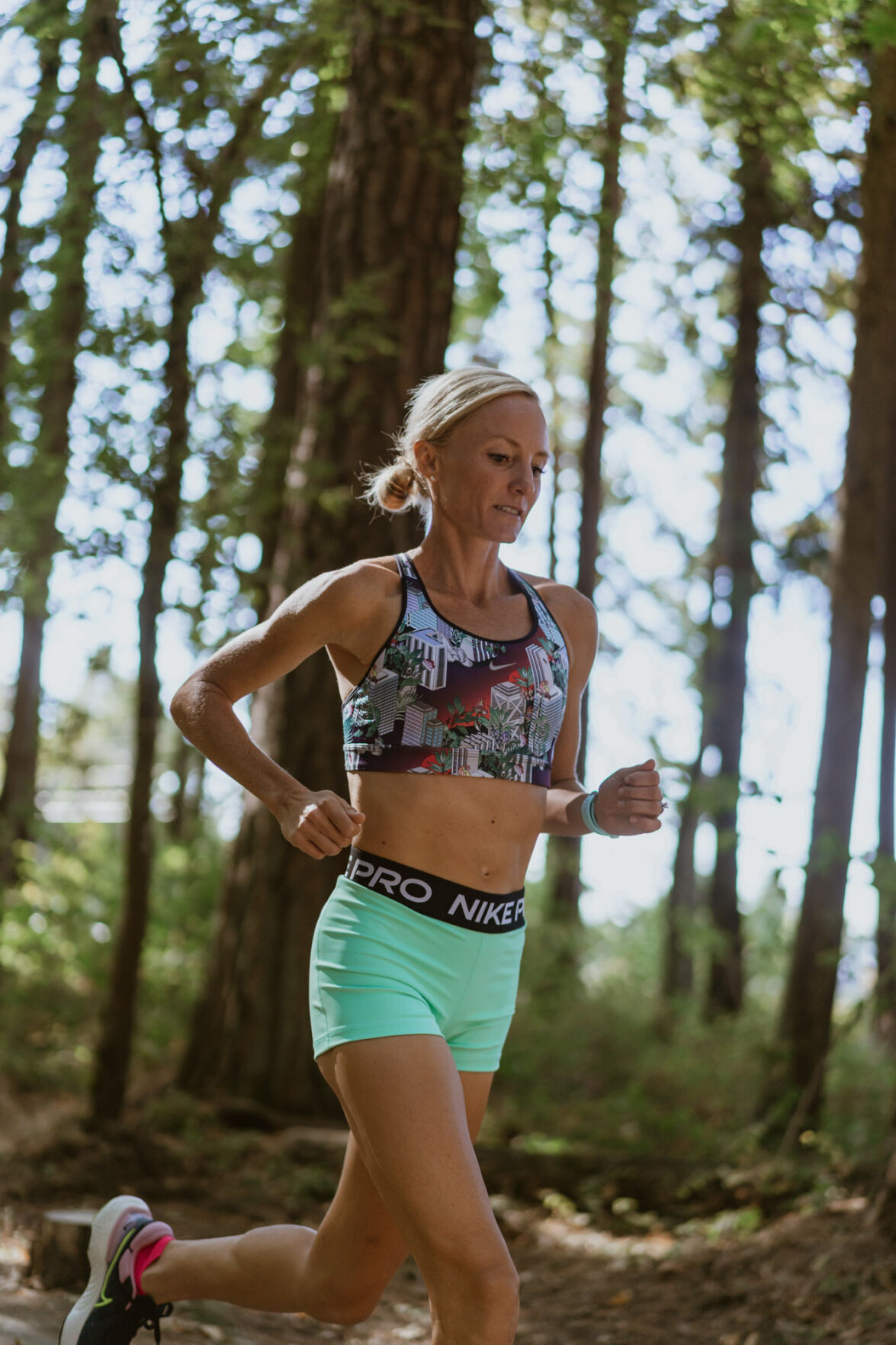
She’ll then have three weeks of recovery before completing her challenge at the New York City Marathon on November 7. New York will be a special place to end her grueling series, since it was there that she became the first American woman to win the race in 40 years in 2017.
Flanagan retired from professional running in 2019, and since then has had two reconstructive knee surgeries, become a coach with the Bowerman Track Club and adopted a baby boy. In an interview with Self, she explained that she’s taken on this challenge as a way to “reunite” with running after retirement and knee surgery.
“I felt the need to set some goals again,” she said. “Realizing this was a once in a lifetime opportunity presenting itself, with six major world marathons in 42 days, I feel like I’m doing it for myself, for my son, and for young women to showcase the connection between mental and physical health and how important of a role athletics can play in your life.”
by Brittany Hambleton
Login to leave a comment
TCS London Marathon
The London Marathon was first run on March 29, 1981 and has been held in the spring of every year since 2010. It is sponsored by Virgin Money and was founded by the former Olympic champion and journalist Chris Brasher and Welsh athlete John Disley. It is organized by Hugh Brasher (son of Chris) as Race Director and Nick Bitel...
more...Time for Shelby Houlihan to come clean
Two things ought to happen now that the Court of Arbitration for Sport has issued a technically detailed but, in the end, common-sense ruling in the matter of Shelby Houlihan, the American distance runner, banning her for four years for nandrolone — through January 2025 — while thoroughly rejecting the ridiculous burrito defense.
One, Houlihan ought to come clean.

What most likely happened?
We don’t and won’t know until Houlihan admits whatever it was. But, see paragraph 128 of this very thorough 44-page ruling, citing the head of the Montreal anti-doping lab, Christiane Ayotte, who notes that oral precursors of nandrolone can readily be bought on the internet, even on Amazon, and that a chemical signature very much like the one Houlihan tested for was obtained five years ago when that very lab tested a product it had bought called “Nor-Andro Max.â€
Two, all the journalistic sheep who wanted to believe, who maybe still want to believe despite the overwhelming evidence against Houlihan, that there was no way, just no way, a white American distance runner affiliated with the Bowerman Track Club could test positive — all these people, and the readers they misled, ought to take a crash course in Doping 101 and the things people will say and do, meaning anything and everything, to avoid getting busted.
This entire saga, truthfully, has been pathetic.
This burrito defense has, from the get-go, stretched the bounds of credulity, and anyone who bought it — even for a second — needs to undergo a real-world moron test.
Do you also believe pigs can fly? (‘Pigs’ used advisedly here.) Do you think Abraham Lincoln is a vampire slayer? Are you super-confident you can beat up a grizzly bear?
Almost every single facet of Houlihan’s defense was — is — absurd.
To be clear: not blaming Houlihan’s lawyers for aggressively scheming up any and every avenue possible. That’s what they’re there for.
But the three-judge panel went to great length — again, 44 pages — to refute, carefully, virtually everything about it.
For instance:
Houlihan took a lie detector test.
She was asked, did you at any time knowingly ingest nandrolone? And answered no. She was also asked, did you intentionally ingest the drug nandrolone? And said, no.
But as the panel pointed out, here’s what she wasn’t asked: did you take doping substances at the material time?
Houlihan also submitted to hair analysis. All involved agreed that it proved that nandrolone injections could be excluded. But, the panel found, that analysis failed to take into account oral (so we’re all on the same page here, something you eat or drink) precursors of nandrolone, such as “19-nor-DHEA†and “nor-Andro.â€
Which is why it boggles the mind, truly, that an outlet such as Women’s Running would, in the second paragraph of its account of this ruling, prattle on this way:
“CAS decided that although Houlihan was a credible witness and brought ‘compelling character witness evidence in support of her defense,’ she failed to establish the source of the nandrolone that was detected in her urine.â€
This is the second paragraph?!
Who cares if Shelby Houlihan is or is not a nice person and can or cannot get through a lie detector when asked certain questions? That’s all but irrelevant when it comes to the science in this case. As for her “compelling character witness evidence?†Ha! That’s a complete misread of what is what. Offering statements or testifying on her behalf were, among others, her former boyfriend, Matthew Centrowitz, gold medalist in the men’s 1500 at the Rio 2016 Olympics, Courtney Frerichs, the surprise silver medalist in the women’s steeplechase a few weeks ago in Tokyo, and Karissa Schweizer, who competed in Tokyo in both the women’s 5k (11th) and 10k (12th), and if you don’t think the Athletics Integrity Unit took careful observation of who was in Houlihan’s inner circle, maybe you seriously do believe pigs can fly.
The first paragraph of the Women’s Running story, what in journalism circles is called the lede, also noted — accurately — the CAS observation that Houlihan’s explanation was “possible but unlikely.â€
As if that were justification.
Everything in life is possible.
But here’s what CAS also said, and be mindful that the burden of proof in this matter was on Houlihan, and so if this were a math contest, she had to get to 50.1, but instead her defense “presupposes a cascade of factual and scientific improbabilities, which means that its composite probability is (very) close to zero.â€
Herewith the cascade:
— Houlihan ordered a carne asada — that is, a steak — burrito at a food truck in Beaverton, Oregon, near Portland. For her defense to work, she would have had to have been served and eaten pork.
The entire defense rests on this premise. A wrong order. Which she then ate. But that’s not all.
— Because the pork would have not been ‘normal’ pork but, per the Houlihan defense, uncastrated boar.
— Except uncastrated boar gets into the U.S. food chain through completely different channels than pork. So for uncastrated boar to end up in the normal pork food chain, the boar must have been a specimen with undescended testicles. This is called ‘cryptorchid.’
At this point, this is already verging on bizarre if not crazy stupid. Undescended testicled boar. OK.
— Except there’s more. The cryptorchid is (or was) of a “small minority of uncastrated boars that — in addition — must have had elevated androgen levels.†That would be “abnormal†for 6-month-old pigs.
— More still. The pork product Houlihan allegedly ate, despite ordering steak, is pork stomach. Follow along here because this gets into butcher-level stuff. When people eat pork stomach, that stomach is stripped of the inner layer; only the outer muscle remains. Houlihan’s assertion was that uncastrated boars have elevated androgen levels. Except those are not found in the muscle. Those levels are found only in specific parts — the kidneys, testes or liver. Pork stomach, the panel said, has one of the lowest androgen levels.
— More science. The nandrolone metabolite levels in Houlihan’s urine were two to three times higher than the highest values in the literature after eating much more significant quantities of mature (uncastrated) boar — a product different from the alleged cryptorchid in question, which would have been slaughtered at six months.
— Agriculturally speaking, the carbon isotope signature of the metabolite in her urine was “fundamentally inconsistent†with the largely corn-based diet of commercial pigs in the United States.
— Finally, an expert witness said the chance of a cryptorchid ending up in the normal supply chain in the United States is “far less†than one in 10,000.
Beyond which, see paragraph 104 on page 30, and come on now, there’s this:
“The fact that IBP/Tyson (the plant where the food truck in Beaverton bought the pork meat from) does not operate a boar kill plant. Thus, it is ‘near zero chance’ that any boar meat would get mixed with conventional fresh pork products.â€
All this leaves the obvious question, doesn’t it:
if the slaughterhouse doesn’t operate a boar kill plant, and thus there’s essentially no chance of boar meat getting in the food chain with pork other than, hmm, aliens dropping in from Galaxy Starchaser Nebula X9 to surreptitiously teleport it in there and so the food truck had a “near zero†chance of having boar meat on the night in question and, besides, Houlihan ordered a steak burrito, anyway — what really happened here?
Time for Shelby Houlihan to come clean.
She likely will dodge this opportunity until after the Swiss Federal Tribunal issues the final no-go — understand that the SFT takes up procedural matters, not substantive, so her chance of success there is, again, “near zero†— but she would do the right thing, now, by coming clean.
Time, too, for her supporters, defenders and enablers to see the light. It’s tough when your purported heroes get tagged for doping. But before all of you go out and buy Floyd Landis’ book about how he didn’t cheat to win the Tour de France — oops.
Some of us have been down this road before. This burrito defense — this was creative, indeed. But that didn’t make it any smarter, or better.
Pigs don’t fly. That’s the truth.
Login to leave a comment
CAS report on Shelby Houlihan explains reasons for four-year ban
In June, American 1,500m record-holder Shelby Houlihan was given a four-year ban by the Athletics Integrity Unit (AIU) after testing positive for the steroid nandrolone in December 2020. The Bowerman Track Club athlete appealed the ban and attempted to prove her innocence, since the athlete was hoping to race at the U.S. Olympic trials, but the Court of Arbitration for Sport (CAS) upheld her suspension. The AIU has now released the 44-page decision into her case, upholding the ban. Houlihan will not be able to compete until January, 2025.
To recap, the substance found in Houlihan’s sample was nandrolone, specifically 19-norandrosterone (19-NA), a steroid sometimes found in pork offal (pig organ meat). She claimed the positive result was due to having ingested pork offal in burrito from a food truck the night before she was tested, but the CAS did not accept her explanation and upheld the AIU’s charge. Houlihan also submitted a hair test and a lie detector test, both supporting her innocence, but these were found to be inadequate.
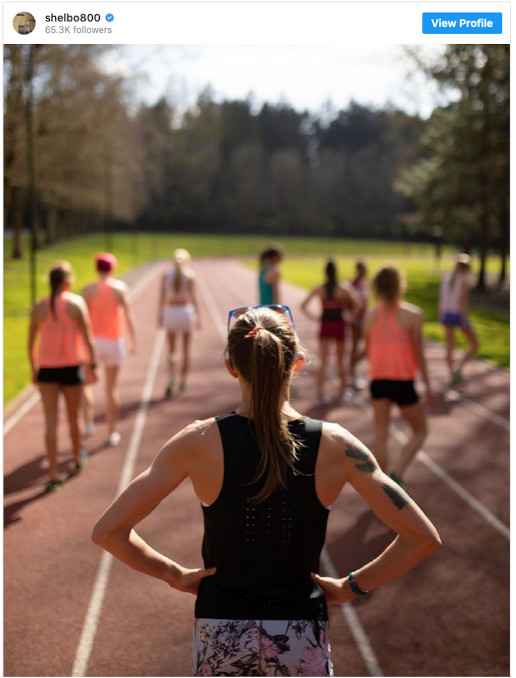
The decision included the following statement regarding the evidence against Houlihan:
“The Athlete’s explanation that the 19-NA in her sample resulted from her consumption of the meat of an uncastrated boar simply cannot be accepted. The explanation presupposes a cascade of factual and scientific improbabilities, which means that its composite probability is (very) close to zero.”
Specifically, the CAS panel found that though it was possible that Houlihan unwittingly ingested the meat of an uncastrated boar, for various reasons it was highly unlikely, and moreover, that even if she had, it would not account for the relatively high levels of nandrolone found in her samples. It found that the nandrolone found in her samples was consistent with that found in products commonly sold on the Internet for the purpose of enhancing athletic performance.
Several of Houlihan’s teammates defended her as a clean athlete, including Courtney Frerichs, who was with her when she ate the burrito (and who ate from the same food truck). Frerich’s sister, Lindsey Frerichs, who also ate with them that night, provided a witness statement, as did Bowerman coach Shalane Flanagan and athletes Matt Centrowitz (whom Houlihan was dating at the time) and Karissa Schweizer.
Despite their testimonies, the court found Houlihan to be guilty, saying she failed to provide a plausible explanation for the presence of nandrolone in her urine sample, and concluded that the anti-doping rule violation she was charged with must have been intentional.
The ban forced Houlihan to miss the U.S. Olympic trials and the Tokyo Olympics, where she was assumed to be a medal favourite, and it will prevent her from competing at the upcoming World Championships and the Paris 2024 Summer Games.
Editor’s update Sept. 3, 2021: According to a story on LetsRun.com, Houlihan plans to appeal her case to the Swiss Federal Tribunal.
Login to leave a comment
Ethiopia’s Selemon Barega wins gold at 10,000m in Tokyo
Selemon Barega captured gold in an exciting men’s 10,000m final today in Tokyo in 27.43.22, followed by race favourite Joshua Cheptegei and Jacob Kiplimo, both of Uganda, for silver and bronze – the first medals ever won by Ugandans in this event. Canadian record holder Mohammed Ahmed threw in a surge near the end, briefly leading the tightly bunched pack, but ended up finishing sixth in the 25-lap spectacle, with a season’s best time of 27:47.76.
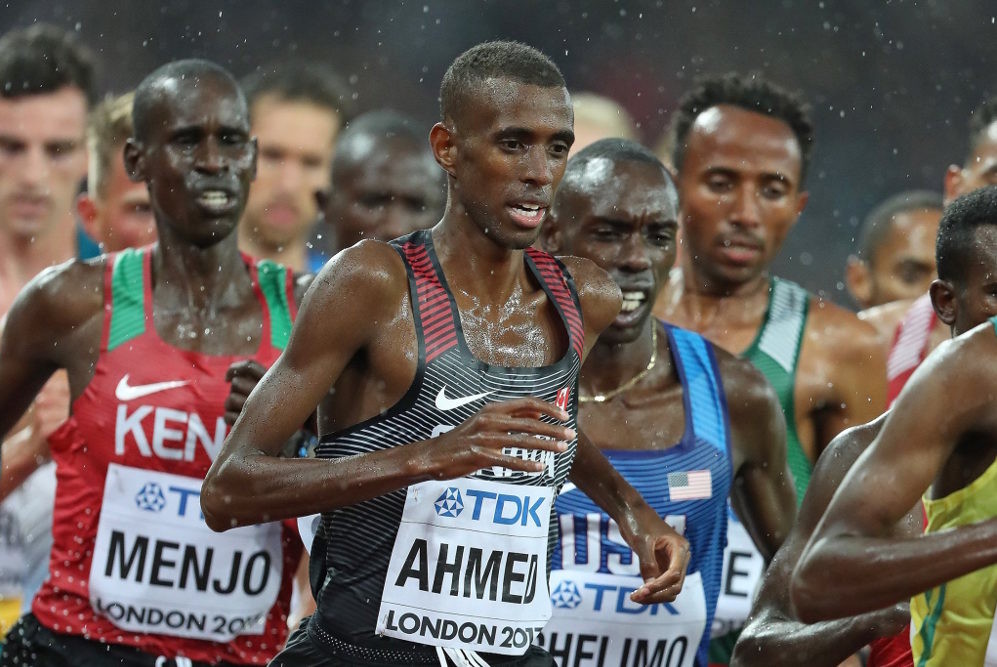
Ahmed managed to stay in contention and out of trouble early on in the race, going with Cheptegei, who took over the lead with four laps to go. With two laps to go, Ahmed took the lead, but in the end was out-kicked.
Ahmed also finished sixth in the 10,000m at the 2019 World Championships in Doha. Despite finishing off the podium, this is an incredible achievement for Canadian distance running. Ahmed grew up in St. Catharines, Ont., and ran at the University of Wisconsin. Since then, he has been training with the Bowerman Track Club in Portland, Ore., and his teammate, Woody Kincaid, finished 15th.
The 2018 Commonwealth Games silver medallist in 5,000m and 10,000m will be on the track again looking to reach the podium in the 5,000m heats on Tuesday, Aug. 3 at 7 a.m ET.
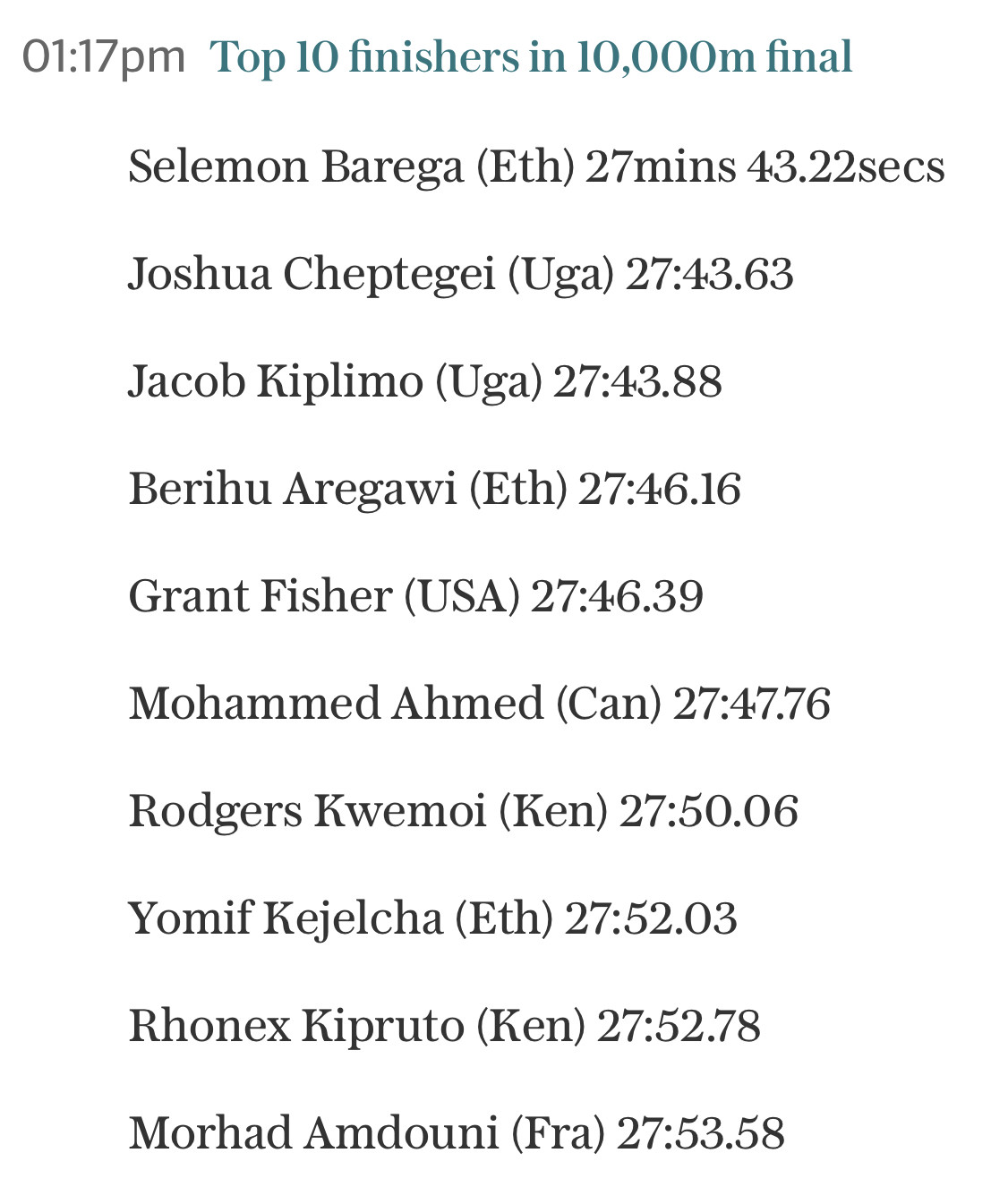
by Marley Dickinson
Login to leave a comment
Tokyo 2020 Olympic Games
Fifty-six years after having organized the Olympic Games, the Japanese capital will be hosting a Summer edition for the second time, originally scheduled from July 24 to August 9, 2020, the games were postponed due to coronavirus outbreak, the postponed Tokyo Olympics will be held from July 23 to August 8 in 2021, according to the International Olympic Committee decision. ...
more...2016 Olympic gold medalist triathlon Gwen Jorgensen is Leaving Bowerman Track Club
After four years at the Nike-sponsored club coached by Jerry Schumacher, Gwen Jorgensen announced today that she’s leaving Bowerman Track Club to be coached by Bobby McGee, who she has worked with in the past.
In a video uploaded to her YouTube channel, Jorgensen explained that a mix of career and family goals led to this decision. “I’ve had two marathons that just haven’t proven I can do it,” she said. “I want to just have a marathon, that’s like, OK, I can run this.” She and her husband, Patrick Lemieux, are also looking for a new place to live and are considering having more children.
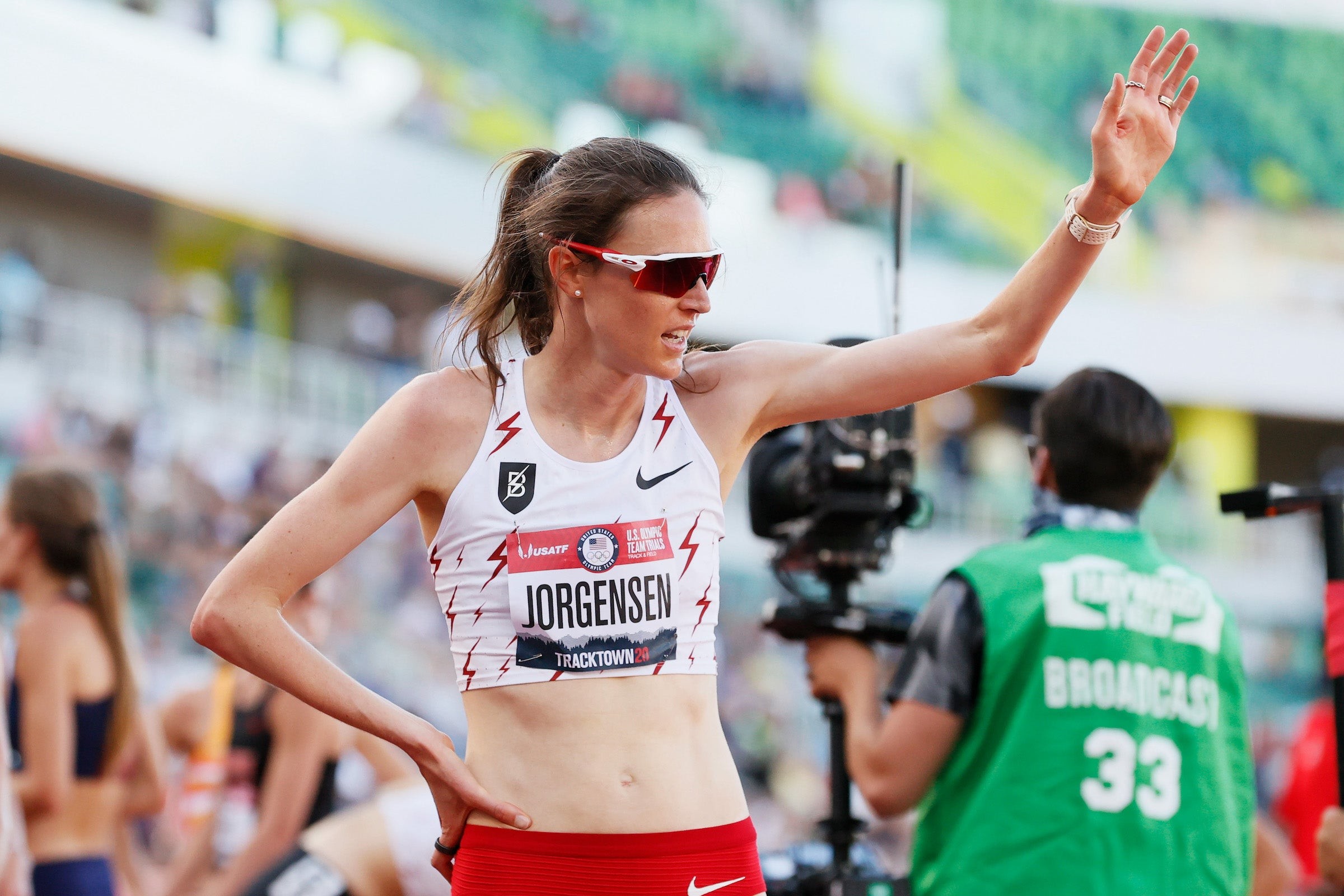
Jorgensen won the Olympic gold at the Rio Games in 2016 in triathlon, and announced a year later she would shift to running, with a focus on medaling in the marathon. Due to extended recovery after heel surgery to repair Haglund’s deformity in May 2019, she didn’t end up competing in the Olympic marathon trials last year—in early 2020, she decided to focus on the track.
“My goals in the marathon aren’t changing. My timeline is,” she said at the time.
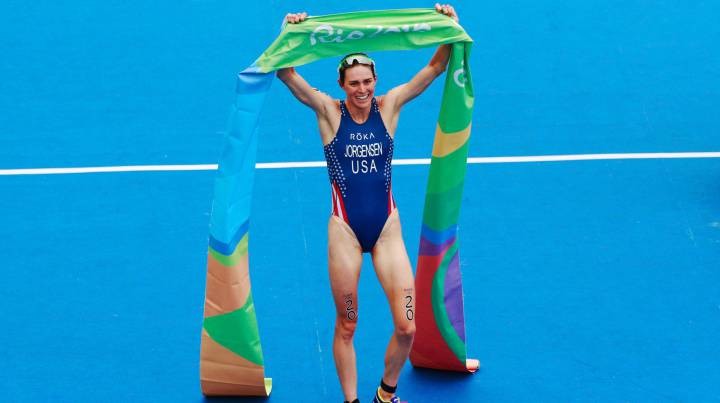
At the recent U.S. Olympic Track & Field Trials in Eugene, Oregon, Jorgensen competed in the final of the women’s 5,000m, finishing ninth in 15:50.62. (Two of her BTC teammates, Elise Cranny and Karissa Schweizer, finished first and second.) Jorgensen also lined up for the women’s 10,000m final, but pulled out sometime after recording a time of 26:50.07 at the 8000-meter mark.
“Today I had the best of intentions,” she wrote on Instagram following the race. “I got myself in good position the first mile (something I rarely do). I didn’t focus on splits, I just ran what I needed to stay in contention until I couldn’t.”
Searching for the Right Place to Live
Lemieux says that Bend, Oregon, Boulder, Colorado, and Bentonville, Arkansas are currently on their short list, and a visit to Asheville, North Carolina is next. “Really our criteria was: Can I mountain bike from the door? Can [Gwen] run outside 11, 11 and a half months of the year? And does it have good schools, and a family feel, and a small town vibe,” he says.
“We’re looking for a place that’s good for marathon training, but we also want this place to be somewhere where we could stay forever,” Jorgensen says.
Growing Their Family
At 35, Jorgensen is considering getting testing done to determine her “maternal age” and how many eggs she has left.
Jorgensen and Lemieux are parents to one son, Stanley. Jorgensen had a difficult labor experience that she says has made her reluctant to consider pregnancy again: “I also remember when I had Stanley and just saying, I can never come back to sport after this again. And just that I can never have more than one more child, just because of the experience I went through.” She mentioned that her pelvic floor therapist has told her her next experience will be great, but that they’re also open to adoption.
Goals for the Future
Unlike in the past, where Jorgensen publicly announced specific running goals for the future, she’s more broadly wanting to return to focus on the marathon. “Bobby was saying things that I just thought were outlandish, and I love that he has that belief in me,” she says. The couple admit that the decision on where to live is rushed, partly because Jorgensen wants to be settled for fall marathon training, though she didn’t specifically say which marathon she’s training for.
by Women´s Running
Login to leave a comment
Sara Hall and Sam Chelanga Take USA 10K Titles At the 52nd AJC Peachtree Road Race
Just after the sun rose in Atlanta on an unusually cool July morning, Sara Hall (Asics) and Sam Chelanga (U.S. Army) claimed the USA Track & Field 10-K road running titles at the 51st AJC Peachtree Road race in 31:41 and 28:43, respectively. Both athletes prevailed in late-race battles and each claimed $7,500 in prize money. The race was the third stop of the 2021 USATF Running Circuit.
The women started ahead of the men, and Hall was part of a 15-strong lead pack which quickly formed in the first kilometer. With her were other pre-race favorites, like Steph Bruce and Aliphine Tuliamuk (both of Hoka Northern Arizona Elite) and Gwen Jorgensen of the Nike Bowerman Track Club. But, there were also two less established runners in the lead group, Annie Frisbie and Emily Durgin (adidas).
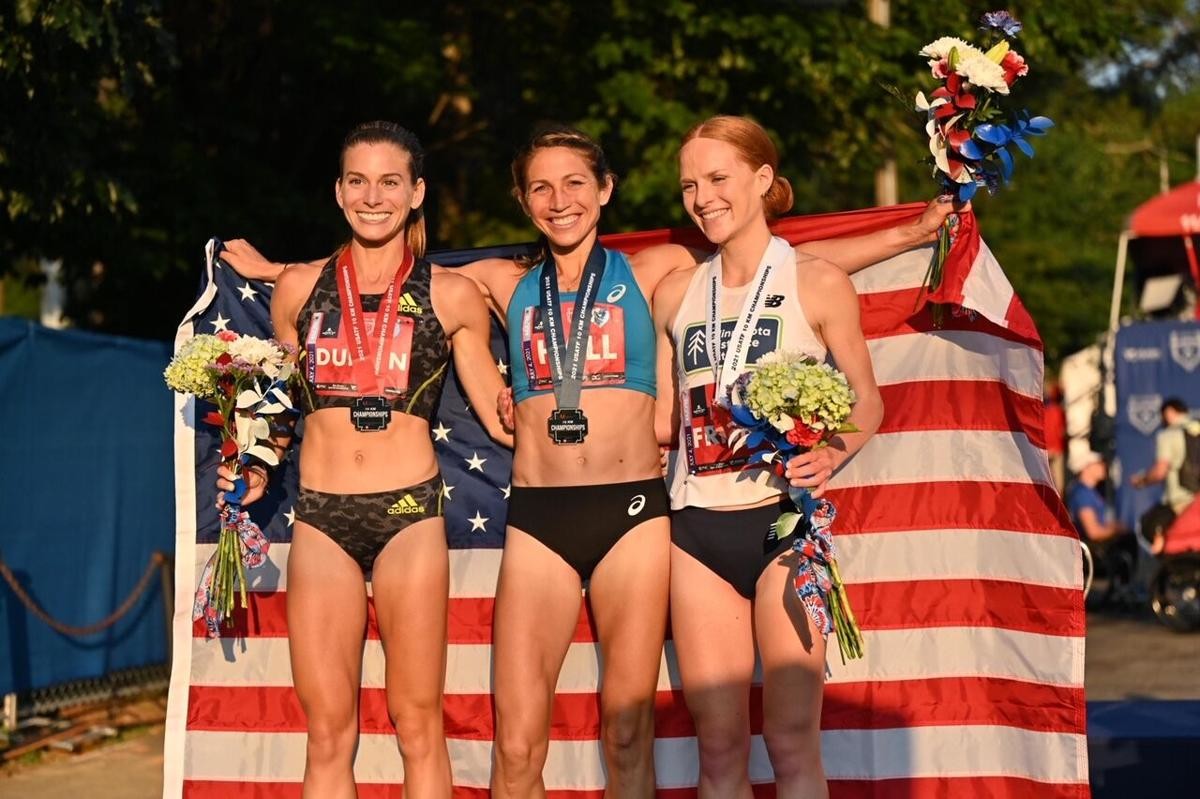
Durgin, 27, who finished ninth in the 10,000m at the USA Olympic Team Trials – Track & Field in Eugene, Ore., eight days ago, led the race through 5 kilometers in an honest 15:46. Hall remained with her as did Frisbie and Tuliamuk, but Bruce and Diane Nukuri (Asics) began to drift back. Durgin kept pressing, and 90 seconds later only Durgin, Hall and Frisbie remained in contention.
Hall, 38, who prior to today had won 10 national road running titles from the mile to the marathon, wasn’t surprised that it was Durgin who was pushing the pace. Both women live and train in Flagstaff, Ariz., and know each other well.
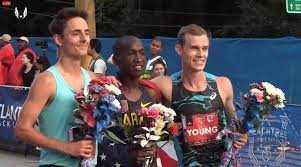
“She’s been running so strong this year,” Hall told Race Results Weekly by telephone. “At the Trials she had a great one. So, I didn’t really know who would be charging out there.”
At about the 7-kilometer mark Hall and Durgin increased the pace, and Frisbie (who is only 24) had to drop back. The two women spent most of the next three kilometers running side by side waiting for the right moment surge for the finish line. As she did at the Mastercard New York Mini 10-K on June 12, Hall finally showed her cards in the final 400 meters. She pulled away strongly from Durgin to win by eight seconds.
“That’s the first time I’ve kind of gone toe-to-toe with her in a race,” Hall said of Durgin. “She’s got a great future ahead of her. I’m excited to see what she does.” She added: “I’m really proud of her.”
Durgin set a personal best of 31:49, as did Frisbie in third (32:06). Nukuri rallied in the last two kilometers to finish fourth in 32:27, and Bruce (who won this race in 2018) got fifth in 32:35. Tuliamuk, the 2020 Olympic Trials Marathon winner, finished sixth in 32:43.
For Hall, today’s win lifted her spirits after she finished sixth at the Olympic Trials in the 10,000m, likely her final attempt at making an Olympic team on the track. She also felt like she got some payback for a bad race at the 2020 Olympic Trials Marathon, also held in Atlanta, where she was unable to finish.
“You know, I was wanting to kind of get through the hills,” Hall said of the middle portion of today’s race. “Obviously, these Atlanta hills crushed me in the Trials. So, I definitely wanted to have a strong run over those hills.” She continued: “Going into this race I just wanted to have fun out there… This was an opportunity for me to just to out there and enjoy racing.”
For Chelanga, today’s win was his first USA title since he won the 25-K crown in May, 2018, just before he said he was hanging up his racing flats.
“I had announced that I had retired after July 4th of 2018,” Chelanga said in his post-race television interview. “Then when I got back in the Army, people noticed in the physical test that I was really fast, and I ran the 10-miler for the Army team (October, 2019). So I did it. Long story, but now I’m back here.”
by LetsRun
Login to leave a comment
AJC Peachtree Road Race
The AJC Peachtree Road Race, organized by the Atlanta Track Club, is the largest 10K in the world. In its 48th running, the AJC Peachtree Road Race has become a Fourth of July tradition for thousands of people throughout the metro Atlanta area and beyond. Come kick off your Fourth of July festivities with us! If you did not get...
more...McLaughlin smashes world 400m hurdles record in Eugene with 51.90 and other highlights
In a culture saturated by so many other sports, those in the USA fret about who can be the face of athletics.
Who can be featured on television news? Who can be a crossover figure like gymnast Simone Biles? Who can be a Carl Lewis or a Jackie Joyner-Kersee?
As the 10-day US Olympic Trials closed on Sunday night (27) in Eugene, Oregon, there was a deep reservoir of young candidates – none more so than Sydney McLaughlin. The 21-year-old became the first woman to break the 52-second barrier in the 400m hurdles.
Record temperatures approaching 44C delayed the programme by five hours, but there was no delaying the inevitable: McLaughlin was going to break the world record, and she did so with her time of 51.90.
“I definitely saw it coming,” said Dalilah Muhammad, the world and Olympic champion. “She looked so good in the rounds.”

McLaughlin’s time broke the record of 52.16 set by Muhammad at the World Athletics Championships Doha 2019. McLaughlin, second in that race in 52.23, pulled away from Muhammad over the final two hurdles in Eugene.
Even with 2020 lost to the pandemic, the world record has been broken three times in 23 months – twice by Muhammad, once by McLaughlin.
That was the highlight of another historic day of young record-breakers. The trials ended with 11 world-leading marks, five by men and six by women.
Athing Mu, 19, set a trials record in the 800m; Cole Hocker, 20, became the youngest men’s 1500m champion in 110 years; JuVaughn Harrison, 22, became the first to make the US team in the high jump and long jump since Jim Thorpe in 1912; Noah Lyles, 23, ran a world-leading 200m, and Erriyon Knighton, 17, again lowered the world U20 record in the 200m.
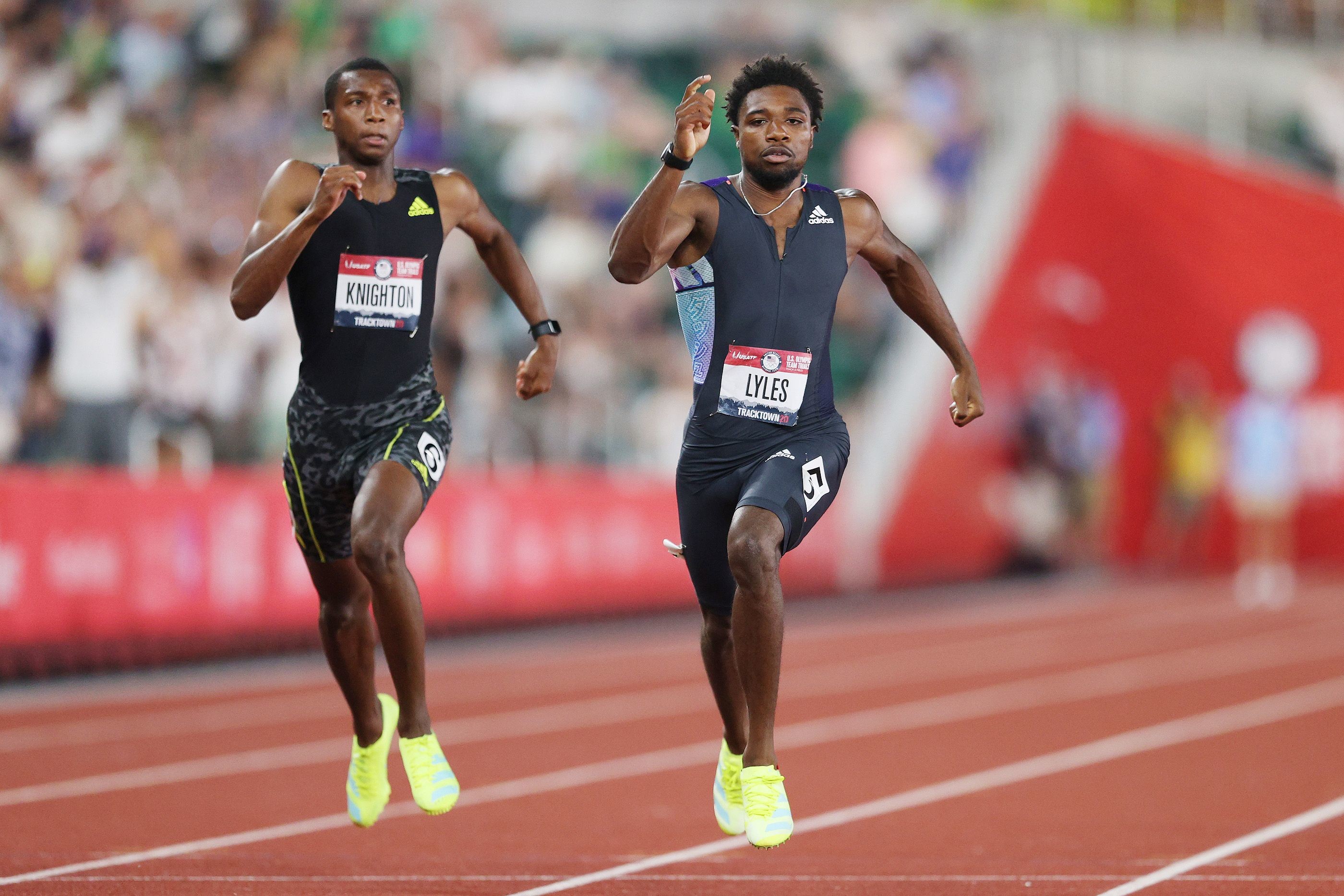
McLaughlin has been projected as the sport’s face in the United States since she made an Olympic team at age 16. After one college season at Kentucky, she turned professional.
“I was growing into my own person,” she said. “My faith is the biggest change. Trusting God and knowing He will carry me through.”
Her record-setting might not be over. Not only could McLaughlin lower her world record at the Tokyo Olympics, she should be named to the 4x400m relay team that could set one – though that mark (3:15.17) is arguably a much bigger ask.
McLaughlin trains in Los Angeles under Bobby Kersee, who also coached Joyner-Kersee.
“Bobby knows how to put things together when the time comes,” McLaughlin said.
Muhammad, who over the past 12 months has had to contend with injuries and a bout of Covid-19, finished second in 52.42, the third-fastest time of her career. NCAA champion Anna Cockrell took the third spot in 53.70, nearly a full second faster than her previous PB, in beating Shamier Little (53.85). Olympic bronze medallist Ashley Spencer stumbled over an early hurdle and finished seventh.
Likely to join McLaughlin in that 4x400m team is Mu, considering earlier this month she set a collegiate record of 49.57 – faster than the winning mark at the USA Trials.
Mu ran a world-leading 1:56.07 to win the 800m, breaking her own North American U20 record. World silver medallist Raevyn Rogers was second in a PB of 1:57.66 and US record-holder Ajee Wilson third in 1:58.39. Not until late did Wilson overtake Michaela Meyer, who was fourth in 1:58.55.
Mu sat in the pack for the first lap, passing through 200m in 27.54 and 400m in a swift 57.53. She then made her move on the second lap, positioning herself at the front with 200 metres to go. She kicked hard as she came off the final bend and, having covered the final lap in 58.54, crossed the line almost two seconds ahead of her nearest opponent.
In the men's 1500m, Hocker was in sixth place with about 150 metres left but used a closing rush to overtake Olympic champion Matthew Centrowitz, 3:35.28 to 3:35.34.
Yared Nuguse, 22, was third in 3:36.19, overtaking the most recent national champion, Craig Engels, who is also this year’s fastest US man (3:33.64).
Hocker put a finger to his lips past the finish as if to shush critics. An “in-the-moment thing”, he said.
“Last year I wasn’t at this level. I was nowhere near this level,” he said. “This whole year, I felt like I was proving myself to the world, but also proving my talent to myself. There’s a lot of negative talk out there, and I wanted to silence everyone.”
Hocker has not met the 3:35 Olympic standard but has a world ranking that looks sufficient to secure his spot on the US team.
He is the youngest US Olympian in the men’s 1500m since Marty Liquori, then 19, in 1968. And he is the youngest national champion in the men’s 1500 or mile since 1911, when Abel Kiviat won a few days after turning 19.
Hocker has run 23 races since 29 January. Thirteen were PBs. Of the 10 others, eight were prelims and one an NCAA indoor title.
“I’m impressed that he’s been able to do that since January and is showing no signs of letting up,” said Centrowitz.
Harrison won the high jump at 2.33m, beating Darryl Sullivan on countback. Olympic medallist Erik Kynard was fourth.
The delay allowed Harrison more rest for the long jump, in which he jumped a PB of 8.47m, completing the best ever one-day jumps double.
“It just gave my legs more time to recover and gave me a chance to eat something,” Harrison said. “I was ready to go earlier, even though they said it was too hot.”
Marquis Dendy, the 2016 world indoor champion, was second at 8.38m and Steffin McCarter third with 8.26m. Olympic champion Jeff Henderson was sixth with 8.08m, meaning he won’t defend his title in Tokyo.
In a competition that showcased newcomers, it was appropriate that the last athlete to secure an Olympic berth was Knighton. He is the youngest man on the US team since Jim Ryun in 1964.
World champion Lyles won the 200m in a world-leading 19.74, followed by Kenny Bednarek, 19.78, and Knighton, 19.84. Knighton broke his own world U20 record of 19.88 from Saturday’s semifinals. He set a world U18 record of 20.04 in Friday’s first round, then twice broke that.
Lyles was fourth in the 200m at the 2016 trials as an 18-year-old.
“Ever since then, the mind-set of being an Olympian has been on my mind,” said Lyles. “Having the pause on 2020 has probably been my hardest yet. I don’t think anyone can prepare you for the lion you have to slay at the Olympic Trials.”
In the heptathlon, the year’s top three scores were posted by Annie Kunz (6703), Kendall Williams (6683) and Erica Bougard (6667). Kunz, whose previous best was 6153, did not have the Olympic standard until this week.
Kunz broke or was close to her PBs in all seven disciplines. She started with a marginally wind-assisted 12.95 in the 100m hurdles and followed it with 1.81m in the high jump, an outdoor PB. She then threw 15.73m in the shot put, which moved her into the lead overall – a position she maintained after clocking a PB of 23.71 in the 200m to end the first day at the top of the leader board.
She started the second day with a huge PB of 6.50m in the long jump, but briefly relinquished her lead after the javelin (45.06m). Kendell Williams, who ended the first day in third place, was having a strong second day with marks of 6.73m in the long jump and 47.41m in the javelin. It meant Williams went into the final event with a two-point lead over Kunz.
But Kunz ensured she stayed ahead of Williams in the 800m, eventually clocking 2:15.24 to retake the lead with a score of 6703, moving to fifth on the US all-time list. Williams, who finished second with a PB of 6683, is now sixth on that list.
Taliyah Brooks, in fourth place through five events, had to withdraw because of the heat.
“I have grown immensely since 2019,” said Kunz, who finished 13th at the 2019 World Championships. “It feels like the sky’s the limit now.”
The men’s 5000m, held in the morning to escape the worst of the heat, was won by Olympic silver medallist Paul Chelimo. He gradually veered from the rail to inside of lane four to force out Bowerman Track Club’s Grant Fisher and Woody Kincaid.
Chelimo was first in 13:26.82, followed by Fisher (13:27.01) and Kincaid (13:27.13). Their respective closing laps were 52.83, 52.99 and 52.74. Cooper Teare was fourth in 13:28.08 off a 53.97 last lap.
Fisher and Kincaid became the first pair to finish in the top three of 5000m and 10,000m at the same US Trials. Qualifying in both had been done previously, but never two at the same trials.
by World Athletics
Login to leave a comment
Emma Coburn continues to dominate the 3,000-Meter Steeplechase
As predicted, it was a race for third place in the 3,000-meter steeplechase final on Thursday, at the U.S. Olympic Track & Field Trials, in Eugene, Oregon. And for Val Constien, third probably felt a lot like first.
Emma Coburn and Courtney Frerichs were the known entities. They’ve never missed making a national team in the event and their results on Thursday were no different. Coburn won in an Olympic Trials record of 9:09.41 and Frerichs was runner-up in 9:11.79. Then came Constien, a University of Colorado grad and 2019 Pac-12 champion, in 9:18.34—a personal best by six seconds.
“I think the U.S. steeple right now is the deepest it’s been in years,” Coburn said, after the race. “There’s so many women who have run under 9:30 this year. Knowing that strength and that depth, I wanted to just play off some of some of my strengths. If we were running 9:30 splits early in the race, I knew that was well within my comfort zone and I could push really hard the last year.
Since 2016, the U.S. team for world championships and the Olympics has remained constant: Coburn, Frerichs, and Colleen Quigley. And until Quigley announced her withdrawal from the race due to injury just days ago, many assumed the trio would make Team USA once again.
Quigley’s absence opened up an array of possibilities for a field that included eight athletes who had the Olympic qualifying time already (9:30). Until 800 meters to go, it looked like Leah Falland might have had a lock on the podium, but she caught a toe on a barrier and fell to the track. Although she got back up quickly and regained position, the combination of adrenaline and trying to regain position was too much. She had nothing left in the last 200 meters and placed ninth.
“I was just really cooked after all of it,” Falland said, in an emotional post-race interview. When asked how confident she was that she could have made the team, she said, “I knew I could do it. I knew it was in there. It was kind of shocking, to be honest. I worked really, really hard to get back to a place where I could contend for that team.”
When Constien saw Falland stumble, she recognized she had an opportunity.
“I kind of knew that was my shot…and then with 400 meters to go, I just ran as hard as I possibly could,” Constien said. “I had no idea where [Falland] was…I just gave it my all.”
Frerichs, 28, was analytical about her race, already identifying what she wants to work on between now and competing at the Tokyo Games. A member of the Bowerman Track Club, she’s the American record holder (9:00.85) and 2017 world championships silver medalist in the event, as well as 2016 Olympian. She said her second-to-last water barrier needs work, as well as her closing speed.
“I think we’re bringing an incredibly strong team [to Tokyo],” Frerichs said. “I mean, it took 9:18 to make the team today. That’s the fastest third-place finish that’s ever happened. That’s incredible. And then I think that Emma and I have consistently been battling up at the front and that force together makes a statement. We’re ready to have a special moment in Tokyo.”
Coburn, 30, is the 2017 world champion and the 2016 Olympic bronze medalist, the first American woman to medal in the steeple. She and Joe Bosshard, her husband and coach, have created a Boulder, Colorado-based training group that includes Cory McGee, who just qualified for the Tokyo Games in the 1500.
Constien is a first-time Olympian who works a full-time customer support job for Stryd, a company that makes power meters that runners put on their shoes to figure out the optimal training intensity. She receives free apparel from TrackSmith but otherwise self-funds her running career, including paying her way to Eugene to compete at the Trials.
“I think that being a blue-collar runner is really cool. Anybody with a full-time job can still have Olympic aspirations,” she said.
Training in Boulder, Constien often runs with Jenny Simpson. She ran the Olympic qualifying time at the Portland Track Festival at the end of May. It was then that she realized it wasn’t enough to just make it to the final—she wanted to make it to Tokyo.
“It just seems like three weeks ago I woke up and said, ‘I could do this,’” Constien said. “So it was really fun. Goals change and dreams get bigger, so I’m really happy that this has happened.”
by Women’s Running
Login to leave a comment
Tokyo 2020 Olympic Games
Fifty-six years after having organized the Olympic Games, the Japanese capital will be hosting a Summer edition for the second time, originally scheduled from July 24 to August 9, 2020, the games were postponed due to coronavirus outbreak, the postponed Tokyo Olympics will be held from July 23 to August 8 in 2021, according to the International Olympic Committee decision. ...
more...Elise Cranny Makes Her First Olympic Team, Wins 5,000 Meters
With a blistering last lap in 63.73 seconds, Elise Cranny of the Bowerman Track Club outkicked her teammate Karissa Schweizer and won the 5,000 meters in 15:27.81.
Schweizer was second in 15:28.11. Rachel Schneider, who trains in Flagstaff, Arizona, was third in 15:29.56. All three are making an Olympic team for the first time.
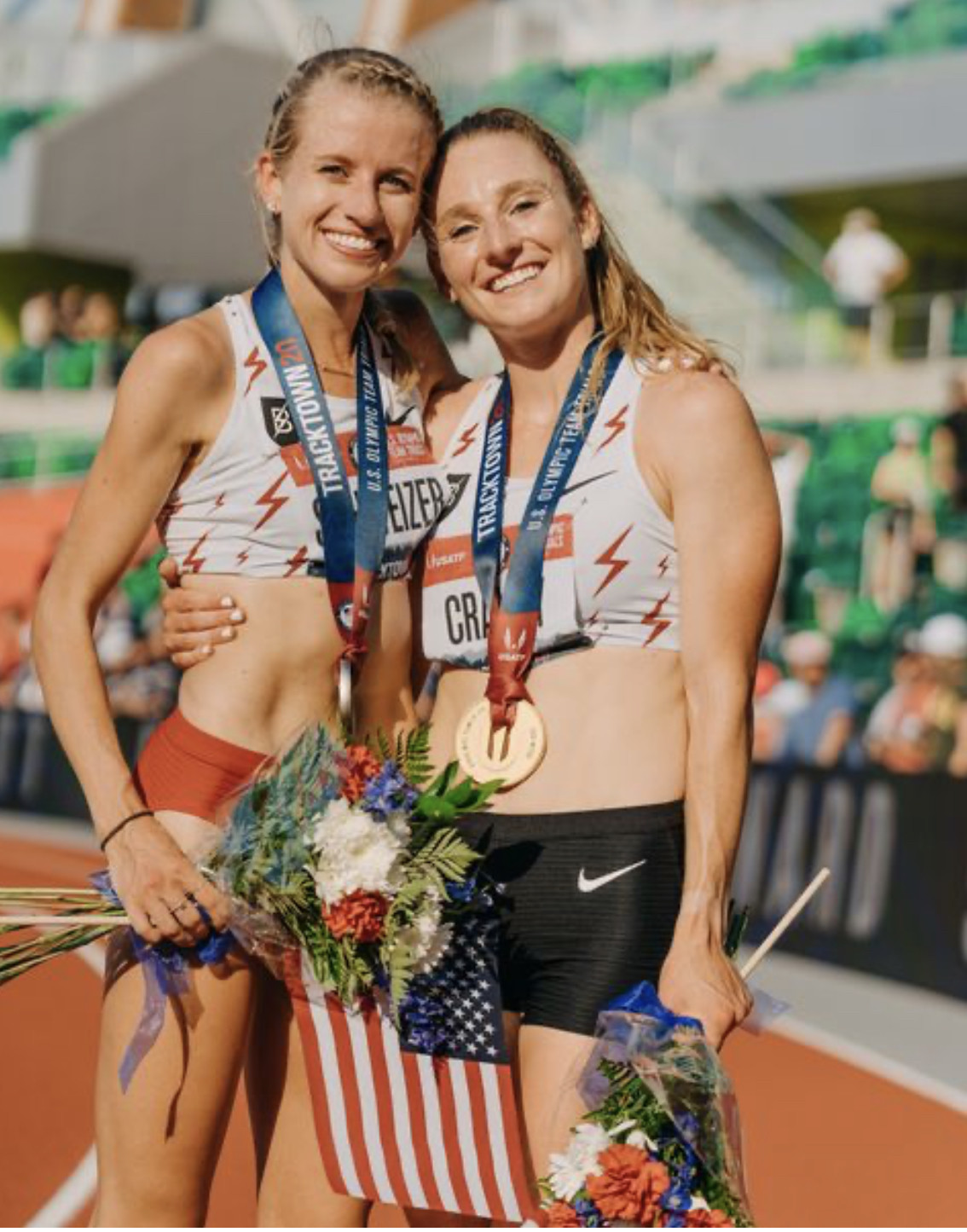
Abbey Cooper, who ran 15:07 in her preliminary heat on Friday, faster than the Olympic standard and her fastest time since 2015, finished fourth. She’ll be the Olympic alternate.
Given the warm weather in Eugene, Oregon—the temperature was 94 degrees—the race got off to a slow start. With a mile to go, the pace quickened considerably, shaking up the pack. With three laps remaining, the first four had separated themselves from the rest and there was no doubt the Olympic team would come from that group.
“It was pretty hot out there,” Cranny said. “It was a bit tactical and slow in the beginning.” The plan, she said, was to stay out of trouble and then “slowly squeeze it down.”
Schweizer’s take on the race plan: “With a mile to go, we were going to make it hurt,” she said.
Rachel Schneider looked around and realized four people were remaining and she had to beat only one of them. “We visualized this race quite a bit in a whole bunch of different scenarios,” she said. “I felt super confident I could go with whatever move, whenever it was made in the race.”
She downplayed the role of the weather: “It didn’t play a part at all,” she said. “Everyone is racing in the same conditions. During the warmup, I wore an ice vest. Outside of it, don’t worry about it.”
Cranny and Schweizer, who holds the American record in the 3,000 meters, are regular training partners of Shelby Houlihan. During 2020, Houlihan and Schweizer ran the two fastest American times ever for the 5,000 meters at an intrasquad race in Portland: Houlihan ran 14:23.92, the American record, and Schweizer ran 14:26.34.
On June 14, days before the start of the Trials, Houlihan announced she had tested positive for nandrolone, a banned substance, back in December. She subsequently appealed to the Court of Arbitration for Sport, which ruled against her. The ruling kept her out of the Olympic Trials.
Despite the distraction of the Houlihan test, the Bowerman Track Club has had a good meet so far. On the first night of competition, Woody Kincaid and Grant Fisher made the team in the men’s 10,000 meters.
Earlier in the day today, Sean McGorty, Cranny’s boyfriend, raced the preliminary heats of the men’s steeplechase. He had to stop midway through to adjust his shoes and fell into last place. But he made his way back up through the pack and was able to advance to the final on time.
Cranny, doing her warmup for the 5,000 meters, was too nervous to watch him race. At one point she looked out and saw him in last. Other teammates in the 5,000 meters, Gwen Jorgensen and Vanessa Fraser, came to tell her the good news when he had advanced to the final. Bowerman teammate Karissa Schweizer finished second, and Rachel Schneider was third.
by Runner’s World (Sarah Lorge Butler)
Login to leave a comment
Woody Kincaid Wins the Men’s 10,000 Meters at the Olympic Track and Field Trials
In the first track final of the U.S. Olympic Track & Field Trials, Woody Kincaid, Grant Fisher, and Joe Klecker earned spots on Team USA heading for Tokyo.
Kincaid, 28, finished in 27:53.62, by virtue of a blistering final 400 meters, which he covered in 53.47. His Bowerman Track Club teammate Fisher, 24, was less than a second behind in 27:54.29, and Klecker, also 24, of the new On Athletics Club in Boulder, ran 27:54.90.

Ben True, 35, finished in hard-luck fourth place; he couldn’t match the closing kick of the three Olympians and crossed the line in 27:58.88. True, who has never made an Olympic team, will be the alternate.
The race opened up with a fast pace, because most of the field did not have the 27:28 Olympic qualifying standard they need—along with a top-three finish—to earn a trip to the Games. This race was the last chance for them to run the standard.
Conner Mantz of BYU, Robert Brandt of Georgetown, and Frank Lara of Roots Running ran up front for the first two miles, but by halfway, reached in 13:56, the pace slowed, leaving no hope for anyone without the standard to get onto the team. Lopez Lomong dropped out, grabbing his right leg, as did Eric Jenkins, leaving only five men with the standard in the field.
The big crowd in the early miles was distracting for Kincaid. “My confidence was the lowest 10 laps in, that’s when the doubts really crept in,” he said in a press conference after the race. But as the miles clicked off, the pace slowed, and he made his way to the front, he felt better. “With four laps to go, this is what I had practiced in my mind over and over. I’m going to get into third or fourth position, just like practice, and that’s what happened.”
Kincaid said his last lap was the easy part: “It’s just everything you’ve got,” he said. “Getting there, in a position to win, is the hard part.”
He had praise for his teammate, Fisher, whom he runs with every day. “It’s a shame that I like him so much, because I have to race him all the time,” Kincaid said.
Kincaid said he plans to race the 5,000 meters and if he makes the team in that event, he’ll do both the 10,000 meters and 5,000 meters at the Games.
Fisher was soaking in the moment. “I’ve dreamed about this moment, but even now it doesn’t feel real,” he said in the post-race press conference. “I don’t even know how to describe it, but I’m just so happy.”
Klecker, the third-place finisher, had his collegiate career at the University of Colorado shortened by the pandemic. “This means a lot,” he said. “I mean I had my NCAA career cut short. I never won an NCAA title, but making an Olympic team makes up for that.”
He is the son of Janis Klecker, a 1992 Olympian in the marathon for the U.S. Her advice? Candy. “She told me that the night before she made an Olympic team, she ate a Snickers bar, and I followed that to a tee and it worked out,” Klecker said.
True said he was turning his attention to the 5,000 meters later in the meet, but he has plenty of other things to look forward to. His wife is expecting their first child on July 15, and he’ll make his marathon debut this fall.
Galen Rupp, who already is representing the U.S. in the marathon, finished sixth in 27:59.43.
It is the first Olympics for Kincaid, Fisher, and Klecker. The event represents a changing of the guard—the top three are a complete turnover from the 2016 squad, when Rupp, Shadrack Kipchirchir, and Leonard Korir were the Americans who went to Rio in the event.
by Runner’s World
Login to leave a comment
American record holder Shelby Houlihan receives four-year ban week before Olympic track trials
Accomplished distance runner Shelby Houlihan was handed a four-year ban exactly one week before the start of U.S. Olympic Track and Field Trials.
Houlihan was considered an Olympic medal contender entering this year. The 2016 Olympian holds American records in both the 1500m and 5000m. In 2018, she became the second woman ever to win both distances at the U.S. outdoor championships.
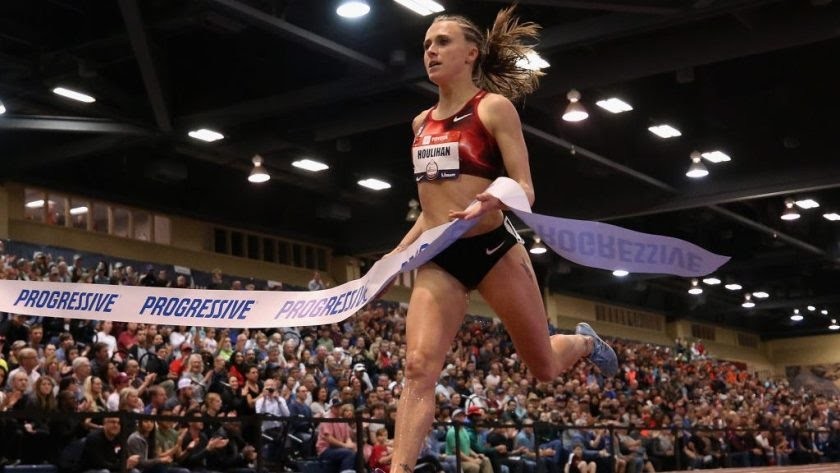
Houlihan placed fourth in the 1500m at the 2019 World Championships.
The 28-year-old had not competed yet this year, which was explained on Monday evening.
Houlihan tested positive for nandrolone in an out-of-competition urine test administered by the World Anti-Doping Agency on Dec. 15, 2020.
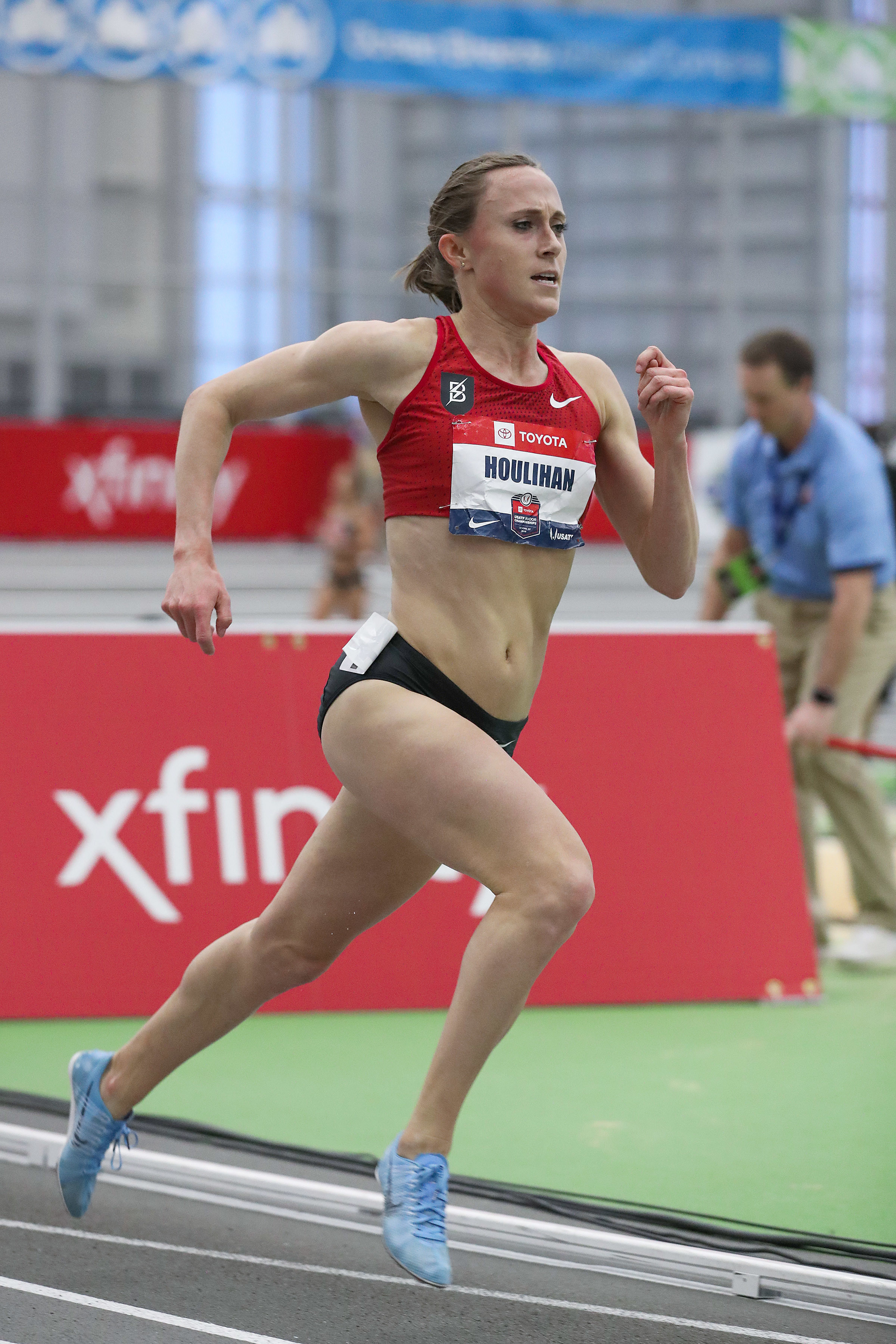
Nandrogen is an androgen and anabolic steroid known to increase muscle mass.
In a virtual press conference, well-known sports attorney and founder of Global Sports Advocates Paul Greene walked reporters through Houlihan’s case, alongside Houlihan and Bowerman Track Club coaches Jerry Schumacher and Shalane Flanagan, an Olympic silver medalist in the 10,000m.
“Shelby is an innocent athlete,” Greene declared. “What happened to her is entirely unjust.”
“I don’t have the words to articulate the depth of sadness I feel for you,” head coach Schumacher said in his statement.
After being notified of the positive test in January, Houlihan created a food log of everything she had consumed the week prior to the test.
Her team believes the result came from a pork burrito Houlihan purchased at a food truck near her home in Beaverton, Oregon, and ate the night before the 6 a.m. test.
It has been noted in WADA documents that consumption of meat, specifically pig offal, can lead to the presence of nandrolone.
Greene explained that Houlihan initially received a provisional suspension of more than three months, which caused them to opt for a single hearing before the Court of Arbitration for Sport.
In the interim, Houlihan had a hair sample tested and passed a polygraph test in an effort to prove her innocence. Greene hired a private investigator and former WADA scientist to help prove their case as well. He pushed for the sample to be tested at a second lab to no avail.
According to Greene, Houlihan has been tested approximately 100 times since 2016 and has never tested positive or missed a test in that time.
The CAS hearing was held the first week of June, with the final ruling of a four-year ban delivered on Friday, June 11. That would take Houlihan out of the running of the Paris 2024 Olympics as well; she said she is currently unsure of what her future holds.
“I feel completely devastated, lost, broken, angry, confused and betrayed by the very sport that I loved and poured myself into just to see how good I was,” Houlihan said as she fought back tears. “I want to be very clear: I’ve never taken any performance-enhancing substances and that includes the one of which I have been accused. … I do this sport because I love it, I have so much fun doing it and it’s always the best part of my day.
“This sport means everything to me. I believe doping and cheating is weak. … I would never disrespect the sport, my competitors, my teammates, my coaches, my family and my fans this way. I love the sport too much. …
“I’ve always wanted to stand at the top of an Olympic podium with a gold medal around my neck, knowing I did that, and now I am not sure that will ever happen.”
Greene is considering an appeal to the Swiss federal tribunal.
Login to leave a comment
Olympian Amy Cragg Officially Retires and Joins the Puma Coaching Staff in North Carolina
She won bronze in the marathon at the 2017 world championships and ran 2:21:42 at the 2018 Tokyo Marathon—her lifetime best.
Amy Cragg, who represented the U.S. at the 2012 and 2016 Olympics, is officially retiring from professional running. She is now coaching the Puma-sponsored training group alongside her husband, Alistair, in Chapel Hill, North Carolina.
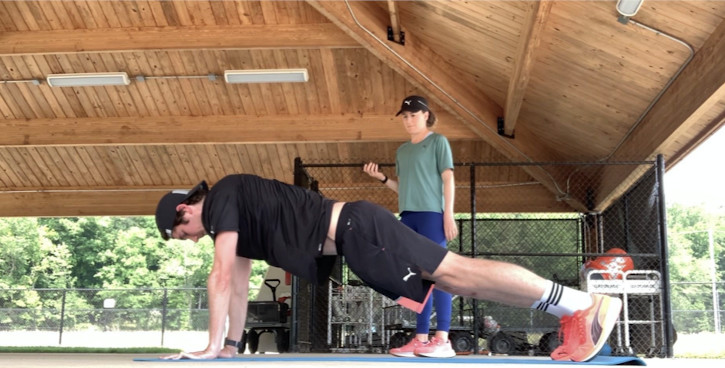
Her career highlights include winning the 2016 Olympic Marathon Trials, finishing third in the marathon at the 2017 world championships, and running a 2:21:42 PR in the 2018 Tokyo Marathon.
Cragg withdrew from the 2020 Olympic Marathon Trials last February, citing illness.
Amy Cragg—who won the 2016 Olympic Marathon Trials, took the bronze medal in the marathon at the 2017 IAAF World Championships, and ran the 2018 Tokyo Marathon in 2:21:42, making her the sixth-fastest American in history at the distance—announced she is retiring from competitive running.
She is now officially a coach with the new Puma-sponsored training group based near Chapel Hill, North Carolina. Her husband, Alistair, is the group’s head coach.
Cragg, 37, said in a phone call with Runner’s World that she took the time she needed to make the decision. “It was definitely time [to retire],” she said. “It’s been great. I’m definitely enjoying life on the other side.”
She had suffered from persistent fatigue over the past couple of years, which kept her from competing at the 2020 Olympic Marathon Trials. Now, she says, she’s feeling well again and running between two and four miles, several times a week, “just to get out there and enjoy it.”
In the summer of 2020, Cragg and her husband drove across the country from their home in Portland, Oregon, where she had trained with Bowerman Track Club for years. They looked at various locations along the way, trying to figure out where to establish Puma’s new training base.
Although they considered different spots at altitude, they ultimately decided the Research Triangle area of North Carolina was ideal for its weather, ease of travel to European track meets and American road races, and the 22-mile, crushed gravel American Tobacco Trail, which has every quarter mile marked. (The Craggs took a wheel out to measure 10 miles of the trail, and the quarters were spot on.)
They also considered medical support in the area, affordability, and job prospects for runners’ significant others.
“I’ve lived in places where people didn’t have a social life or their significant other didn’t have a social life or couldn’t work, and they were depressed,” Cragg said, “and that doesn’t lead to longevity in the sport. We want to create an environment that leads to longevity in the sport. For a lot of people, it takes them a little longer to get there. However long it takes you, we want it to be a good place for that.”
The team currently has Taylor Werner and Fiona O’Keeffe, both of whom are qualified for next month’s U.S. Olympic Track and Field Trials; Steven Fahy, a steeplechaser who currently is nursing a foot injury; and Emmanuel Roudolff-Levisse, a French marathoner. The Craggs—believers in the powers of group training—expect their numbers to grow, albeit slowly.
“We aren’t in a rush to get people,” she said. “We want to get the right people. We’re hoping these are 10-year athletes, not two- or three-year athletes.”
Cragg’s career flourished when she was in her 30s, and she was involved in some of the more memorable moments in Trials history. In 2012, she narrowly missed making the team in the marathon, finishing fourth at the Trials in Houston behind Shalane Flanagan, Desiree Linden (then Davila), and Kara Goucher.
But Cragg (then Hastings) turned her attention back to the track and won the 10,000 meters at the 2012 track trials to earn her first trip to the Games. At the Olympics in London, she finished 11th in 31:10.69, her personal best.
Four years later, at the 2016 Olympic Marathon Trials in Los Angeles, Cragg and training partner Flanagan ran stride for stride together, breaking the race open before the halfway point. But by the 23rd mile, Flanagan was struggling in the heat. Cragg slowed to stay with her, urging her onto the finish. With less than two miles to go, and Linden lurking in the background, Cragg finally left Flanagan and won the race in 2:28:20, waving her visor as she broke the tape.
Linden was second, in 2:28:54, and Flanagan willed herself across the line in third in 2:29:19, where she collapsed and was carried off the course. In Rio, their finishing order was reversed: Flanagan was sixth, Linden seventh, and Cragg ninth, the best collective performance by any country’s three athletes in the event. (The 2016 gold and silver medalists are currently serving suspensions for anti-doping violations.)
Training at times up to 130 miles per week with the Bowerman Track Club in Portland, Cragg qualified for the world championships in 2017 in London. At the race, she moved into third place with 400 meters and sprinted to a bronze medal.
Cragg said that was her top moment as a professional runner. “It kind of just made my entire career worthwhile,” she said.
Seven months later, in Tokyo, she ran her lifetime PR, 2:21:42, taking nearly six minutes off her previous best and putting her among the country’s top runners in history.
Cragg’s world championships bronze marked a renaissance of sorts for American women’s distance running. In Chicago in 2017, Jordan Hasay ran 2:20:57, Flanagan won the New York City Marathon in 2017, and Linden won Boston in 2018.
But after Tokyo, Cragg experienced a series of health setbacks and never was able to regain her top form for a marathon. She ran 15:54 5K in New York in November 2018 and finished third at the U.S. 5K championships, but she raced only twice in 2019. Both races—a 10K and a half marathon—were far from her best. She had planned to run the Chicago Marathon, but pulled out in the summer.
In an interview with Runner’s World at the time, Cragg talked about the fatigue she felt. “I think we just went too hard for too long,” she said. “I ‘cooked myself’ is what I’ll say. Took some time off when we realized it wasn’t coming around for Chicago. Now I’m feeling a lot better and ready to go.”
But citing illness, she withdrew from the 2020 Olympic Marathon Trials in February in Atlanta.
Her only race results from 2020 were pandemic-era intrasquad meets put on by her Bowerman Track Club at a high school track in Portland. Cragg ran a few 400s and 800s at slow paces—seen as fulfilling contractual obligations.
Her peers had nothing but praise for her.
“I’m thrilled for Amy. She’s had a tremendous career,” Linden, who first met Cragg when they were undergraduates at Arizona State University, told Runner’s World in a text message. “If people could have eavesdropped on our long run conversations during our ASU days, they would have laughed at how audacious our goals were. It’s been incredible to watch her check them all off one by one and then accomplish even more. I’m grateful that while being in a hyper-competitive career, Amy’s been able to remain a friend, and I know we’ll have many more conversations about her future goals.”
Shalane Flanagan wrote in a text, “I’m so happy for her. She was a wonderful teammate and one of the toughest athletes I got to train alongside. I treasure all the time spent together chasing big goals and dreams.” 

by Runner’s World
Login to leave a comment
American Olympic steeplechaser Colleen Quigley signs with Lululemon
American Olympic steeplechaser Colleen Quigley announced on Instagram on Wednesday that she has signed a new sponsorship deal with Lululemon. The former Nike athlete has been without a sponsor since February, and in her announcement video explained she chose Lululemon because she wanted a sponsor that “understood the whole me.”
This is the second big announcement from Quigley this year, coming a few months after she surprised the running world when, in early February, she left the Bowerman Track Club, where she’d been training for five years. Her new coach is Josh Seitz, who worked with her while she attended Florida State University.
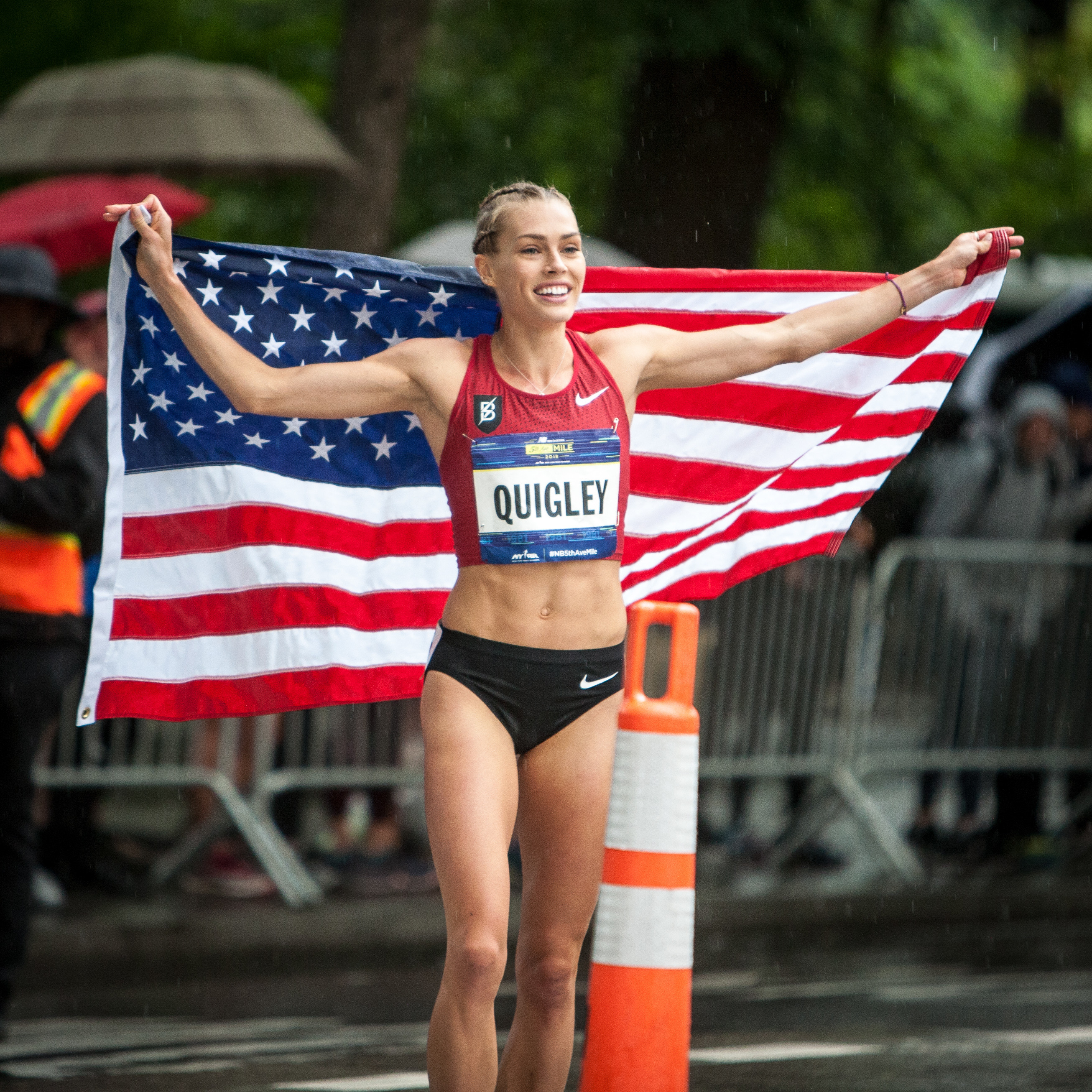
Quigley explains her decision on her website in a post titled “Why lululemon?” In this post, she talks about the expectations that are often placed on professional runners and what they’re told they should or shouldn’t do, and explains that she no longer wants to let that dictate her actions.
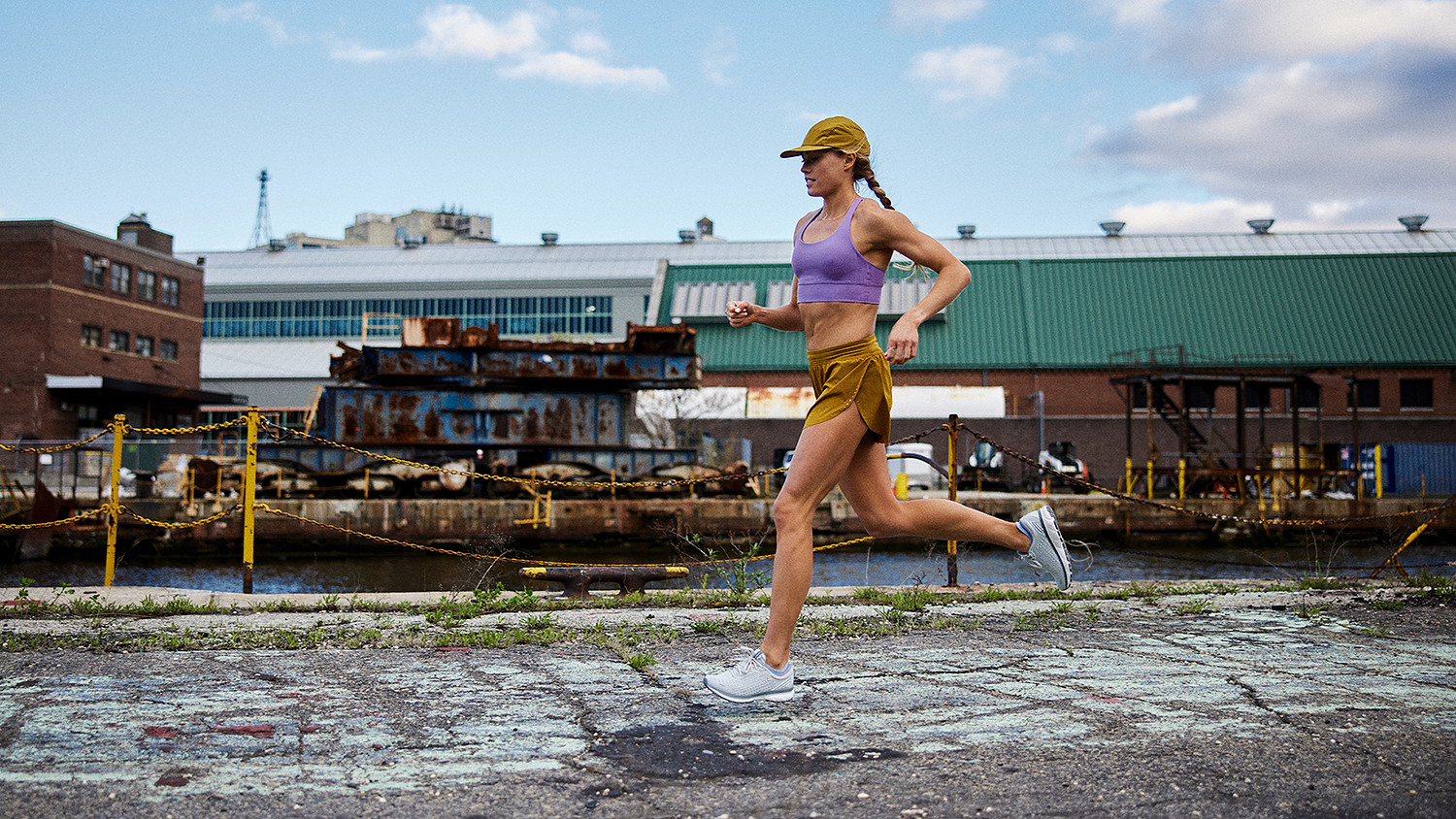
“This runner does more than run. And finally this runner will no longer work with brands or people who don’t accept and even celebrate every side of her both off and on the track,” she said.
Along with her announcement, she has included a contest in which she is giving away four $150 Lululemon gift cards and four pieces of autographed Lululemon apparel. If you want to enter the contest you must first subscribe to Quigley’s newsletter.
by Brittany Hambleton
Login to leave a comment
3 Key Reasons Why Records Keep Getting Broken in 2021
It’s not just the shoes. But they certainly help.
The times have been spectacular across the globe.
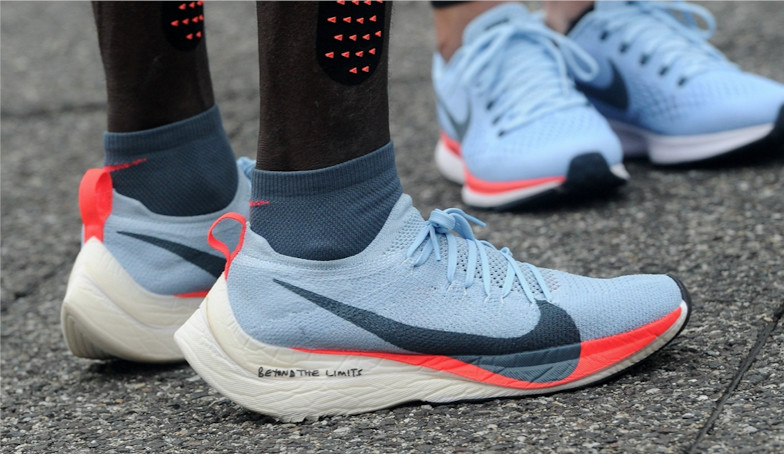
In Europe, four men broke the previous world half marathon record in December in Valencia, Spain. Earlier this month, Gudaf Tsegay of Ethiopia set a world record for the indoor 1500 meters on February 9, running 3:53.09 at a meet in Liévin, France.
Closer to home, Americans Sara Hall, Keira D’Amato, Martin Hehir, and Noah Droddy reshuffled the list of top 10 Americans in the marathon.
On the track, Donavan Brazier, Bryce Hoppel, Elle Purrier, and Grant Holloway have set American or world records.
High school and college athletes are in on the action, too. Hobbs Kessler set the high school indoor mile record with his 3:57.66, and Cooper Teare of the University of Oregon took almost 2 seconds off the collegiate mile record when he ran 3:50.39. Athing Mu at Texas A&M, who was thought to be an 800-meter runner, has been turning in world-class 400-meter splits and anchored her teammates to a collegiate record in the 4x400 meters.
What’s going on with all these fast times? Yes, there is new shoe technology, but it goes well beyond that for these record-shattering runners.
Shoe technology that changed road racing is now changing track racing
Back in 2017, when Eliud Kipchoge attempted for the first time to break two hours in the marathon on a racetrack in Monza, Italy, he wore a new type of shoe from Nike, the Zoom Vaporfly Elite. The shoes promised a 4 percent efficiency benefit, through a combination of a new type of foam, which was lighter and more responsive than previous foams, and a stiff carbon fiber plate to stabilize the foam and move the foot as it pushes off the ground.
Nike’s innovative design has evolved since 2017 and has been emulated, with varying degrees of success, by other shoe brands, like Saucony and Adidas. Now the same technology—better foam with a stiff plate inside—has moved into track spikes, said Geoff Burns, a post-doctoral fellow at the University of Michigan who is researching biomechanics and sport performance.
“The absolute effect may be a little bit smaller,” he said. “But because of the controlled environment and frequency of racing on a track, it’s much more apparent.”
Burns said that although Nike’s competitors are closing the gap, he hesitates to say that they’ve caught up. He praises Adidas and Saucony road shoes, and Adidas and New Balance for track spikes. “But if I were getting on a starting line, for a marathon or a track race, I would be in the Nike shoes,” he said.
Races are set up in near-perfect conditions
With the pandemic, the traditional lineup of road races and track meets has gone out the window, as race organizers have grappled with how to stage events safely.
In their place, pro runners, needing to race, have turned to time trials. And many of these are set up according to exact specifications.
Take The Ten, a track meet on February 20 in San Juan Capistrano, California. In two 10,000-meter track races, athletes—almost exclusively from the Bowerman Track Club in Portland, Oregon—were paced to try to get the Olympic standard in the event, which is 27:28 for men and 31:25 for women.
In the women’s race, Vanessa Fraser and Courtney Frerichs (the American record holder in the steeplechase), set a perfect pace, running 74- or 75-second laps. Fraser led for the first two miles, Frerichs took over and set the pace through four miles, 16 of the 25 laps. Her teammates could turn off their brains and follow behind. In the end, Elise Cranny won in 30:47 and five women hit the standard, four from Bowerman plus Eilish McColgan of Great Britain. The results of the men’s race were similar: Evan Jager and Sean McGorty paced, Marc Scott won in 27:10, and five runners achieved the Olympic standard.
“We are fortunate to have [teammates] who can pace a race for three or four miles,” said Marielle Hall, a Bowerman runner who finished fifth in 31:21. “That doesn’t happen that often. We’re pretty lucky.”
The Marathon Project, on December 20 in Chandler, Arizona, was similar in some ways. Organizers picked a perfectly flat U-shaped loop. Runners went up one side of a 2.1-mile stretch of road and back down the other. Pacers for the top men and women kept a steady pace through 18 miles. In the end, Martin Hehir ran 2:08:59, and Sara Hall ran 2:20:32. Hehir is now eighth on the list of fastest U.S. marathoners; Hall is second among women.
Athletes have benefited from long training blocks—and now they’re itching to race
In a typical season, many college runners race too frequently. They compete in three seasons—cross country, indoor and outdoor track. They might travel the country every other week, chasing top-level competition and in track, qualifying marks for nationals.
But that’s not the case this year. Last March, just as the pandemic was spreading across the country, the NCAA canceled indoor nationals. (Many athletes were already at the meet.) The outdoor season was quickly called off, and the cross-country season, which was supposed to happen in the fall of 2020, was pushed to winter.
The result? College runners have had long blocks of uninterrupted training time with little or no racing outside of team time trials. They’re eager to race again, and they’re reaping the benefits of the extended period of training.
Pros, too, may have benefitted from less racing than usual. And many have the feeling that finally, now that racing is back in some form, it’s time to run fast, especially in the buildup to the Olympic Trials. “The pent-up demand to have races — that definitely has something to do with it,” said Mark Coogan, coach of Team New Balance Boston, who coached Elle Purrier to a 9:10.28 American record in the two mile on February 13.
In a sense, track athletes have been forced to train as marathoners do, with long blocks of dedicated training toward one event, Burns said. “I think there could be enormous gains to track and field performances by taking the same approach: Hunker down and focus.”
Marielle Hall said that training and limited racing through the pandemic has been “all been just one giant experiment.” Bowerman workouts, designed by head coach Jerry Schumacher, are getting harder. Splits they aim for during interval workouts are faster. They do more reps. “Those kinds of things are constantly evolving, changing to fit people’s new fitness level,” she said. “It looks a lot more effortless than it is.”
by Runner’s World
Login to leave a comment
Elise Cranny (30:47) & Marc Scott (27:10) Win The TEN in California, Lead 10 Athletes Under Olympic Standard
The Bowerman Track Club had a good day as BTC athletes won both races and had four athletes in each race pick up the Olympic standard.
Women’s Race: Cranny Outkicks Schweizer to go to #3 all-time US
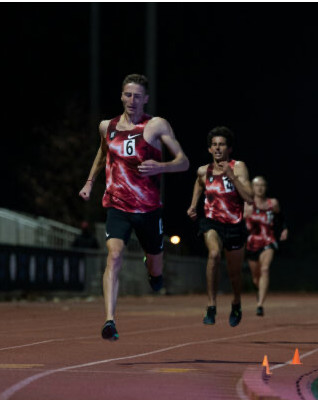
The Bowerman Track Club’s Elise Crannyused a 65.11 final lap to kick by teammateKarissa Schweizer to win The TEN tonight in 30:47.42 to Cranny’s 30:47.99 as the two women became the sixth and seventh US runners in history to dip under the 31:00 barrier for 10,000 meters. They are now the third- and fourth-fastest women in US history.
Britain’s Eilish McColgan also broke 31:00 in third in 30:58.94, just off the 30:57.07 personal best that her mom and coach Liz ran to win in Hengelo back in 1991, the year she won the 10,000 world title in Tokyo. 2015 world championship bronze medallist Emily Infeld (31:08.57) as well as Marielle Hall (31:21.78) also left tonight’s race with the 10,000 Olympic standard of 31:25.00. Hall already had it thanks to her 31:05 at Worlds in 2019; for Infeld, 30, her time was a 12-second personal best.
The race was very evenly run at almost exactly 75-second-per-lap pace for 7200 meters (22:28) with pacers Vanessa Fraser and then Courtney Frerichs leading through 6400. Four sub-75 laps after 7200 meters winnowed the lead pack down from four to two with three laps to go. Schweizer did all of the leading for the final 6+ laps until Cranny kicked by for the win in the final 50 meters. Cranny ran her last 1600 in 4:38.76 with lap splits of 72.59, 71.70, 68.75, 65.74
Men’s Race: Scott leads five men under Olympic standard
The Bowerman Track Club’s Marc Scott’s hot start to 2021 continued tonight as he ran 27:10.41 to win the men’s 10,000 and move to #2 all-time on the British 10,000 list. Scott wasn’t the only man leaving the race happy as the point of the race was to get the Olympic standard of 27:28.00 and all five men that finished the race were well under the standard.
In his 10,000 debut, Grant Fisher ran 27:11.29 for 2nd, meaning he’s now the 5th-fastest American in history. 12:58 man Woody Kincaid was third in 27:12.78 as Bowerman Track Club athletes swept the top 3 places.
Ben True, currently unsponsored, ran a big pb of 27:14.95 for 4th (previous pb of 27:41.17). And in the shock performance of the night, Harvard grad Kieran Tuntivate of Thailand ran 27:17.14 for 5th, meaning a guy who came into the night with a 13:57.60 5000 pb ran the equivalent of two 13:38’s back-to-back and is now #4 all-time in Asian history.
The race was rabbited perfectly through 8000 meters by Evan Jager and Sean McGorty. The field went through 5000 in 13:45 and McGorty hit 8000 in 21:57.85 (27:22 pace). After McGorty stopped at 8k, Scott did most of the leading although Fisher had the lead with 2 laps to go. Scott immediately picked up the pace and his final 5 laps were 64.18, 65.49, 64.62, 61.18 and 57.13, meaning he covered his last 1600 in 4:08.40 and last 2k in 5:12.58
by Let’s Run
Login to leave a comment
2016 Olympic steeplechaser Colleen Quigley announced that she was leaving Bowerman Track Club, and has finally revealed that she will be training under former FSU coach, Josh Seitz
In a turn of events that surprised many in the running community, American Olympian Colleen Quigley announced on February 4 that she is leaving the Bowerman Track Club, where she’s trained for the last five years.
The 28-year-old, who competed in the 3,000m steeplechase at the 2016 Olympics in Rio, will now be coached by Josh Seitz, who worked with her when she attended Florida State University (FSU).
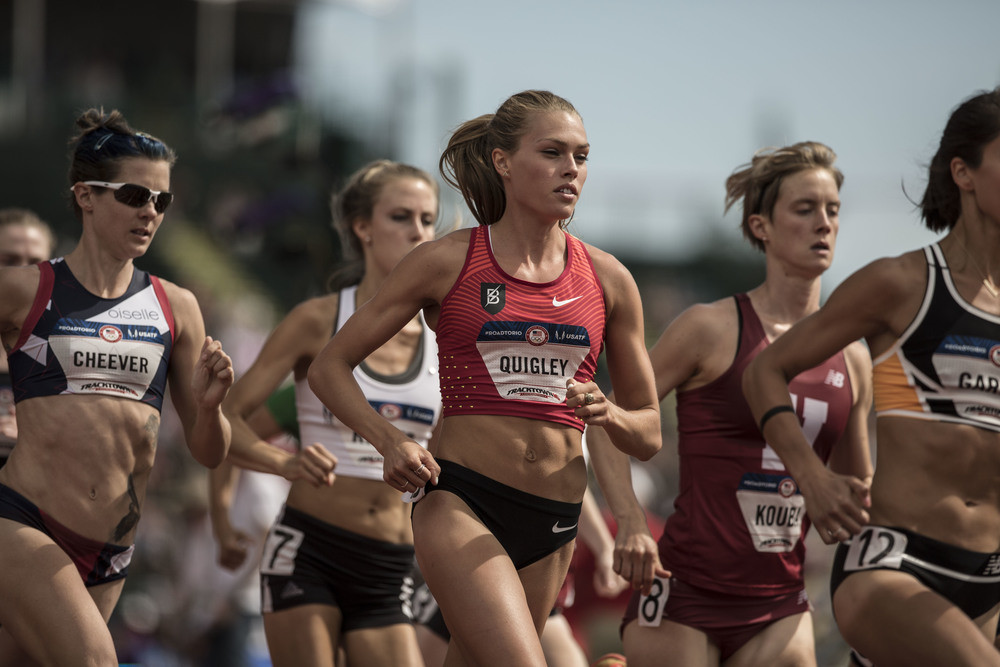
She announced that she would be leaving the BTC on her Instagram page. In a heartfelt post, she spoke about helping her coach, Jerry Schumacher, recruit more women to the team, which, at the time Quigley joined, consisted only of three other women, including Shalane Flanagan, Emily Infeld and Sammy Silva. Since then, the BTC women’s squad (affectionately named the ‘Bowerman Babes’) has grown into one of the most dominant groups of female distance runners in the country.
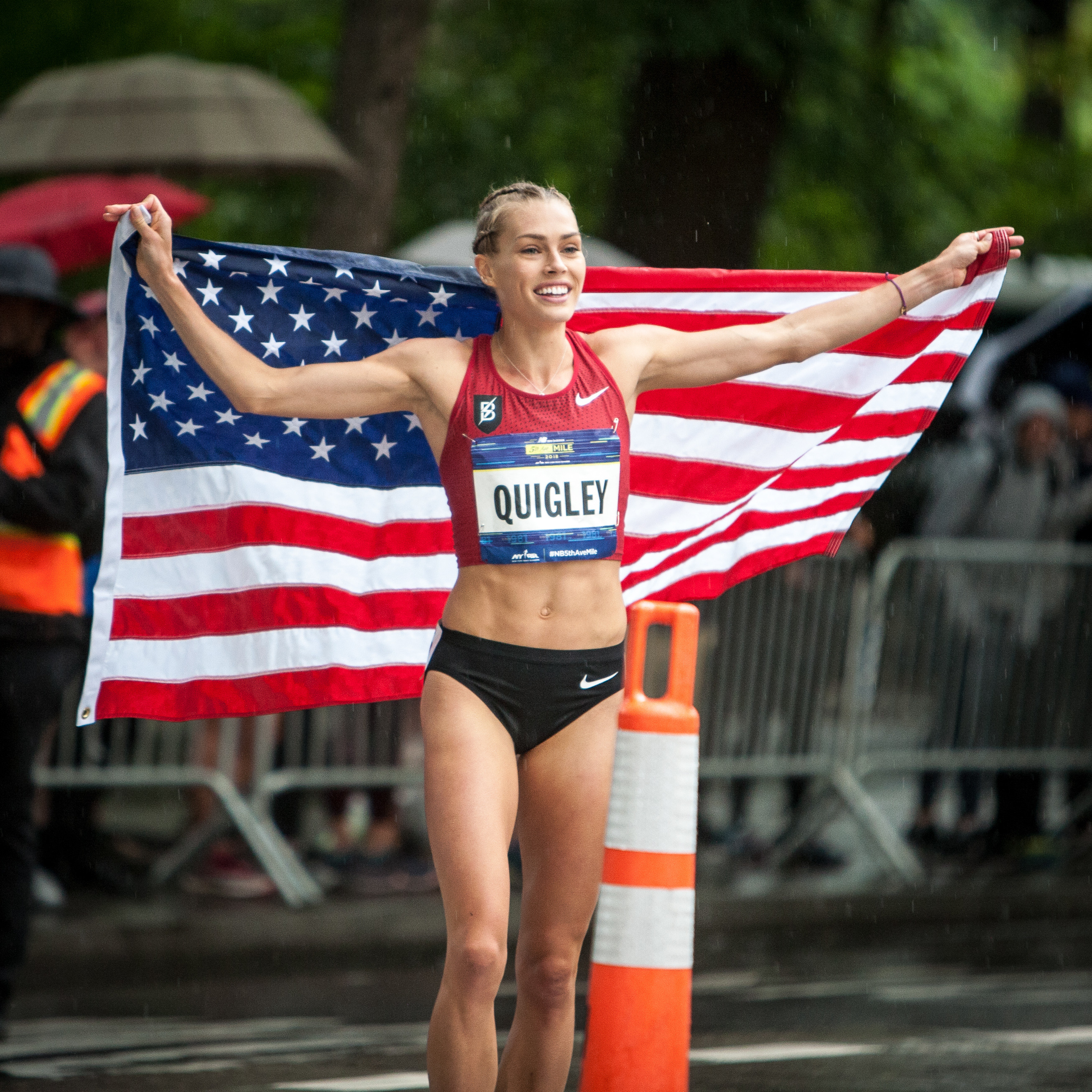
Quigley also wrote an ‘Open Letter to the BTC’ on her website, in which she described what the team has meant to her over the last several years, and gave special shout-outs to many of her teammates and coaches.
"BTC, you were the perfect place for a young athlete fresh out of college to land,” she wrote. “If going pro had meant training alone at age 22, I don’t think I ever would have made it. You gave me teammates and coaches who supported me and my goals.”
In an Instagram Live on Thursday, Quigley finally announced that her new coach would be Seitz, who is currently the assistant cross country and distance coach at Portland State University, where he has been coaching since 2017. According to his Portland State profile, in his four years on staff, he has helped a few steeplechase athletes set school records, and has led one steeplechaser to two podium finishes at the Big Sky Outdoor Championships.
Quigley´s teammate Kate Grace also announced that she would be leaving the BTC and will be heading to Colorado to train with Emma Coburn on Team Bosshard. There have been several changes to the Bowerman Track Club over the last year, with Gabriela Debues-Stafford, Sinclaire Johnson and Amos Bartelsmeyer joining the squad, and Ryan Hill, Andrew Bumbalough, Grace and Quigley leaving. Quigley has not yet announced any new sponsorship deals.
by Brittany Hambleton
Login to leave a comment
Ryan Hill has signed with HOKA ONE ONE NAZ Elite
Ryan Hill, the 2016 World Indoor silver medalist at 3,000 meters who has qualified for three US World Championship teams at 5,000 meters, has signed with HOKA ONE ONE Northern Arizona Elite on a multi-year deal. Hill, who turns 31 on January 31, spent the last seven years of his professional career under Jerry Schumacher as part of the Bowerman Track Club, which he joined after graduating from North Carolina State University in 2013.
The signing represents a significant change for Hill, who will now be based in Flagstaff and its 7,000 feet of elevation year-round as he chases his first Olympic team. Hill was 5th at the 2012 Trials and 6th in 2016, both in the 5,000 meters, and will remain focused on that event for the foreseeable future.
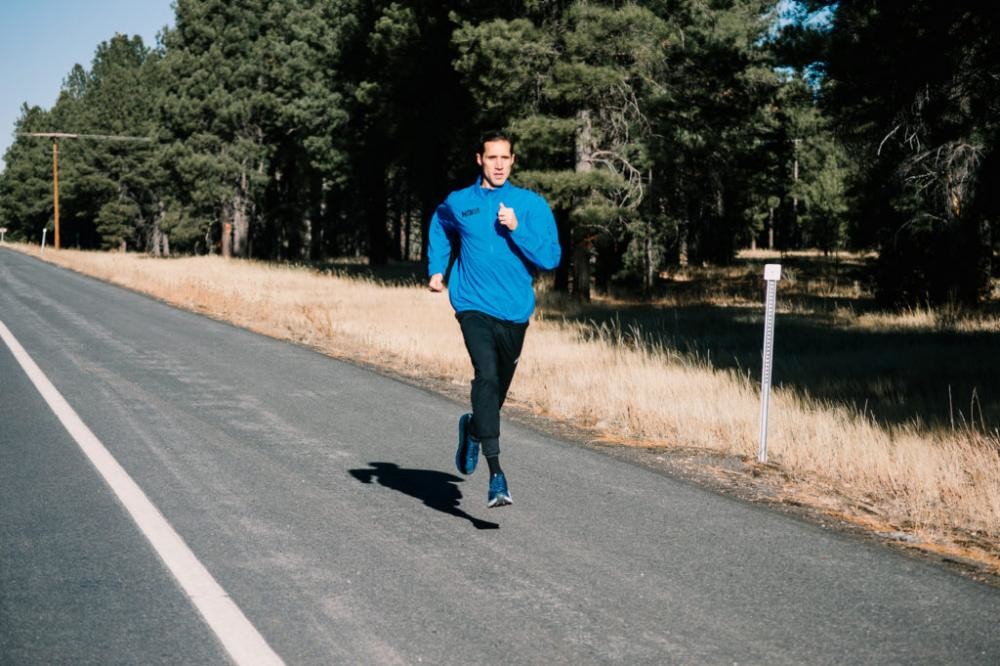
It’s also a big move for NAZ Elite, which continues to grow after signing a four-year extension with HOKA through 2024. Hill’s personal bests of 7:30 for 3,000 and 13:05 for 5,000 are significantly faster than NAZ Elite’s team records of 7:47 and 13:27.
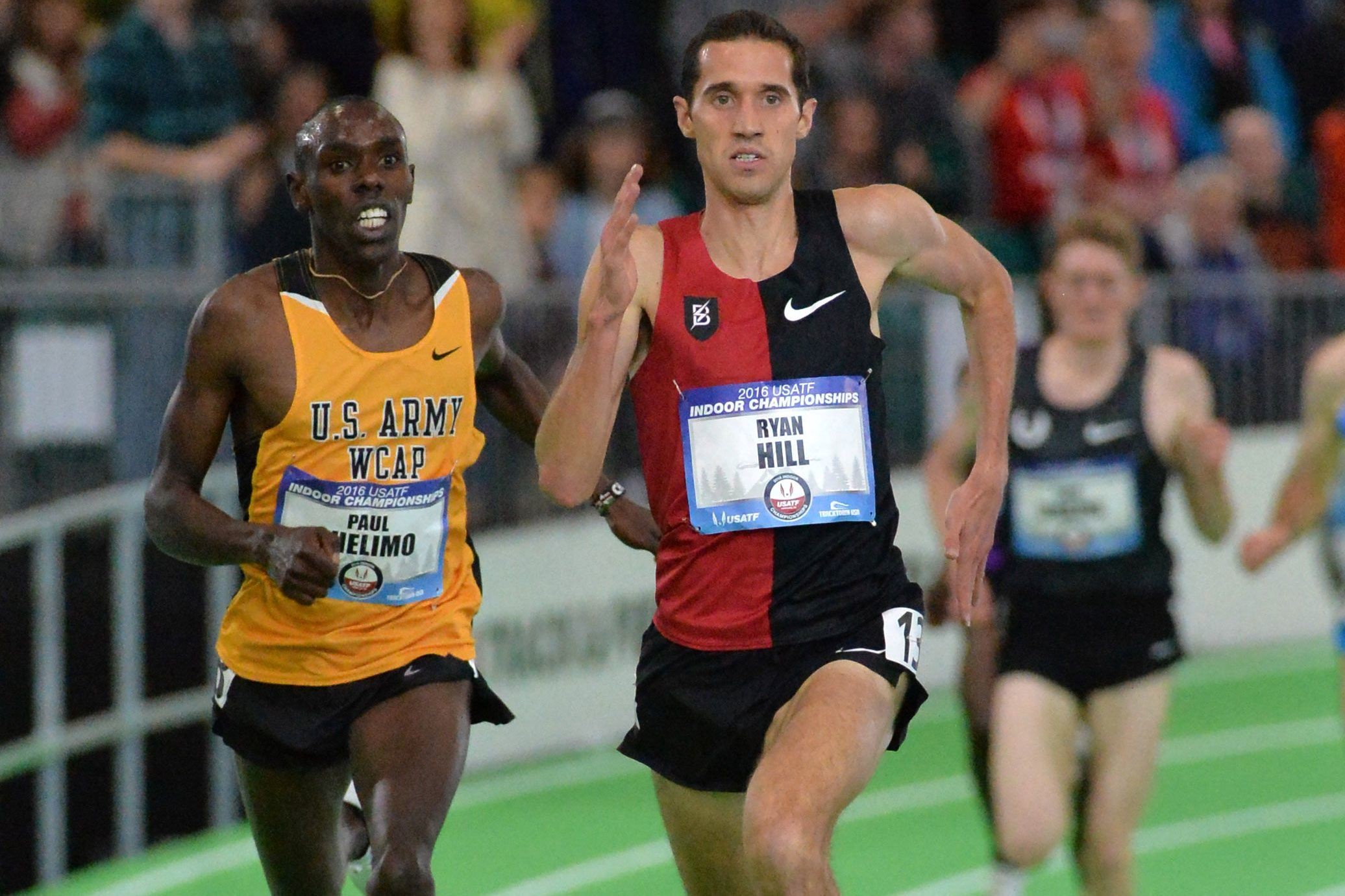
“I’m very confident in the way we train and what that has produced for people at 5,000 meters,” says NAZ Elite coach Ben Rosario. “We just haven’t had a 5,000-meter specialist. Our athletes have gotten a lot better at 5,000 meters, and I think that will translate to someone like Ryan. It’s just, he’s starting off at a different point. And I think his ceiling in that event is different than Stephanie Bruce or somebody…I’m really excited about his ability to close. I love people who can close, like any coach. So my job becomes, hey, let’s just make sure we can get him strong enough to be there at 250m to go, because he’s shown time and time again that if he’s there, he’s very dangerous.”
NAZ Elite has built its reputation as a marathon-focused squad, but Rosario would also like the group to be competitive in the 5,000 and 10,000 meters on the track. That was already the case on the women’s side — Kellyn Taylor and Bruce finished third and fourth at USAs in the 10,000 in 2019. Now, with the additions of Hill and Tyler Day (13:16/28:04 pbs), he believes the men can make some noise in what is shaping up as a pivotal two years for American track & field.
“I view this like a general manager,” Rosario says. “There are different time periods where different things are really important, right? And in this country, an Olympic year is always very important on the track. But then I think next year, track is arguably just as important because the World Championships are in Eugene. So we wanted to have a presence on the track at 5,000 and 10,000 on both sides, men and women. And now I think we do.”
Hill and Nike parted amicably. Six days ago, the Bowerman Track Club posted a lengthy Instagram post announcing with “great sadness” that Hill, whom they called “irreplaceable,” would be leaving. Hill also went to Instagram to say it would be “incredibly hard to leave my lifelong friends, coaches, and some of the best teammates in the world. I’m ultimately very excited and motivated for my next opportunity.”
by LetsRun
Login to leave a comment
Ryan Hill Leaving The Bowerman Track Club For A New Team And Sponsor In 2021
With great sadness we must announce that Ryan will be leaving BTC for a new team and sponsor in the 2021 season. In his seven years with Bowerman, Ryan ran 13:05 for 5,000m and 7:30 for 3,000m. He was 3x National Champion, made 4 World Championship teams, and won the Silver Medal in the 2016 World Indoor 3,000m.
He has embodied our commitment not only to world class performance, but to building the broader running community. He spent many a rainy Portland night coaching our Eastside Youth group and helped launch our first ever BTC summer camp.
As our foremost Jerry impersonator he is truly irreplaceable. In so many ways, both on and off the track, we will miss Ryan’s talent, dedication, and humor.
Working side by side with someone for years- sharing sacrifices, struggles, triumphs, and laughter- you develop a special bond. That bond makes it very painful to part ways, but it is also how you know that your connection will endure.
Good luck buddy, we’re going to miss ya.
Login to leave a comment
Runners sponsored by smaller companies might be in a better position than those who are signed by major brands
Earlier this week, the Swiss running shoe company On announced that it was starting an elite training group in Boulder, Colorado, called the On Athletics Club. It’s safe to say that this doesn’t seem like the most auspicious time to invest in professional running. Even though the Diamond League—the world’s premier track and field competition circuit—is scheduled to begin an abridged summer season on Friday, this year has seen an unprecedented number of race cancellations and it’s difficult to predict when the bleeding will stop.
International Olympic Committee President Thomas Bach has already gone on record saying that the Tokyo Games, which have been postponed to summer 2021, will not be delayed a second time. If they can’t be staged next August, the Olympics will be canceled outright, thus depriving track athletes of their quadrennial moment in the sun.

According to Steve DeKoker, On’s Global Sports Marketing Manager, the company has long been looking to develop an elite running team and the Boulder-based group represents the most significant move in that direction to date. For now, the On Athletics Club consists of eight runners, all of whom are in their 20s and were standout NCAA athletes (the University of Colorado’s Joe Klecker and the University of Wisconsin’s Alicia Monson are the headliners).
Recently retired Olympian Dathan Ritzenhein will act as coach. It has been disclosed that these athletes will be signing multi-year deals with no reduction clauses (i.e. performance quotas)—a risky move, perhaps, but one that On might currently be well-positioned to make thanks to a potential pandemic-inspired uptick in recreational running.
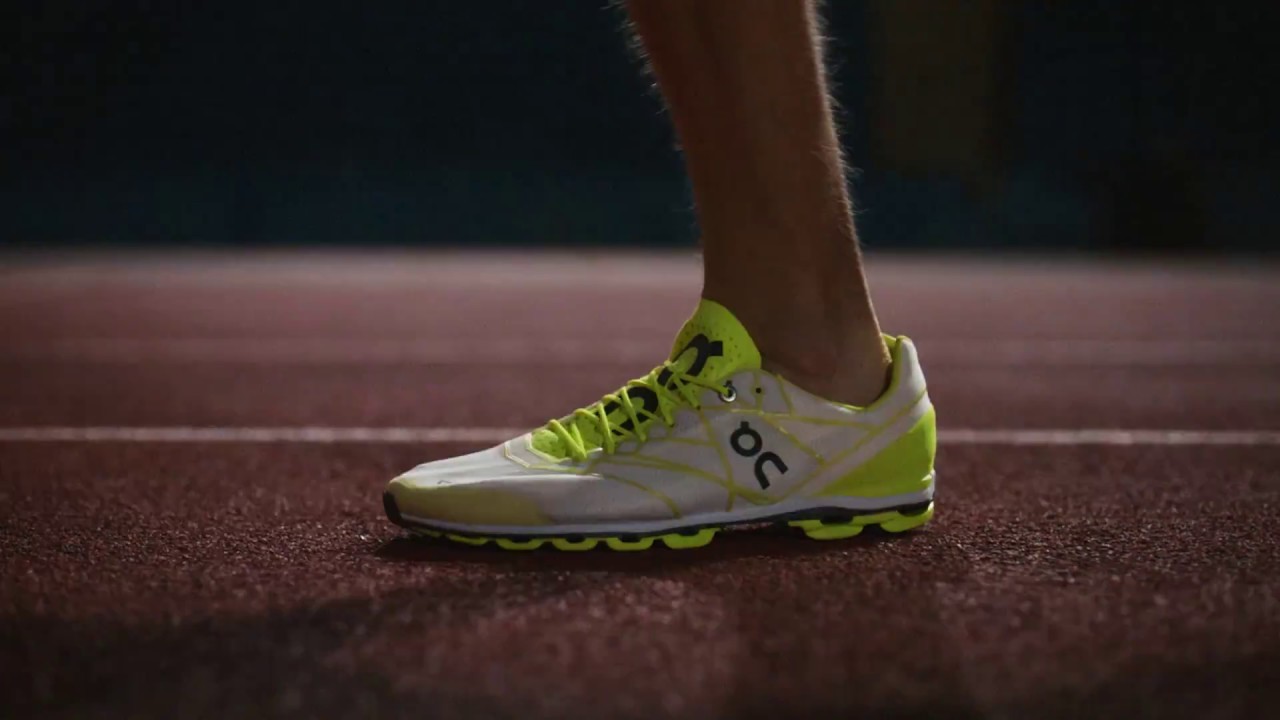
“Running is kind of experiencing this second boom,” DeKoker told Letsrun.com. “We’ve got all these folks at home who are struggling with different issues, but running is a viable activity for them. Whereas if you’re Nike, and you’re in 50 different verticals, running might be a positive one, but you’ve got a bunch of other sports that are hemorrhaging right now.”
There has been some evidence to bear this out. Nike has reported a 38 percent decline in total revenue through May 31. More specifically, last week, the market research company NPD published an article noting that prominent brands (Nike, Adidas, Under Armour) had an overall sales decline in athletic footwear in the first half of 2020, while several running-focused shoe companies had fared conspicuously well.
Hoka One One and On, in particular, saw year-over-year sales increases of 75 and over 50 percent, respectively. (An On representative has confirmed this, and added that the brand had recorded its highest ever sales month in June 2020.) Matt Taylor, the co-founder and CEO of the independent running apparel brand Tracksmith, told me that “there’s been a noticeable uptick in people running over the last few months,” and that Tracksmith was “seeing this trend reflected” in its business.
While the running industry will never be entirely insulated from the state of the overall economy, there is some logic to the notion that the sport is well-suited to weather a financial downturn. To use DeKoker’s term, running is a “viable activity” for many people because it is relatively cheap, accessible, and offers both physical and mental health benefits during times of uncertainty.
The most recent running boom occurred during the years immediately following the Great Recession; starting around 2008, there was a continual increase in running event participation, culminating in 2013, when a record 19 million runners took part in U.S. road races.
Of course, from a running perspective, one of the uniquely cruel aspects of the COVID-19 recession is that the pandemic has precluded the staging of most mass participation events. The New York Road Runners, the largest non-profit running events company in the United States, laid off eleven percent of its employees and furloughed an additional 28 percent in July. Hence, any discussion about how the pandemic might end up “benefiting” the running industry in shoe or apparel sales must be weighed against this freeze of running events.
For professional runners, meanwhile, the cancellation of big-ticket races signifies a loss in prospective appearance fees and prize money. Some athletes might also be contractually obligated to run a pre-set number of races, which, needless to say, has not been so easy in 2020. That’s why this has been the summer of intrasquad competitions, in which training partners take part in de facto time trials that have been spruced up just enough to qualify as official meets. While some of these events have yielded impressive performances—most notably Shelby Houlihan, of the Bowerman Track Club, breaking her own American record in the 5,000-meters—there have also been farcical scenarios where world-class athletes phoned it in, presumably so that they can reach their race quotas. (Last week, reigning Olympic 1,500-meter champion Matthew Centrowitz “raced” an 800... and ran 3:08. His personal best in the event is 1:44.)
It’s not a coincidence that the most prominent examples of these sham races have involved Nike athletes. After all, the Oregon-based company sponsors far more runners than any other brand. They have the funds to do it, but casting a wide net might also make it more difficult for Nike to offer elite runners the contractual perks of smaller, running-focused companies like Oiselle, On, and, recently, Tracksmith. For now, reduction clauses still seem to be the norm for the typical Nike track athlete. (A Nike spokesperson told me that the company does not comment on athlete contracts.)
Hawi Keflezighi, an agent whose clients include his brother Meb Keflezighi and recent U.S. Olympic Trials Marathon champion Aliphine Tuliamuk, agreed that this was likely to be the case. “I think Nike deserves credit for all the athletes and events that they sponsor, but at the same time, within that business model, if you have a lot of athletes, you can’t be as flexible as when you only have five or ten athletes on your roster,” Keflezighi, whose brother was a Nike athlete for years before signing with Skechers in 2011, told me. He added that, while it’s typical for companies to reassess which athletes they want to sponsor at the end of an Olympic cycle, the current uncertainty surrounding the fate of the Games, and looming recession, mean that conditions for athletes are even more cutthroat than usual.
“I think the bigger brands definitely have tougher decisions to make, just because they have a bigger investment overall,” Keflezighi says. “The athletes with those brands, especially if they are not medal contenders or in a great position to make the US Olympic team—under this environment, those athletes’ contracts are a little bit more vulnerable. If you have a smaller roster of athletes, you might be able to say, ‘Hey, you know what? Let me give that athlete an extra year or two.”
DeKoker echoed this sentiment. “Obviously, performance is going to be a key element, but it’s not the only element with On,” he says. “I do think that, at some of these other companies, it’s much more of a numbers game and unfortunately some athletes are going to be on the losing end of that.”
What will the “numbers game” look like in a worst case scenario where next year’s Olympics ultimately do get canceled? With any luck, we won’t get to find out.
by Outside Online
Login to leave a comment
Canadian Lucia Stafford breaks U23 1,000m Canadian record
On Sunday evening, Lucia Stafford broke a nearly 40-year-old record, running a 2:38.70 1,000m at Birchmount Stadium to break Glenda Reiser’s record of 2:41.4 which she ran in August 1973. The run was planned as a record attempt, and since it was officially timed, is ratifiable as a Canadian record. She was paced by older sister Gabriela DeBues-Stafford, who recently announced that she’s joining the Bowerman Track Club this fall.
Stafford is coming off of a killer season, winning U Sports cross-country in 2019, running a strong indoor season in 2020 and now setting her third Canadian U23 record (she already owns the 1,000m and 1,500m indoors). Stafford’s 2019 and 2020 success is well deserved, as she struggled with Graves’ disease for a number of years leading up.
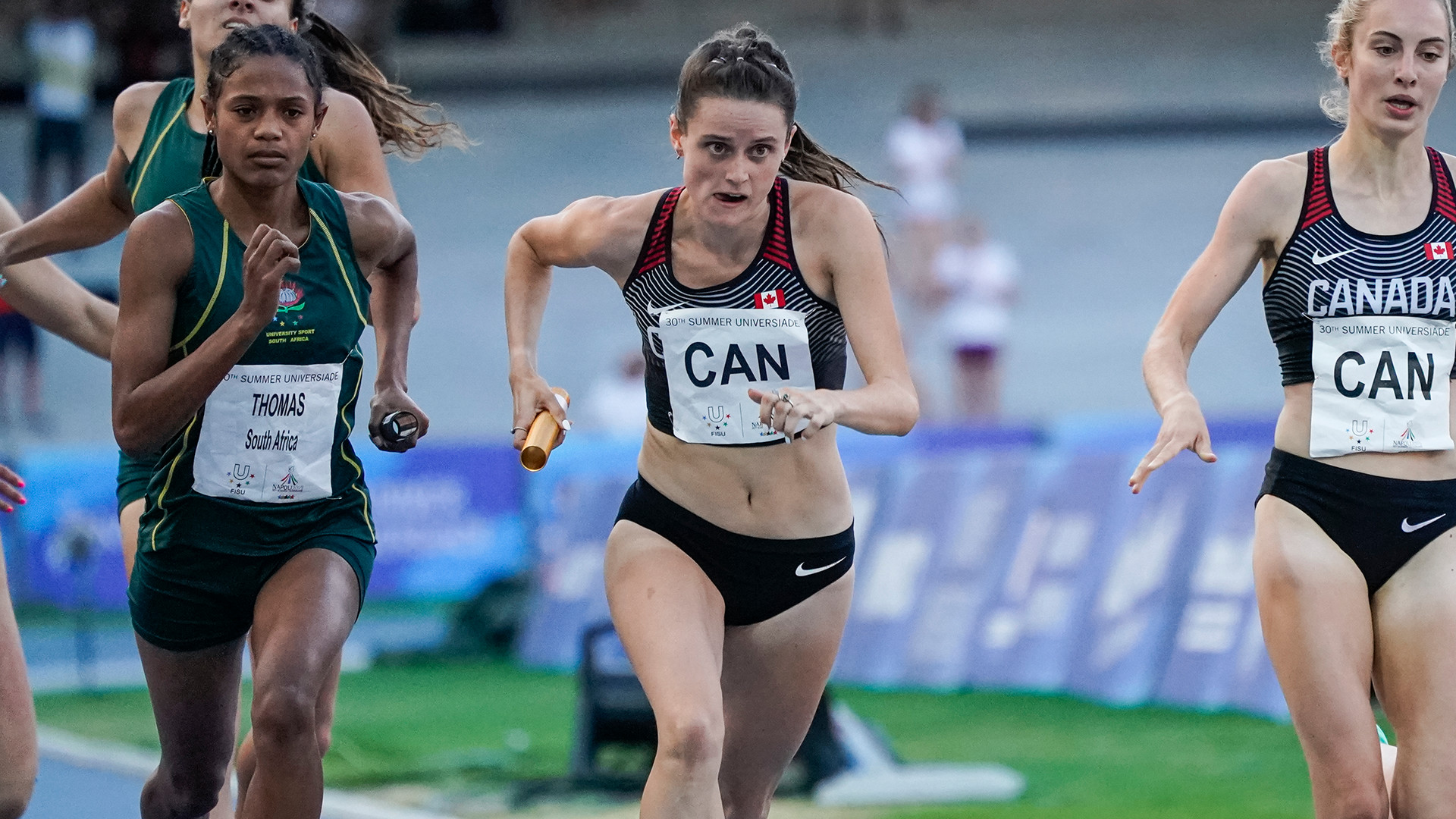
In 2018, the runner had a low-key season, and when she was racing, her performances weren’t as strong as in previous years. Some thought she was experiencing a plateau, not uncommon for someone who’s been so dominant for so long, but this wasn’t the case. In 2018, Stafford was undergoing treatment for an autoimmune disorder that causes an overactive thyroid. Since partially eradicating her thyroid gland, Stafford feels like herself again and is back running the way she wants to be.
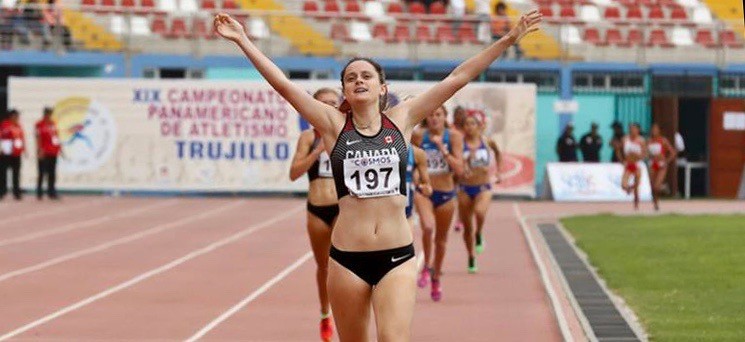
In a summer with very little on the calendar, scheduling time trials and record attempts is keeping runners motivated. Despite missing out on international competition, Stafford is among the many runners knocking out impressive times on their own.
Others impressive results from the weekend:
Out west, the impressive middle distance results keep flowing in. This week, 2018 Canadian 800m champion Lindsey Butterworth ran a huge personal best in the 1,500m, running under 4:10 for the first time to finish in 4:07. In other west coast results, Natasha Wodak also had a great run to hit a personal best in the 3,000m in 9:00. Finally, John Gay broke four minutes in the mile for the first time, just sneaking under the wire to finish in 3:59.
by Madeleine Kelly
Login to leave a comment
Long hours, short nights and ulcers: Portland Track defies the coronavirus to stage elite meets
If Portland Track’s Jeff Merrill feels a little ragged, well, no wonder.
The legwork it takes to stage elite track meets during the coronavirus pandemic would be a strain on anybody.

“It’s an around-the-clock type of thing,” Merrill says. “The days all kind of blur together.”
Portland Track has put on two popup meets, the Big Friendly 1 on July 3 at Portland’s Jesuit High School and the Big Friendly 2 (the Bigger Friendly) on July 17 at McKenzie Track, 40 miles outside of Eugene.
Big Friendly 3 is being planned for Friday at an undisclosed location somewhere in the Portland area. Organizers are staying mum about the location to discourage spectators and prevent potential spread of the virus.
The effort it’s taken to get to this point would exhaust a marathoner. Portland Track has consulted with Oregon’s three, Nike-sponsored elite distance groups — the Bowerman Track Club, Oregon Track Club Elite and coach Pete Julian’s unnamed group.
The Portland Thorns of the National Women’s Soccer League have advised. The office of Oregon Gov. Kate Brown has signed off. So have Multnomah and Lane counties, and, presumably, the county in which the next one will take place if it’s not Multnomah. So has USA Track & Field.
Portland Track organizers have arranged with Providence-Oregon for participants to be tested twice in a 48-hour period shortly before race day. They have had to find available tracks suitable for Olympic-level athletes that meet USATF’s sanctioning criteria.
In the case of McKenzie Track, that meant building an inside rail the day before the meet, even while on the phone to Lane County Health and Human Services.
“We weren’t sure the meet was going to happen because a new mask order was going into effect and we wanted to find out for sure that we were OK to hold it,” Merrill says.
They were — once they had passed the hat to participants to pay for the rail. Portland Track is a shoestring operation with an all-volunteer board and next-to-no budget. Merrill, who is a Portland Track board member and works fulltime for Nike, hasn’t slept much this month.
None of this is easy. All of it is time consuming. Start with finding a track.
“It’s pretty hard,” says Portland Track president Michael Bergmann. “I’ve learned about all the tracks in the state, from Lane Community College, to George Fox, to Linfield, to Mt. Hood Community College. All of those guys have rails. But the schools are closed. The campuses are closed. Most of those places don’t want to take the risk of having any sort of event, which I totally understand and respect.”
McKenzie Community Track & Field didn’t have those concerns, which made the track available on July 17 — providing Portland Track brought the rail.
But that track’s tight turns make it less suitable for running fast and setting records, which is what athletes such as Donavan Brazier, Craig Engels, Konstanze Klosterhalfen, Raevyn Rogers and Shannon Rowbury of Team Julian, Nijel Amos and Chanelle Price of OTC Elite, and Josh Kerr of the Brooks Beasts want to do.
“A good call out is, when you’re looking at an aerial view on Google Maps, you want a track with a soccer field in the middle because those are wider,” Merrill says. “If they just have a football field in the middle, they’re a little narrow.”
The Thorns became involved because some players are fans of Tracklandia, a talk show Portland Track streams and Merrill co-hosts with two-time Olympian Andrew Wheating.
Thorns defender Emily Menges, who ran track at Georgetown, has been known to join the pre-pandemic post-show gatherings at an adjacent restaurant. When Merrill mentioned Portland Track was trying to set up a coronavirus testing protocol, Menges put the organizers in touch with the Thorns training staff. That led Portland Track to Providence for the testing.
“Their system is awesome,” Bergmann says.
On race day, Portland Track is serious about keeping out spectators and holding down the number of people around the track.
At McKenzie Track, “we had folks from their board at the front of the road access with a checklist,” Bergmann says. “Nobody got past who wasn’t on the list. When people come into the facility, we do a temperature check and give them a wristband to show they’ve been checked.”
Athletes are asked to wear masks when not competing. Portland Track board members do everything from labeling and handing out race bibs to counting laps to handling the public address announcing.
They had hoped to livestream the McKenzie meet, but rural Lane County couldn’t provide the necessary bandwidth. That shouldn’t be a problem Friday.
J.J. Vazquez, a Portland State professor who runs the production company Locomotion Pictures, is set to be in charge of streaming the action live on Portland Track’s free
There should be plenty to watch. Team Julian, OTC Elite, the Brooks Beasts of Seattle and Little Wing of Bend will compete. Seattle-based post-collegians mentored by University of Washington coaches Andy and Maurica Powell also figure to be there.
Bergmann has hinted there could be surprises — either entries or record attempts — but declines to be more specific.
The Bowerman Track Club has opted out, choosing instead to hold intrasquad time trials.
Bergmann says BTC coach Jerry Schumacher “knows what we’re doing. But they’ve been pretty successful doing it their way. He has his plan. I’m not going to beg him.”
The people at Portland Track have enough on their plate as it is. They aren’t getting rich.
On their own time, they are providing the region’s Olympic-level athletes a chance to do what they train to do.
“We’re having a blast,” Merrill says. “Although, I might have an ulcer.”
by Oregon Live
Login to leave a comment
Moh Ahmed Amazes with 12:47 5K (3:58 Final 1600) as Lopez Lomong Becomes 9th American Under 13:00
2019 World Championship bronze medalist Moh Ahmed is truly among elite company now. Running in the Bowerman Track Club Portland Intrasquad II meet, just minutes after Shelby Houlihan lowered her American record (14:23.92) at 5,000m, Ahmed clocked 12:47.20 to smash his Canadian record (12:58.16) on Friday night. He became the 17th man to run under 12:50 for 5,000 meters and moved to #10 on the world all-time list. As impressive as the time was, it was the way he did it — an incredible 3:58.59 final 1600, with each lap faster than the previous one (61.34-60.31-59.48-57.45) — that truly resonated.
So great was Ahmed’s run that he made Lopez Lomong’s 12:58.78 runner-up effort look downright ordinary by comparison — despite Lomong, the reigning US champion, becoming just the ninth American to join the sub-13:00 club.
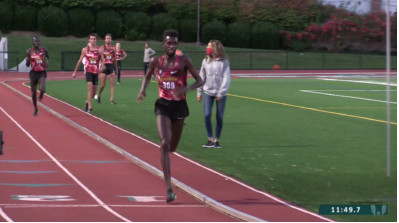
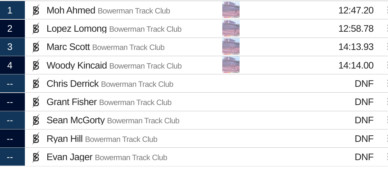
Afterwards, Ahmed said he really wanted to dip into the 12:40s, saying he saw the split with two laps to go (10:50.26) and thought “You can run 2:00.” Ahmed, who broke 13:00 for the first time last year, knew there was a big time gap between him and some of the other top guys in the world. Two years ago in Brussels, Selemon Barega ran 12:43, Hagos Gebrhiwet 12:45, and Yomif Kejelcha 12:46. Ahmed? He ran 13:03, which was then a PR.
“I saw those guys run 12:43 and how easy they made it look,” Ahmed said on the USATF+ broadcast.
Ahmed said he was “super nervous” before the race and despite running so fast said it’s been a “super challenging year.” “Right now I’m speaking to you, but I don’t know where the hell I am,” he told Paul Swangard.
Both Ahmed and Lomong benefited from some world-class pacemakers, with Bowerman Track club teammates Ryan Hill, Grant Fisher, and Evan Jager helping them through 1600 in 4:09 and 3200 in 8:18. Once the final pacer, Jager, stepped off at 3600, however, it was all Ahmed. This wasn’t exactly unfamiliar territory — Ahmed ran almost all of the way in last year’s fast Bowerman 5,000 in Beaverton that saw Woody Kincaid run 12:58. The question on many people’s minds that night was how fast Ahmed could have run had he stayed in the race. Tonight’s effort provided an answer of sorts.
by Let’s Run
Login to leave a comment
World bronze medalist Moh Ahmed and US champion Shelby Houlihan smash North American 5000m records in Portland
World bronze medallist Moh Ahmed and US champion Shelby Houlihan made significant improvements on the North American 5000m records at a low-key competition at Jesuit High School in Portland on Friday night (10).
Ahmed’s 12:47.20 took more than six seconds off Bernard Lagat’s continental record set back in 2011, while Houlihan’s 14:23.92 was a 10.53-second improvement on her own North American record from two years ago. Runner-up Karissa Schweizer also finished inside the previous continental record, clocking 14:26.34.
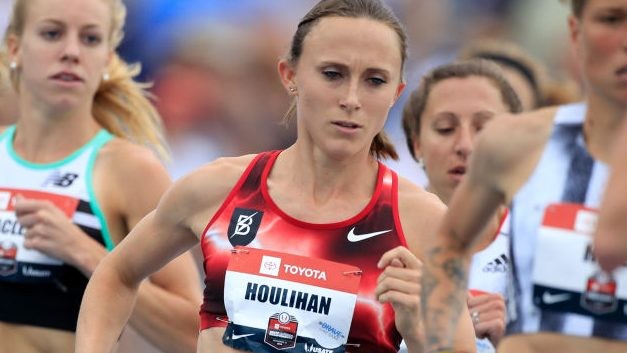
Organised by their training group, the Bowerman Track Club, the meet comprised just two 5000m races and the intention for both events was to provide the opportunity for fast times. Steeplechase specialist Colleen Quigley paced the early stages of the women’s race, taking the field through the first 1000m in 2:55.44.
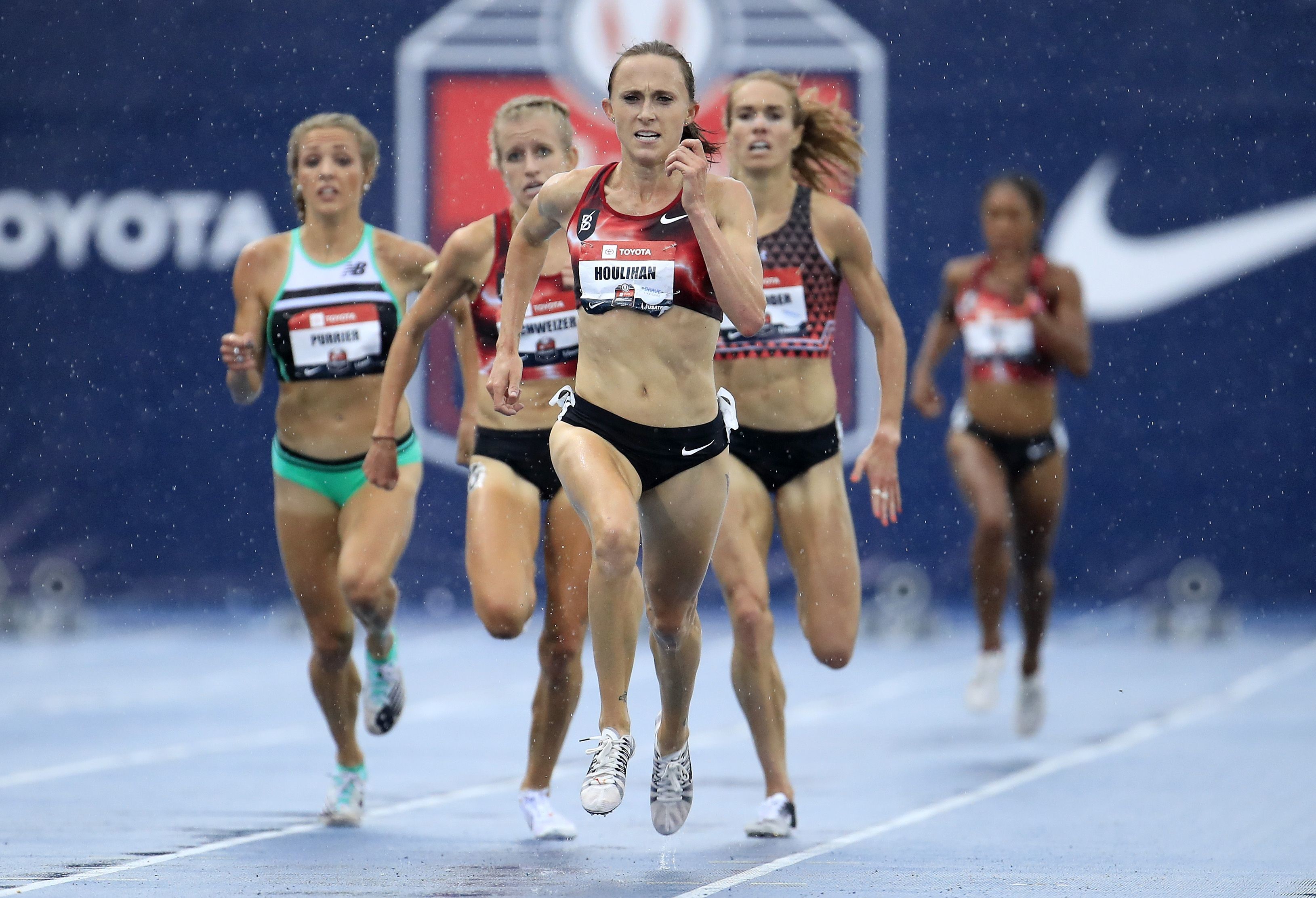
Fellow steeplechaser Courtney Frerichs, the 2017 world silver medallist, took up the running just before 2000m, which was passed in 5:51. Three women – Quigley, Marielle Hall and Gwen Jorgensen – withdrew at the 3000m point. Elise Cranny briefly led at that point, clocking 8:47.88 for her 3000m split, and was just ahead of Houlihan, but Cranny and Frerichs eased off for the final stages of the race, leaving just Houlihan and Schweizer out in front.
Houlihan drifted to the front with three laps to go and gradually started to increase the pace for the final kilometre. Schweizer managed to stick with her training partner until the final lap, which Houlihan covered in 61.4 seconds, giving her a finishing time of 14:23.92. Schweizer was second in 14:26.34.
“I knew Karissa was going to try to come up on me and take the lead, but I decided I was not going to let that happen,” Houlihan told usatf.tv after the race. “I just kept trying to fight her off and tried to have a big kick on the last lap.
“Karissa was in the race in Heusden two years ago where I set the previous record,” added Houlihan. “It’s been really awesome to have her as a training partner and to see how far she has come. She was only three seconds behind me today and I know she’s going to get that 5000m record at some point.”
The men’s race played out in similar fashion, with half the field helping to set the pace for the first 3000m before leaving Ahmed and Lopez Lomong to battle it out for victory.
Ryan Hill (2:36.2) and Grant Fisher (5:12) were the respective leaders for the first and second kilometres as Ahmed and Lomong sat in the middle of the pack. Fisher reached 3000m in 7:46.10, closely followed by Evan Jager and Sean McGorty, but they soon stepped off the track and Ahmed took up the running with three laps to go.
Ahmed then started to wind up the pace and broke away from Lomong on the penultimate lap, which he covered in 59.5. He moved up another gear and ran the final 400m in 57.45 to cross the finish line in 12:47.20, smashing his own Canadian record and moving to 10th on the world all-time list. Lomong, who narrowly missed out on breaking the 13-minute barrier last year with 13:00.13, finished second in a lifetime best of 12:58.78.
“Once I saw the way Shelby and Karissa attacked the last 600m, I told myself that I just had to do the same kind of thing,” said Ahmed, whose previous best was 12:58.16. “With two laps to go, the clock said 10:49 and I just thought, ‘you can run two (minutes) flat (for the final 800m)’. With 200m to go, I just tried to blast it as hard as I could.
“I’m excited, it’s something I’ve been working really, really hard for. It’s been an extremely challenging year, but luckily we have a good group and it was great to deliver this.”
by World Athletics
Login to leave a comment


